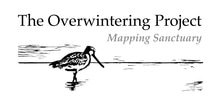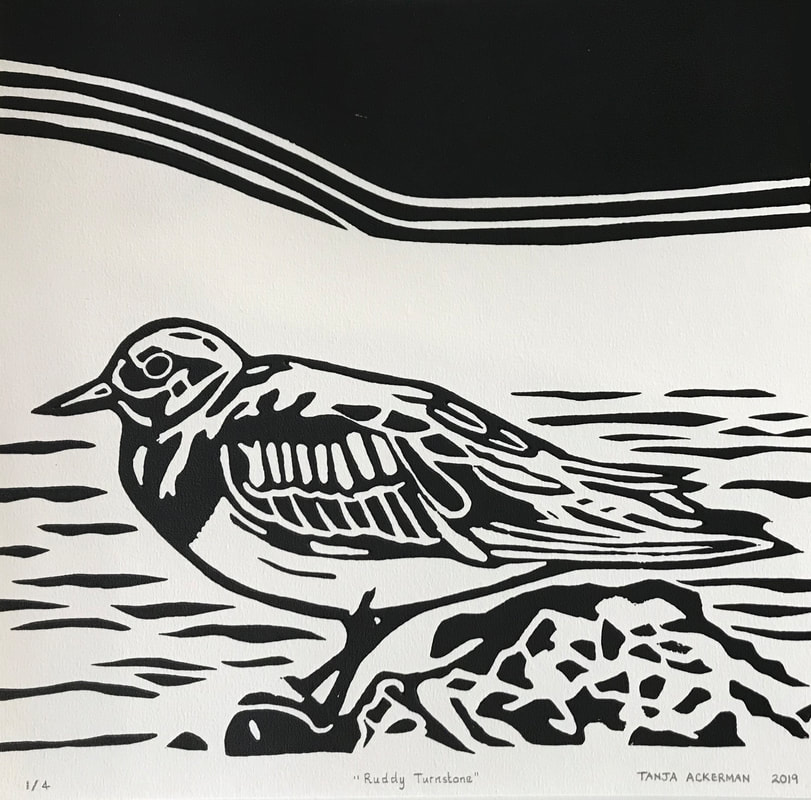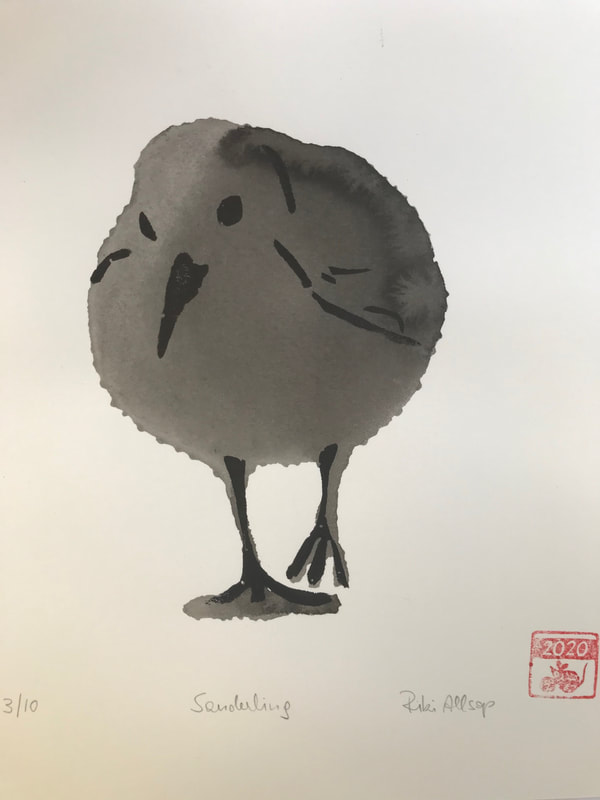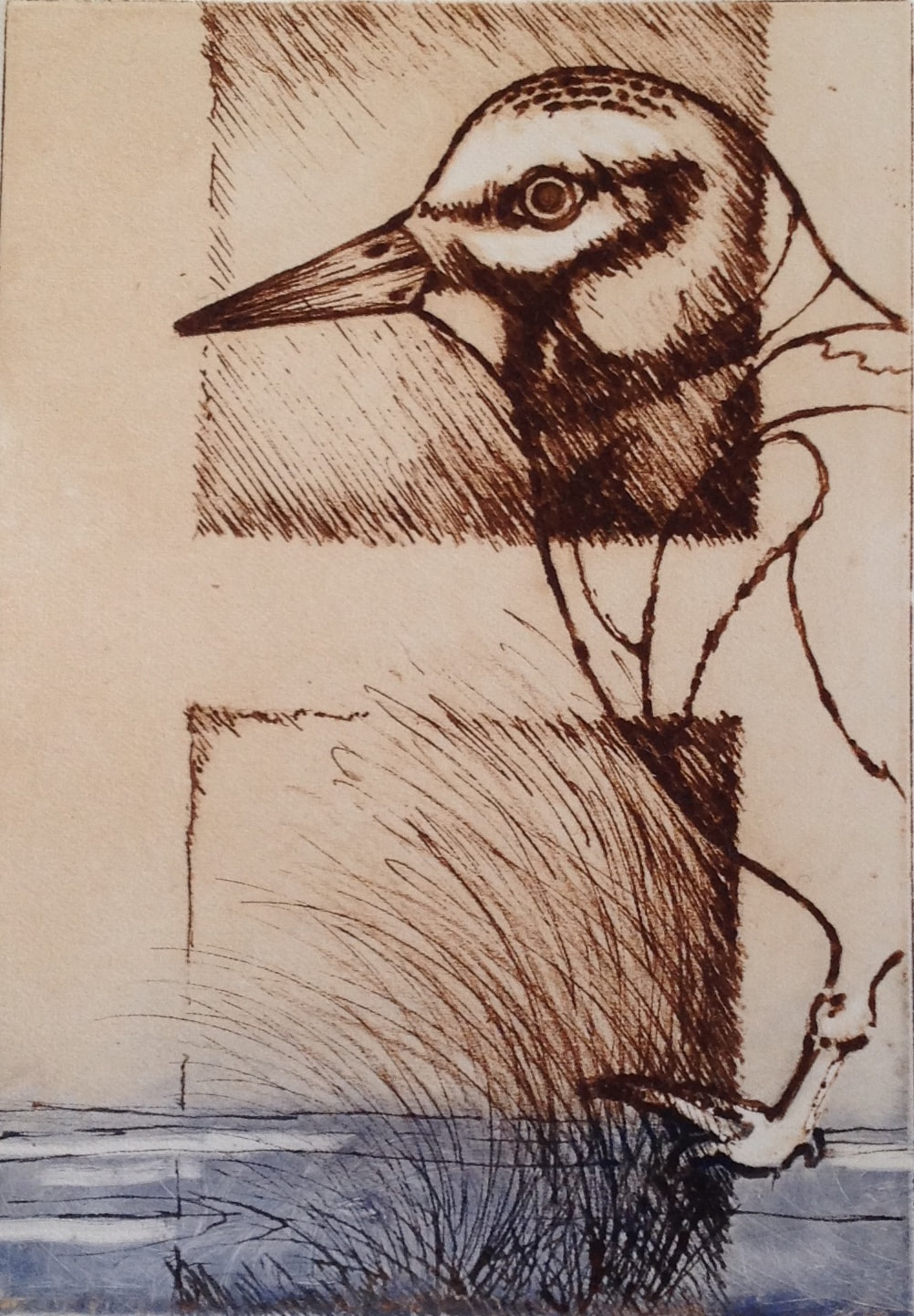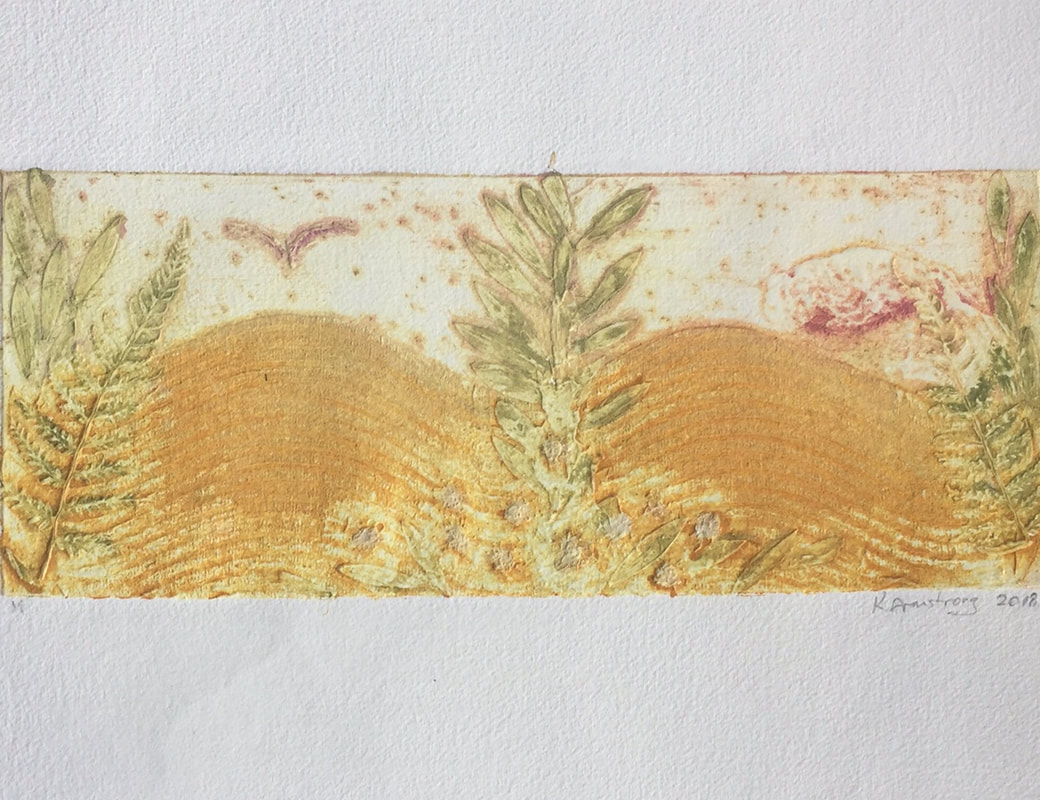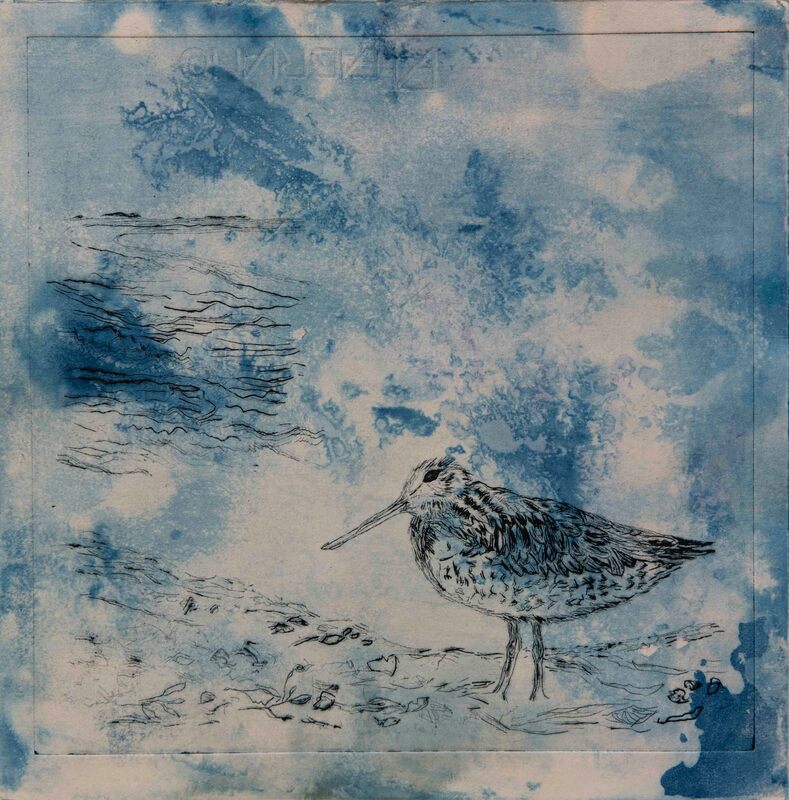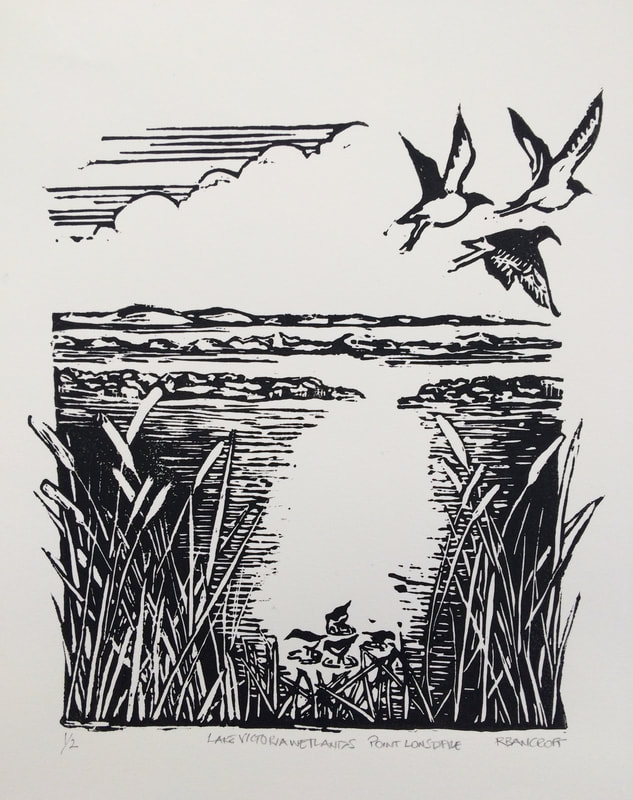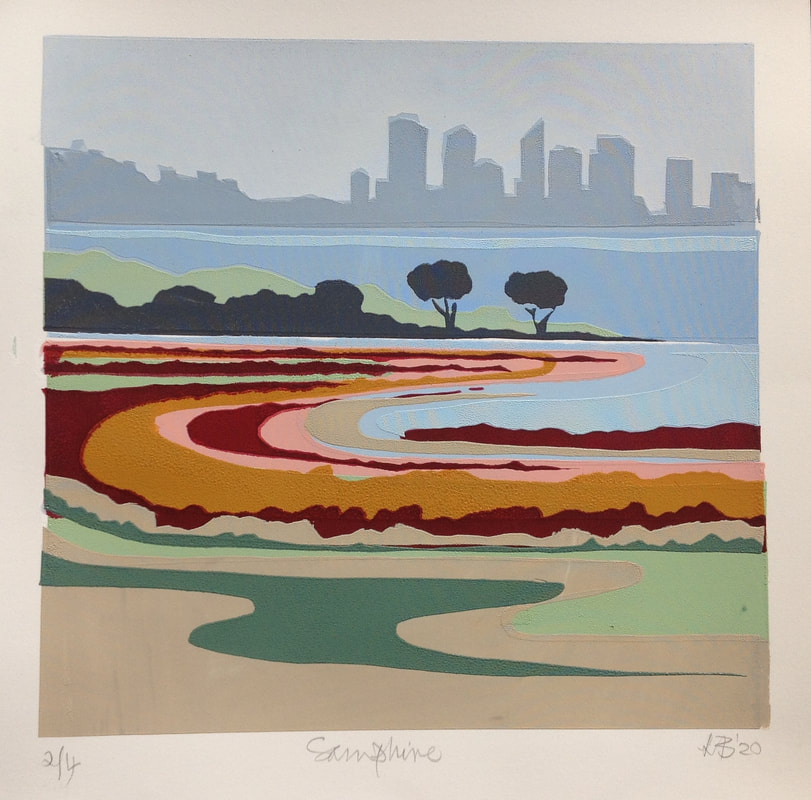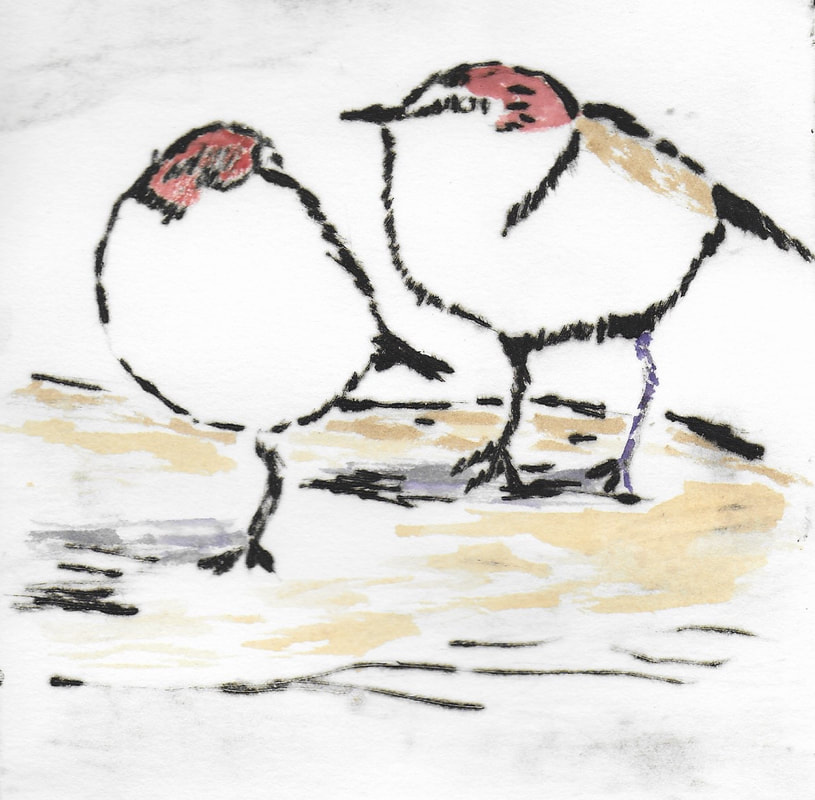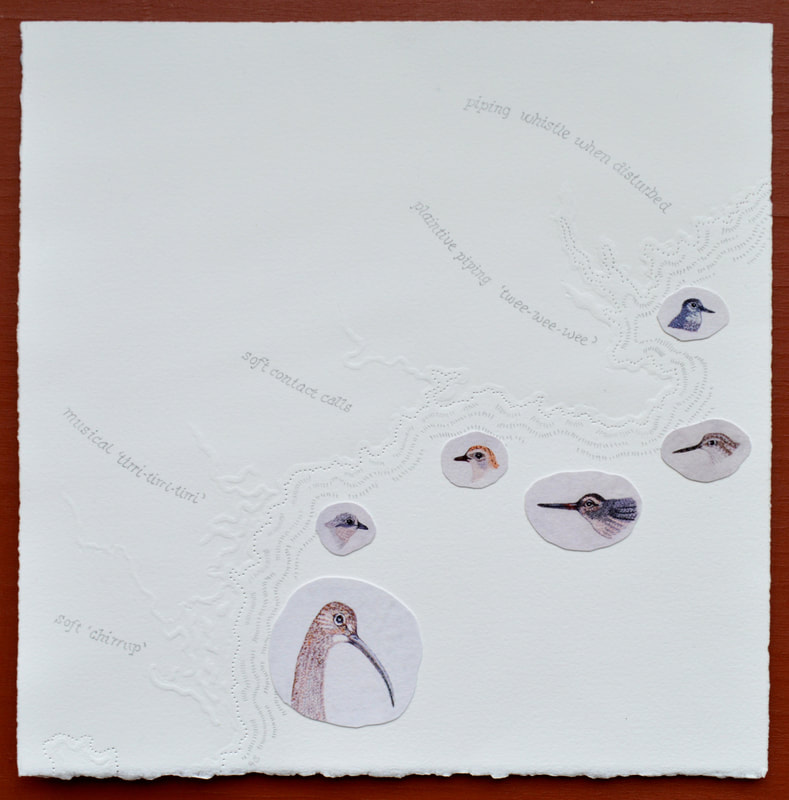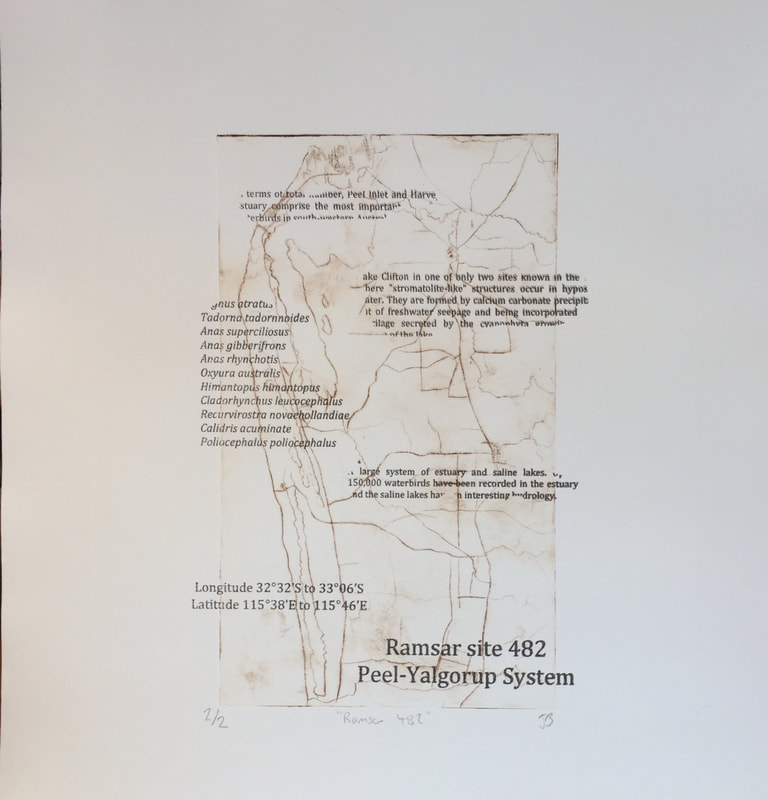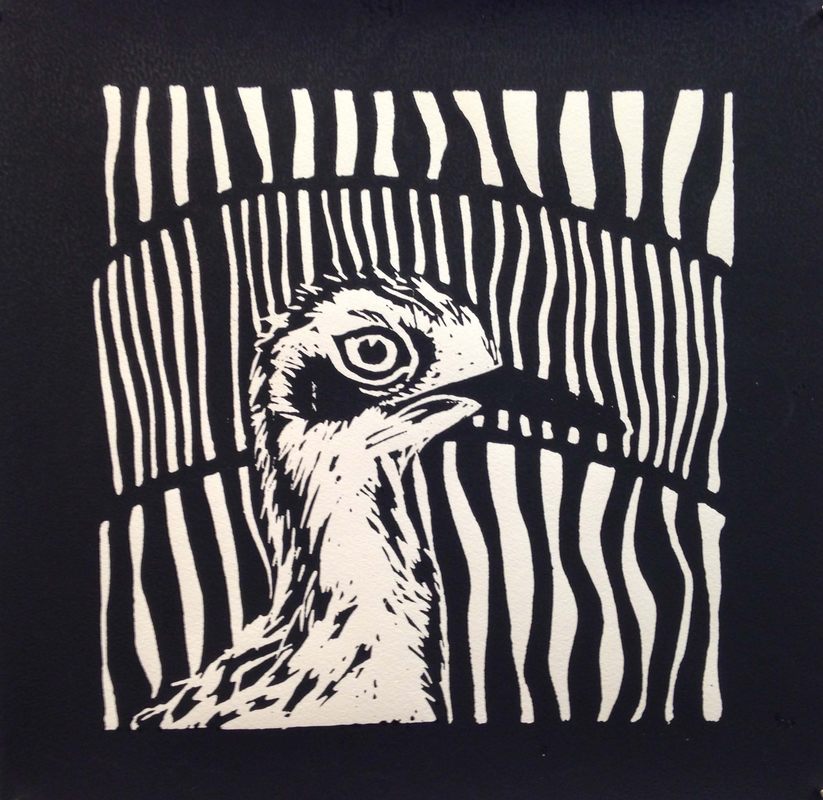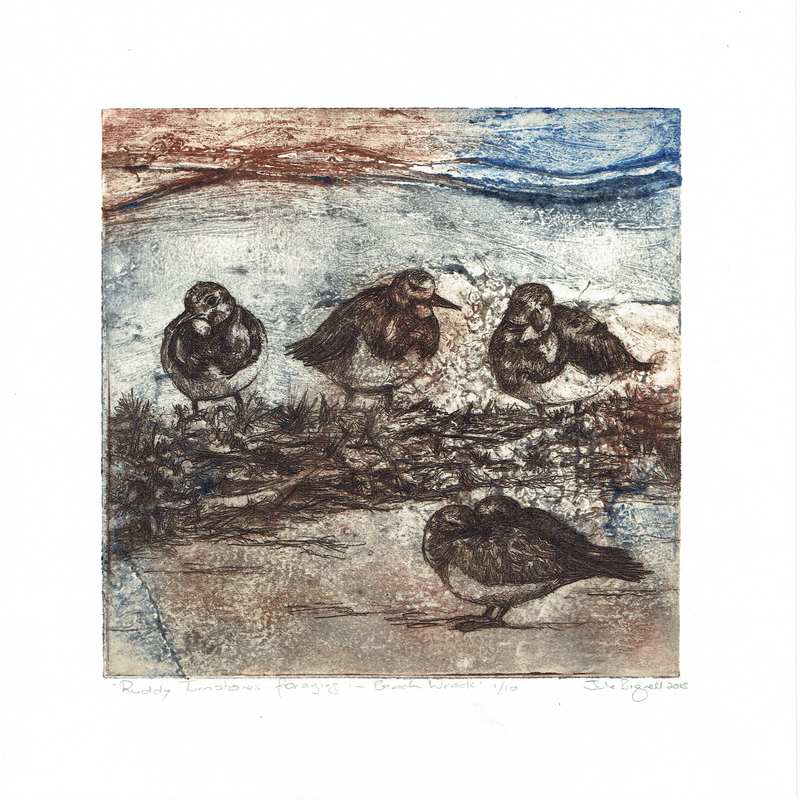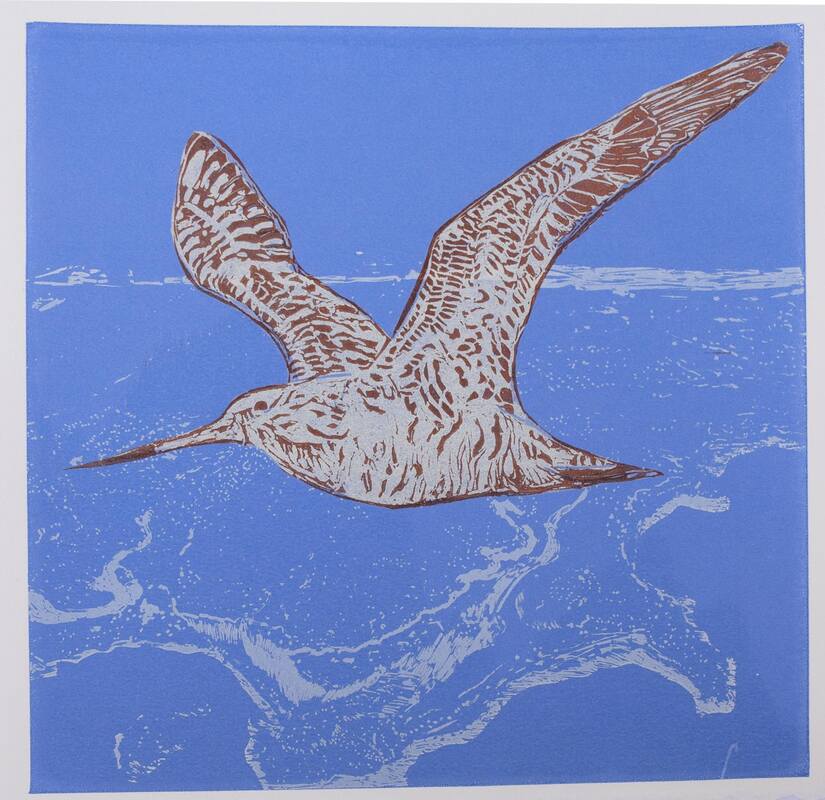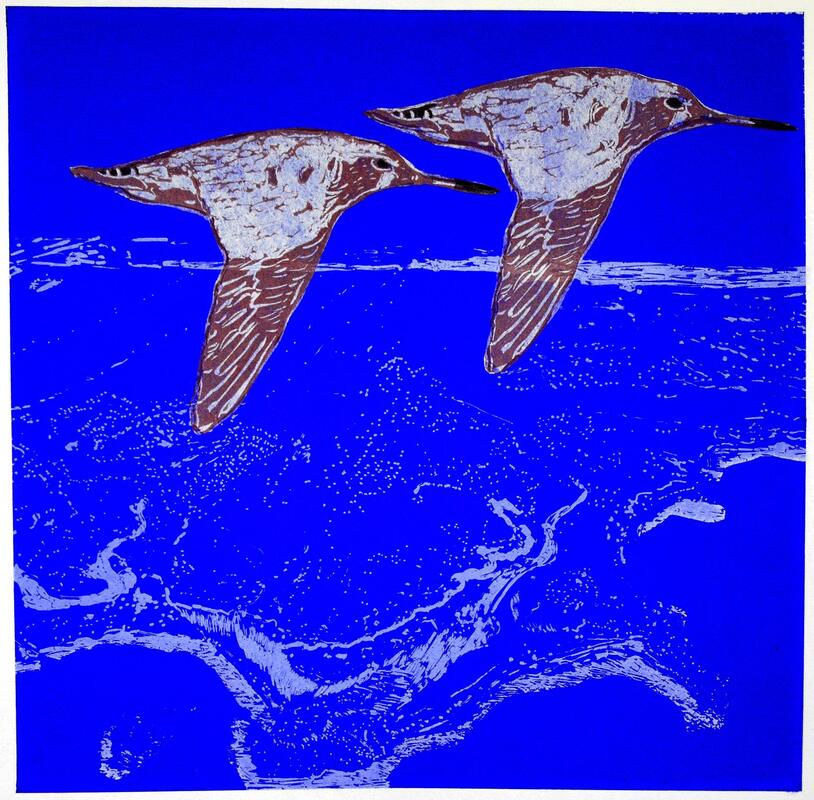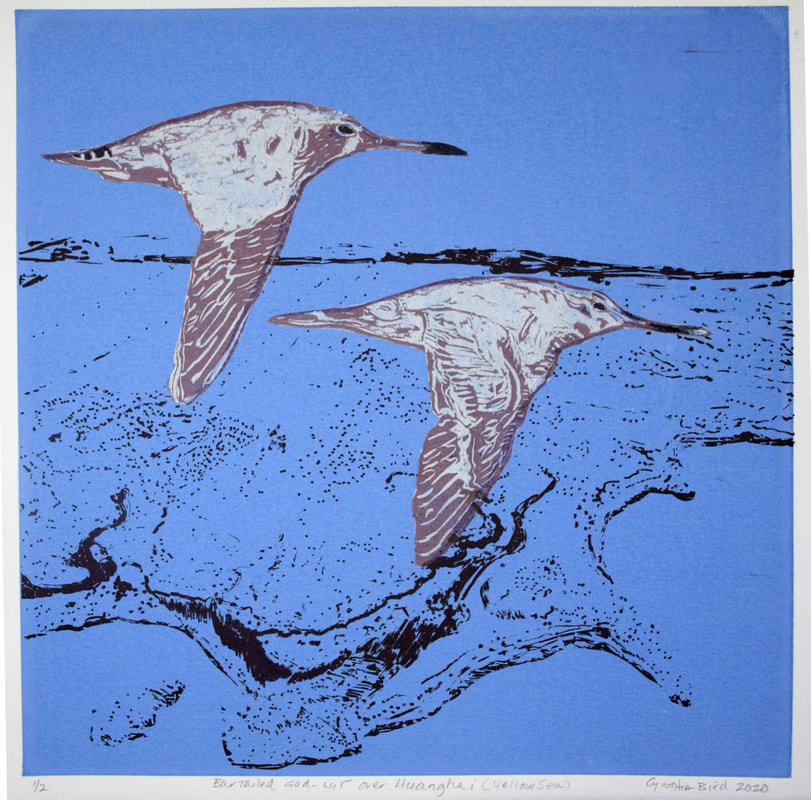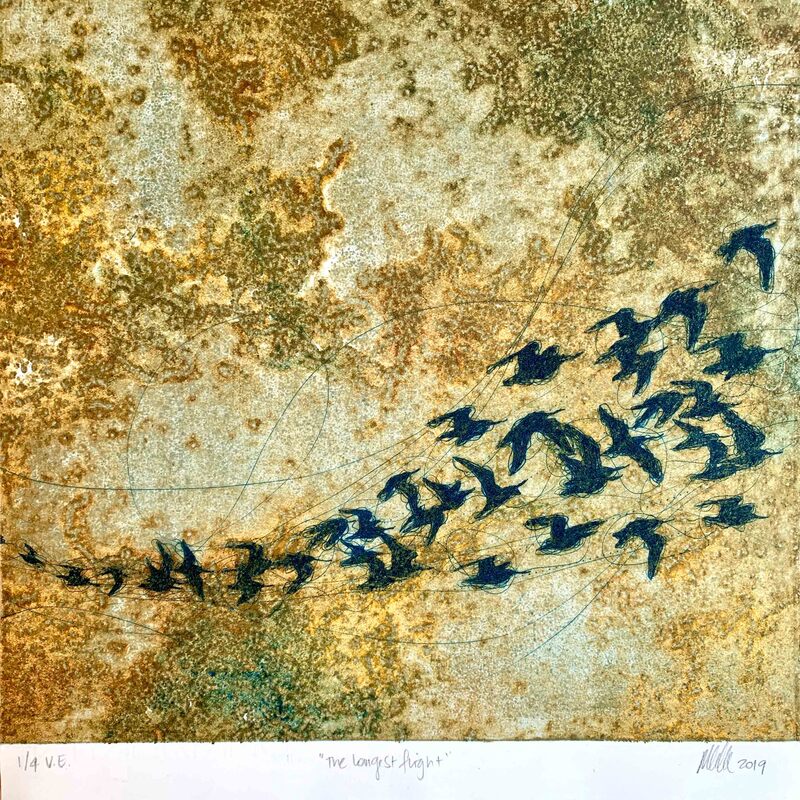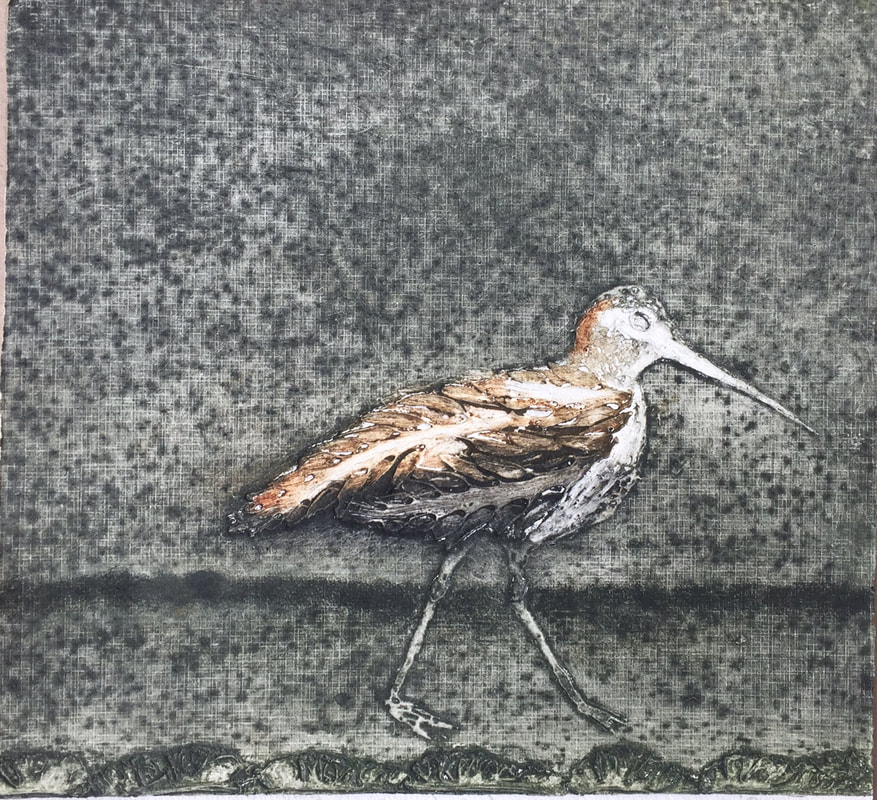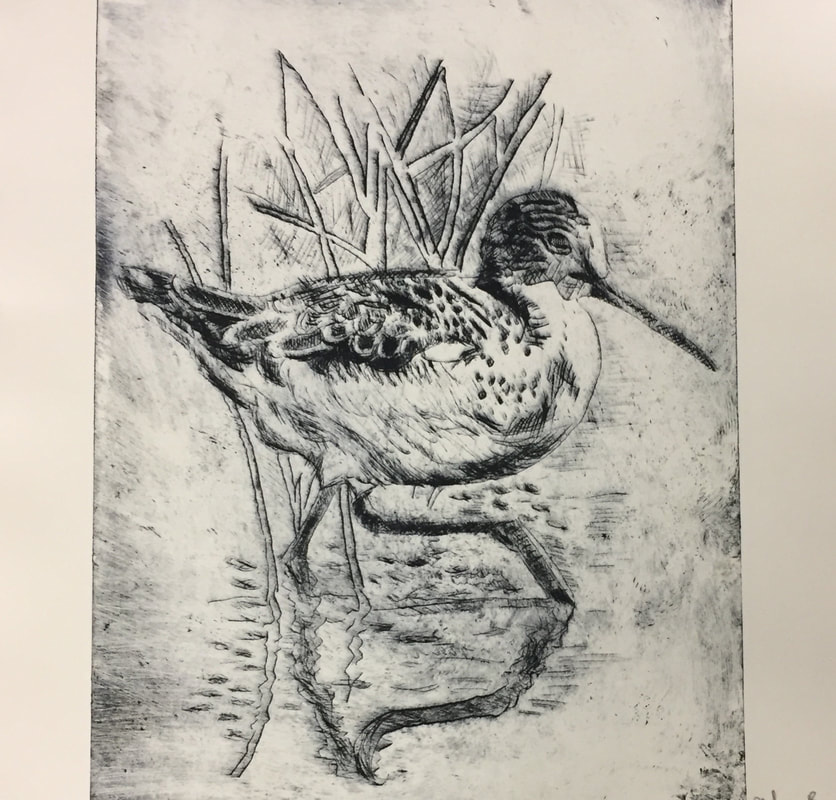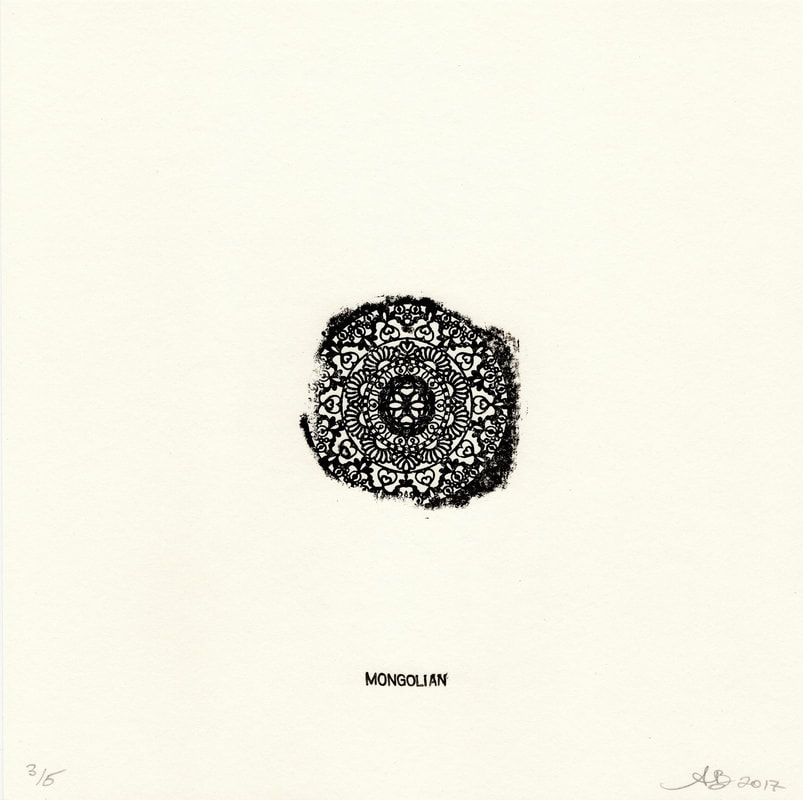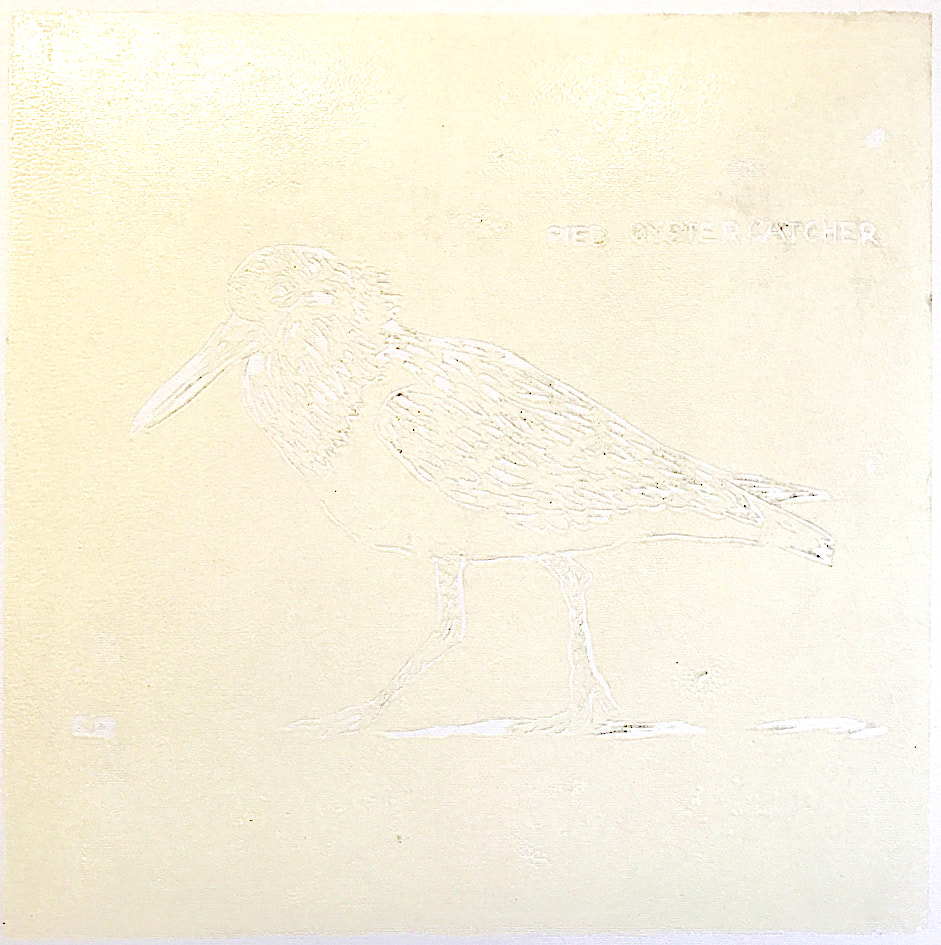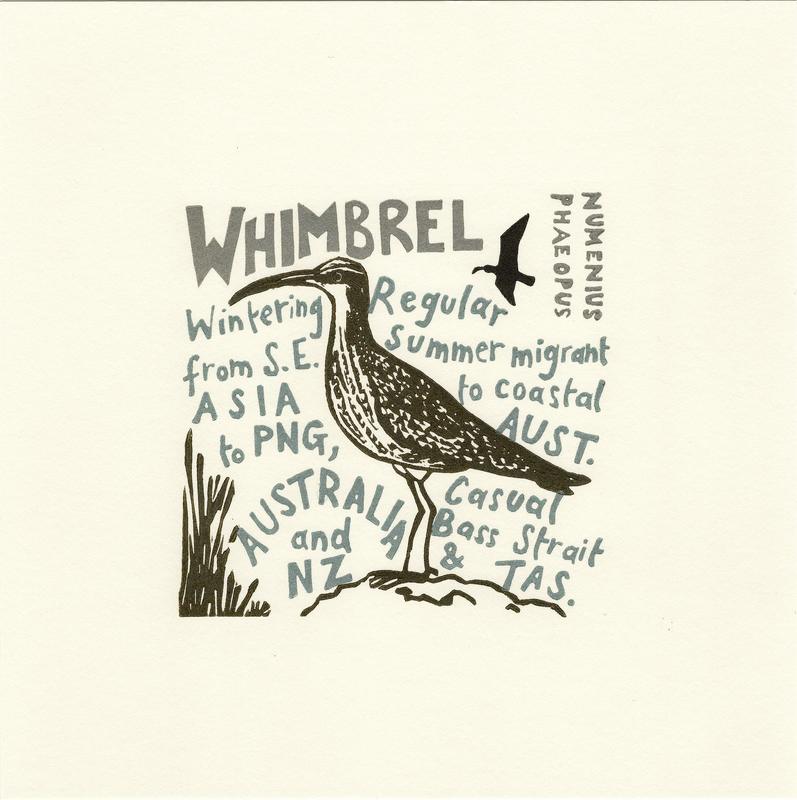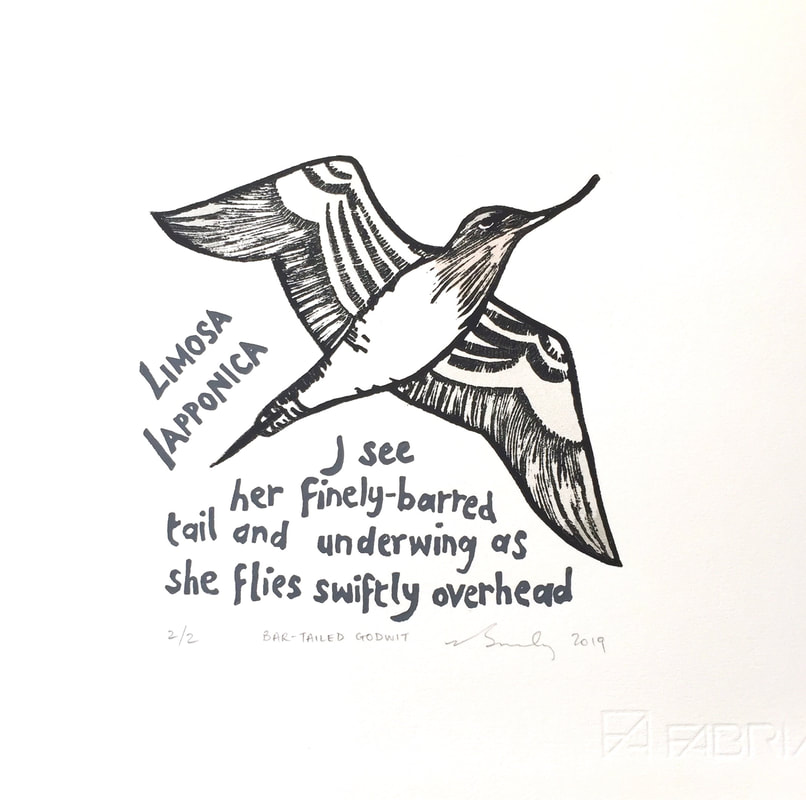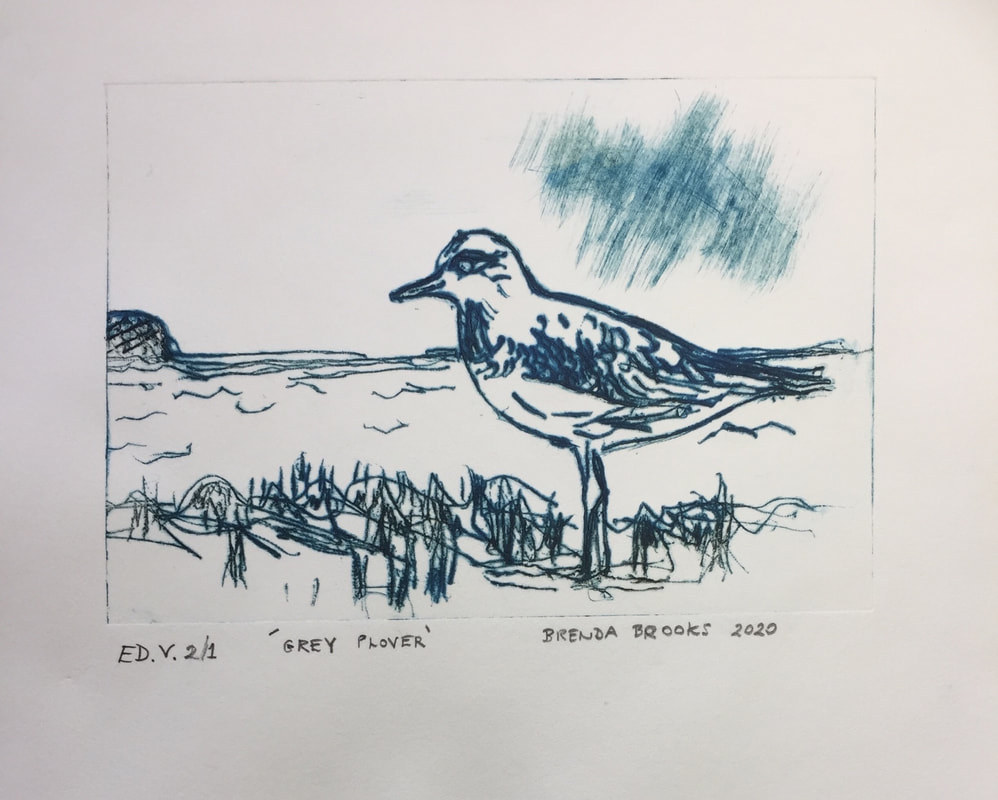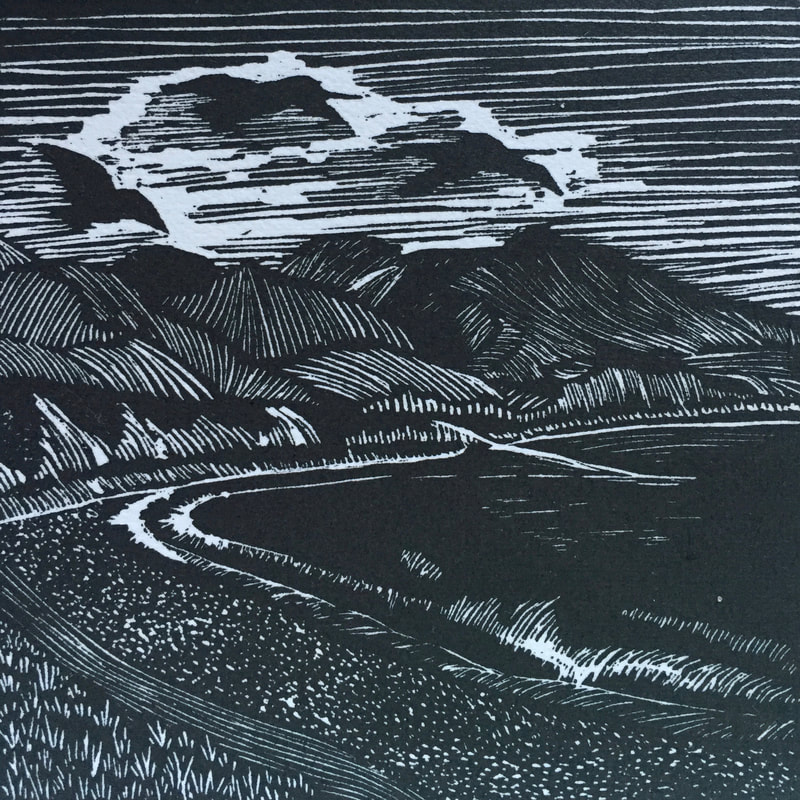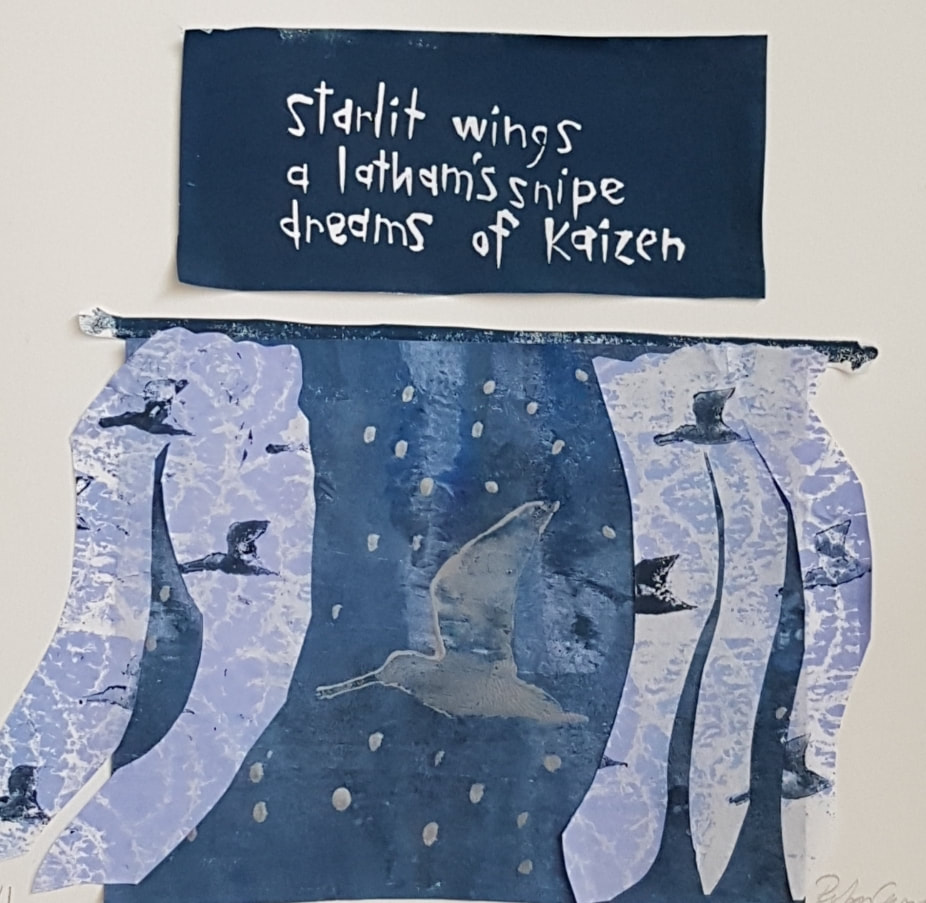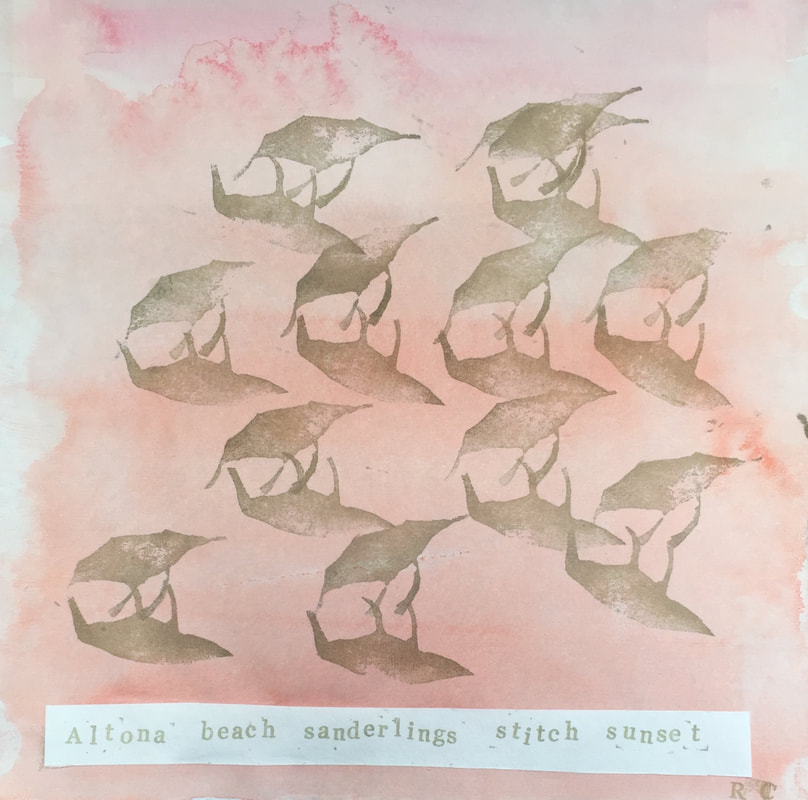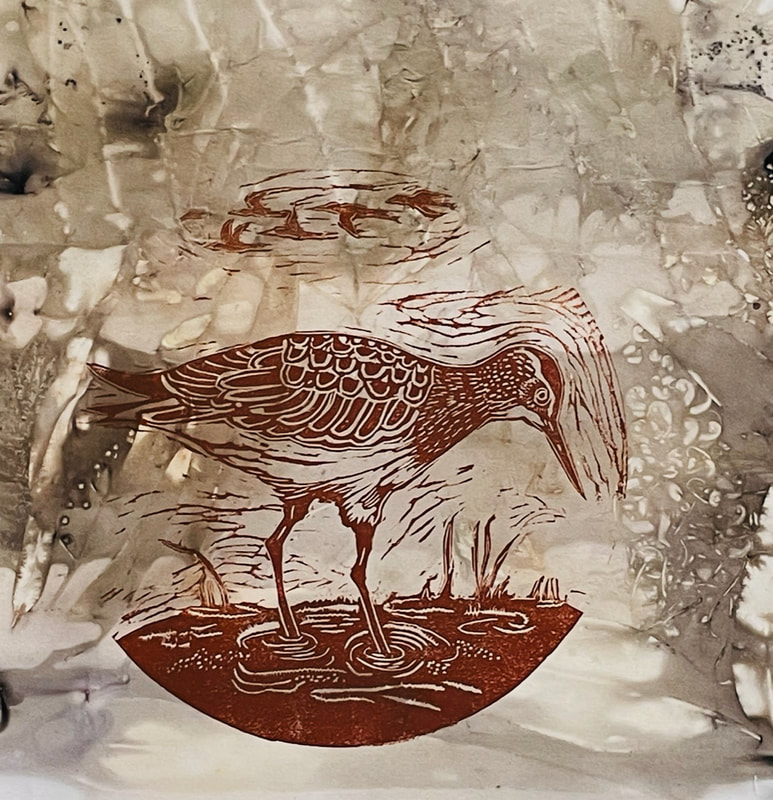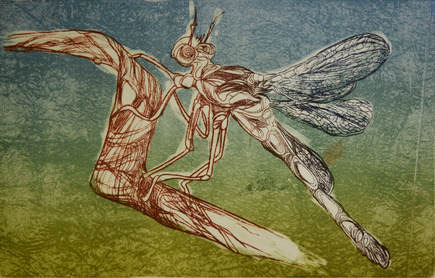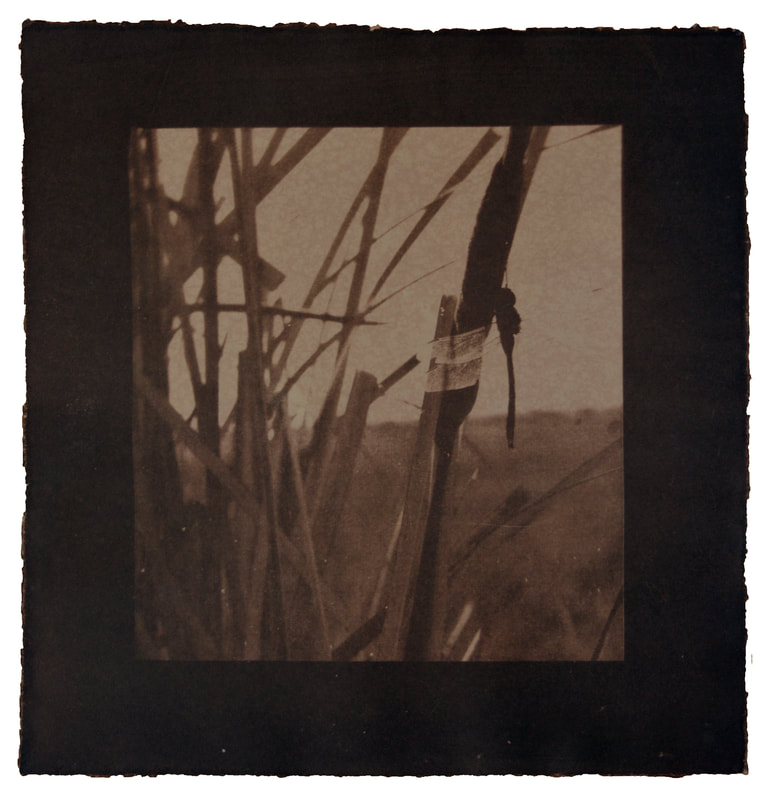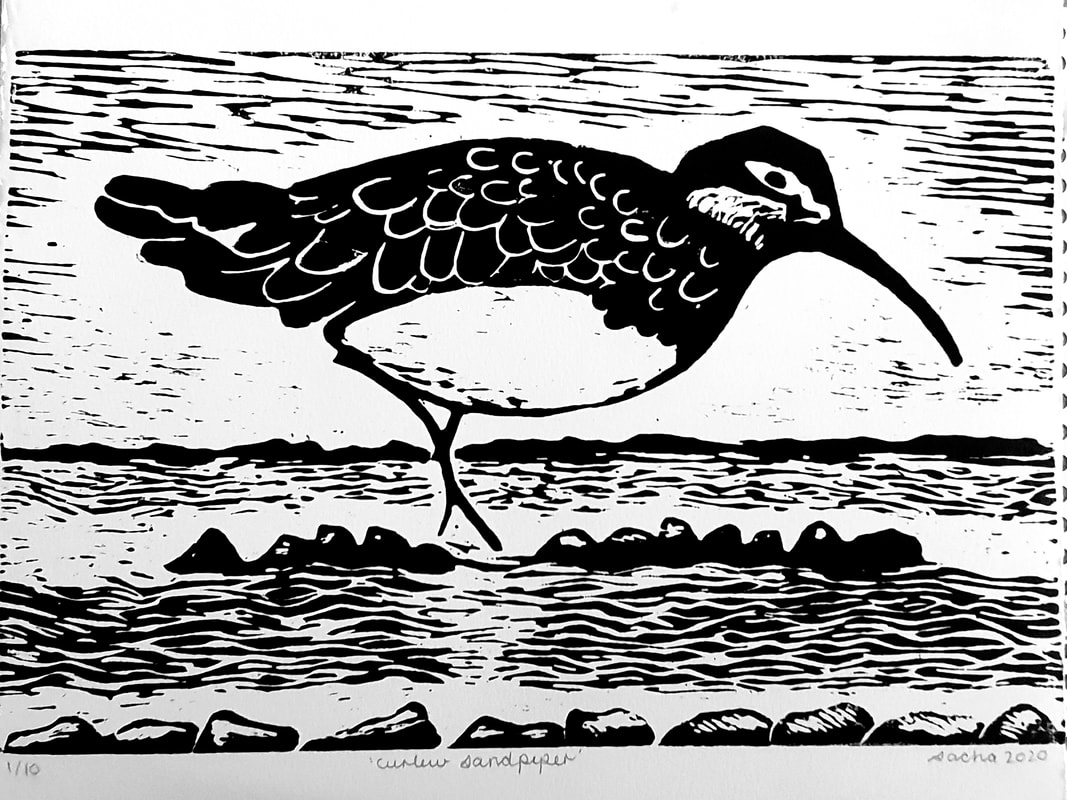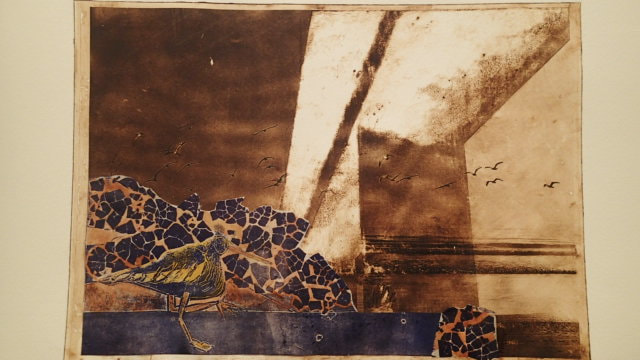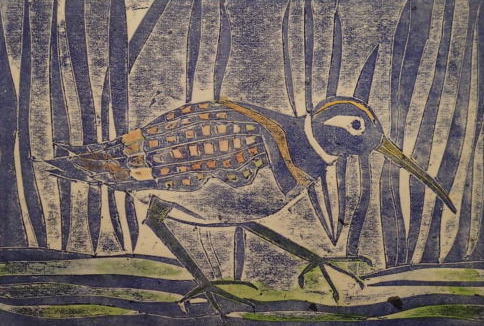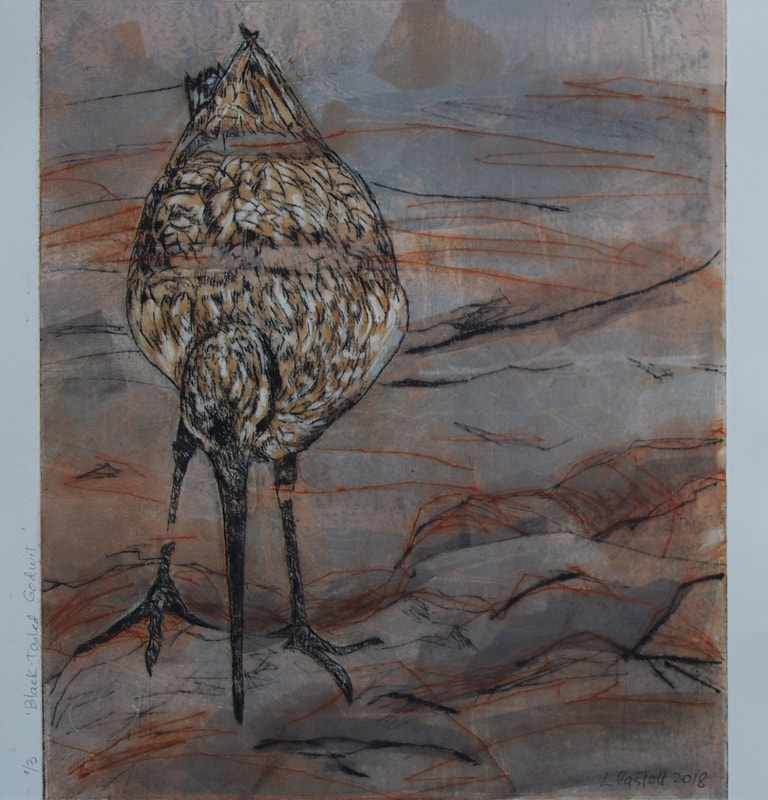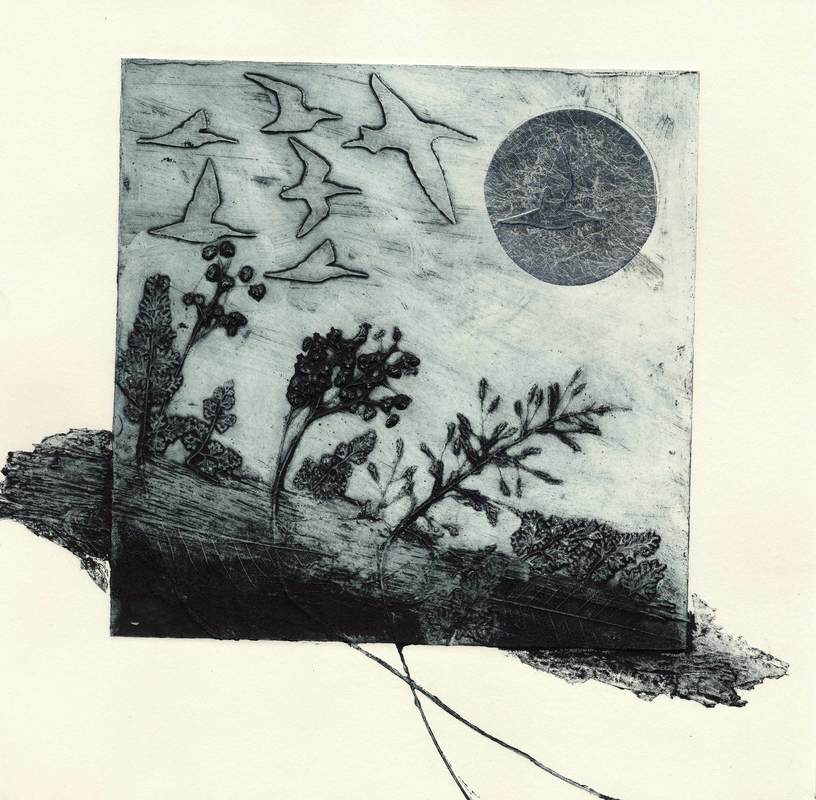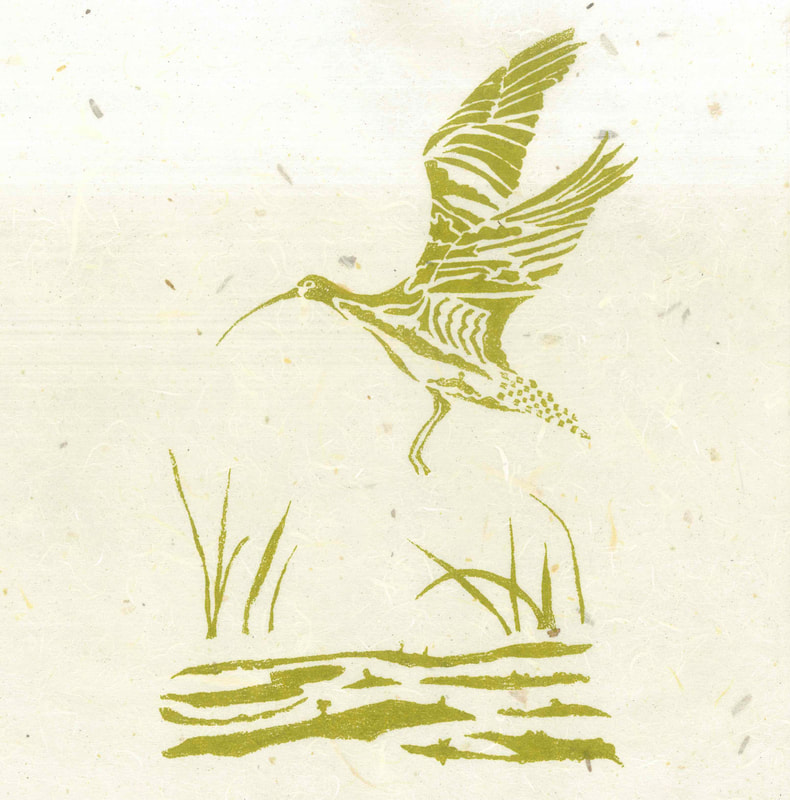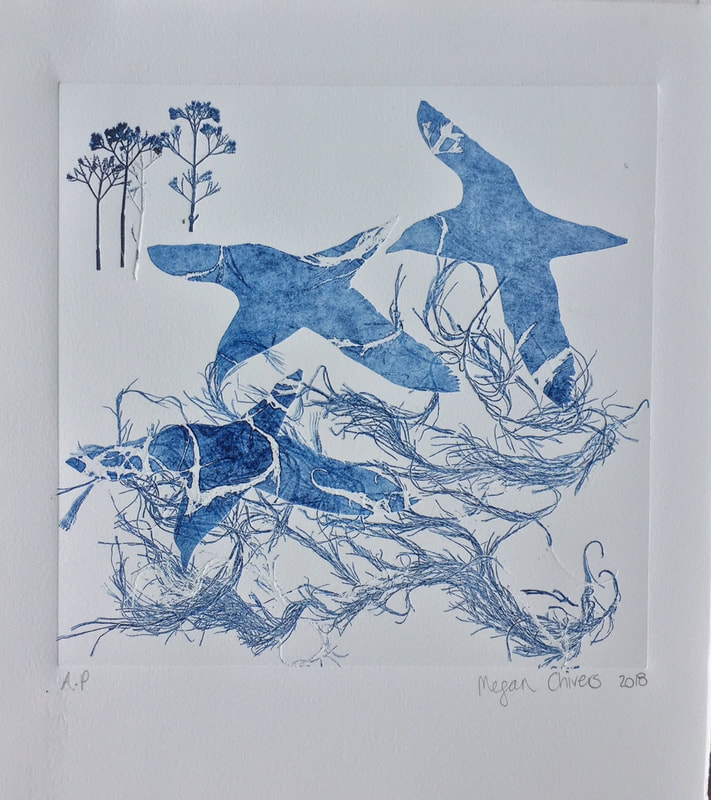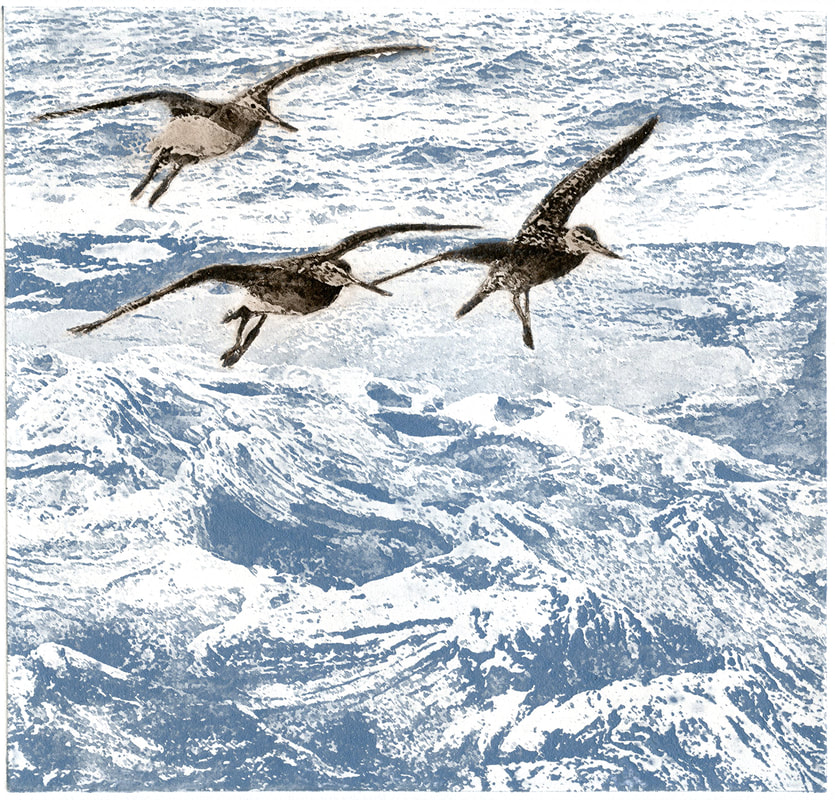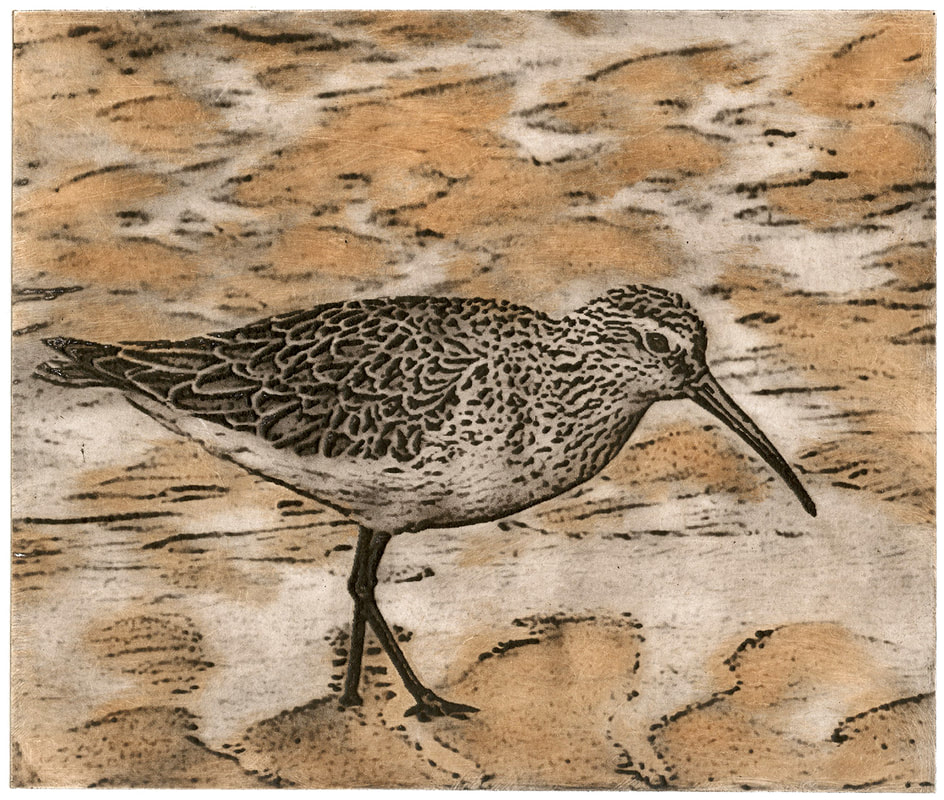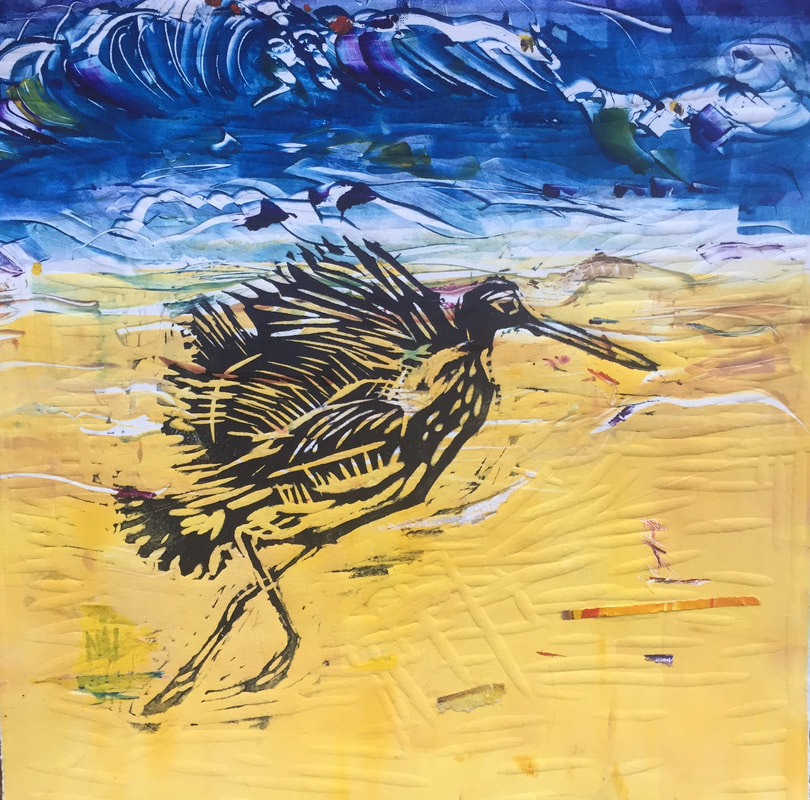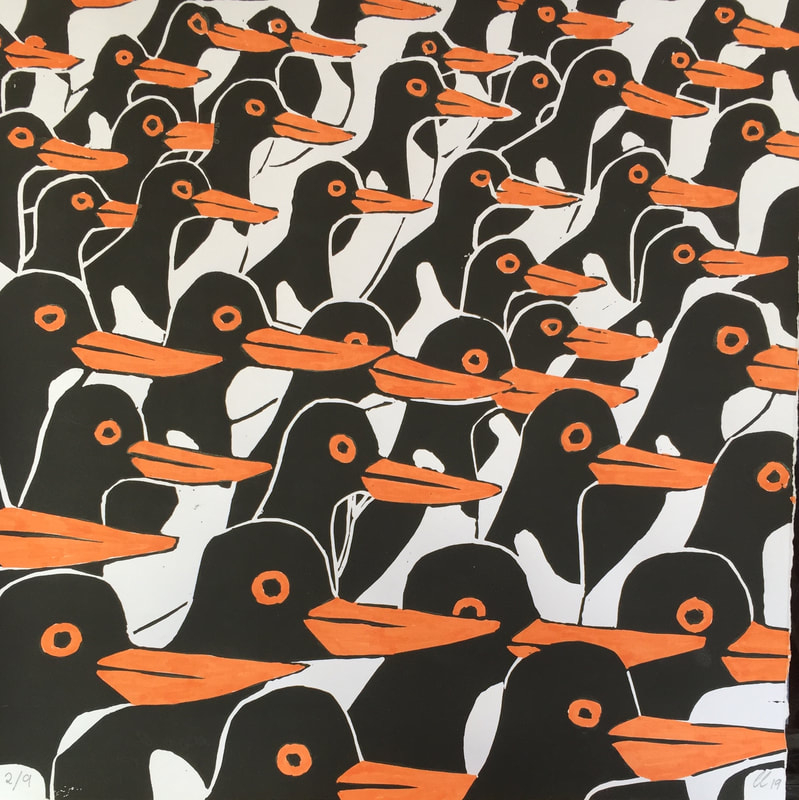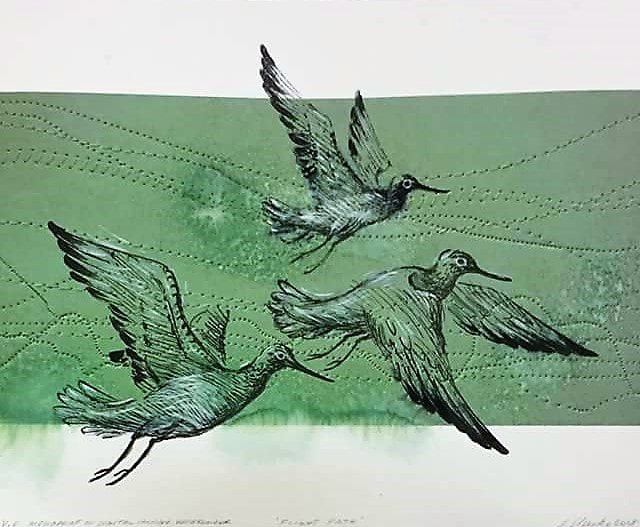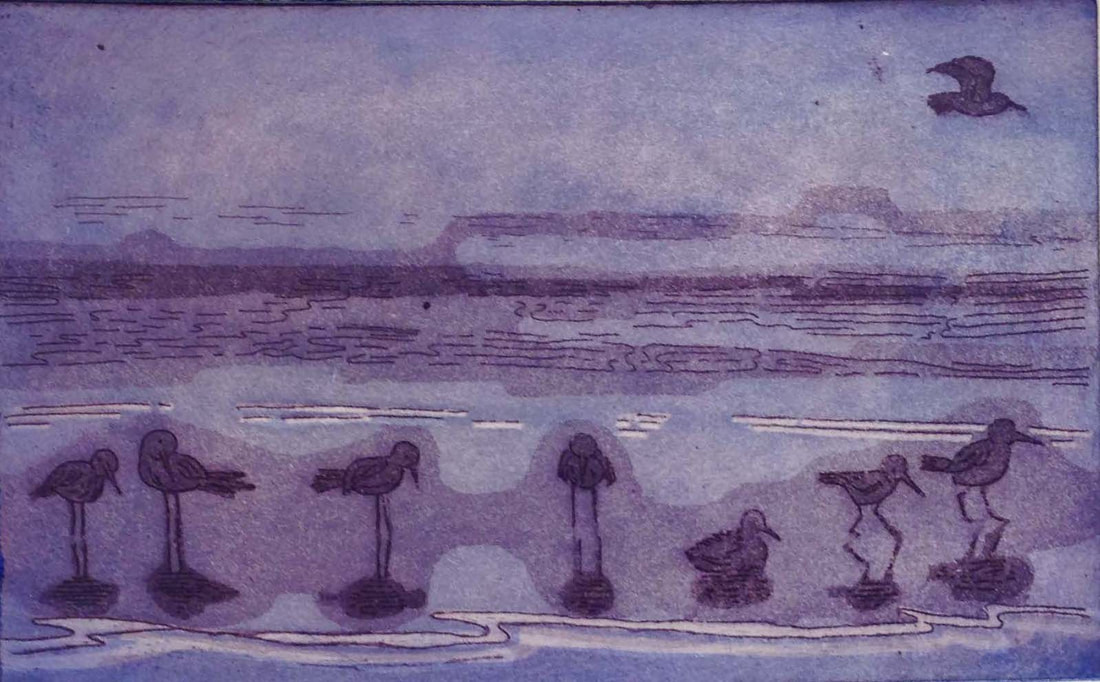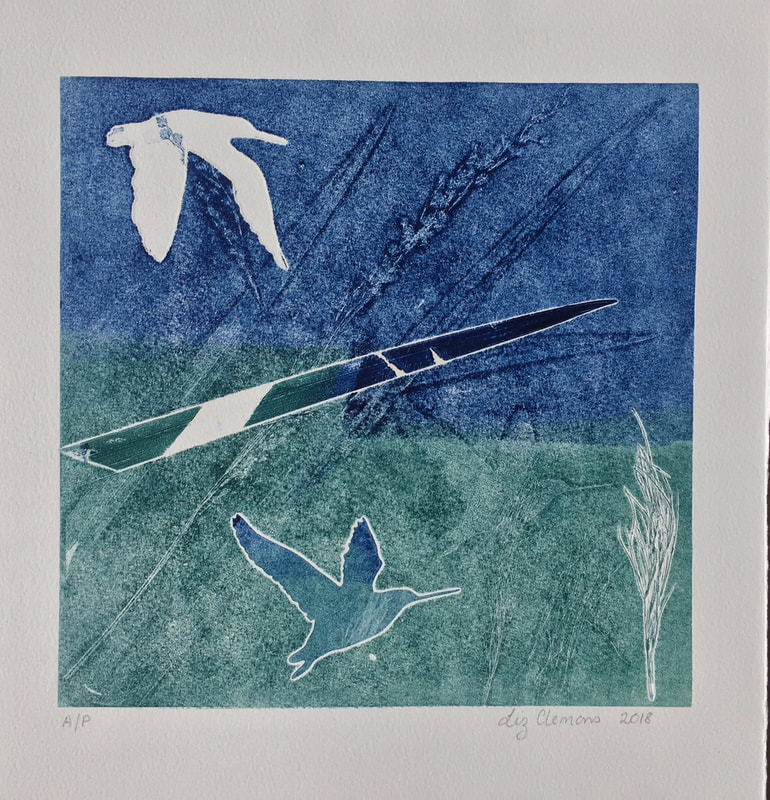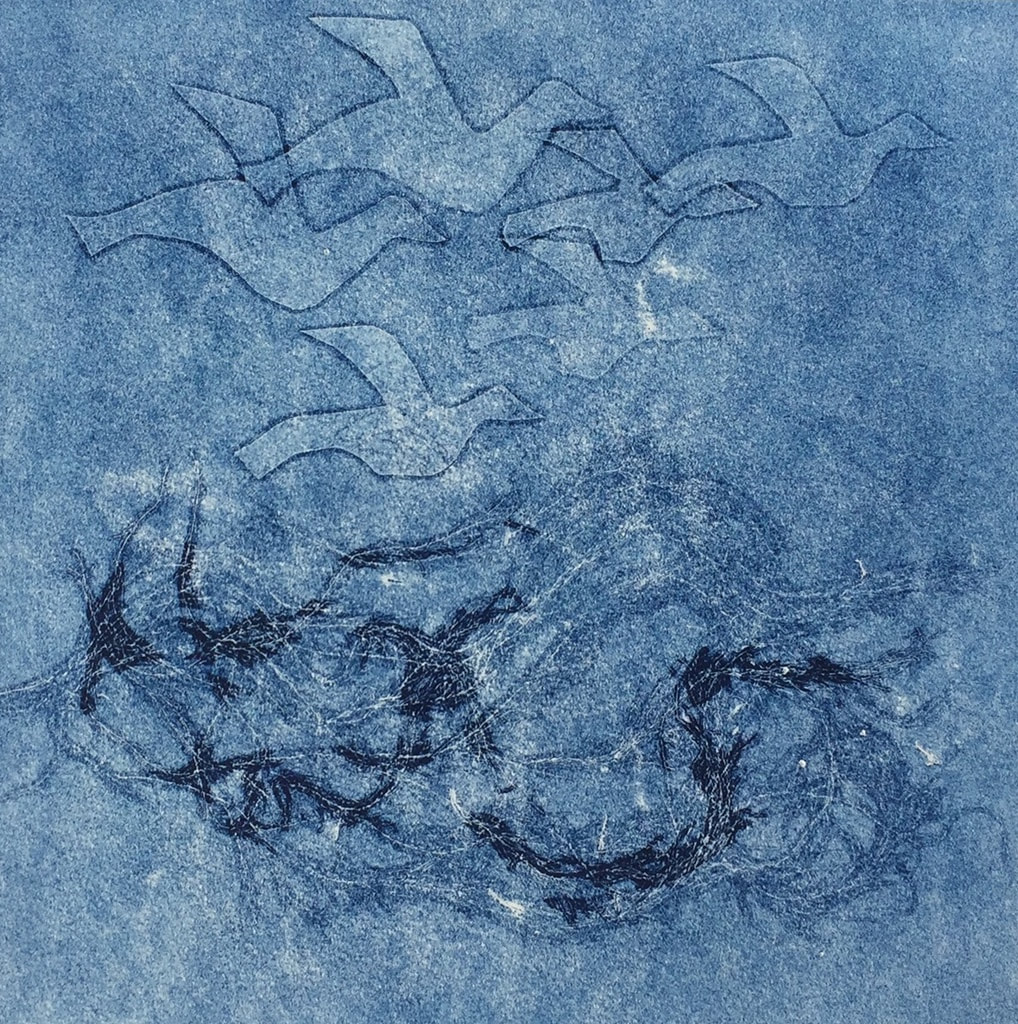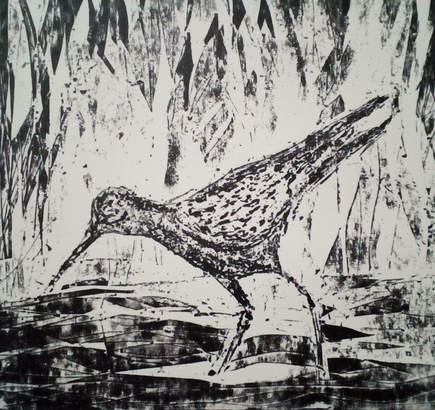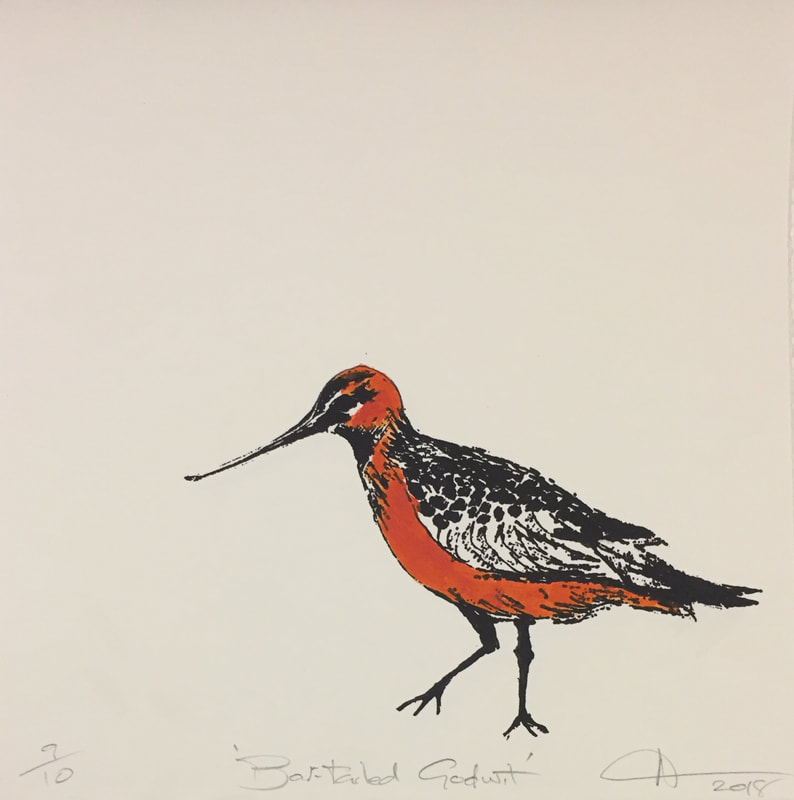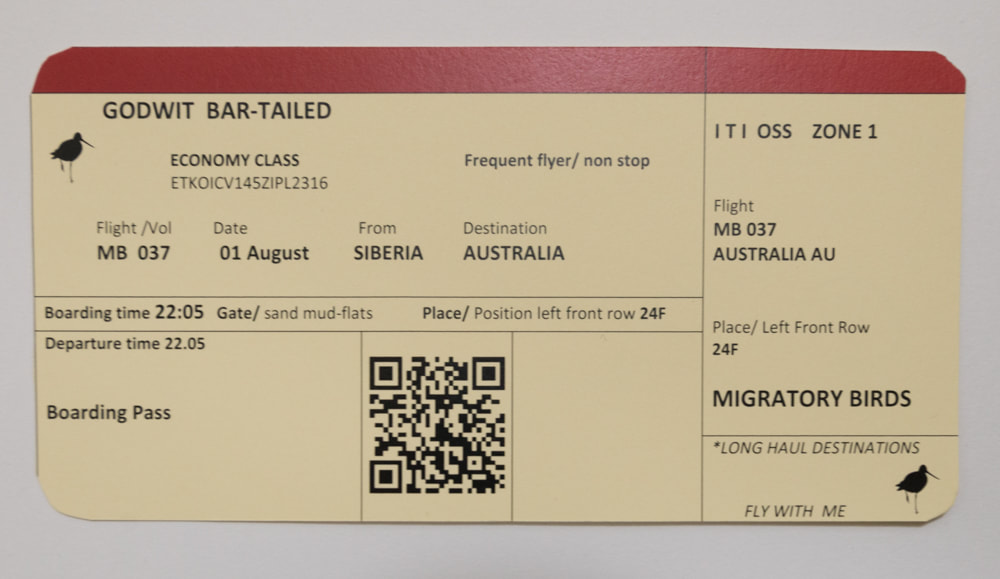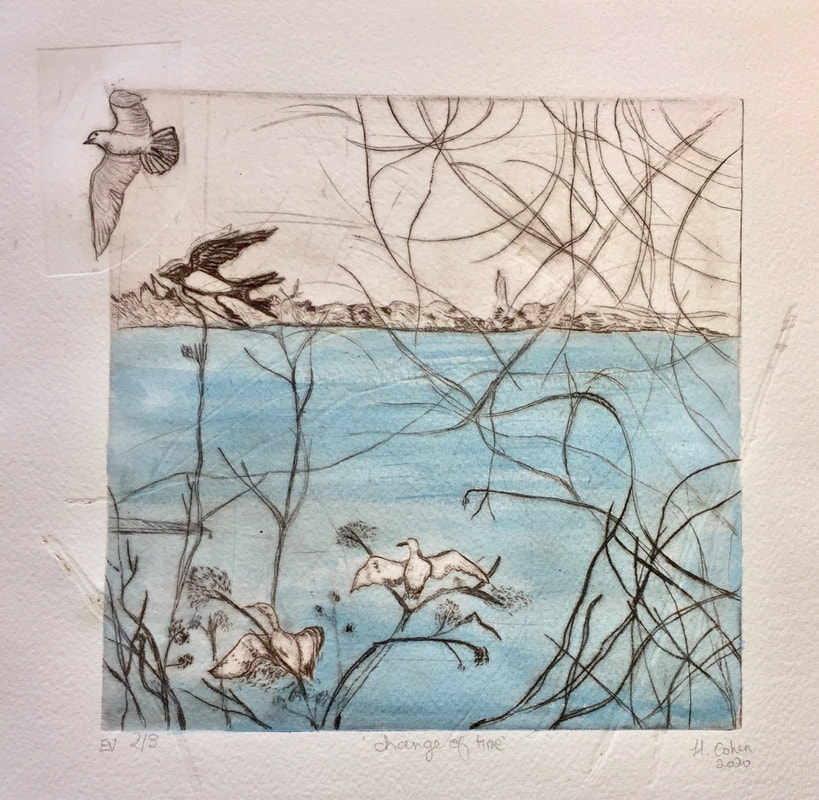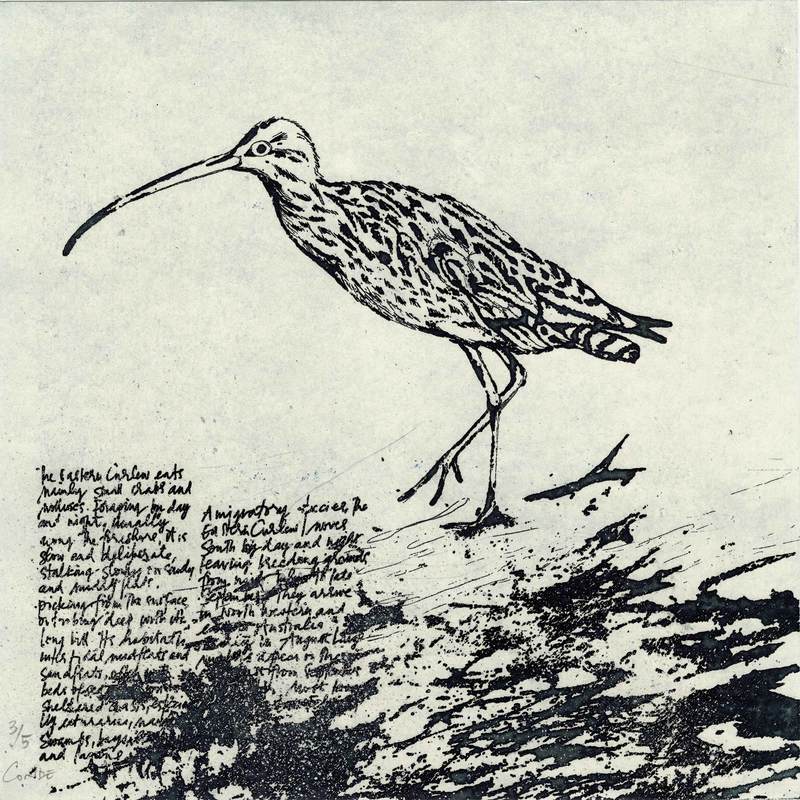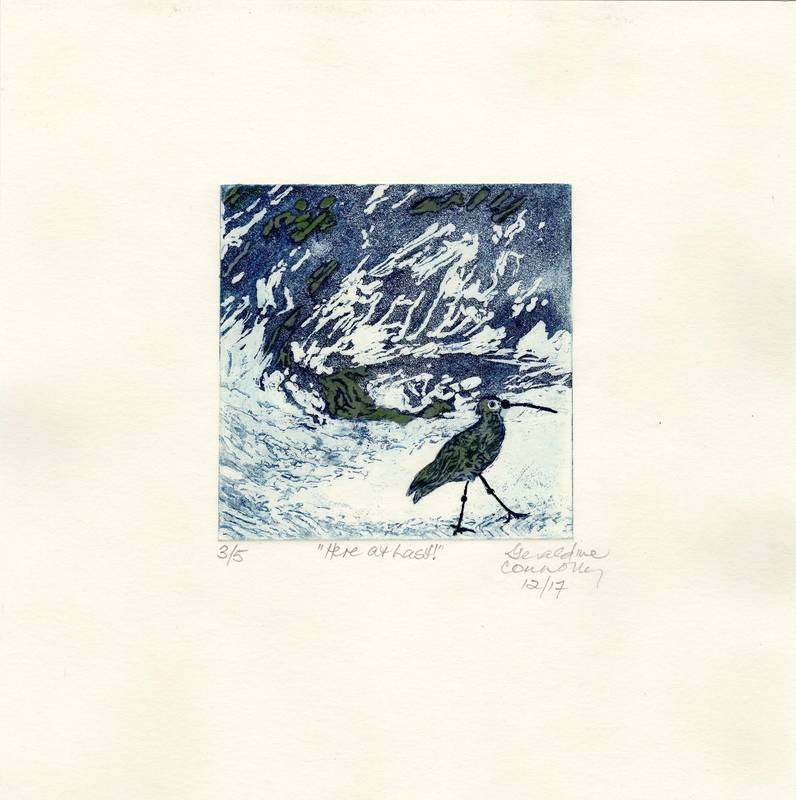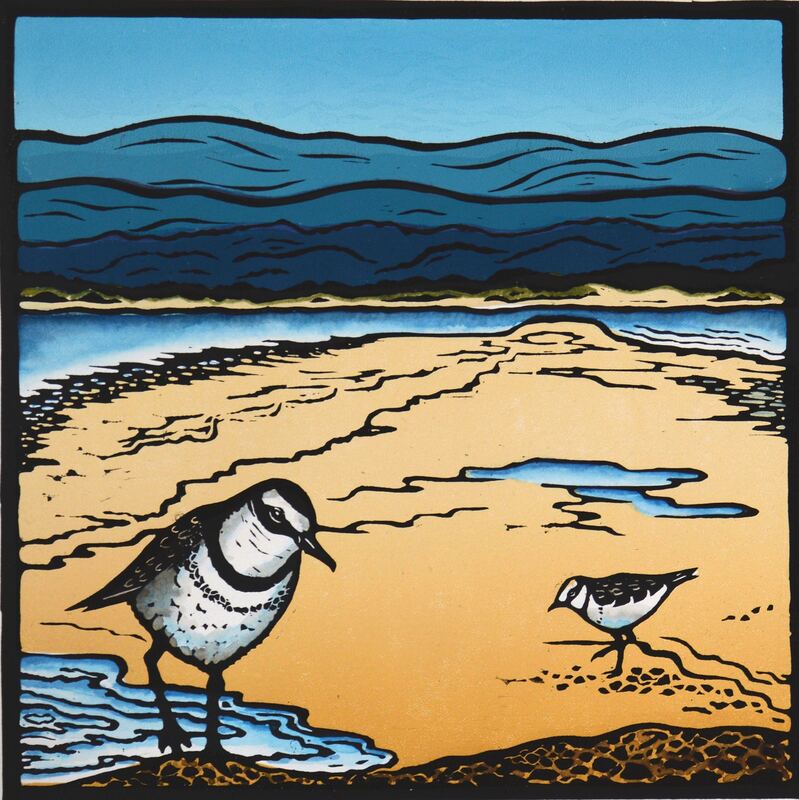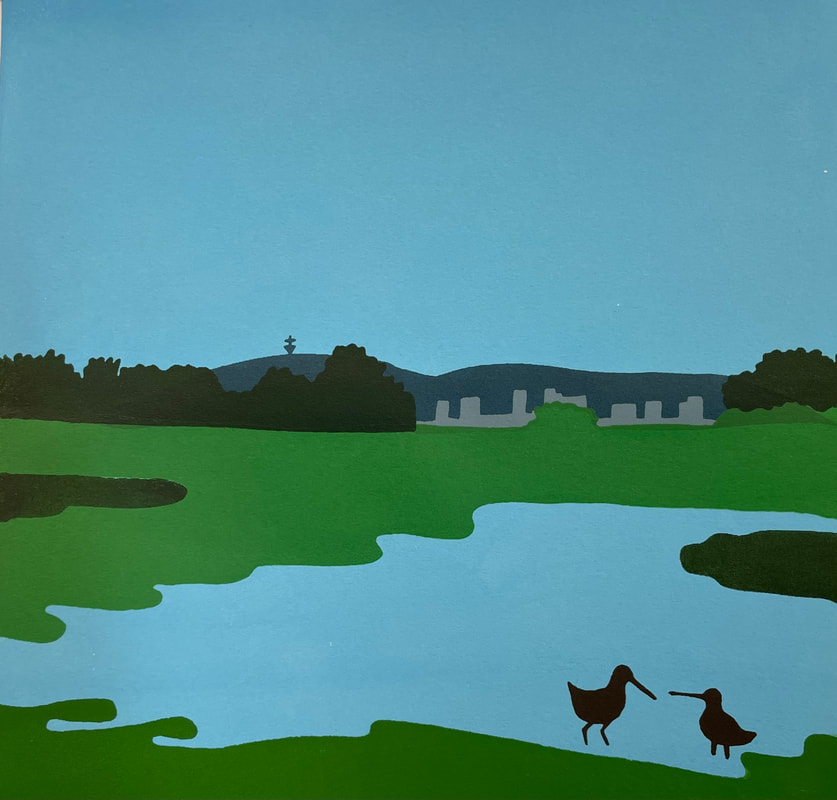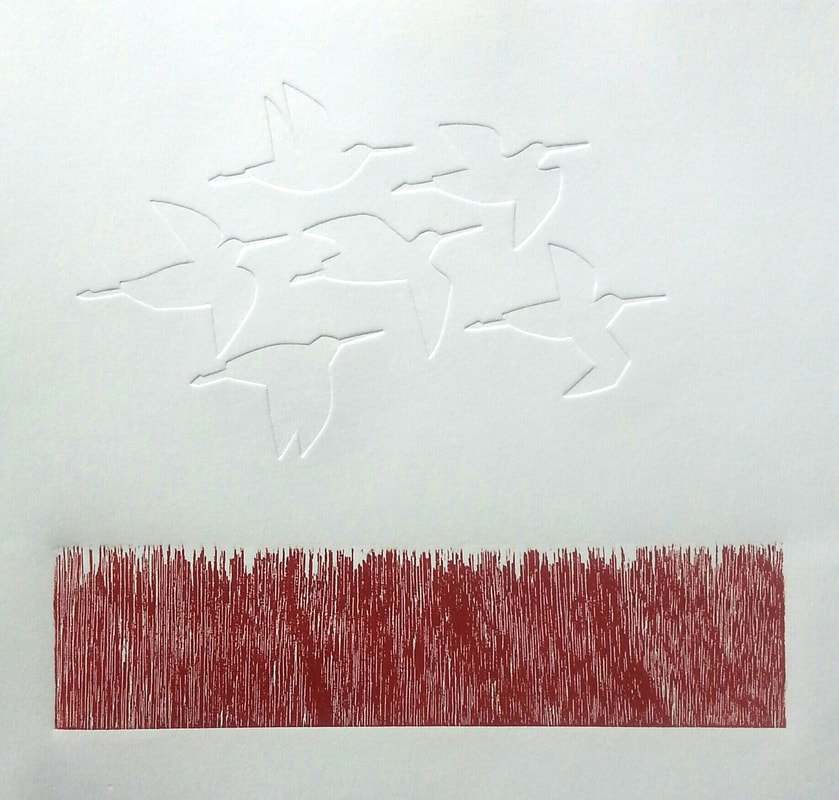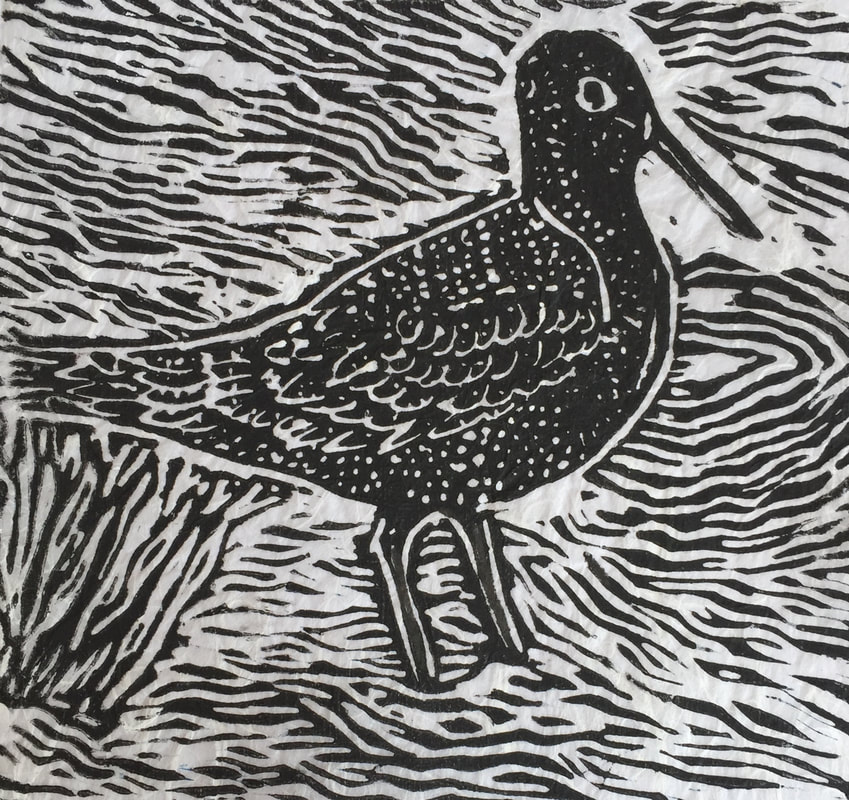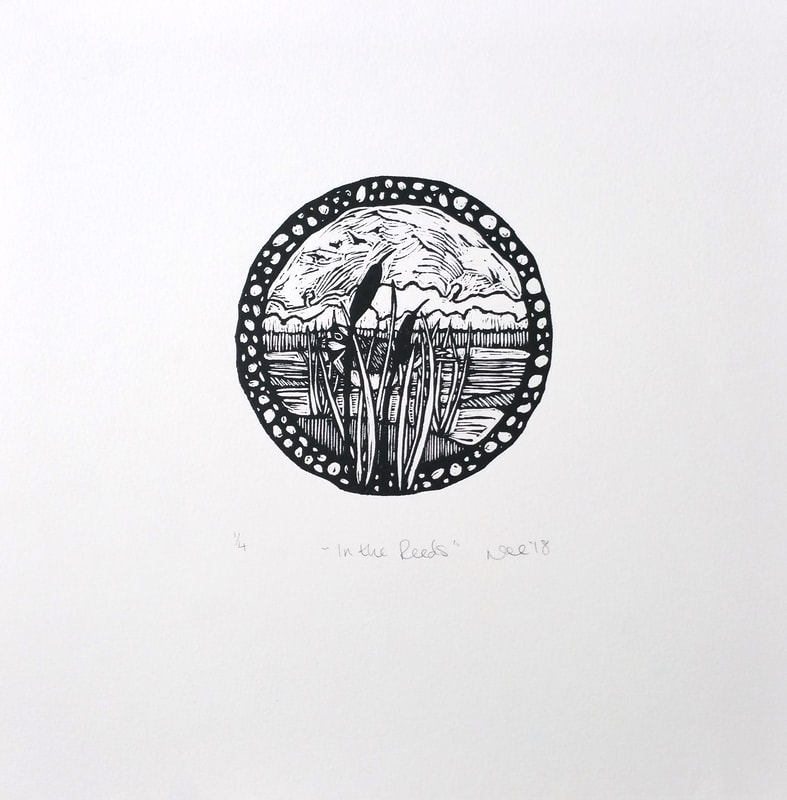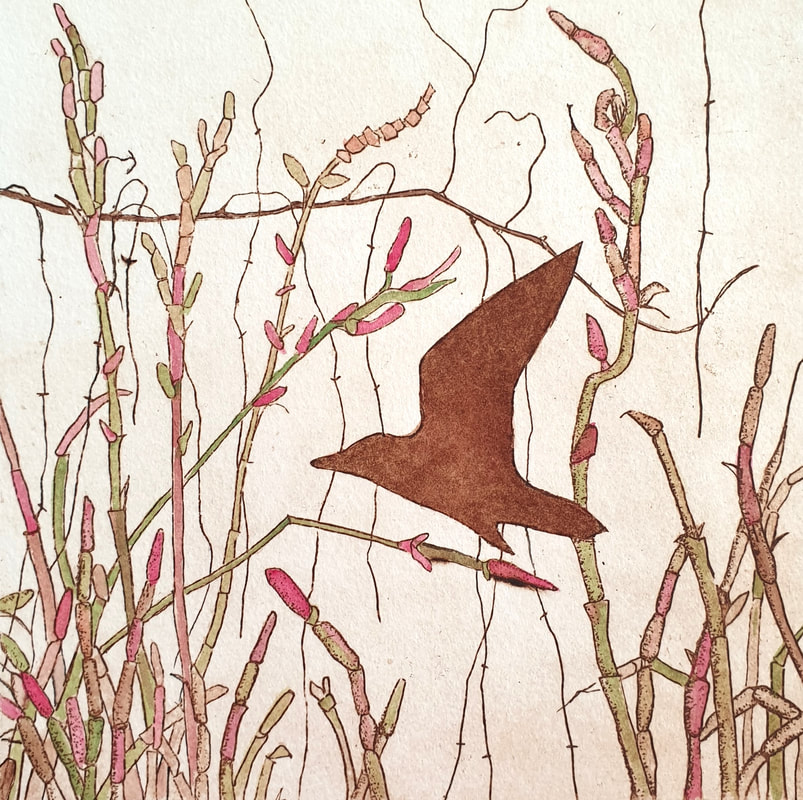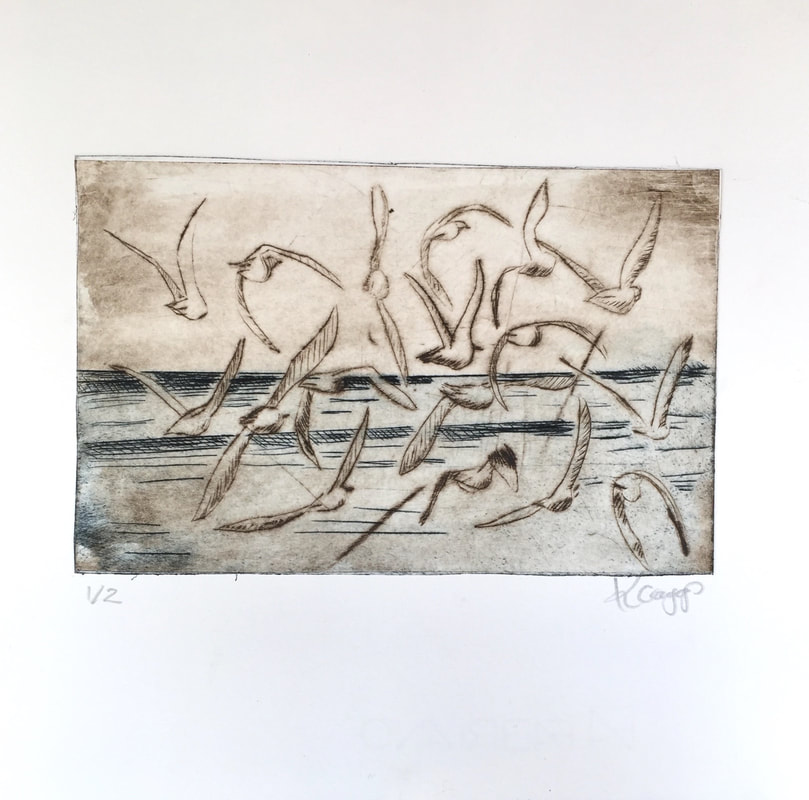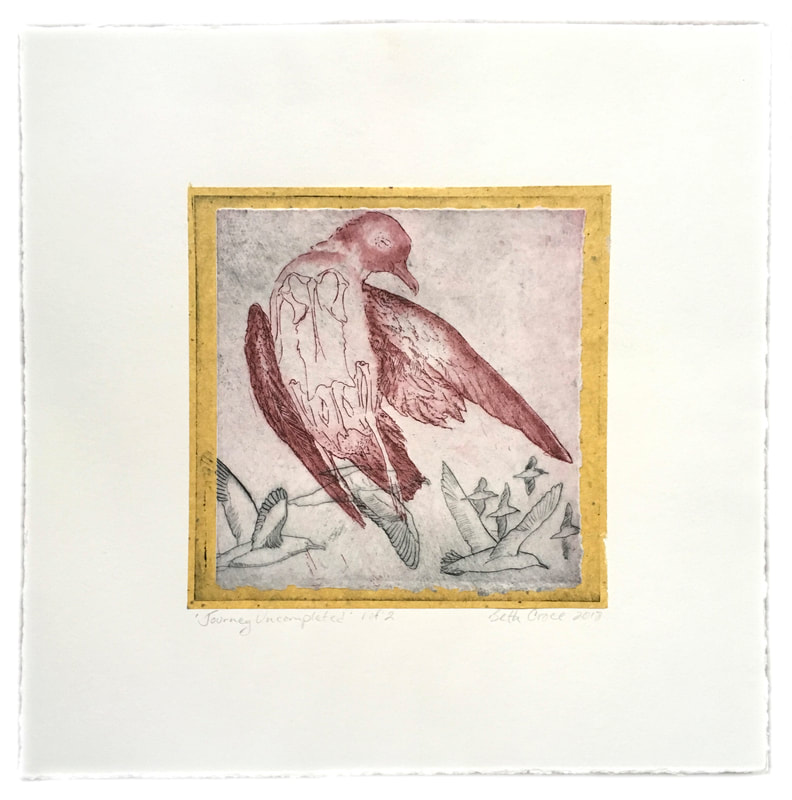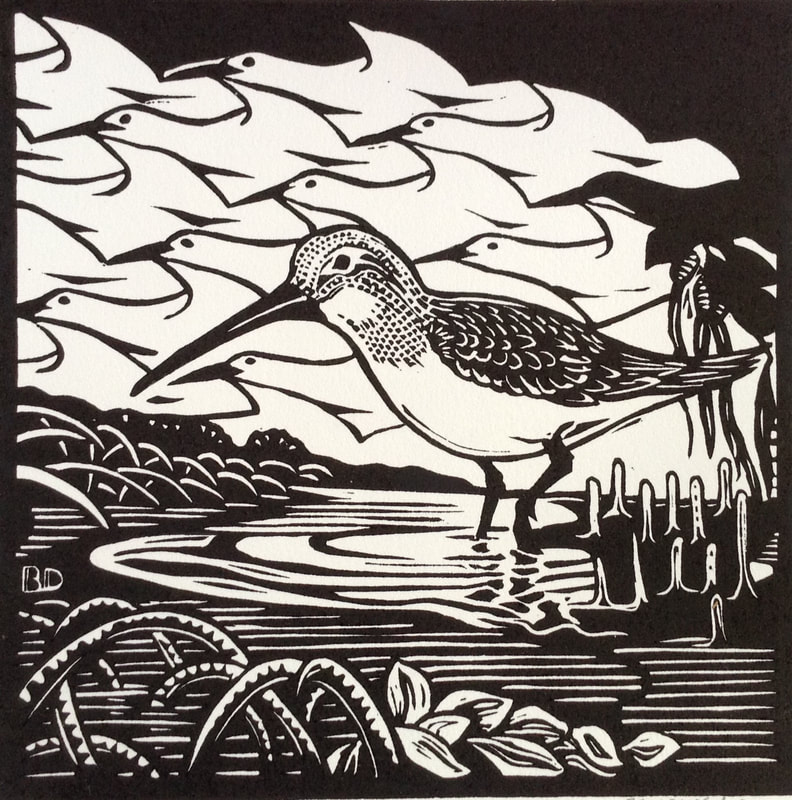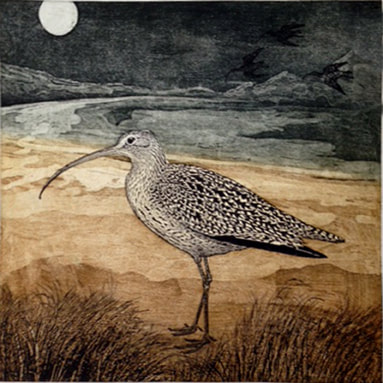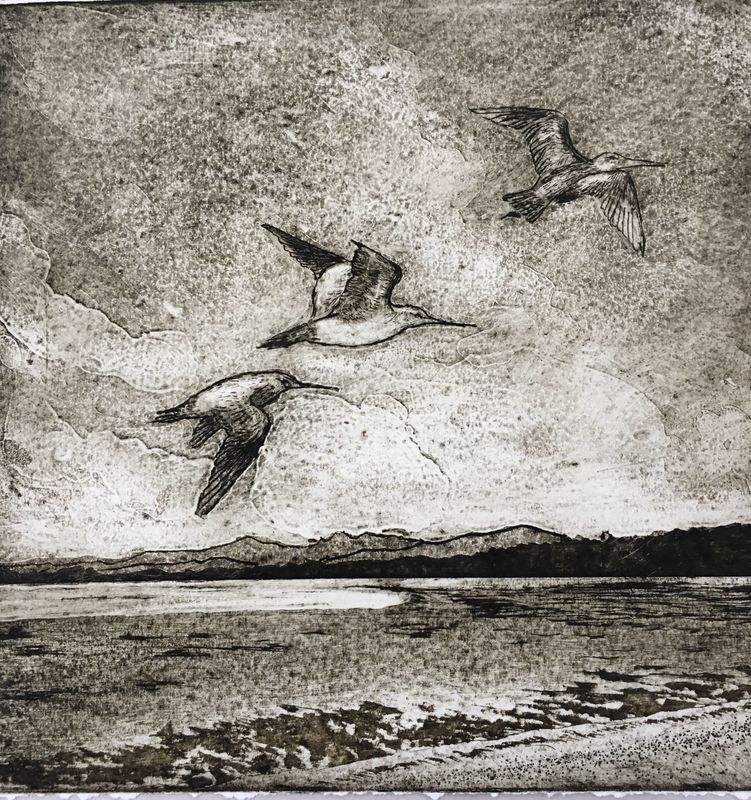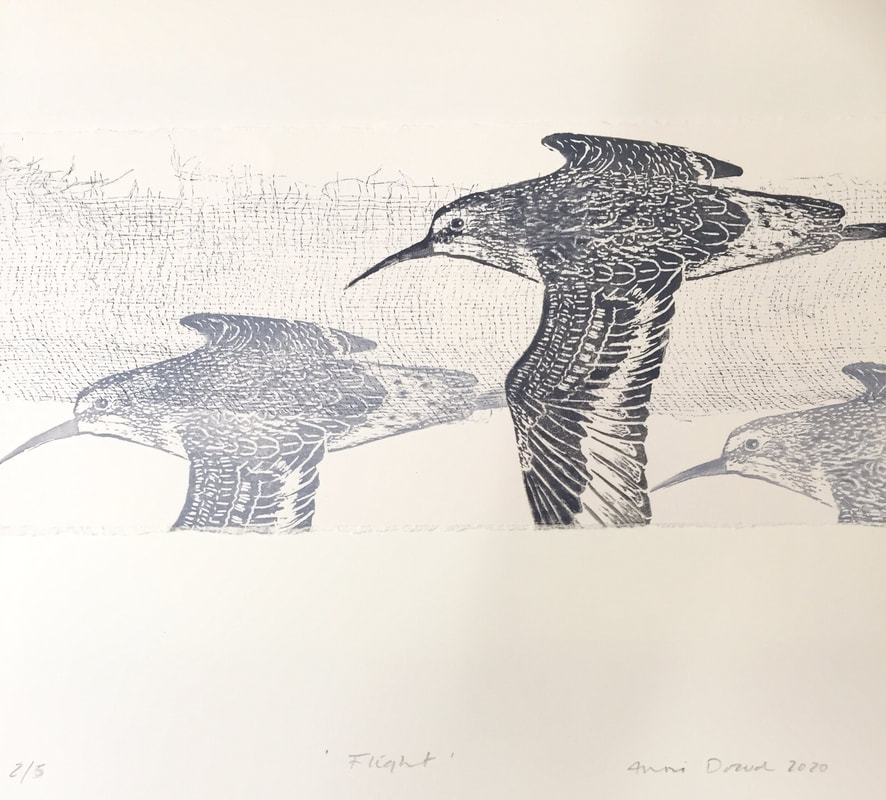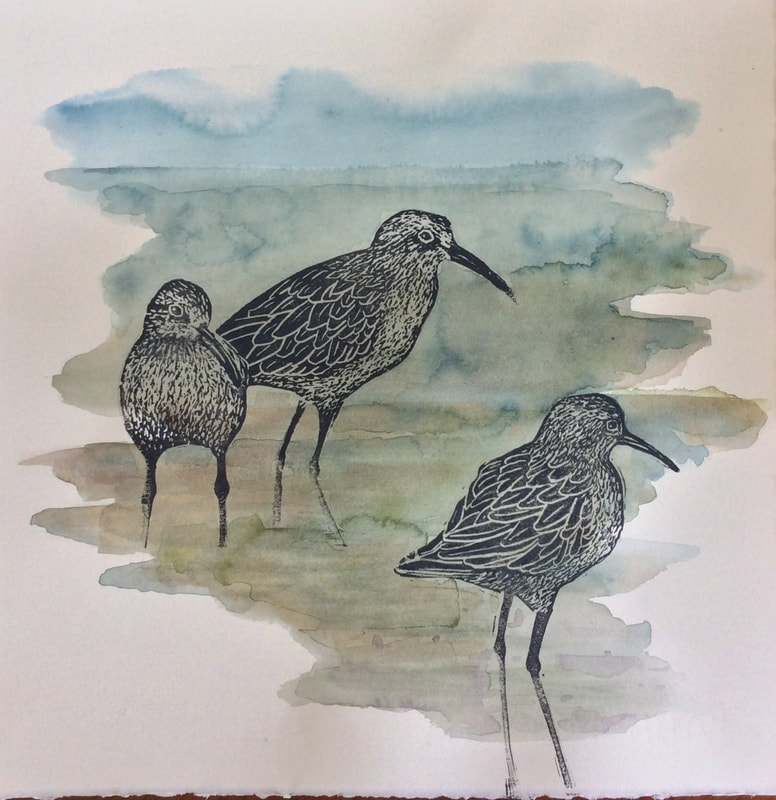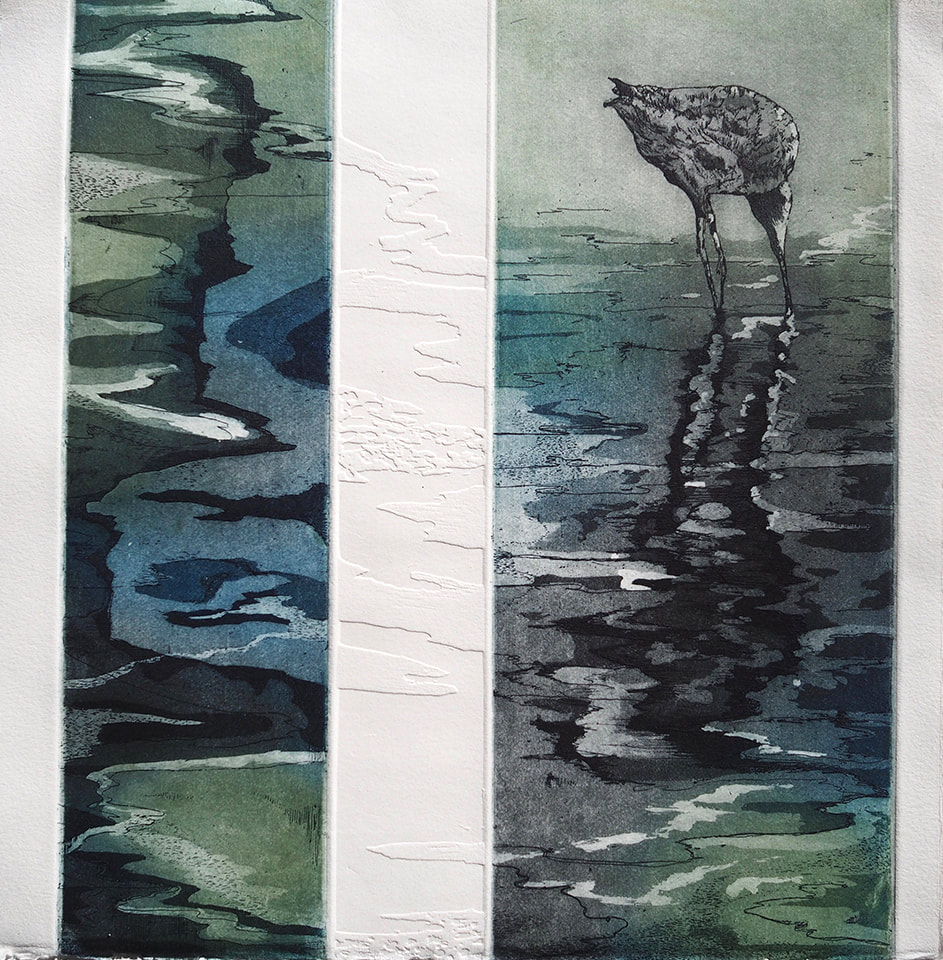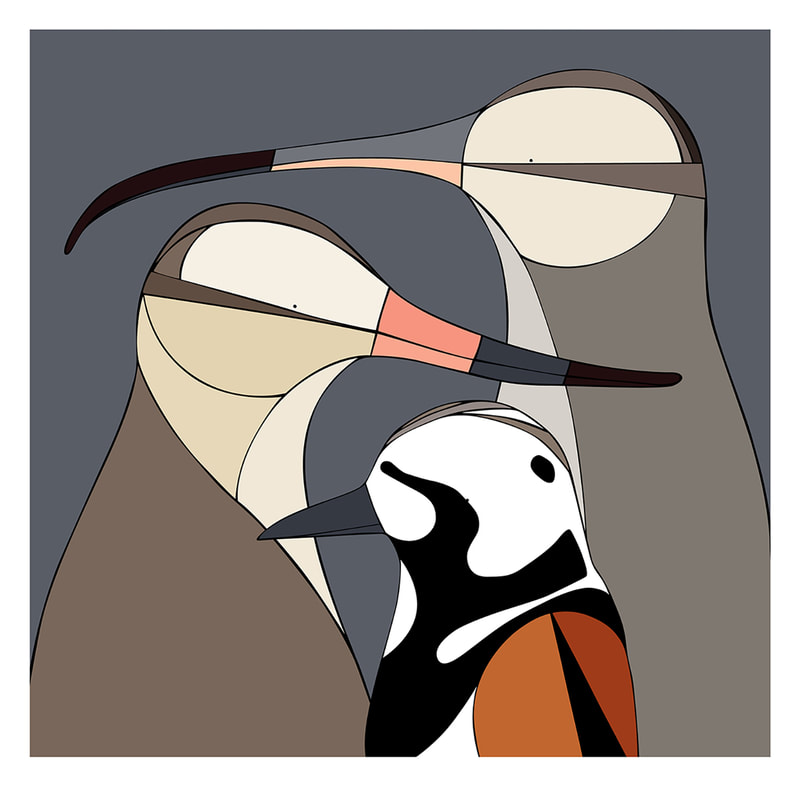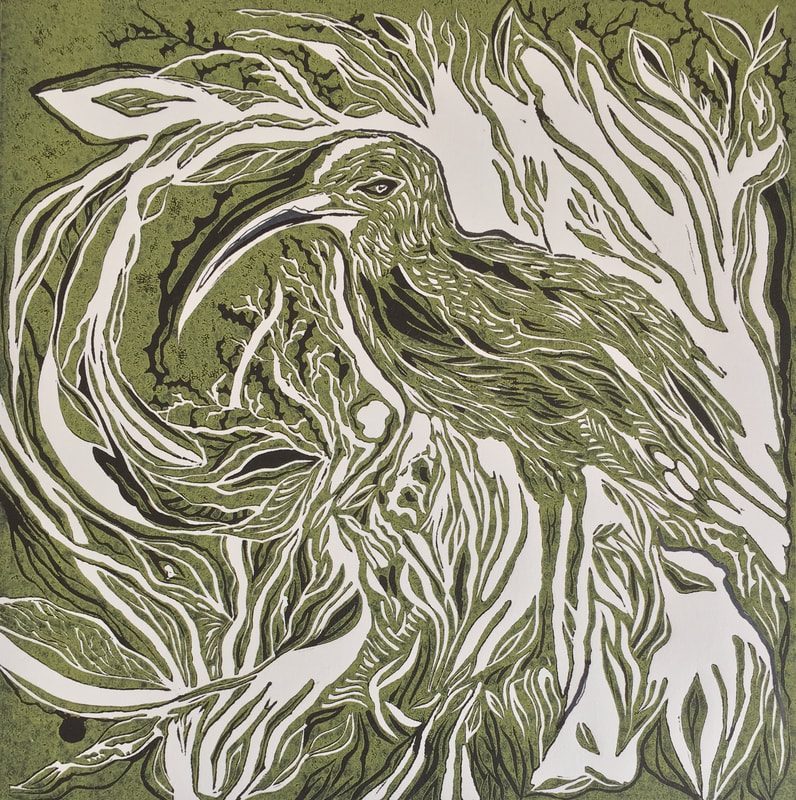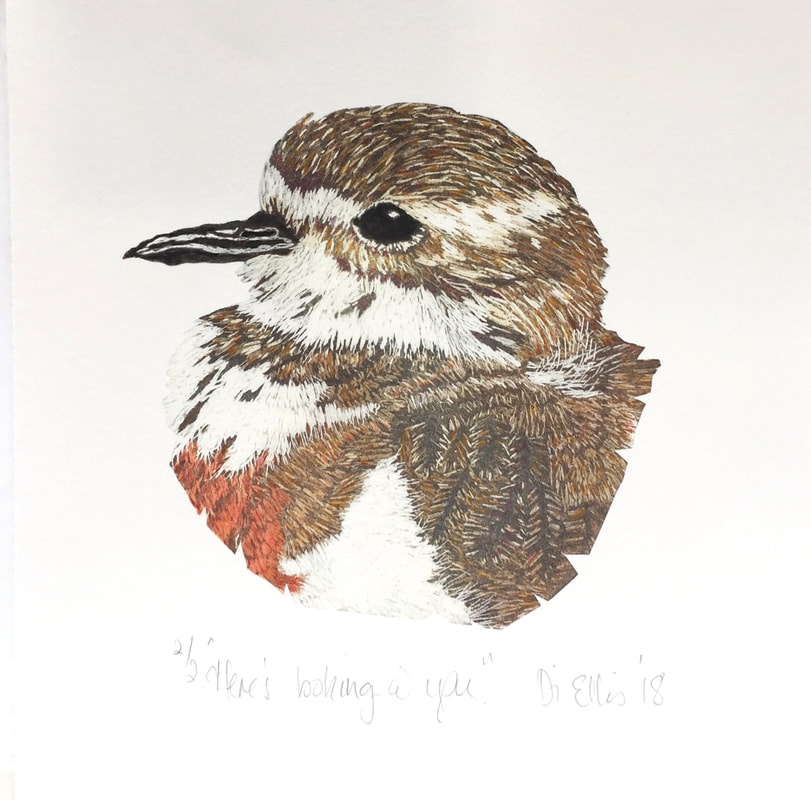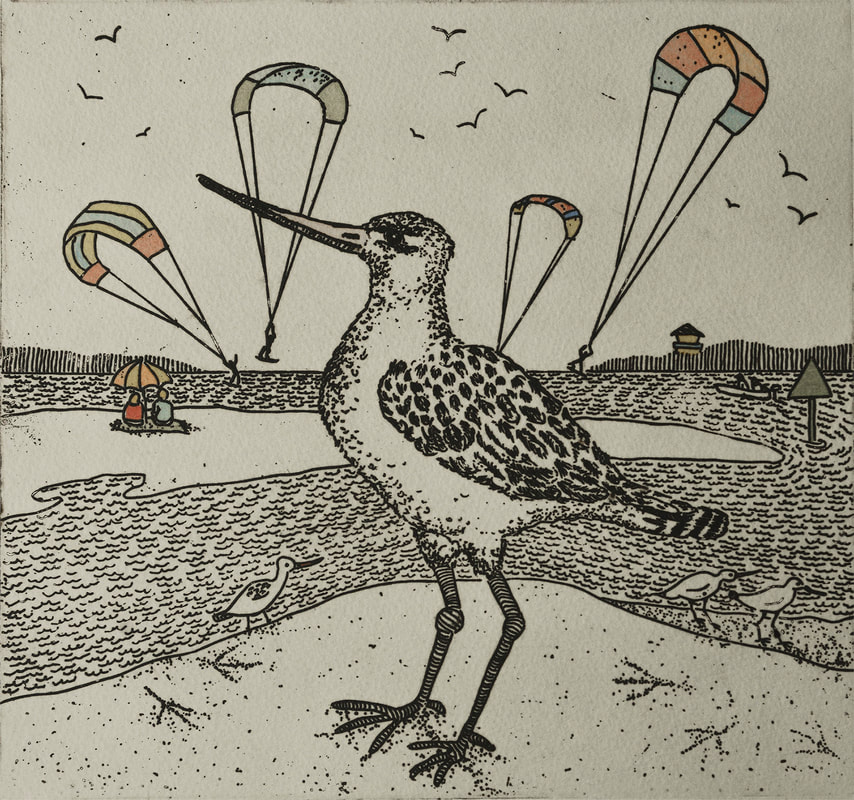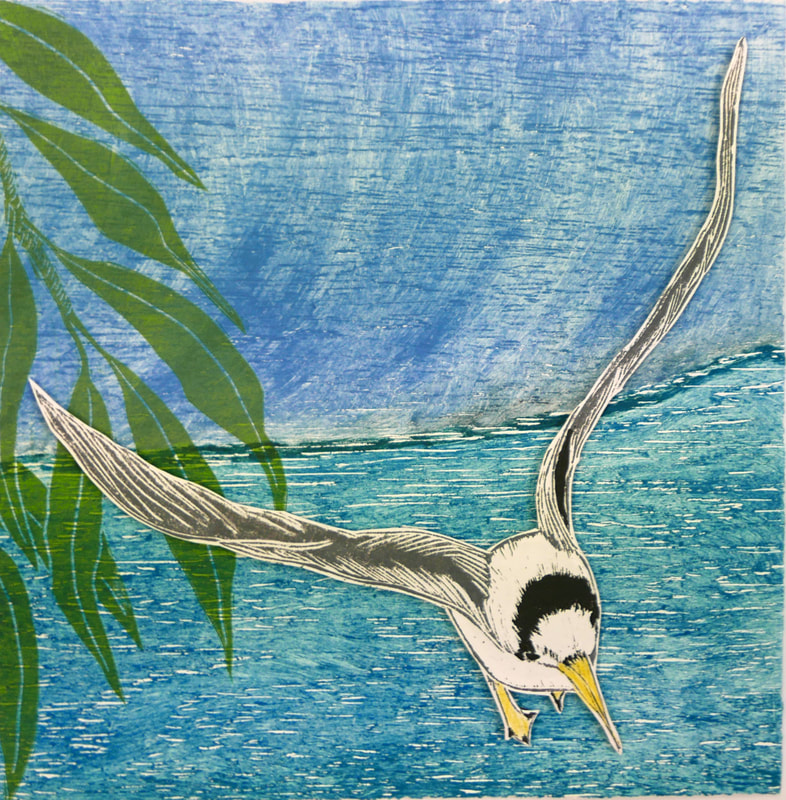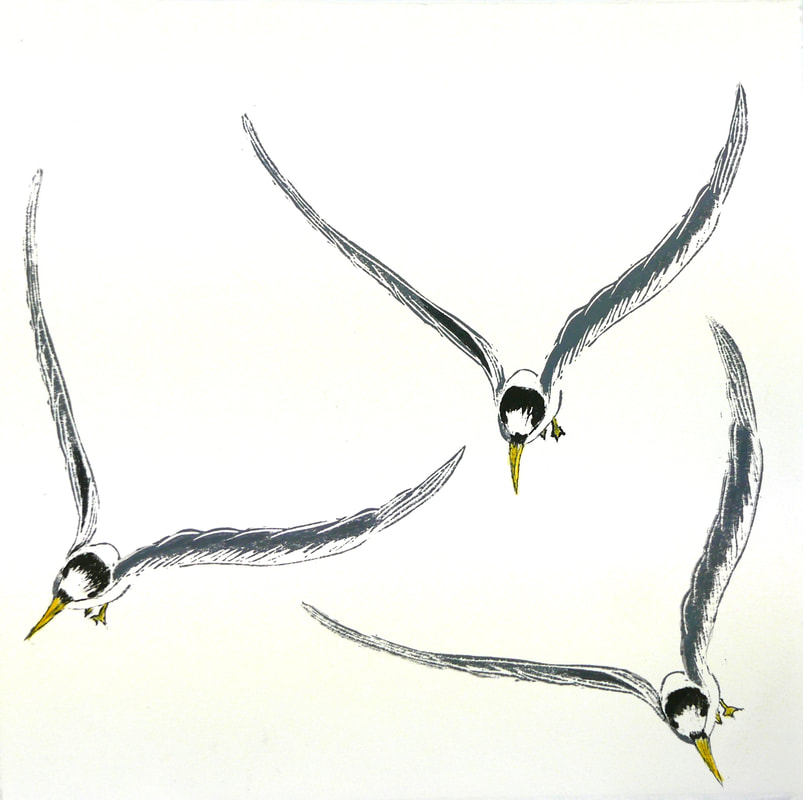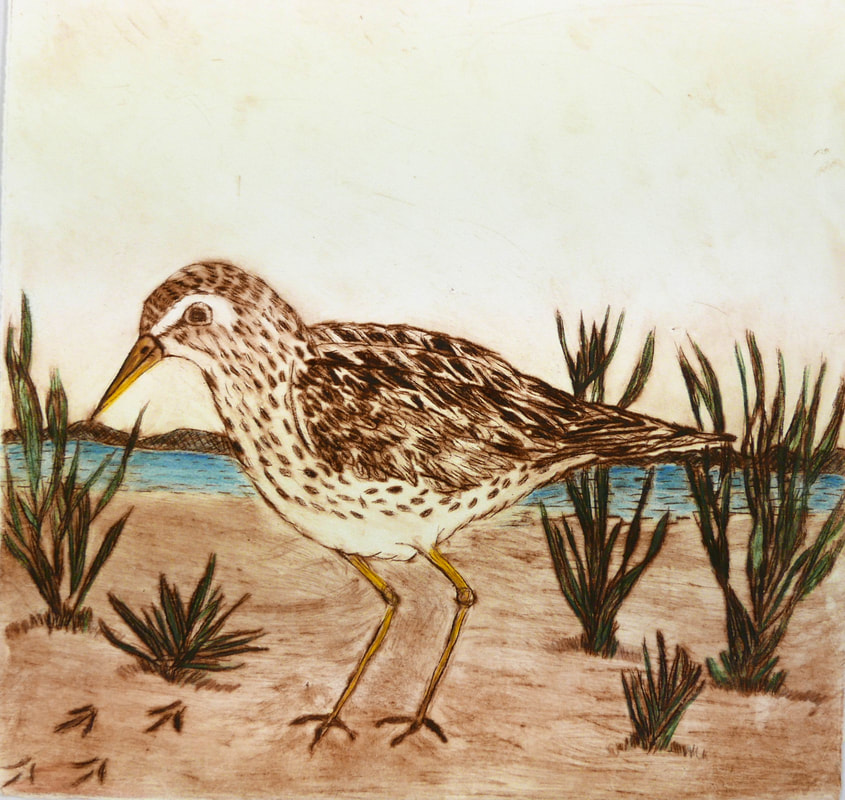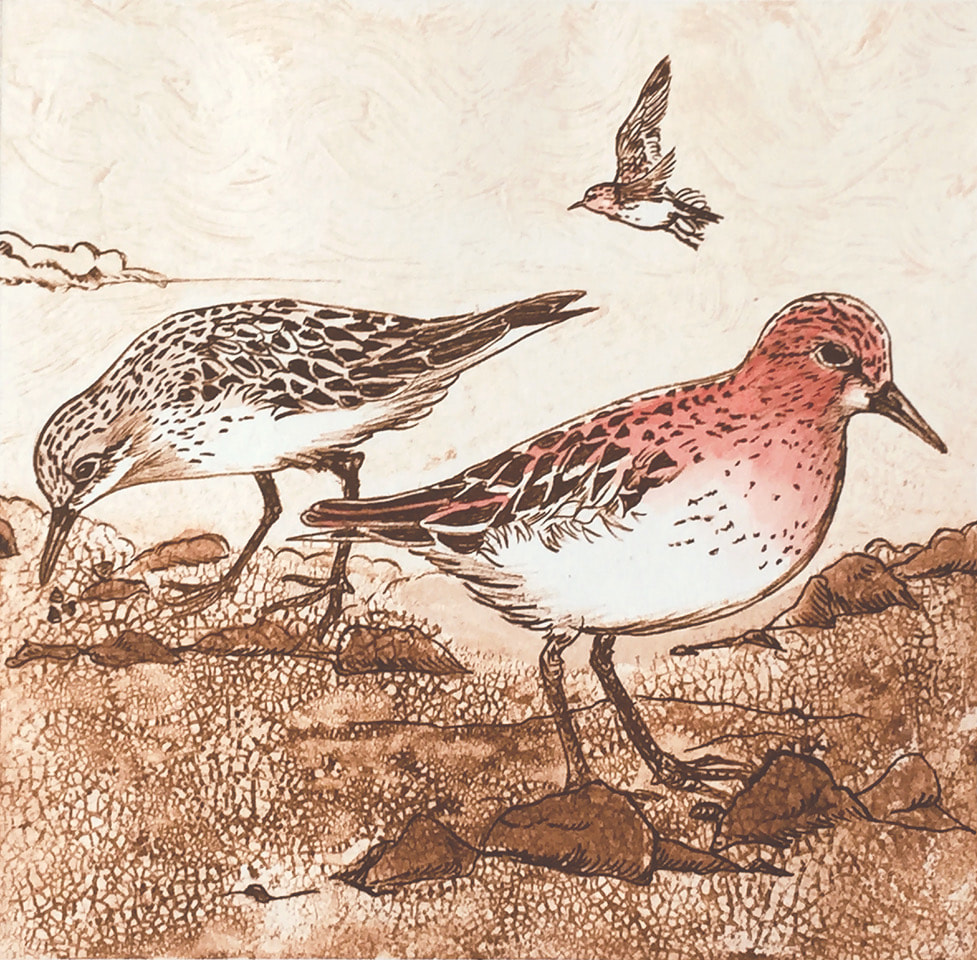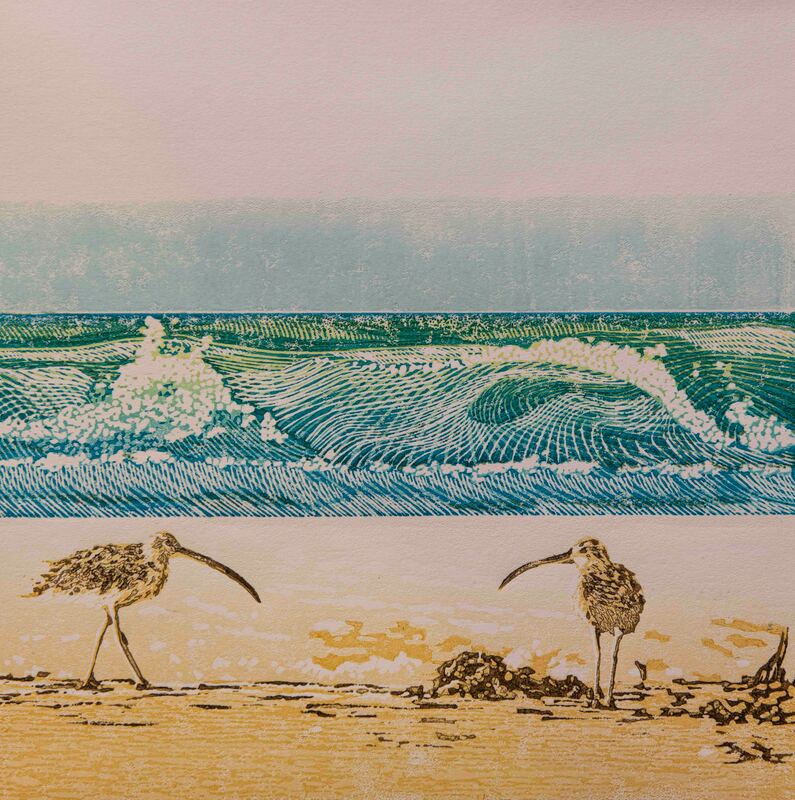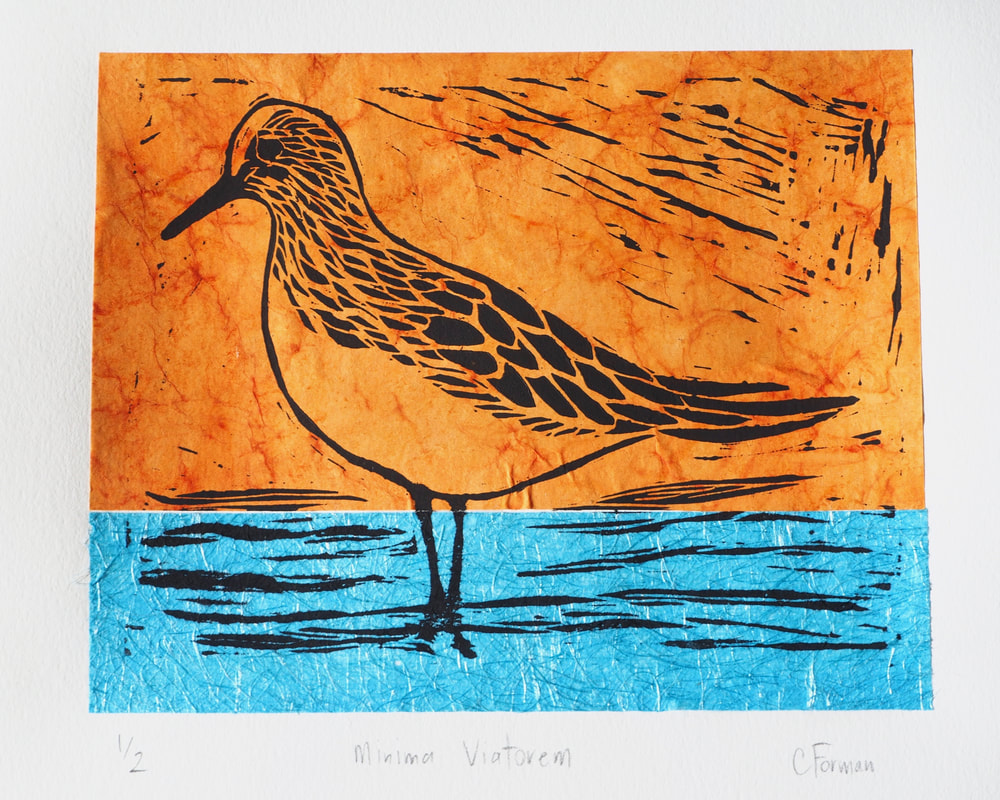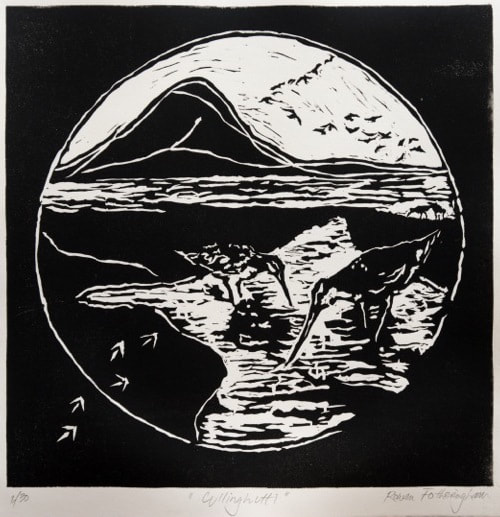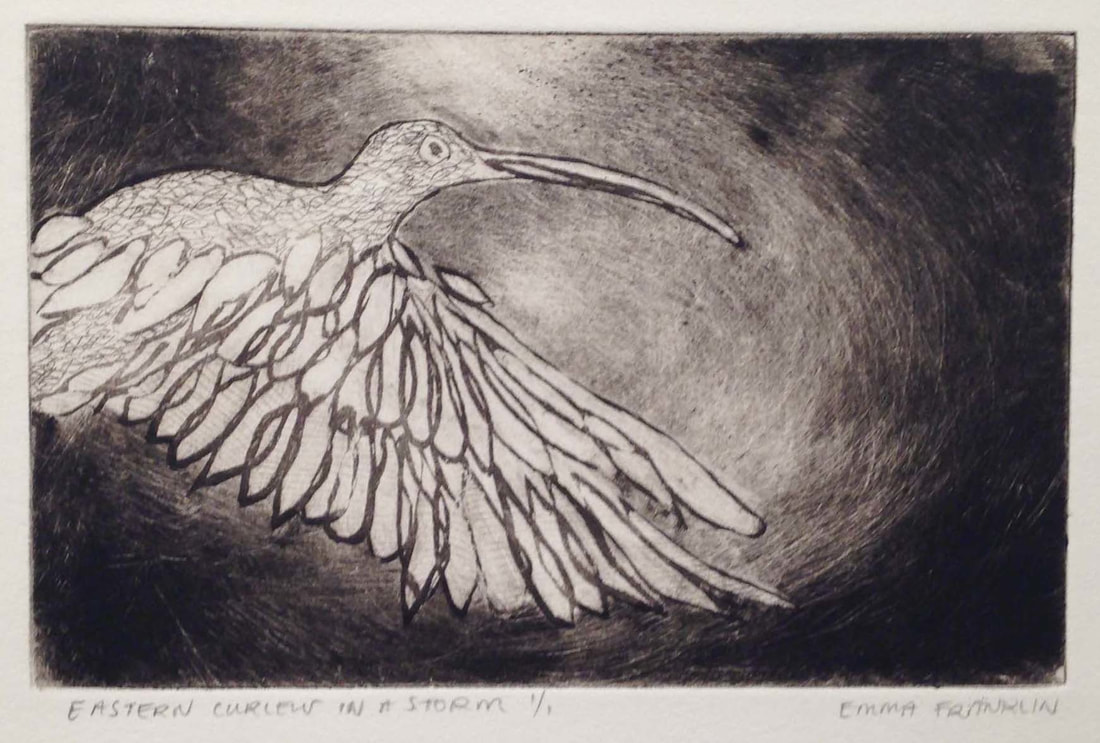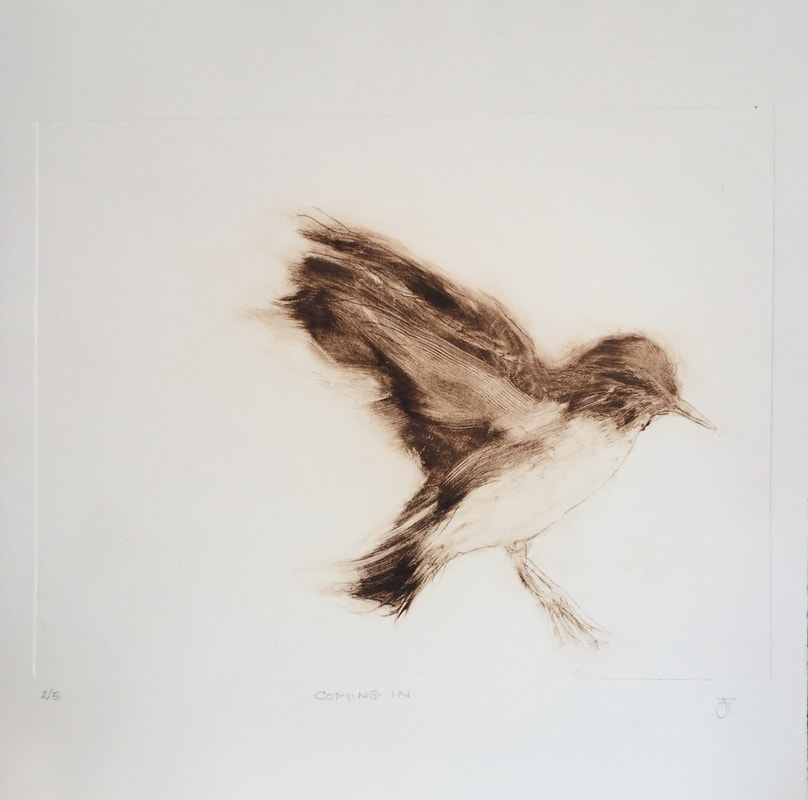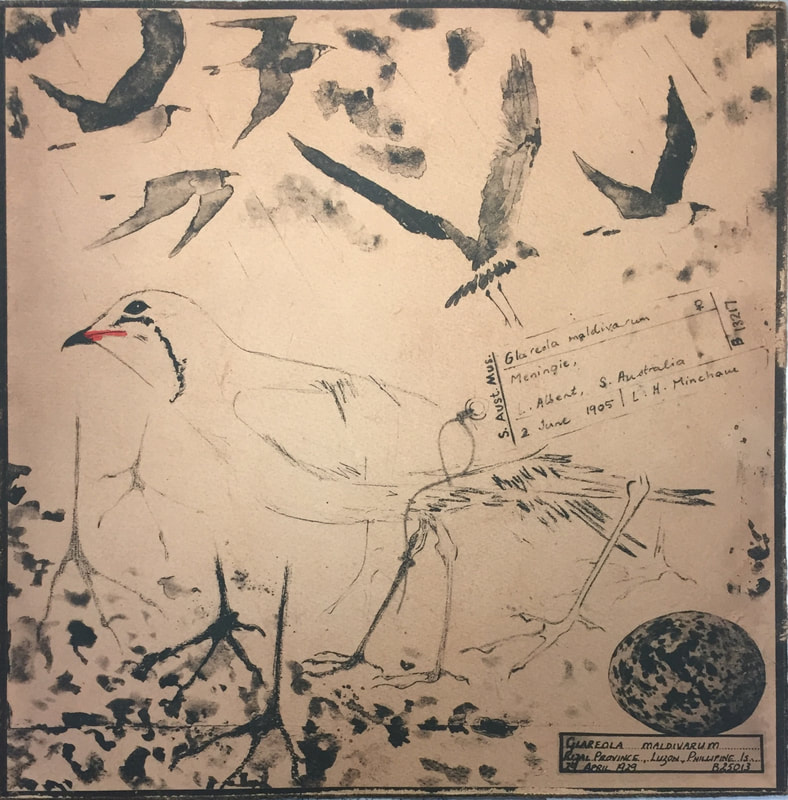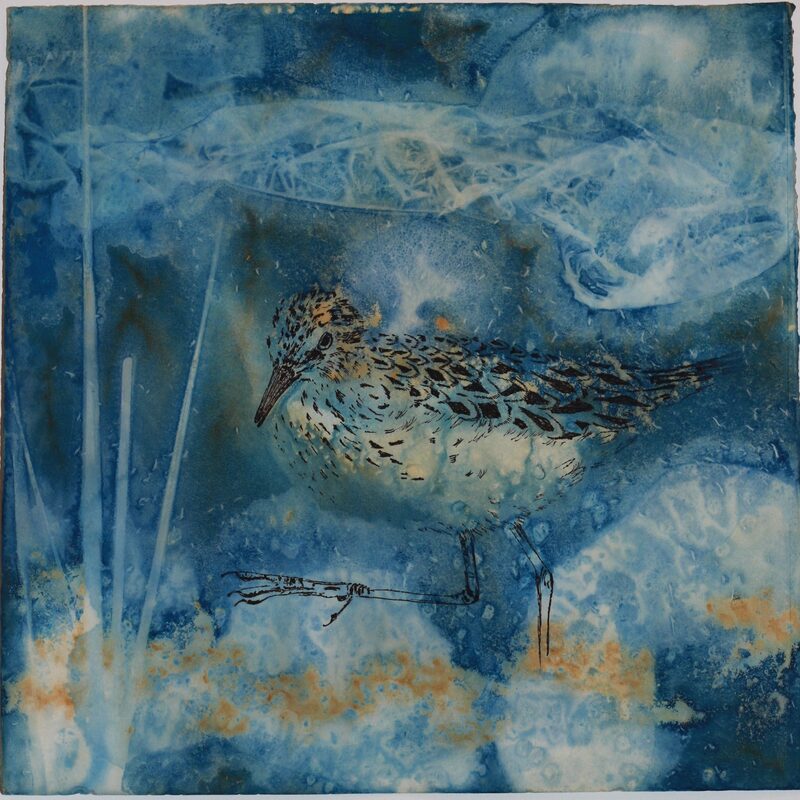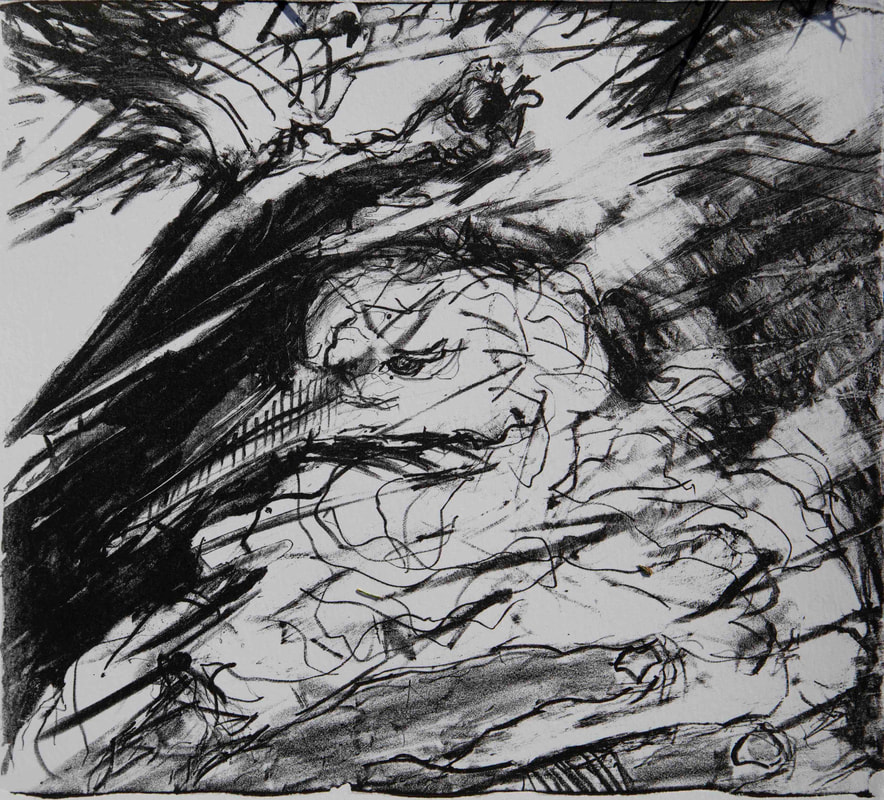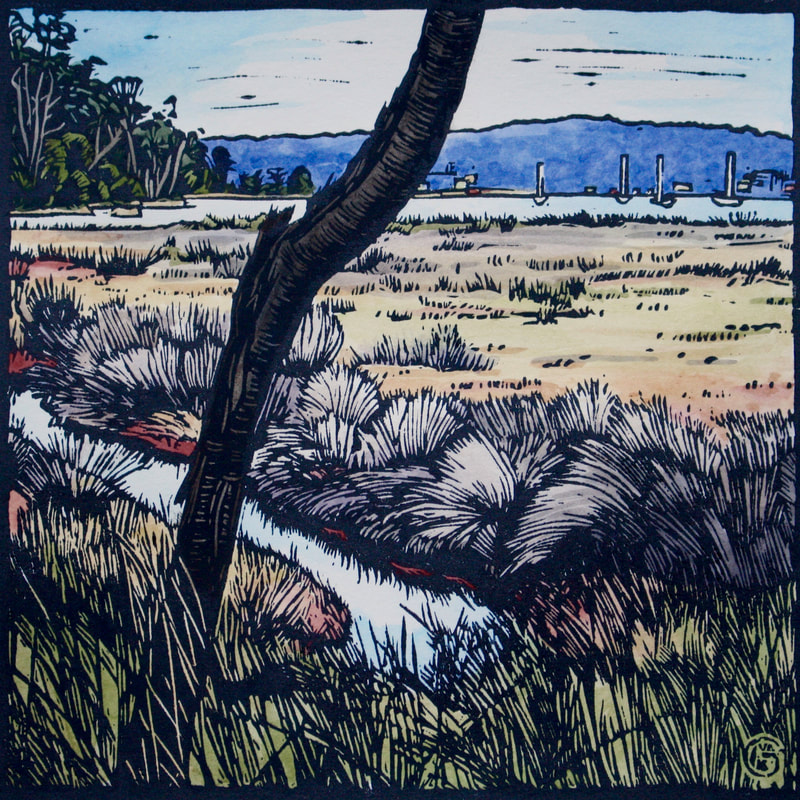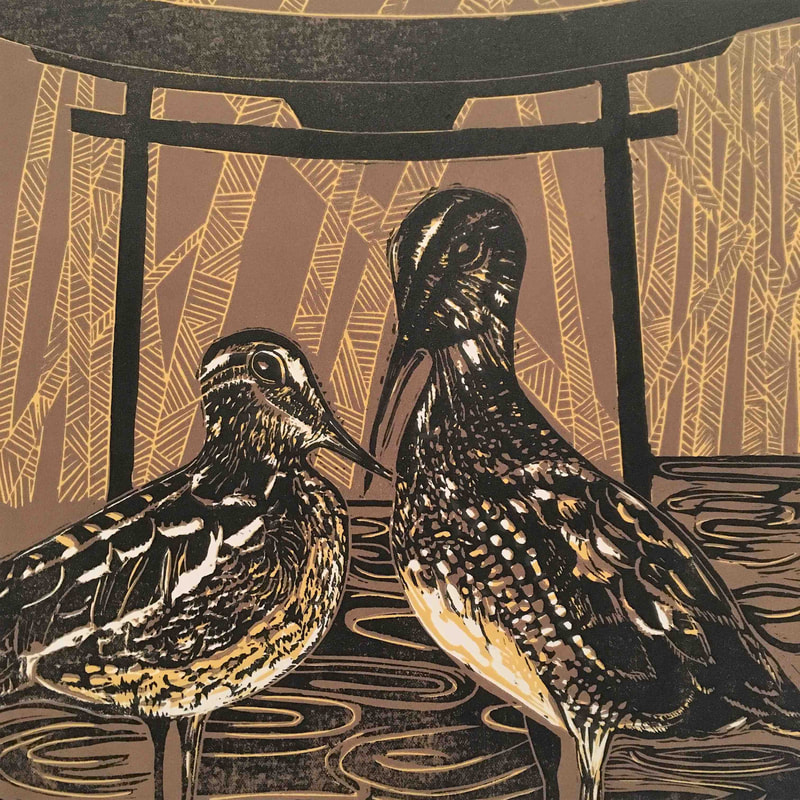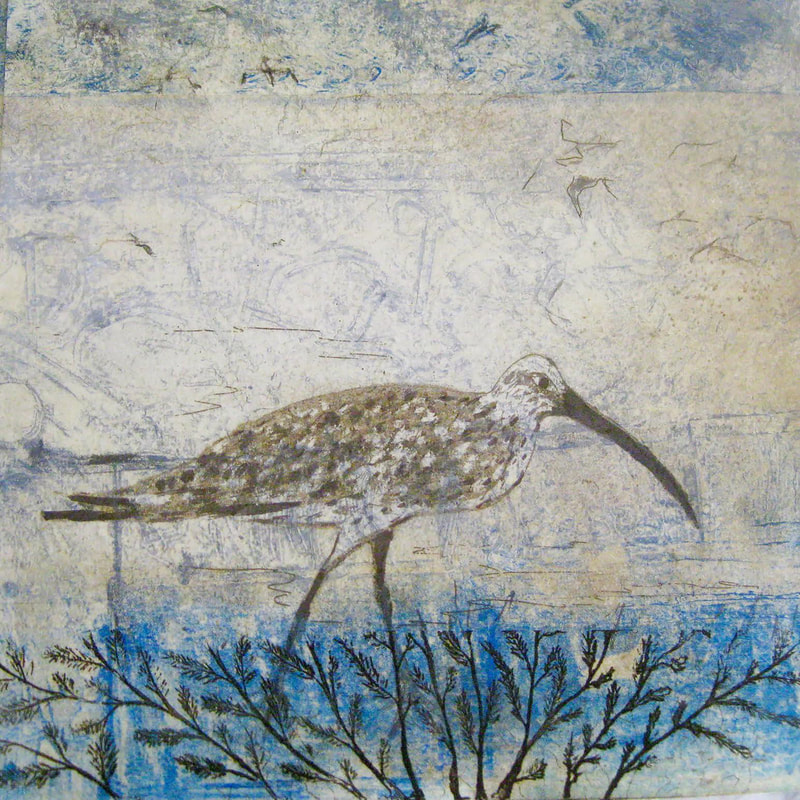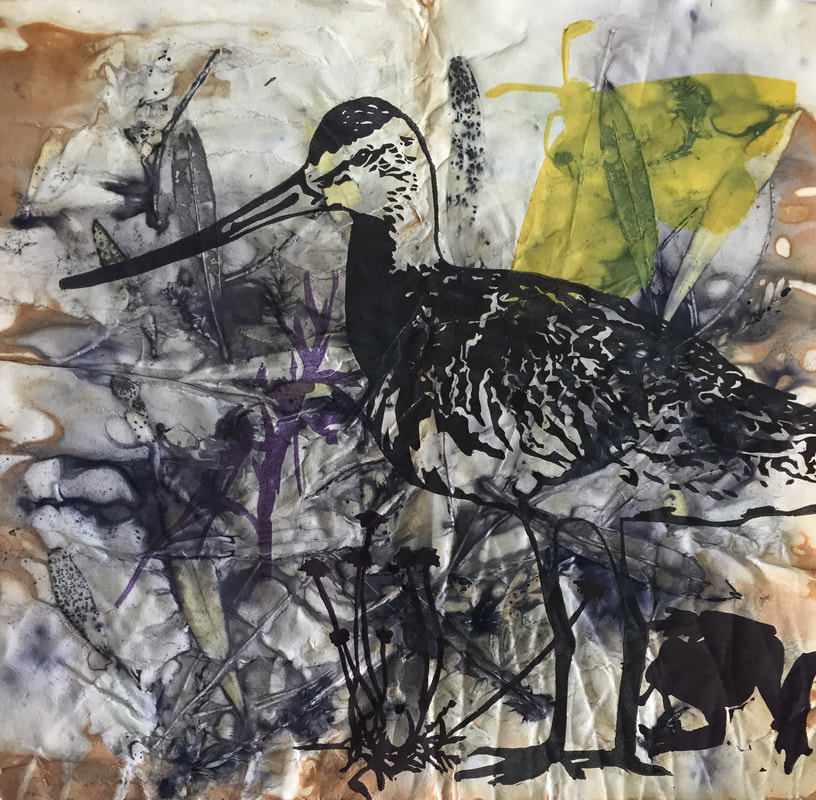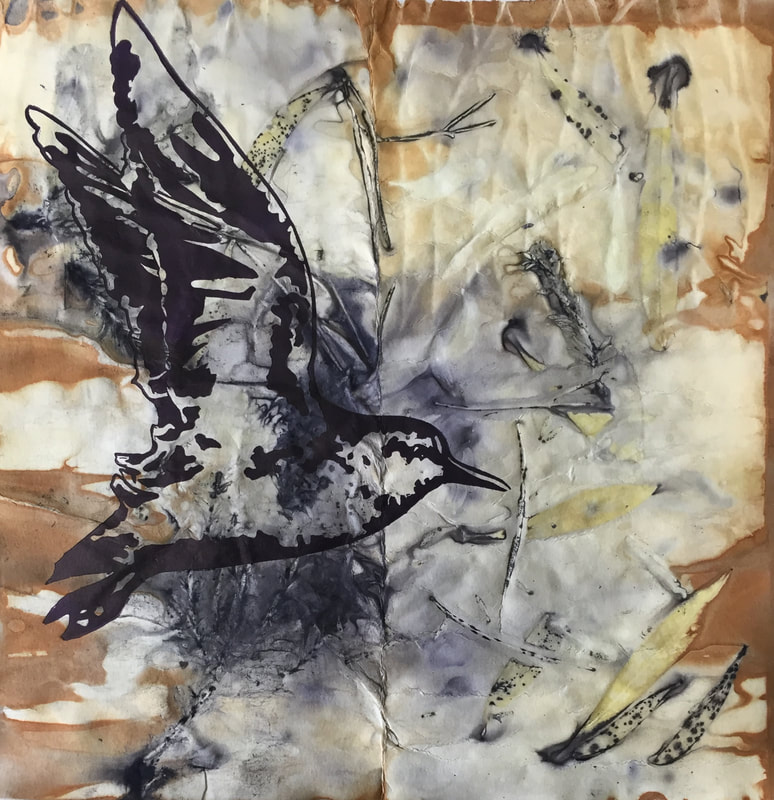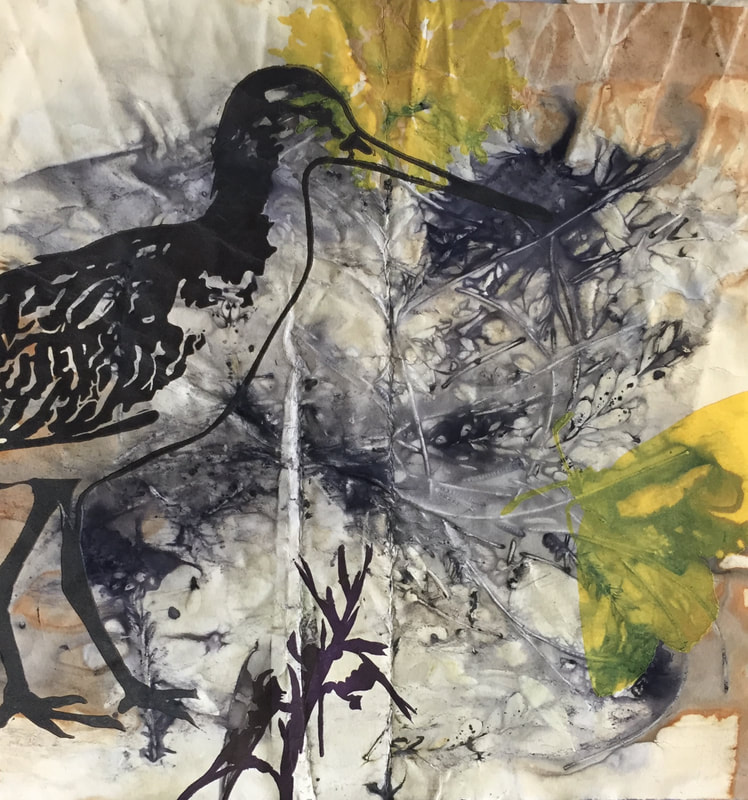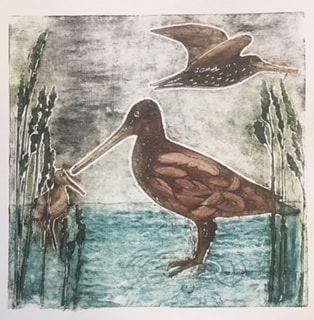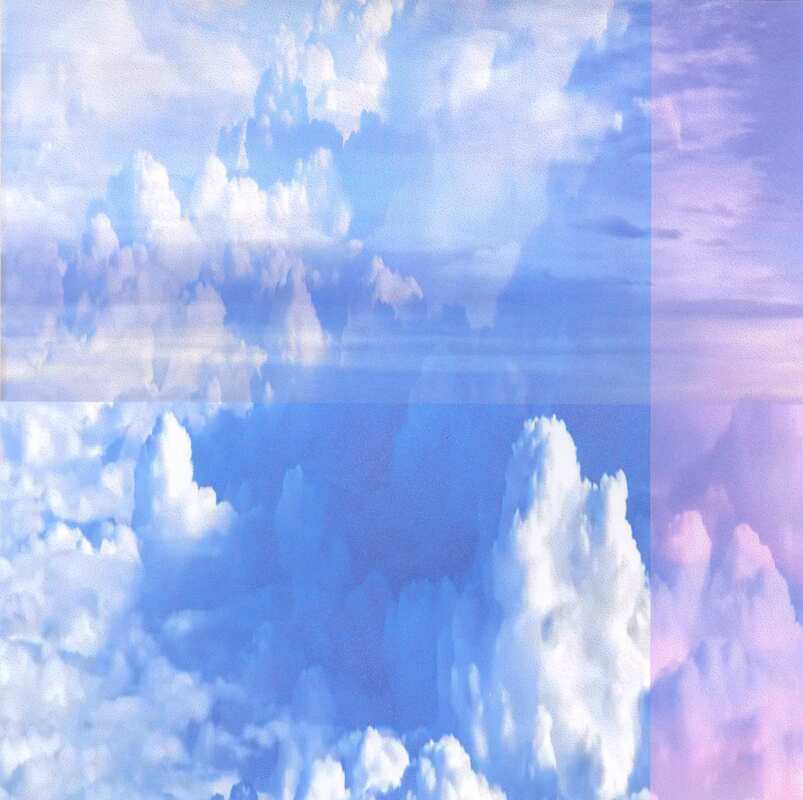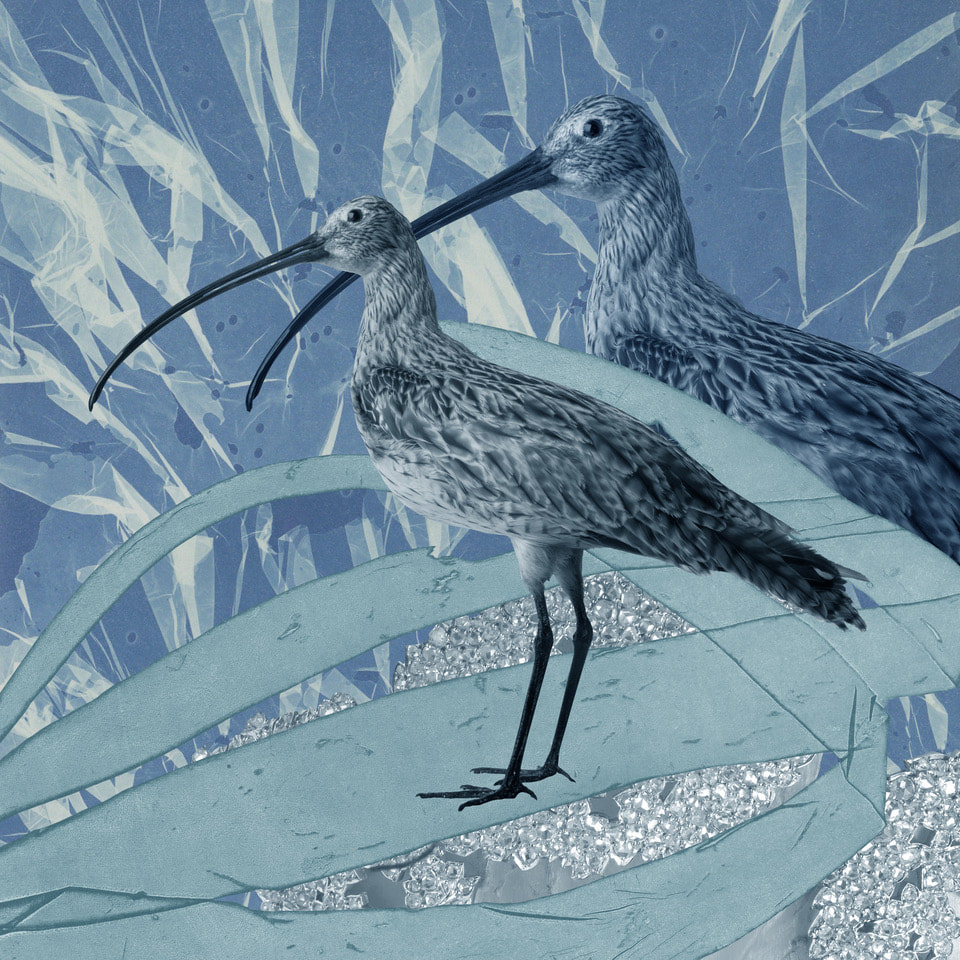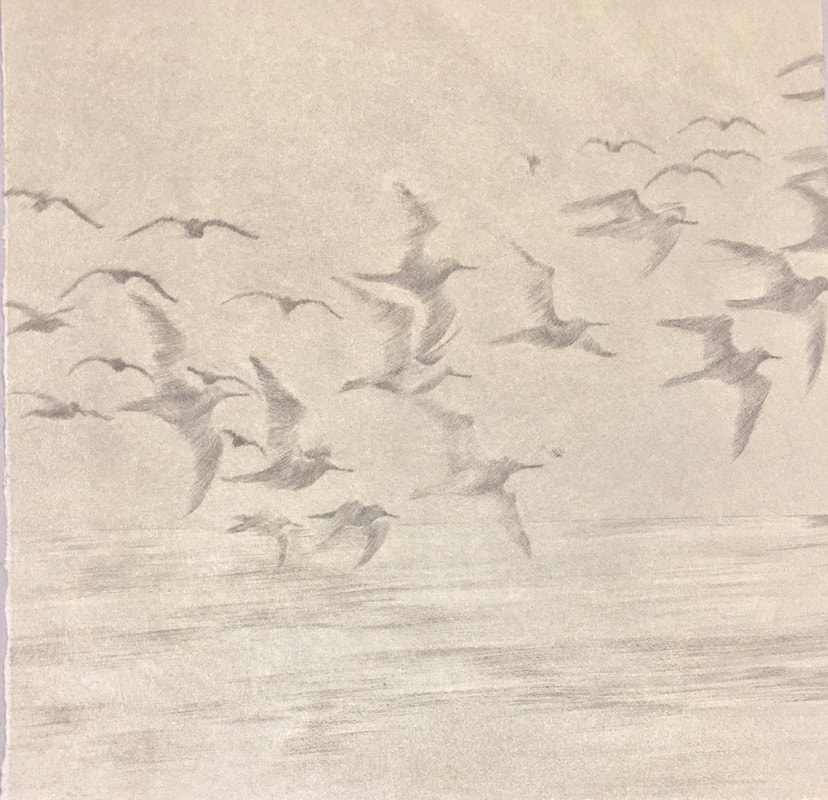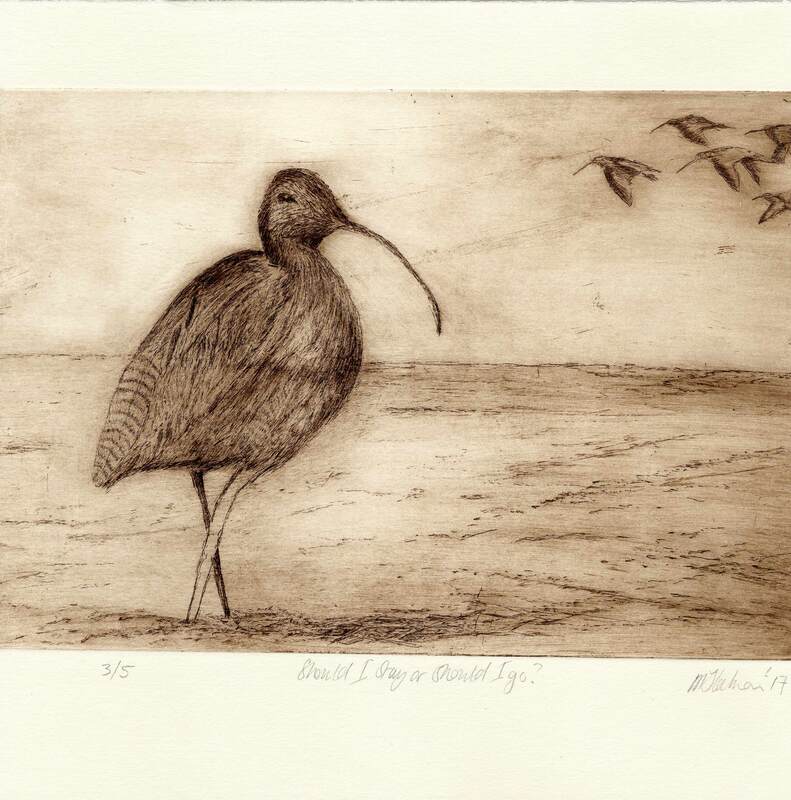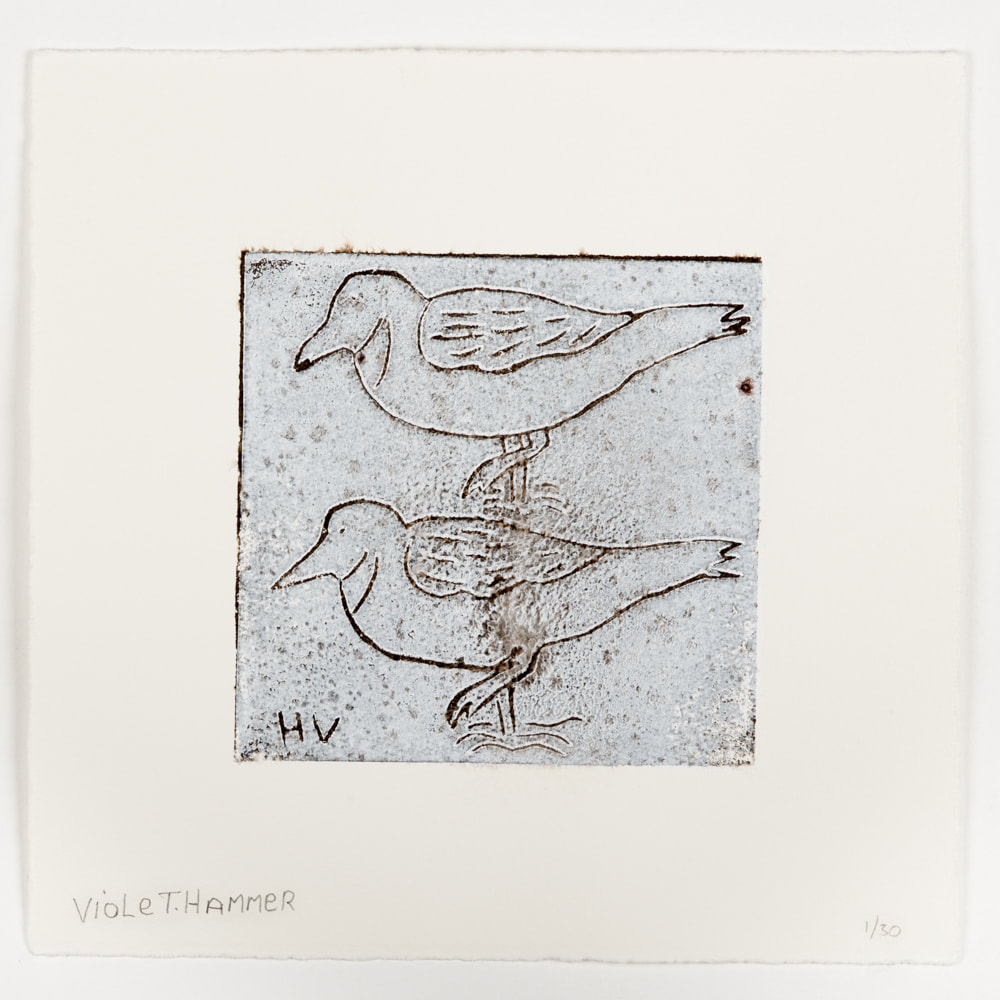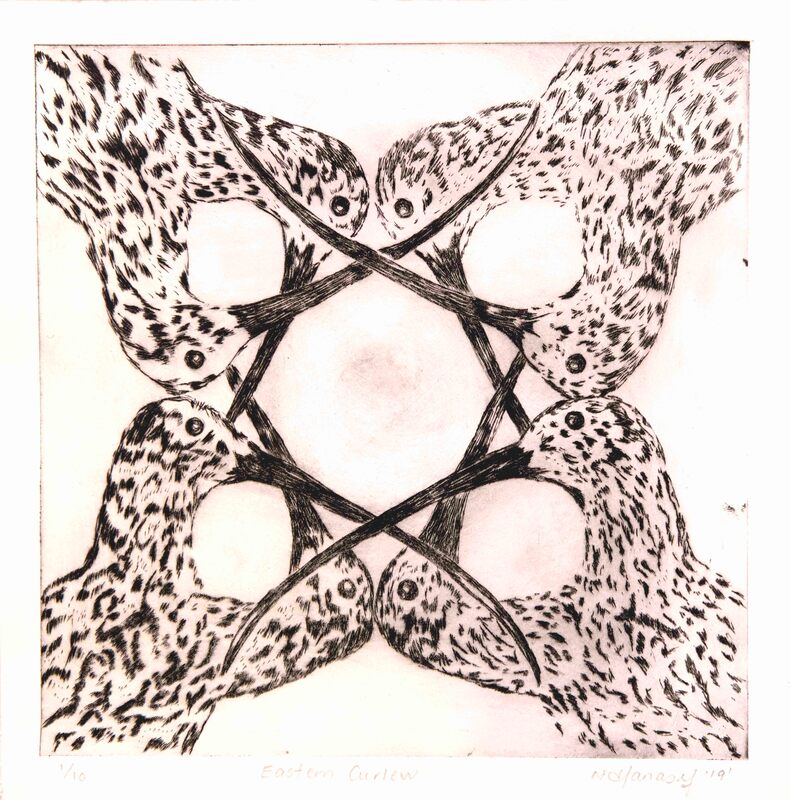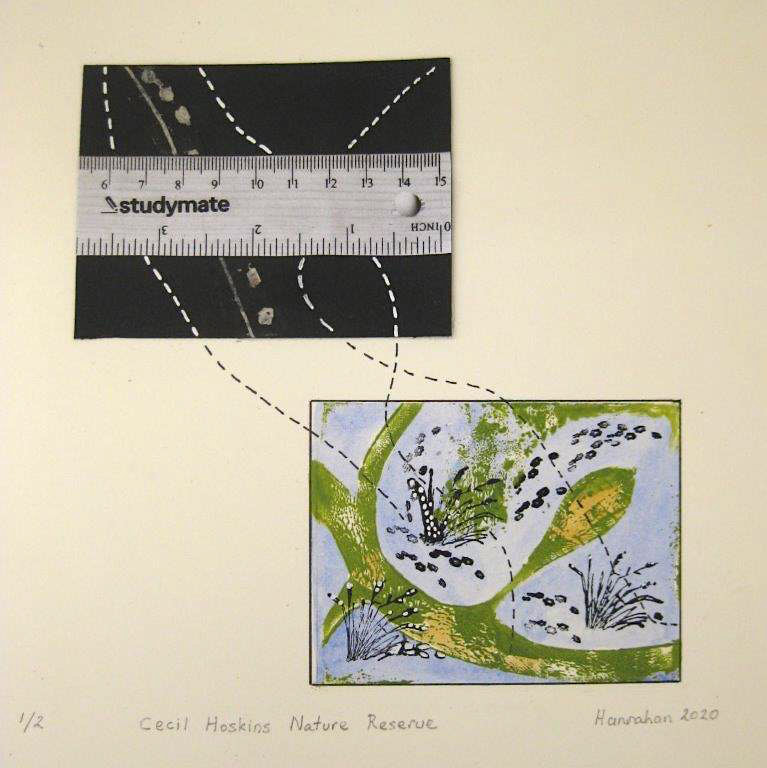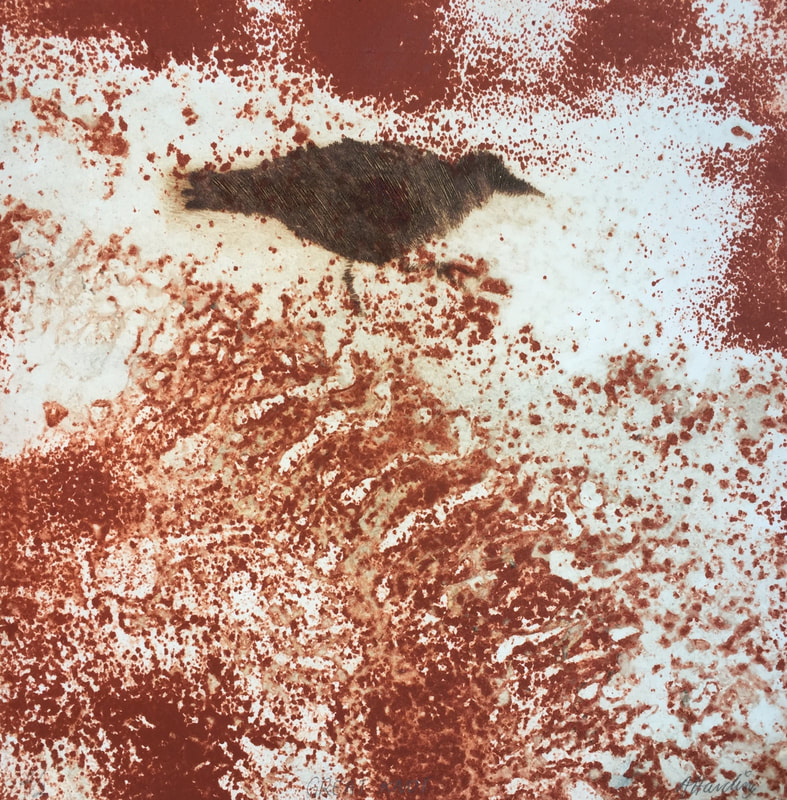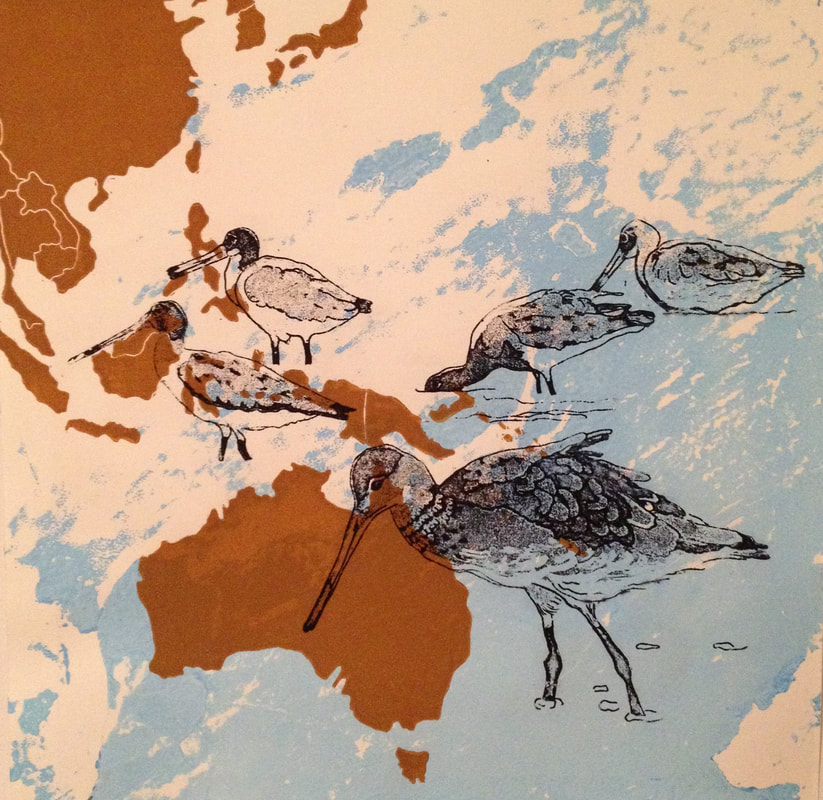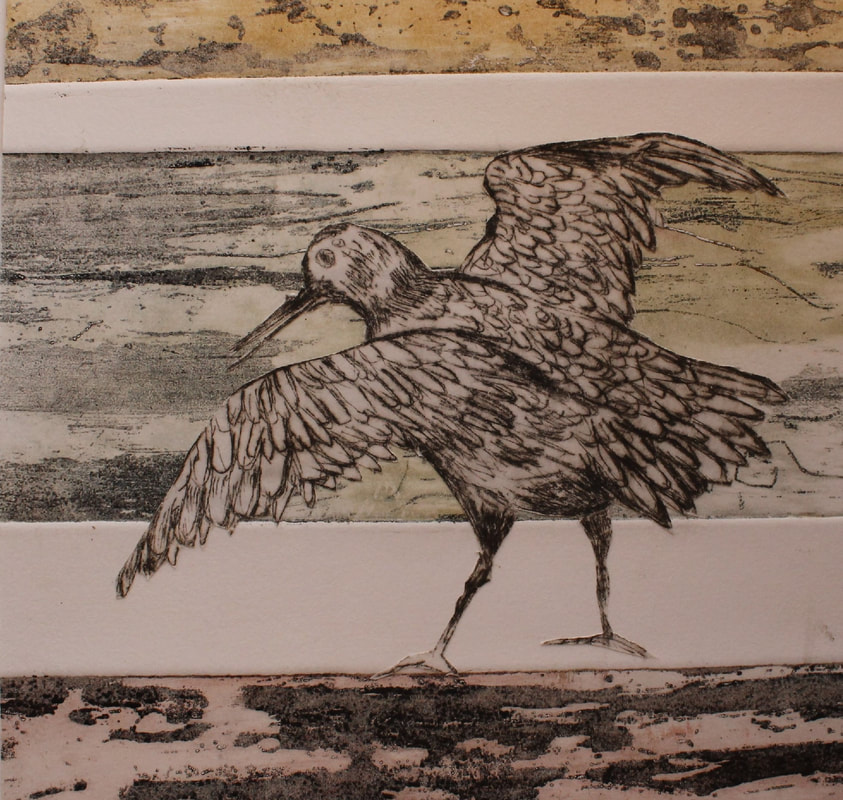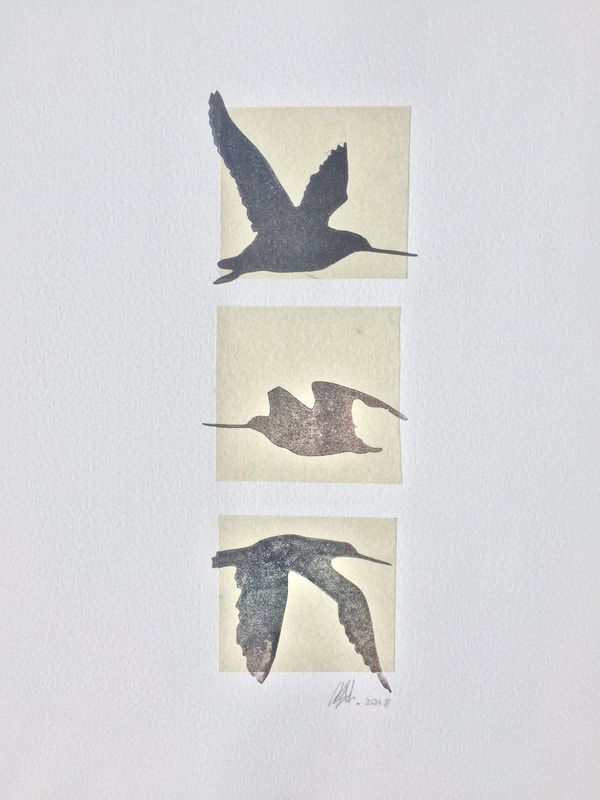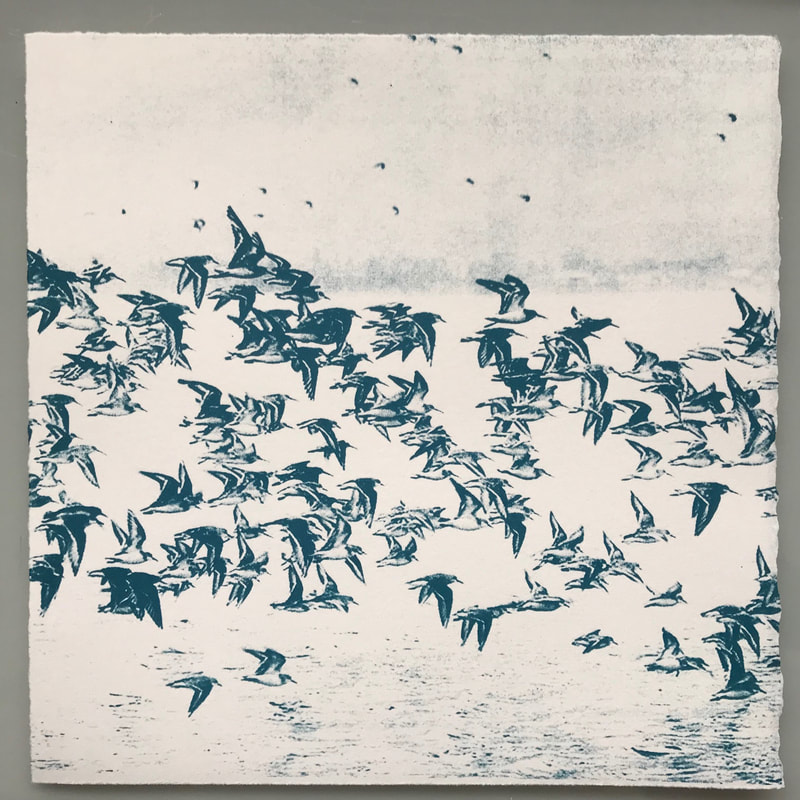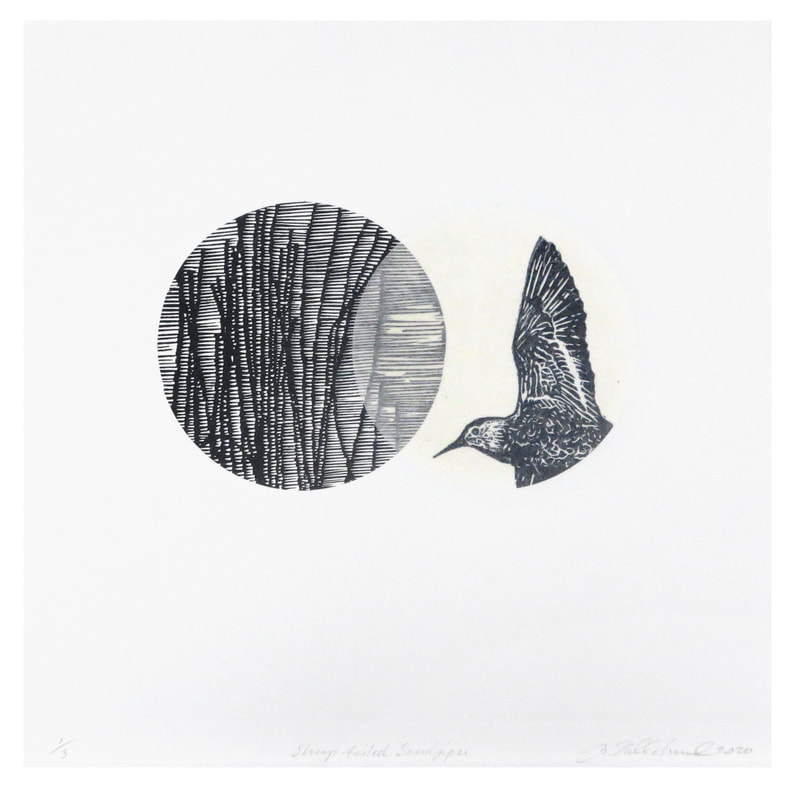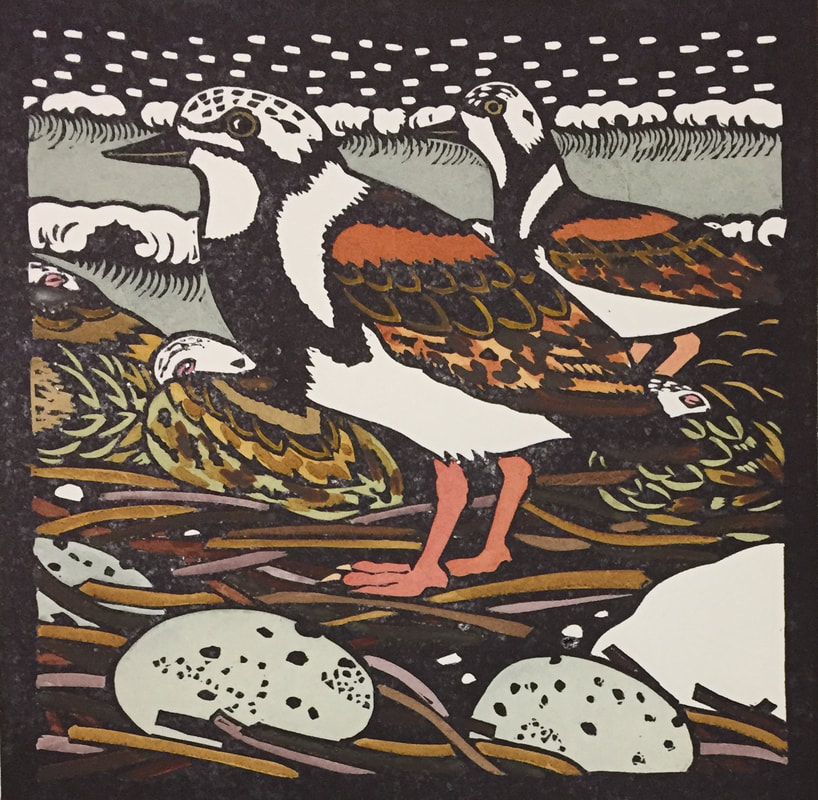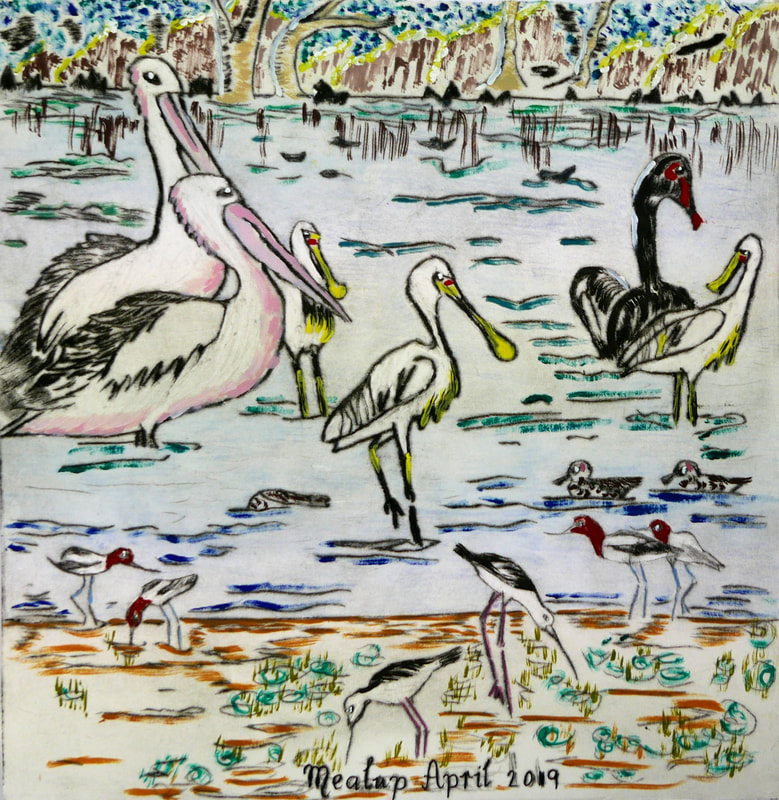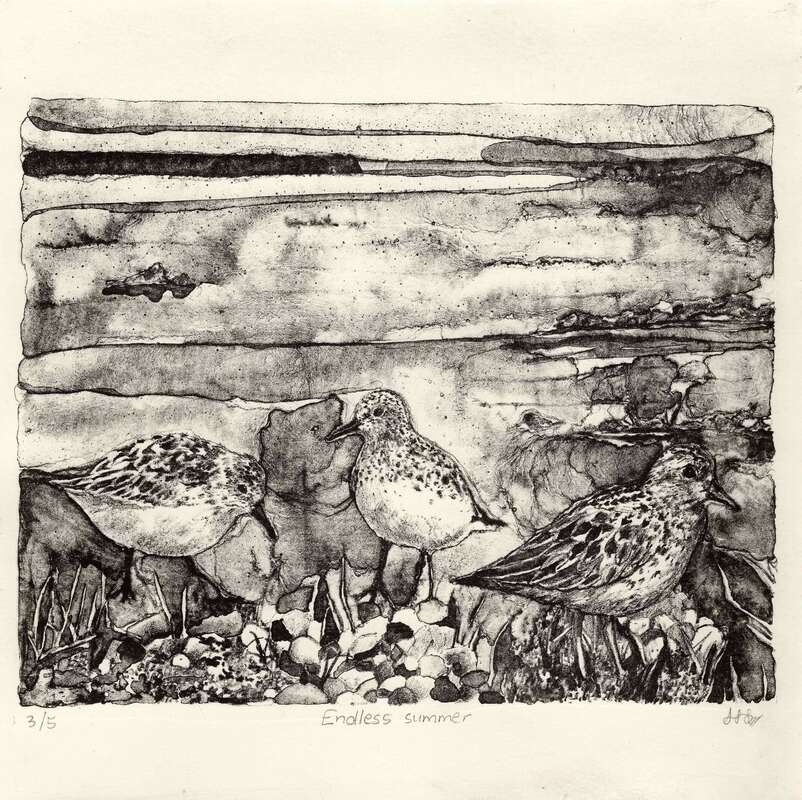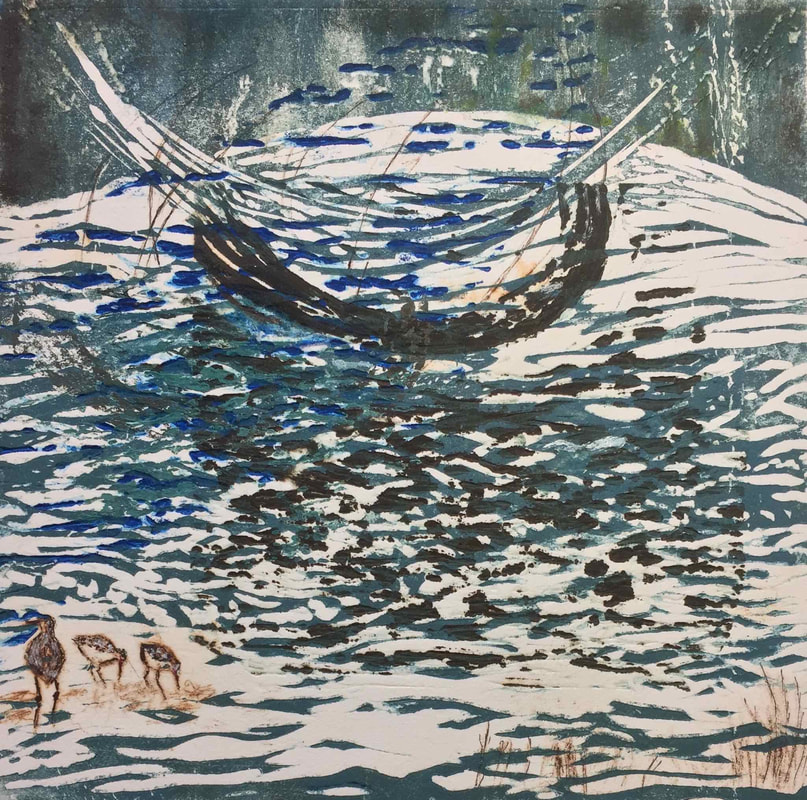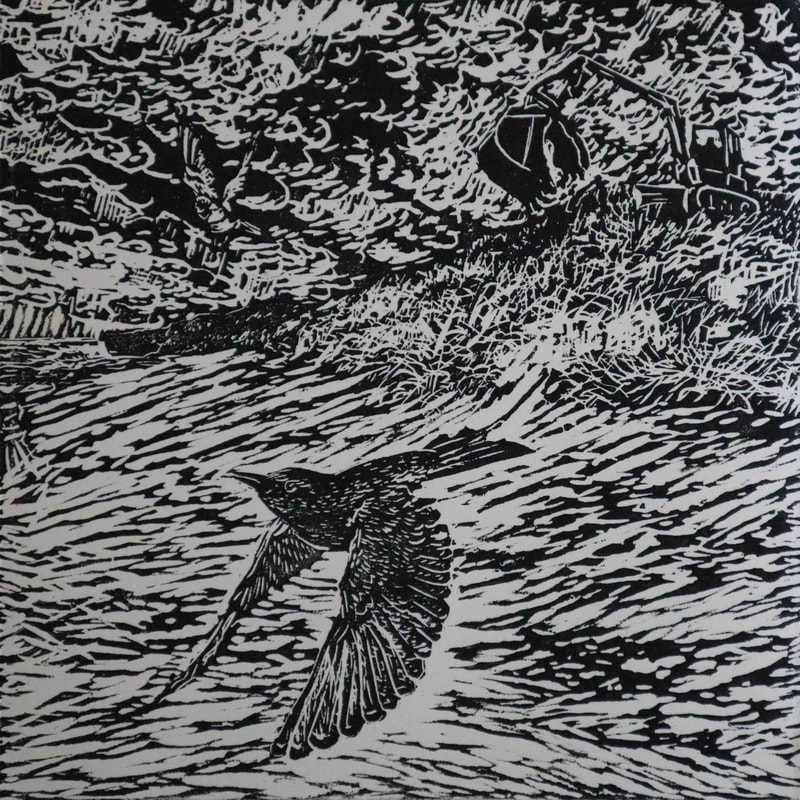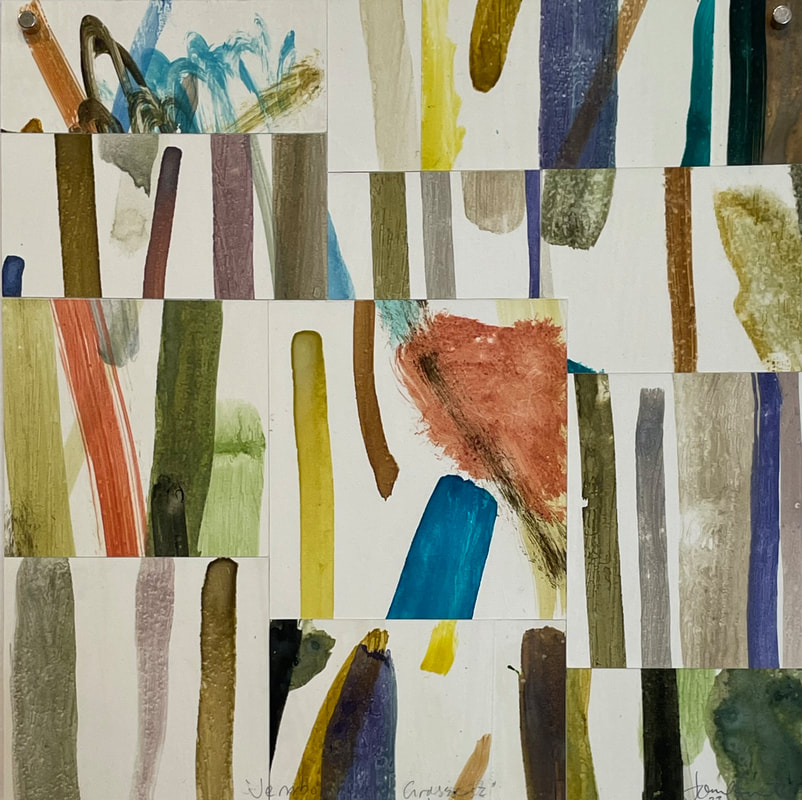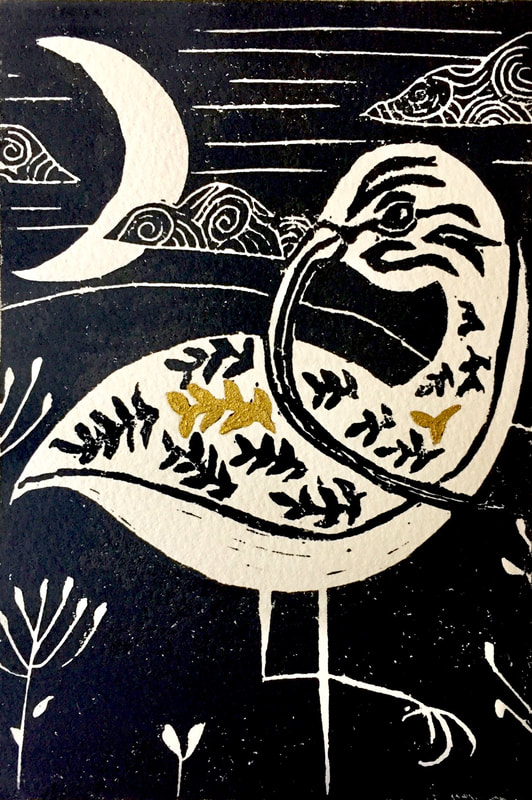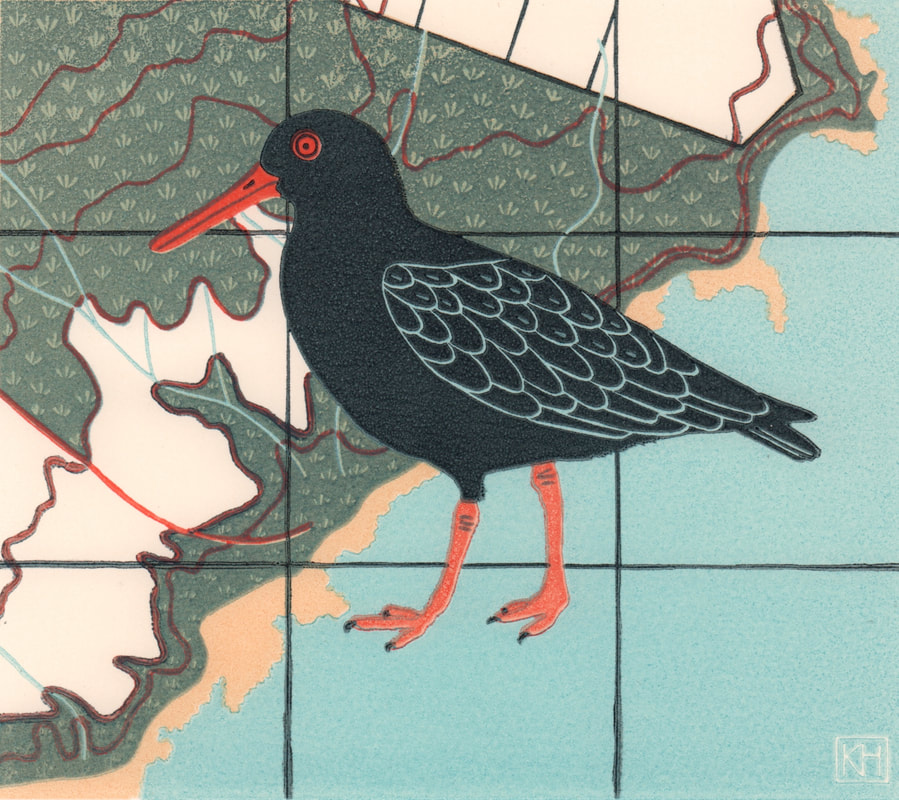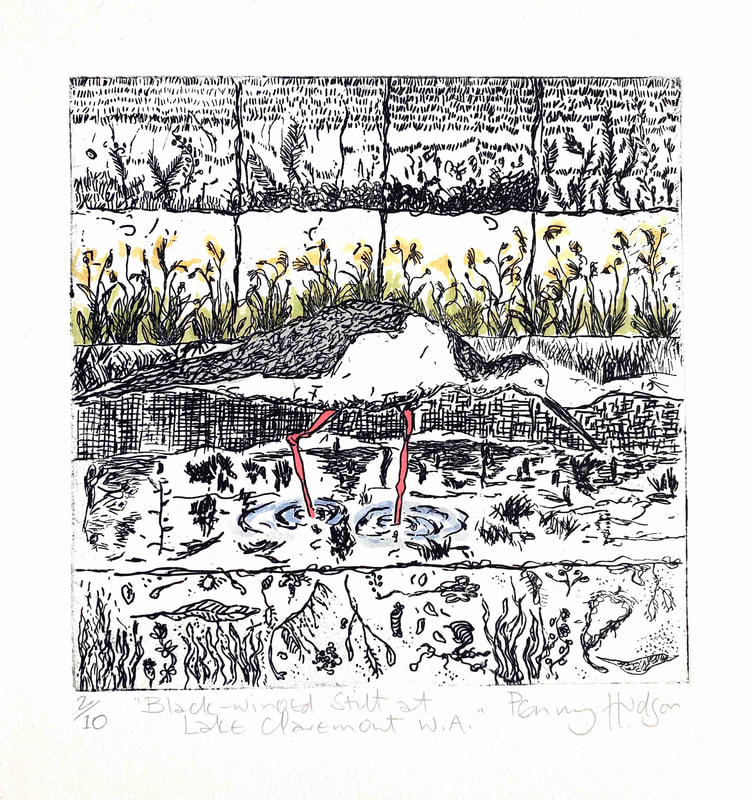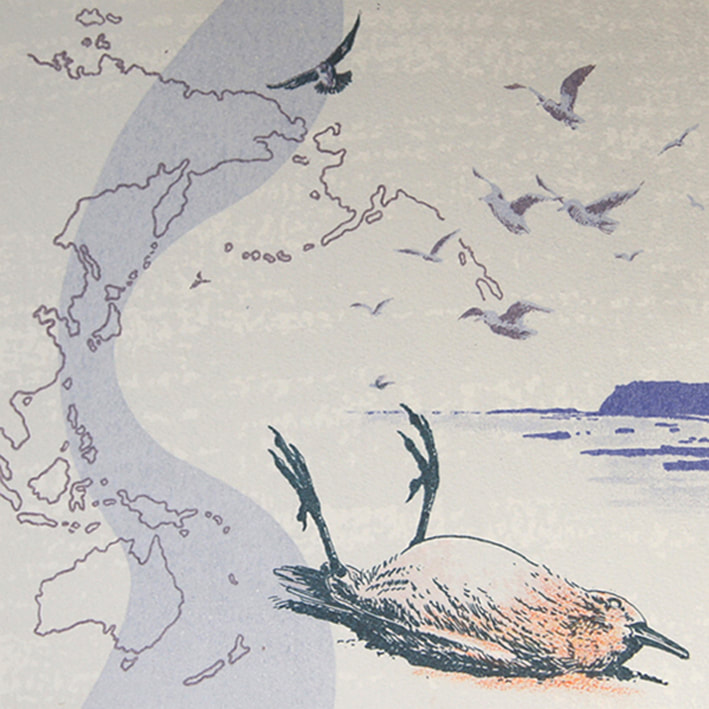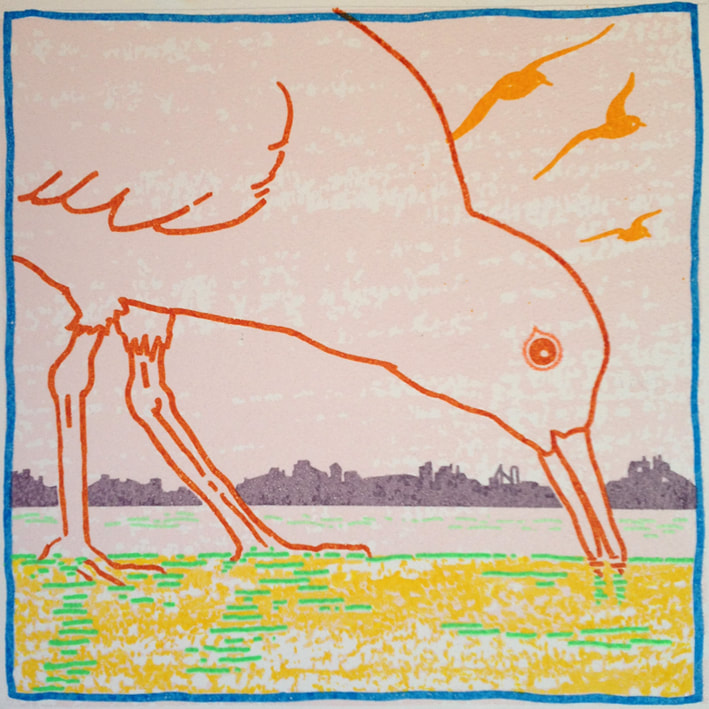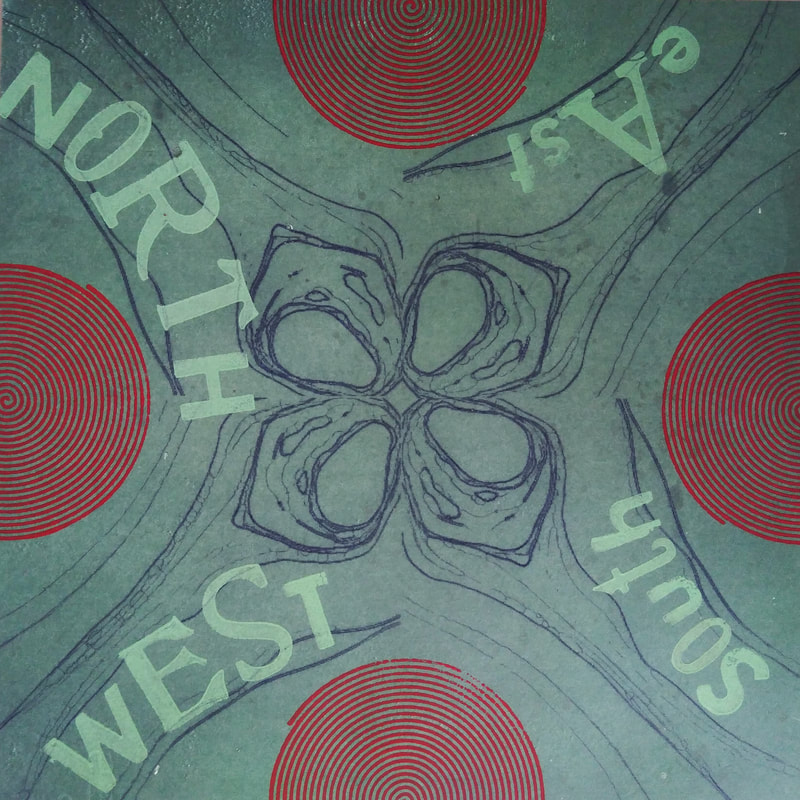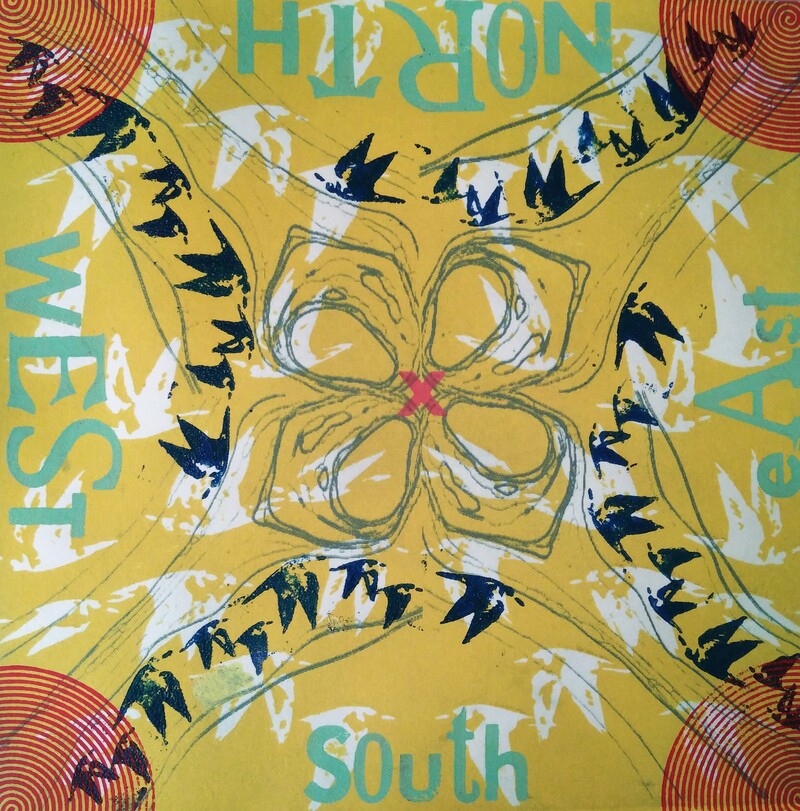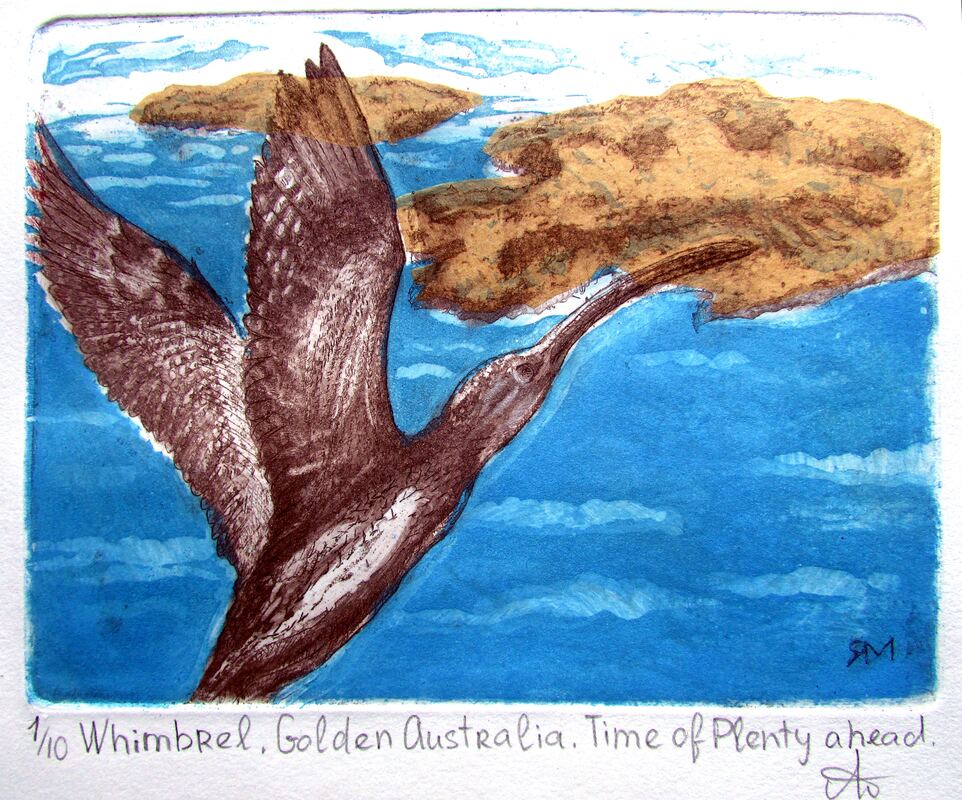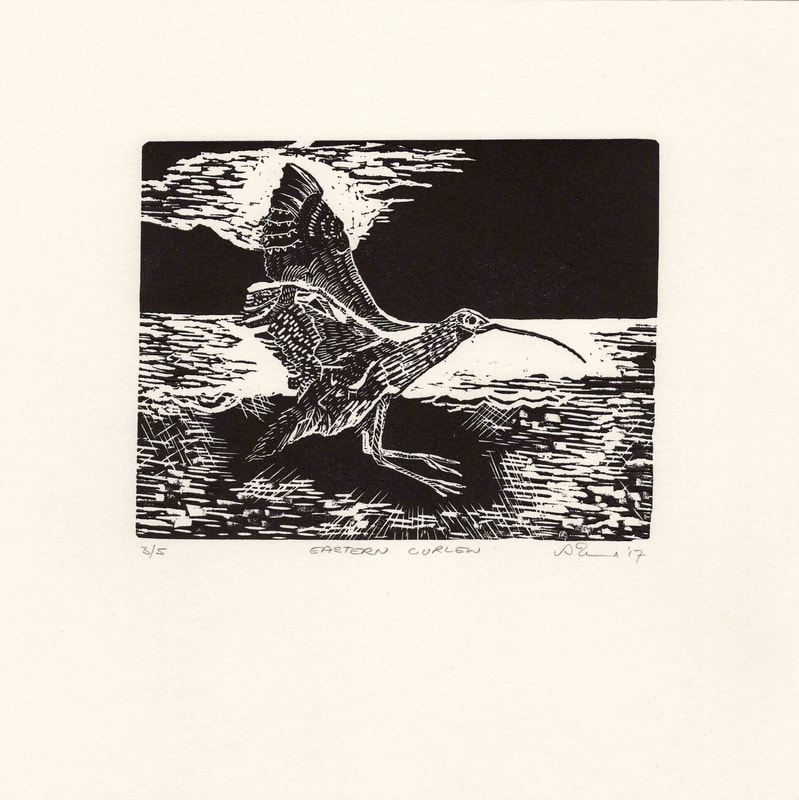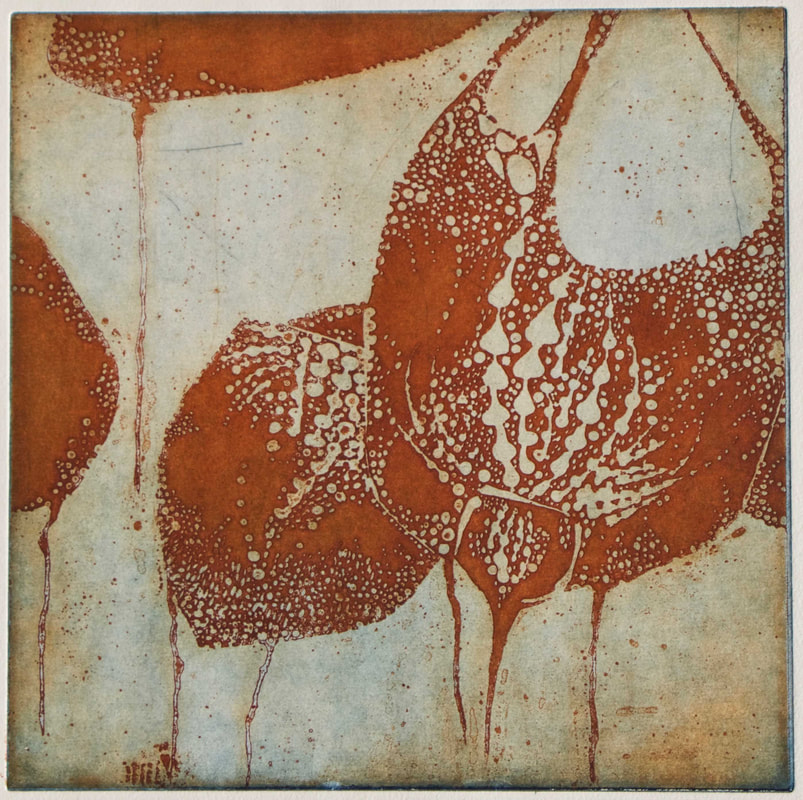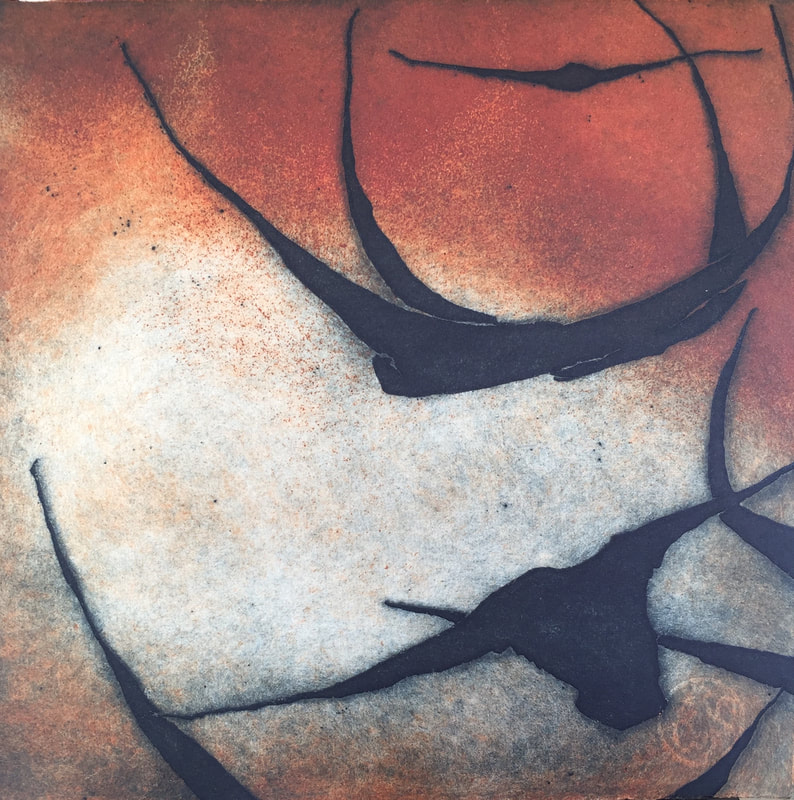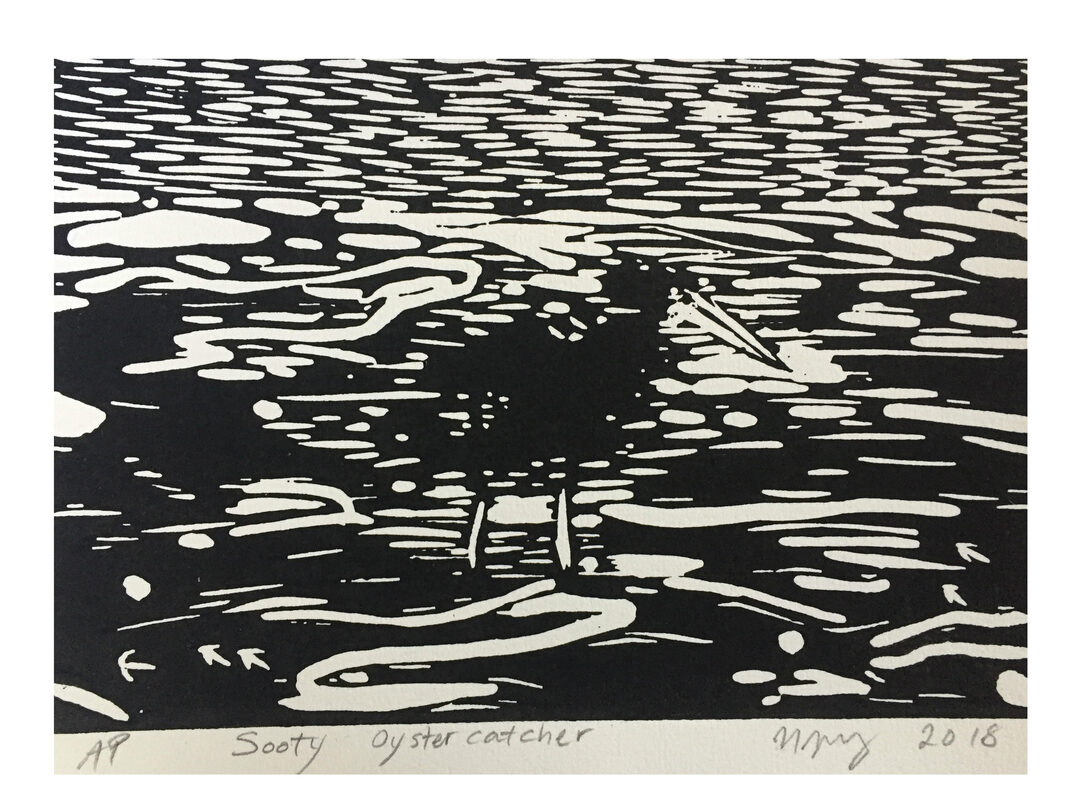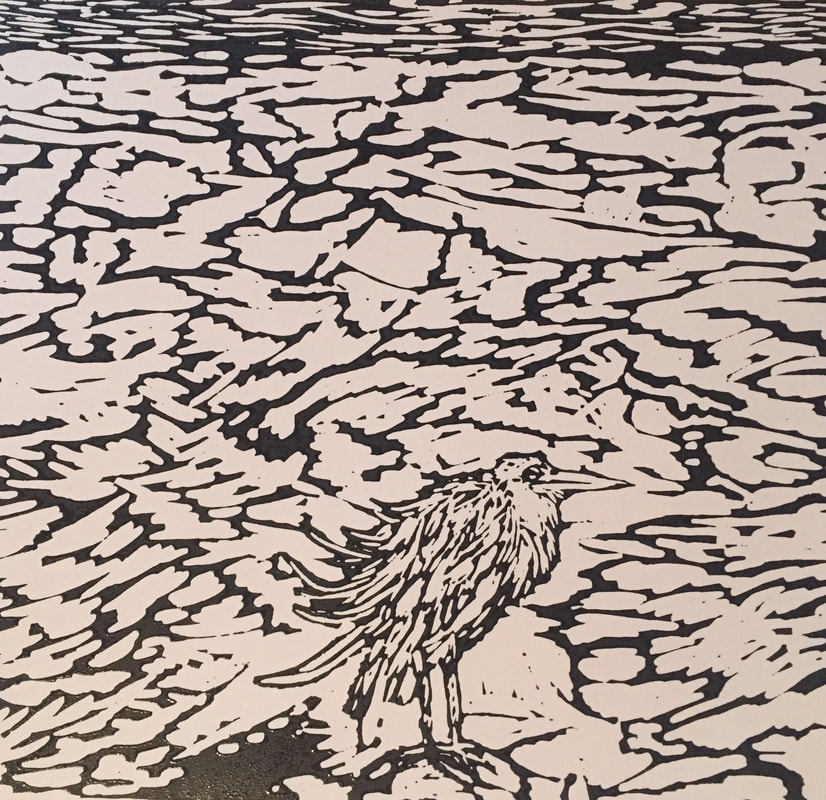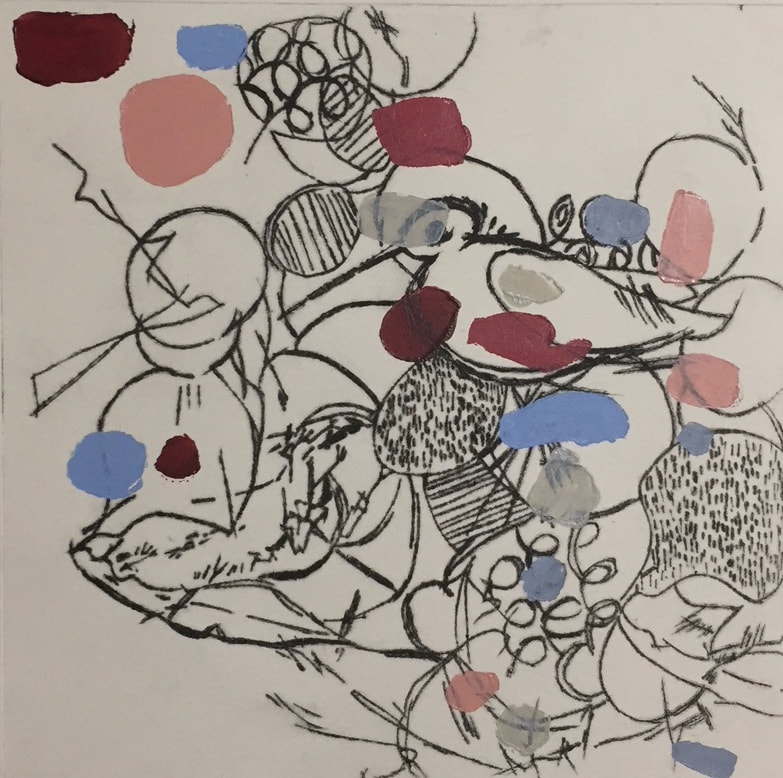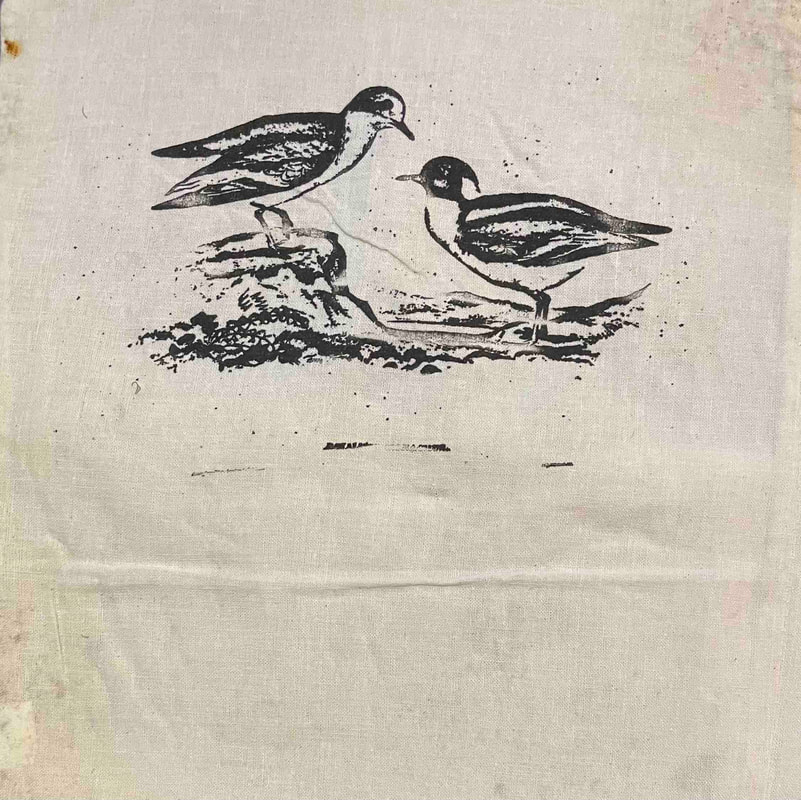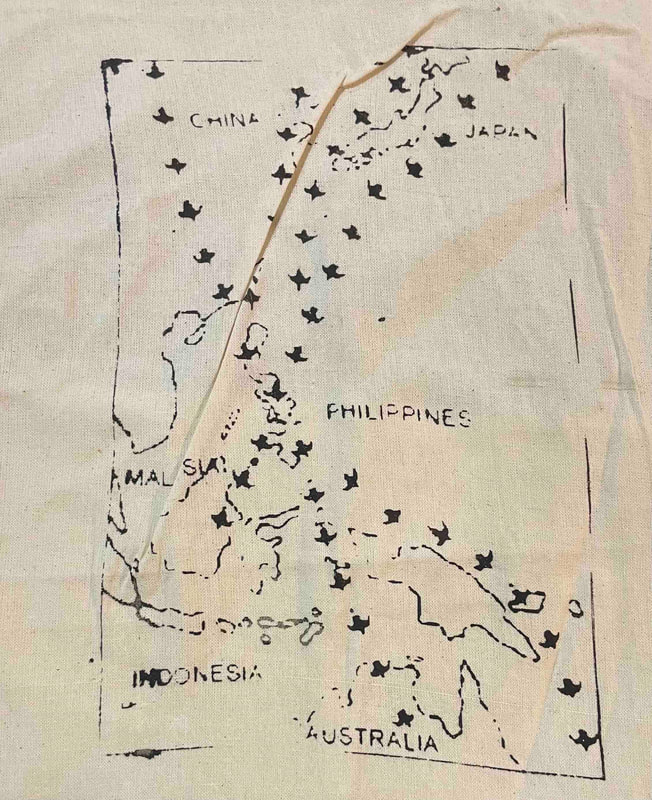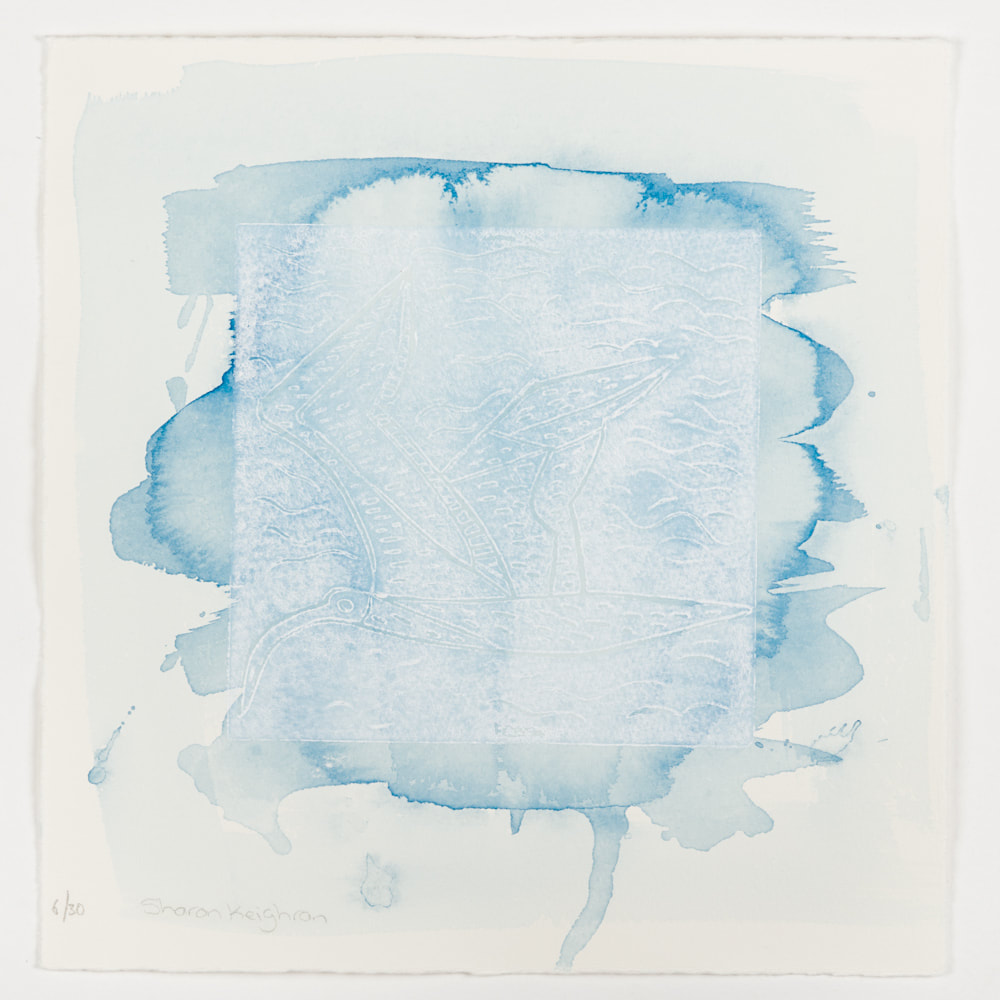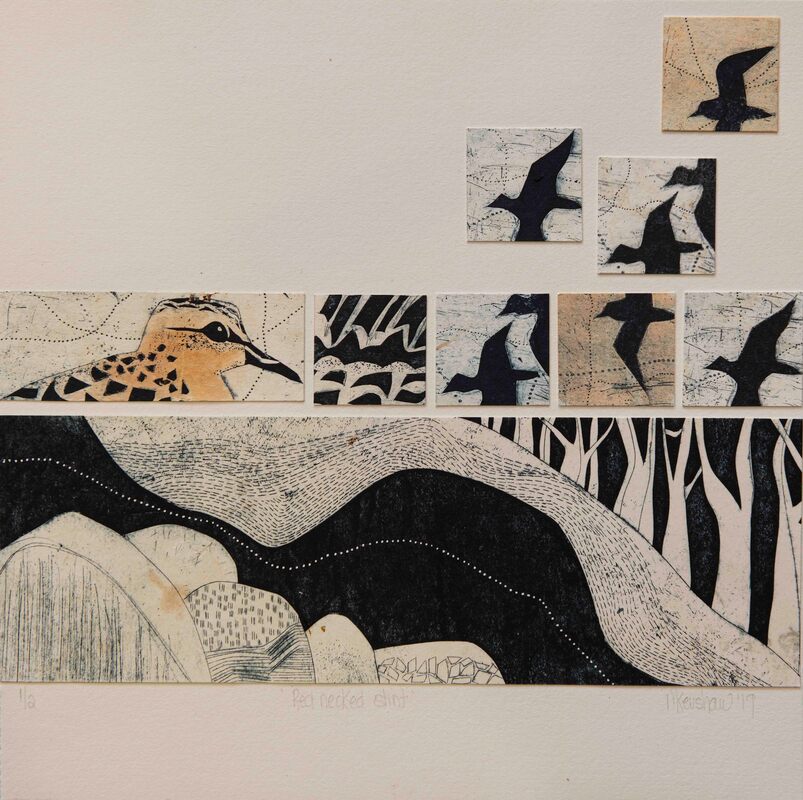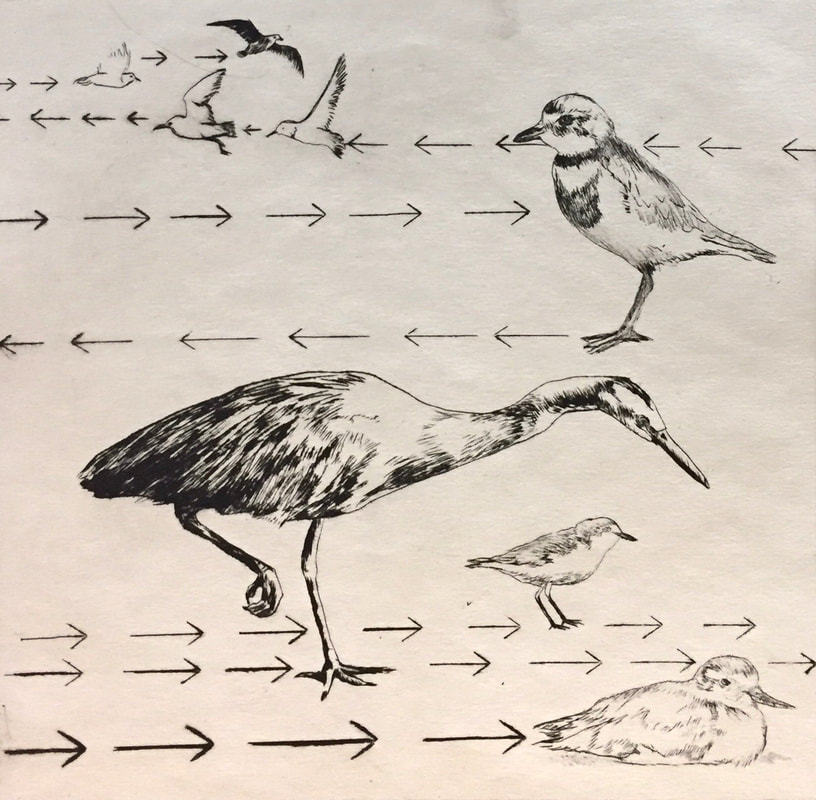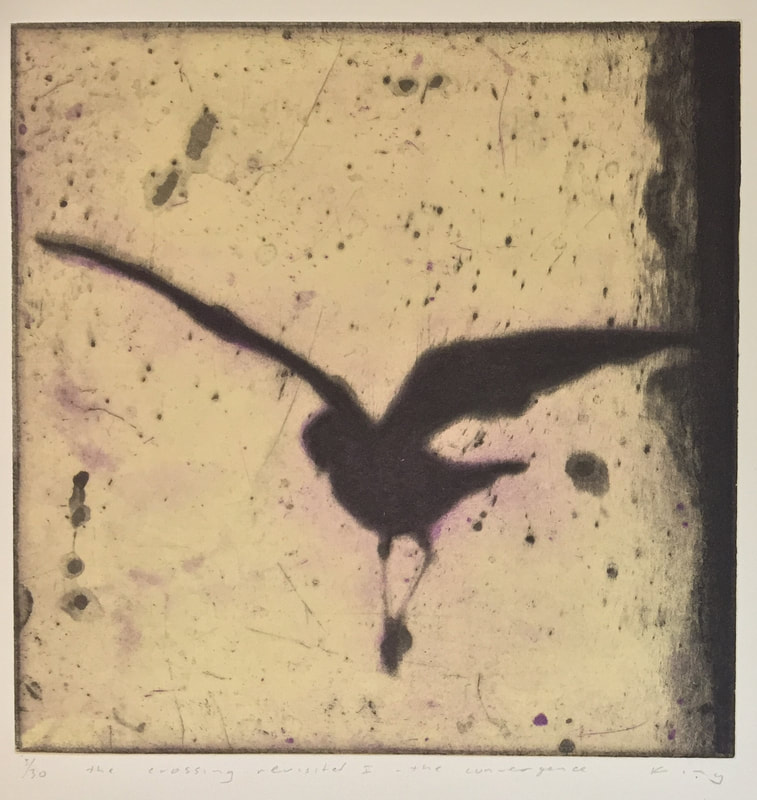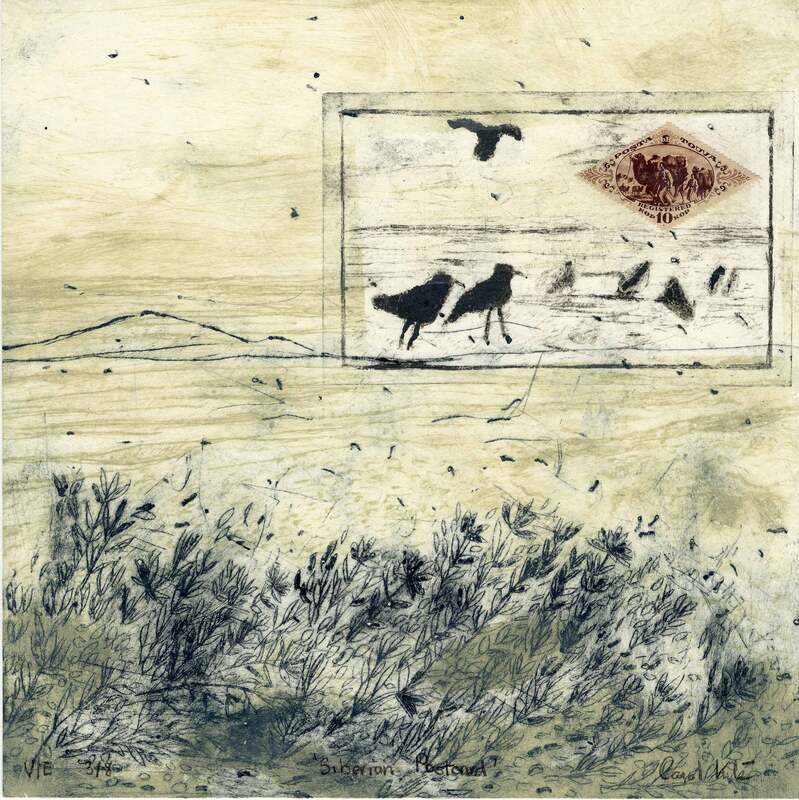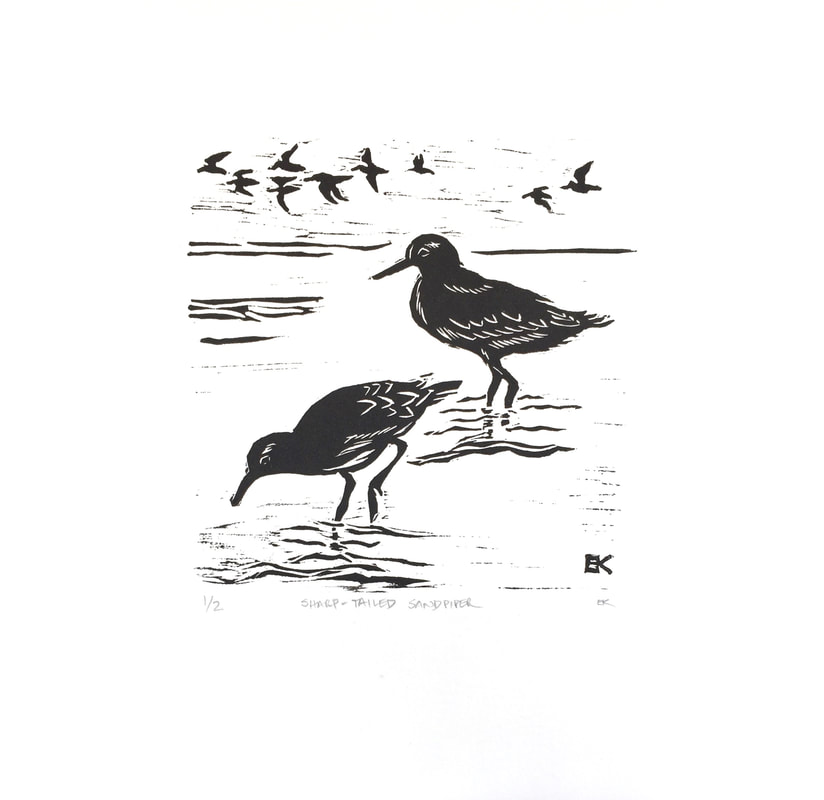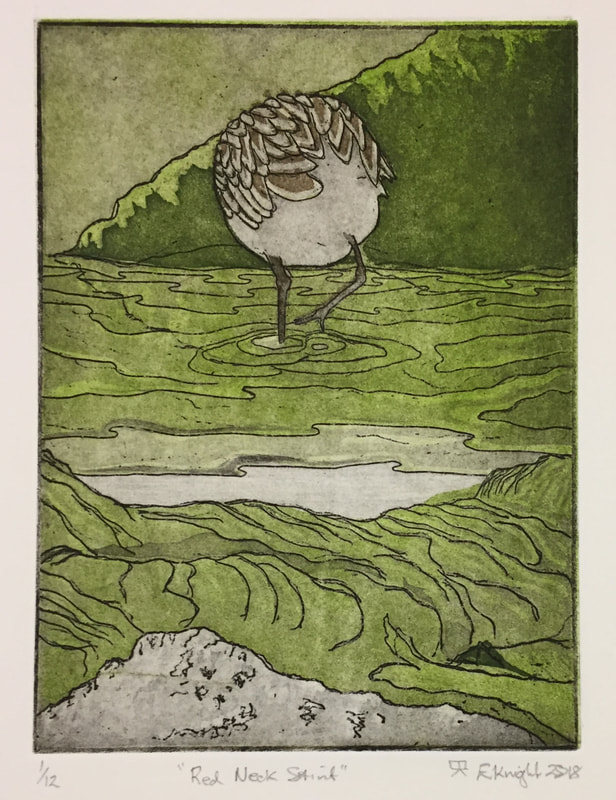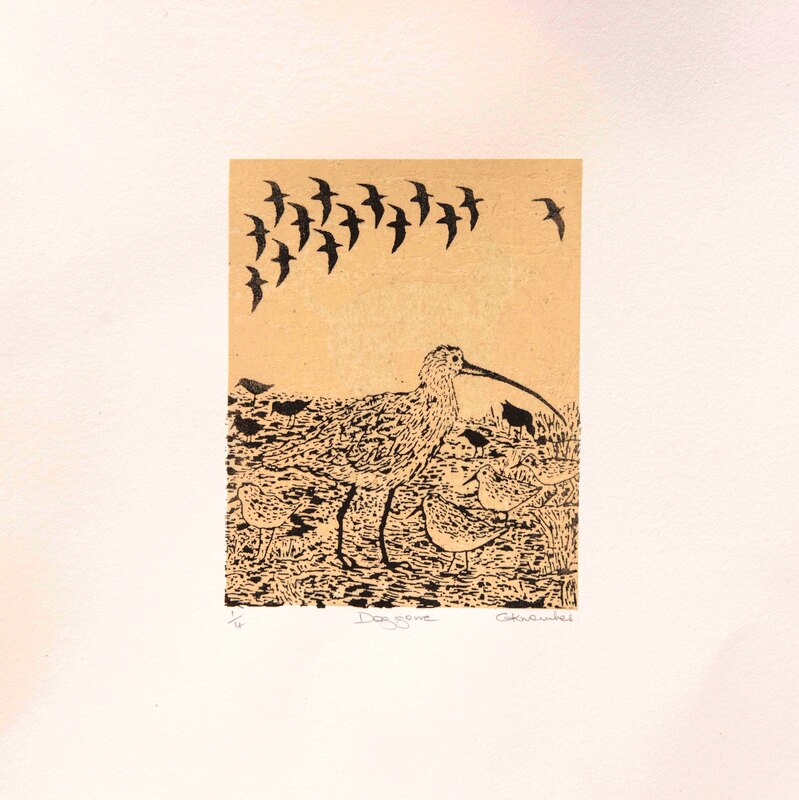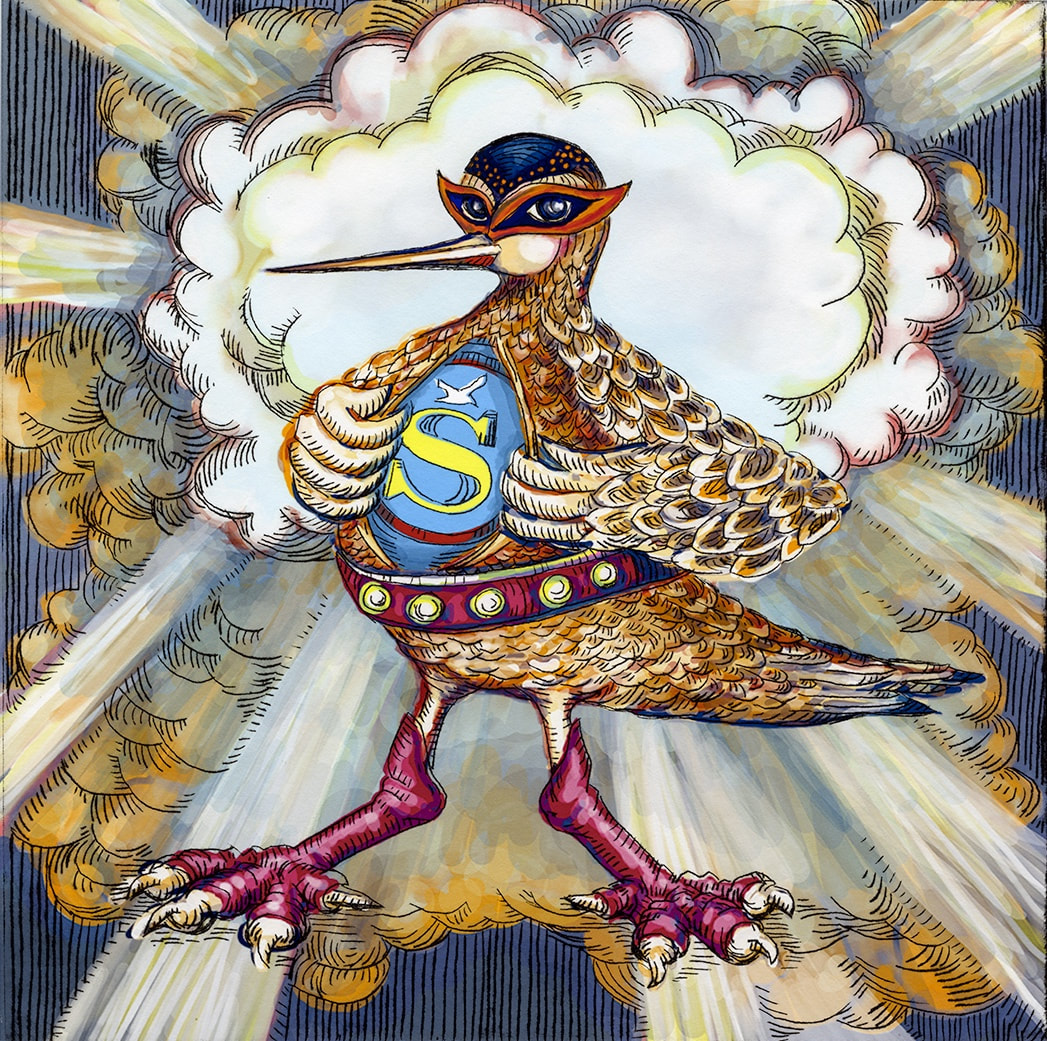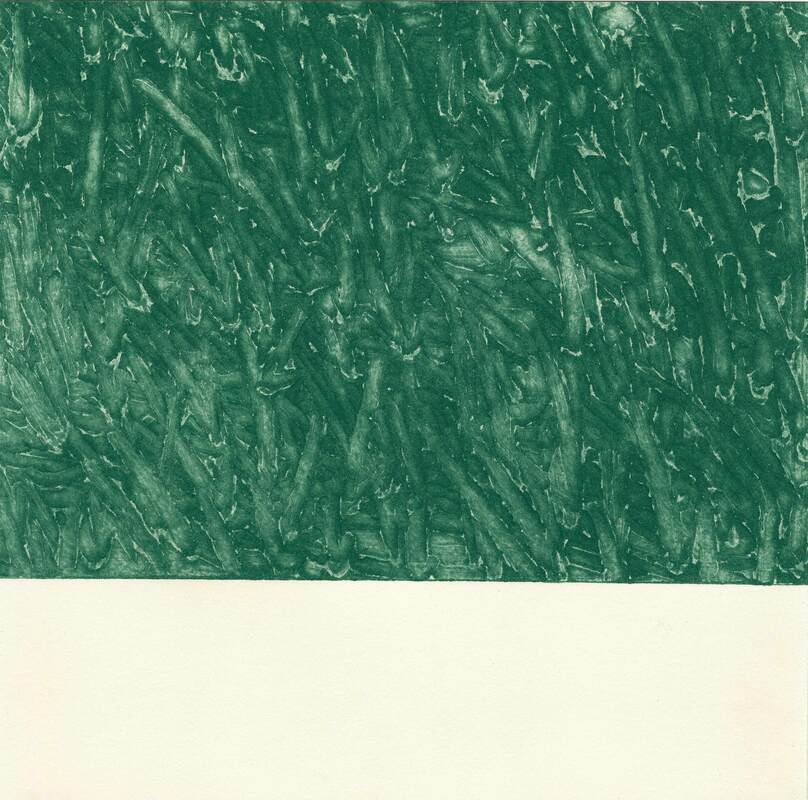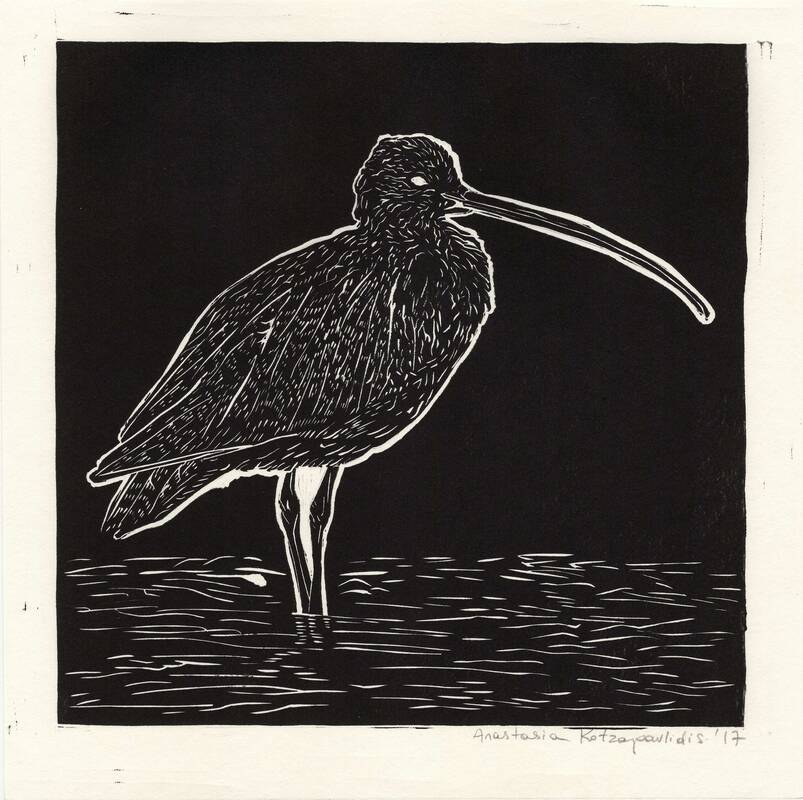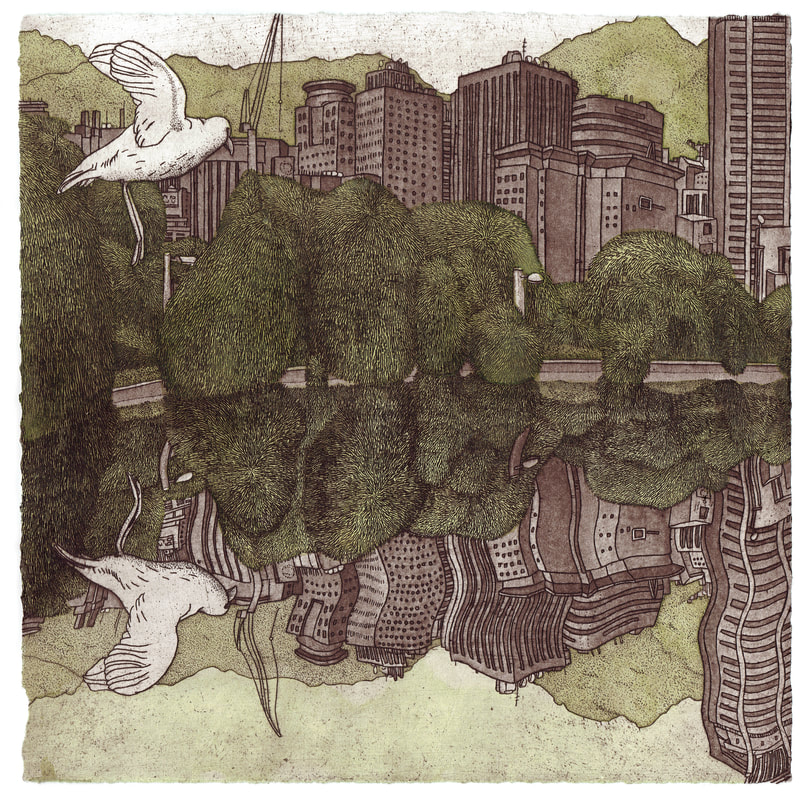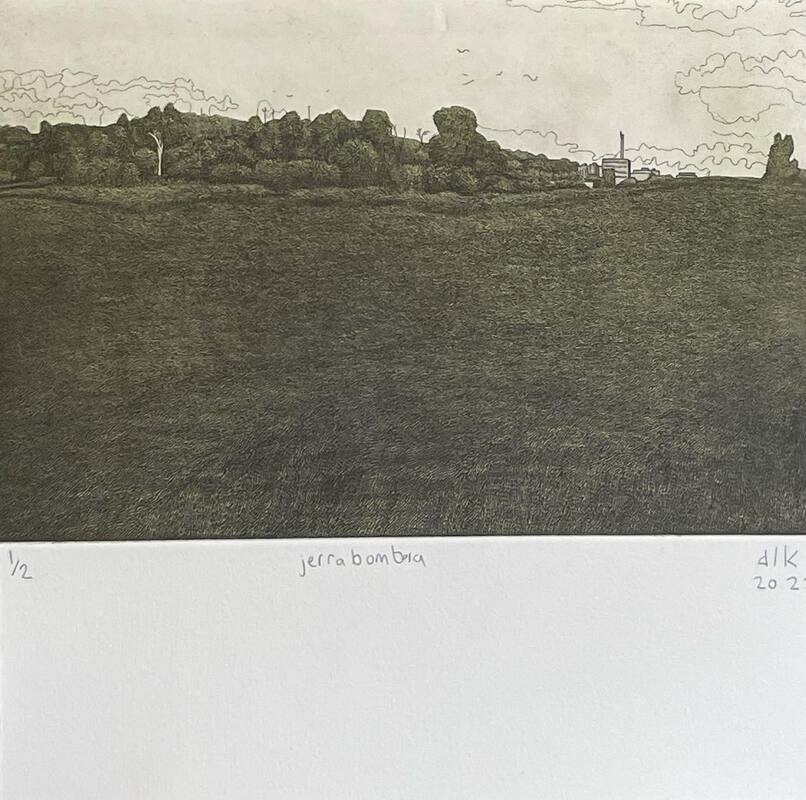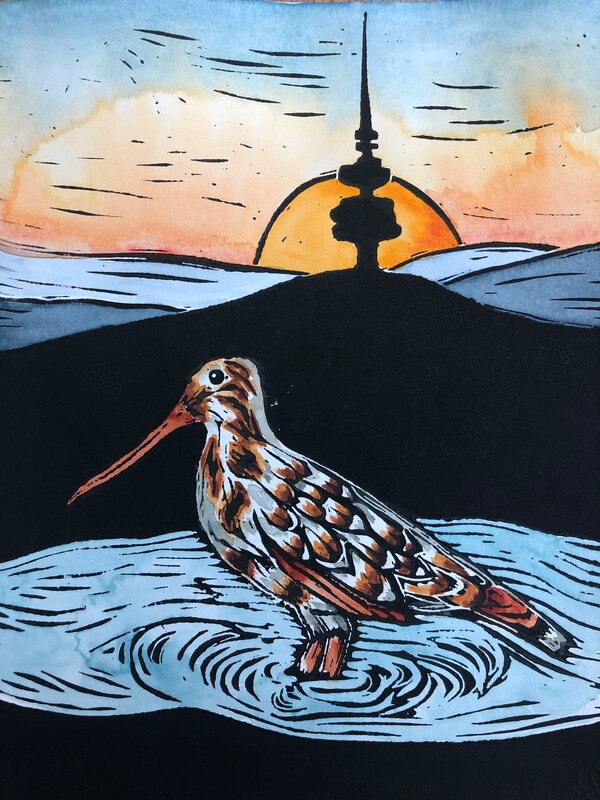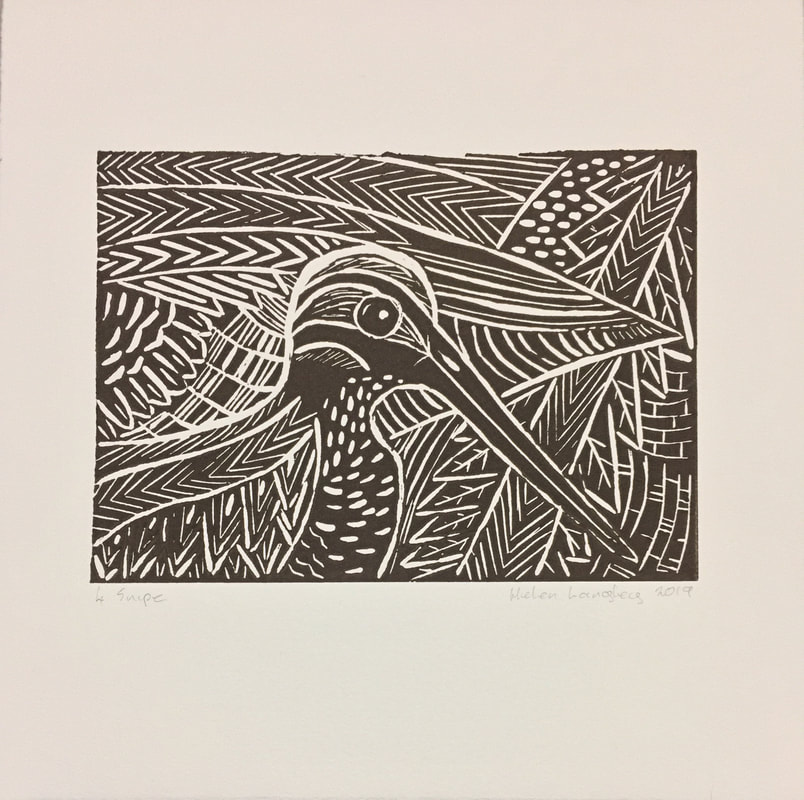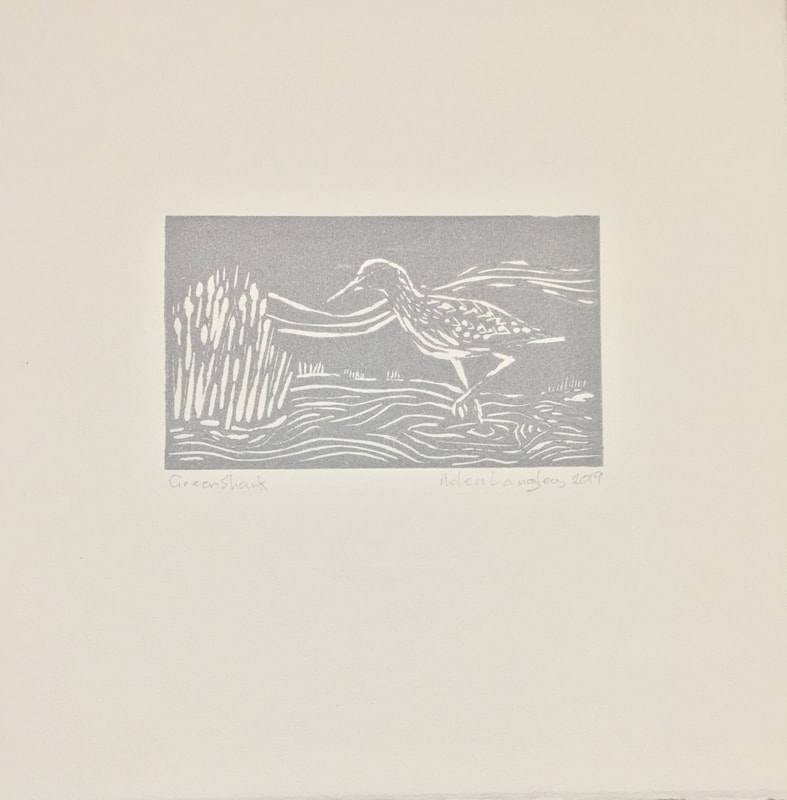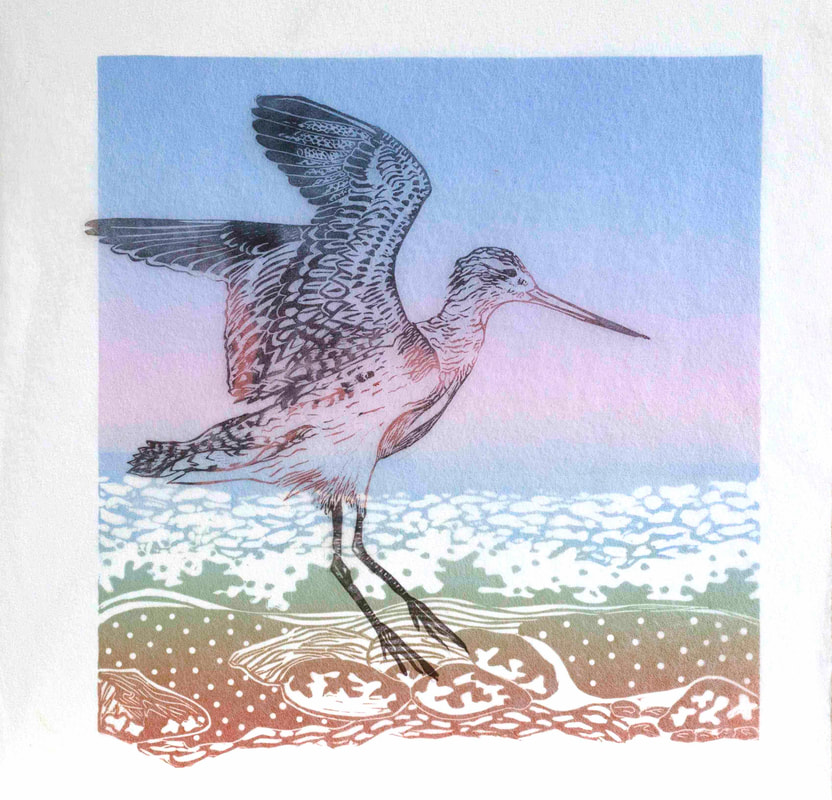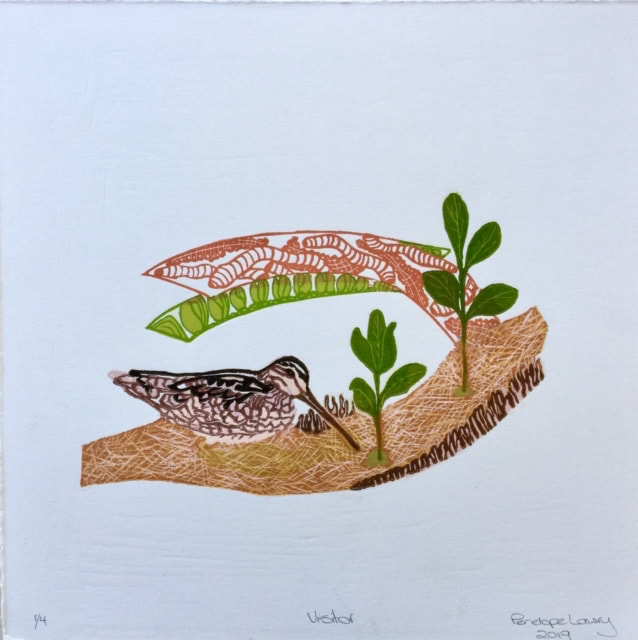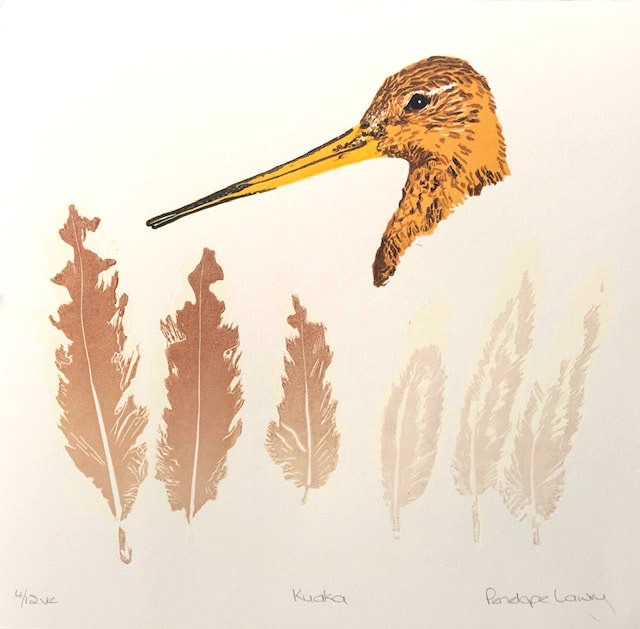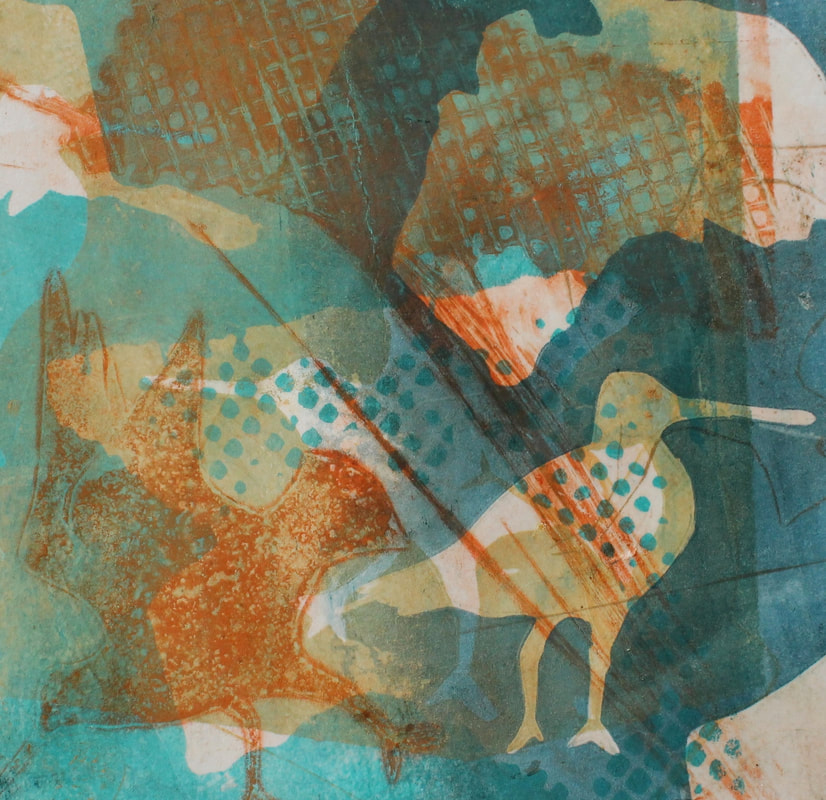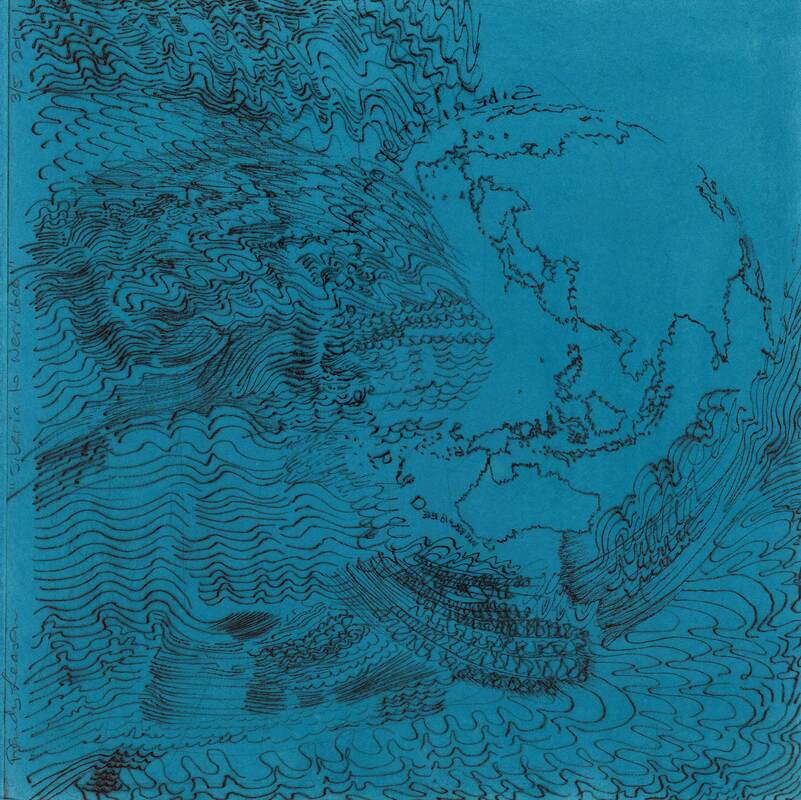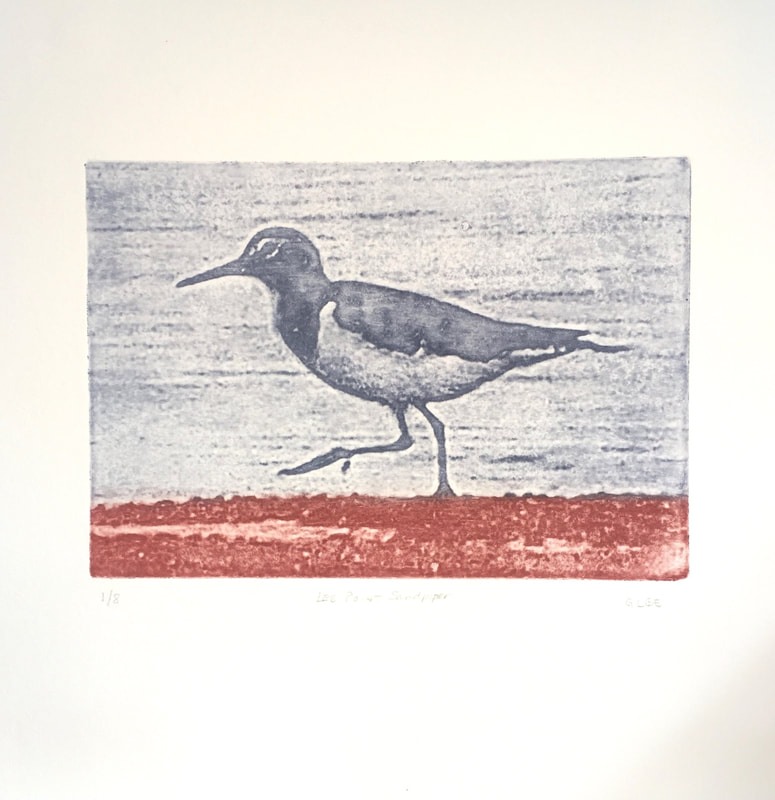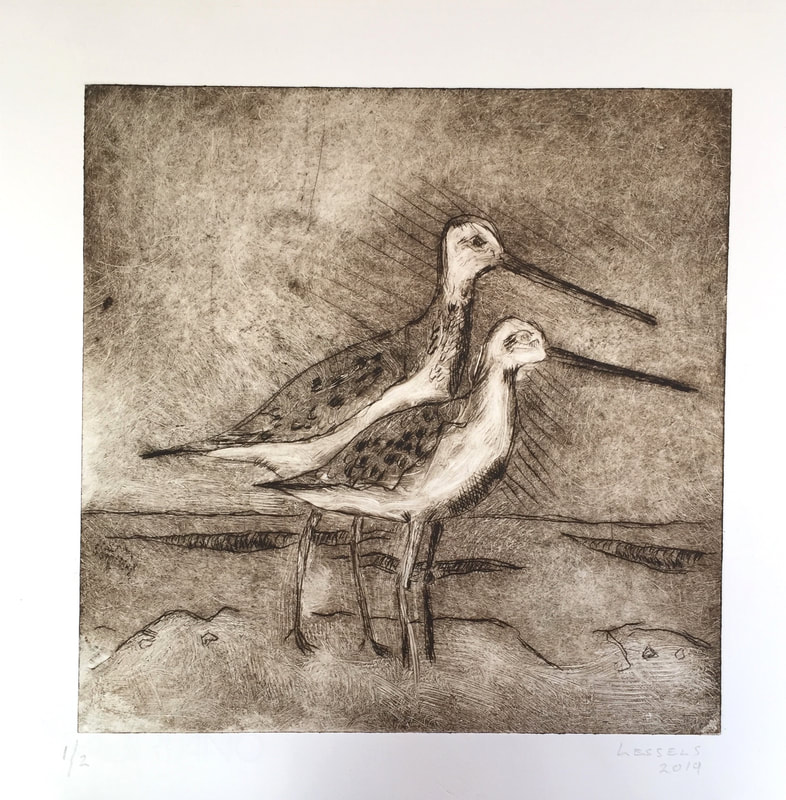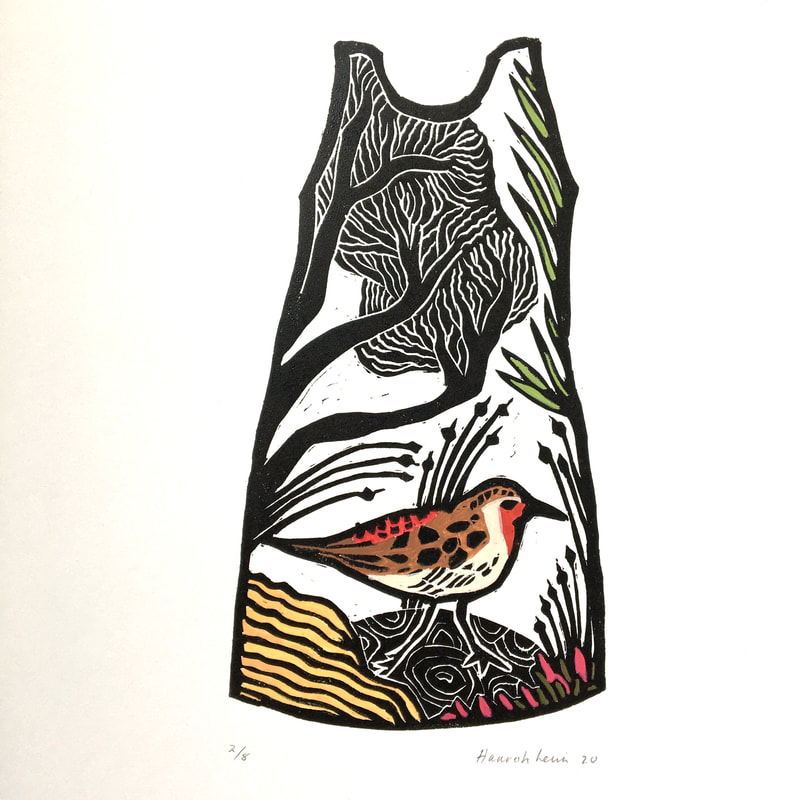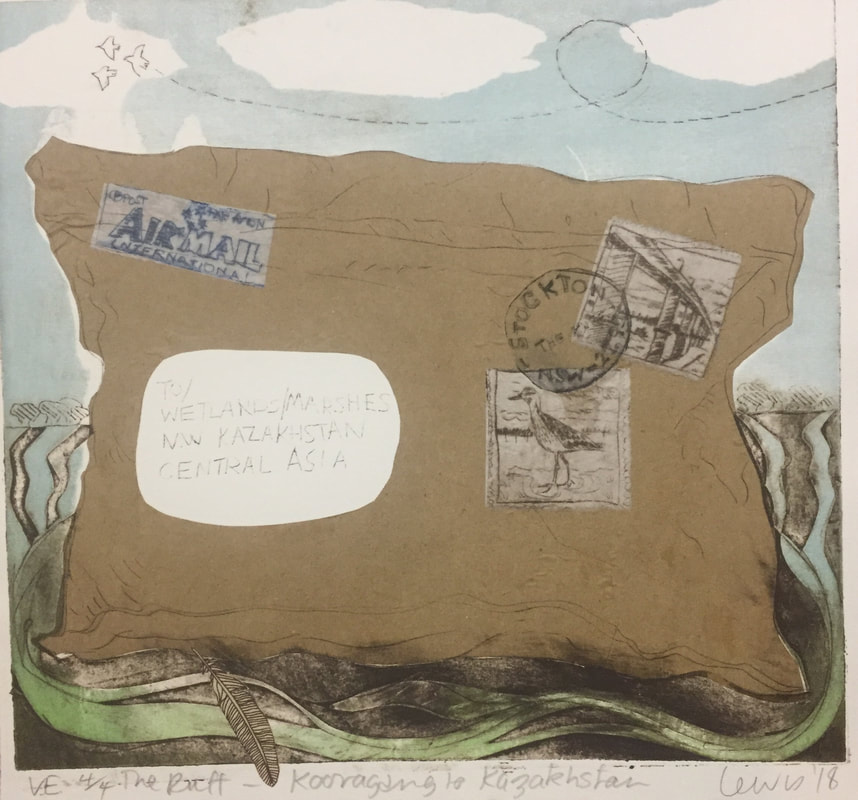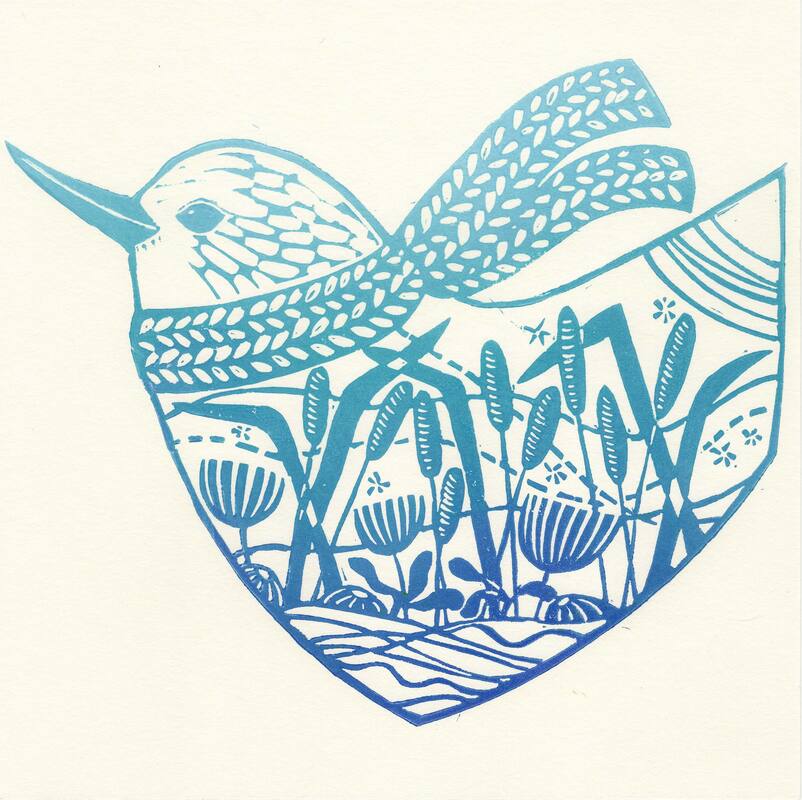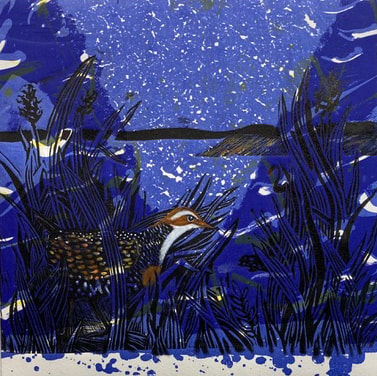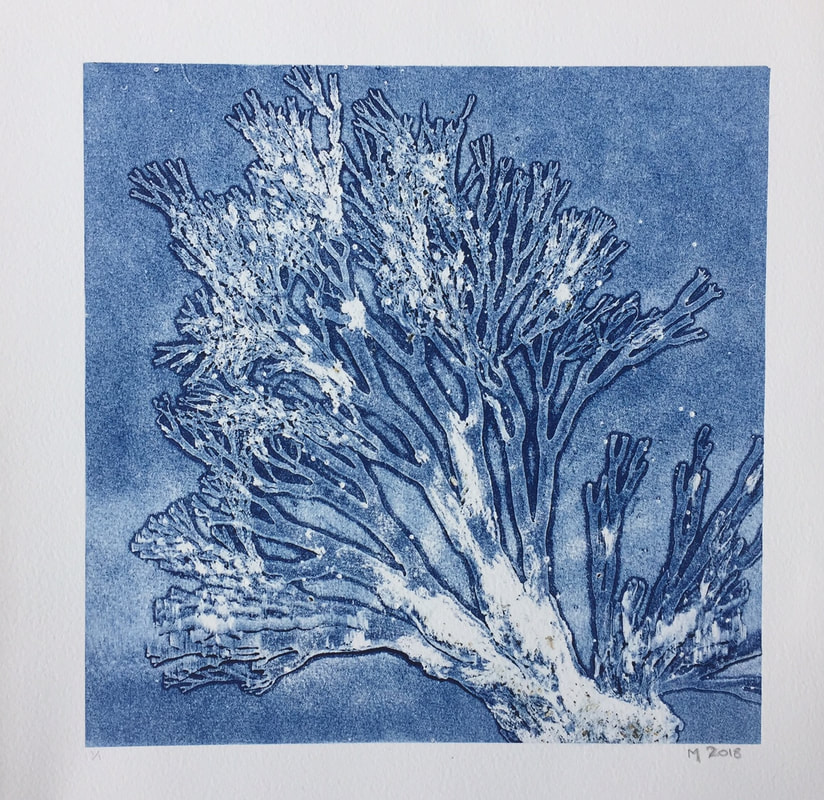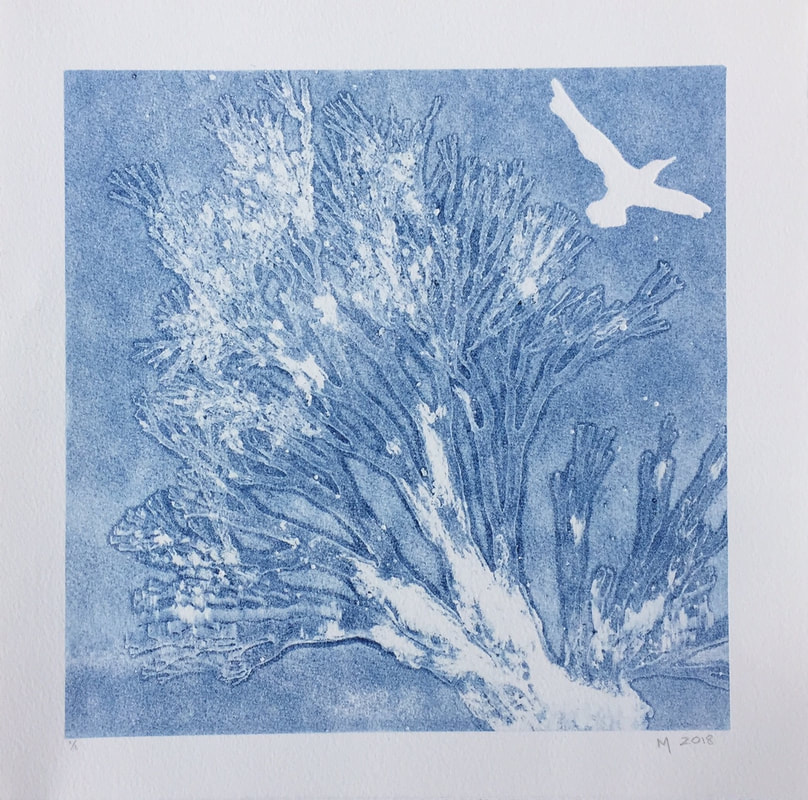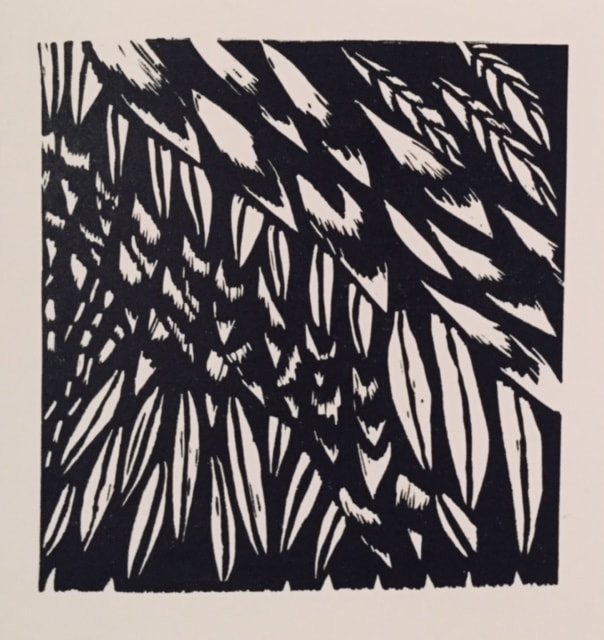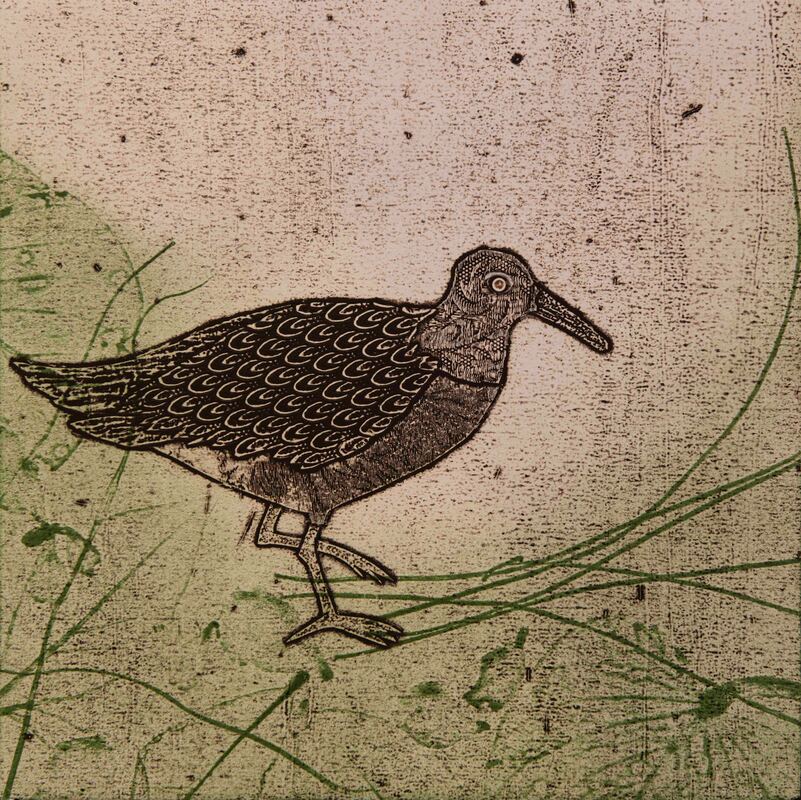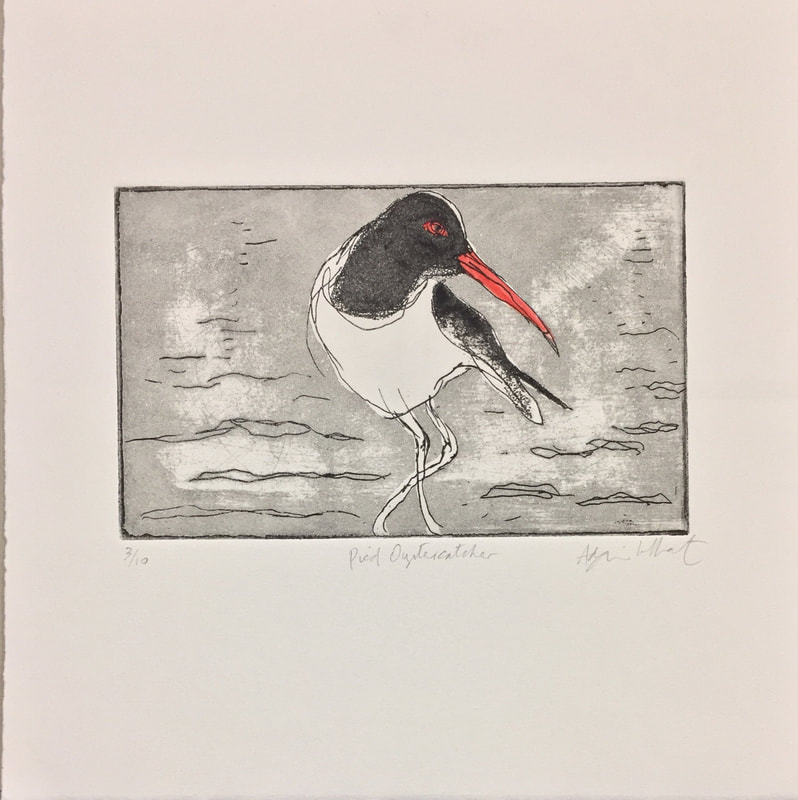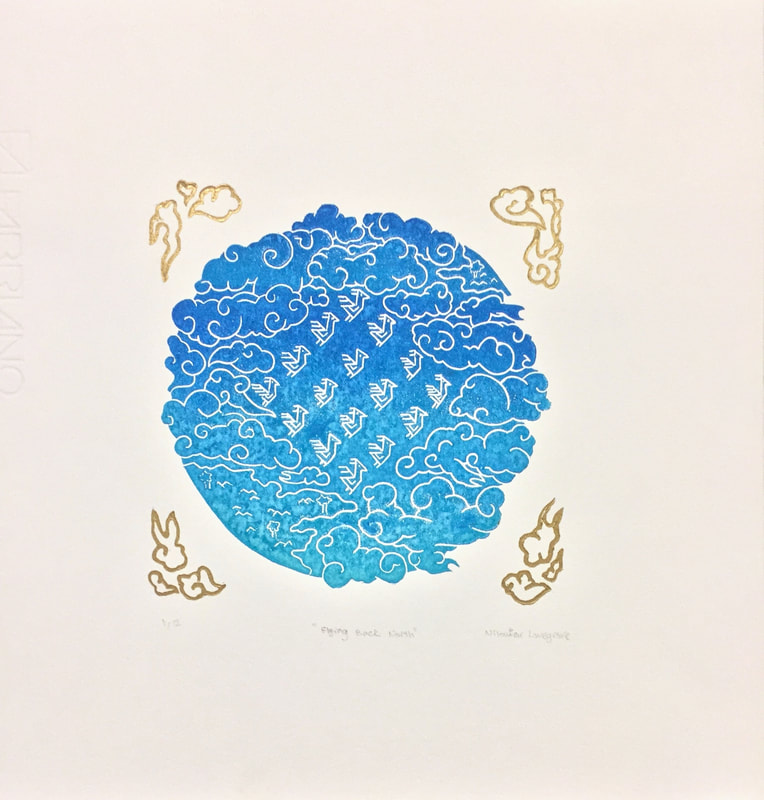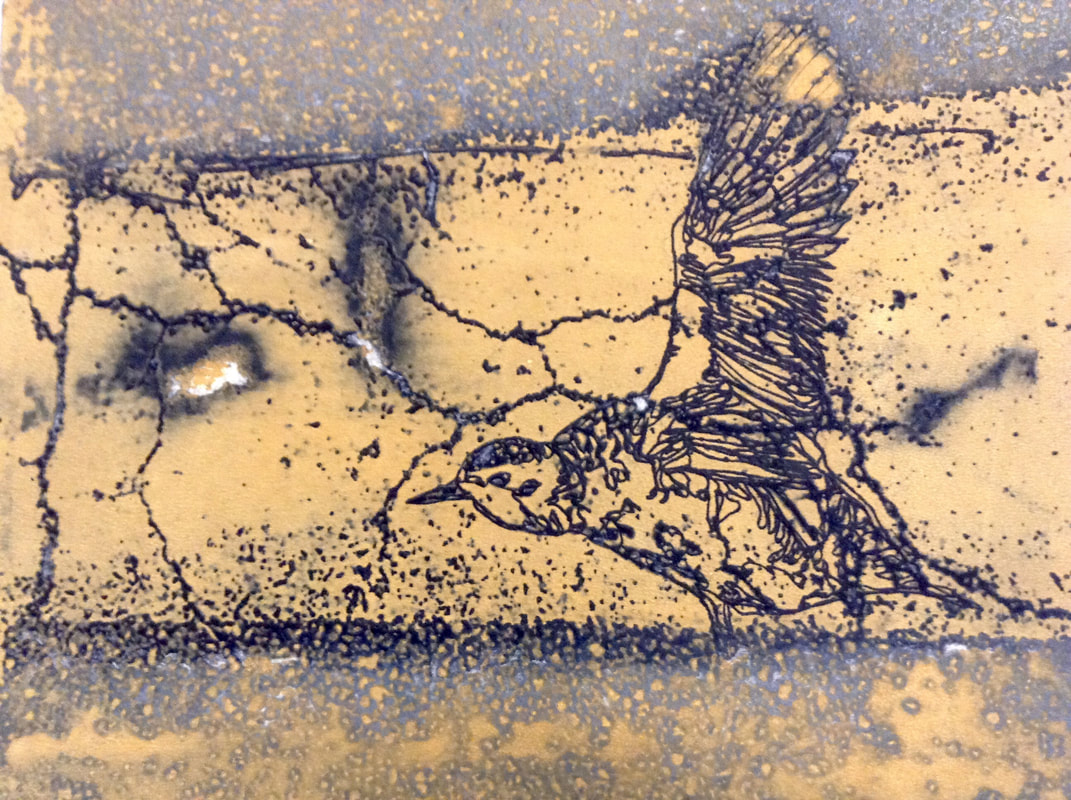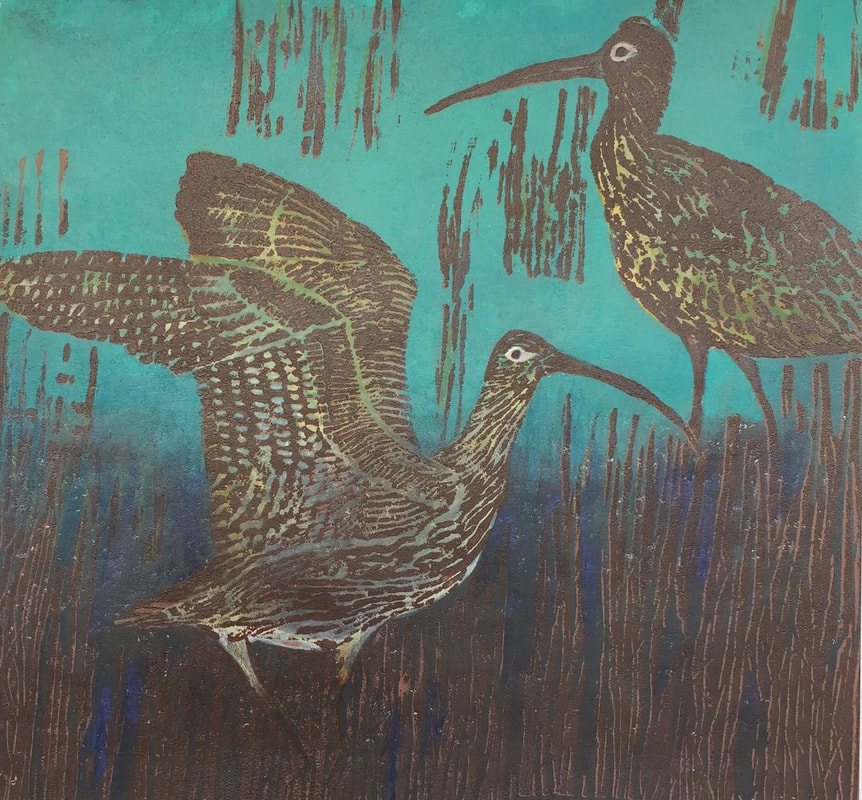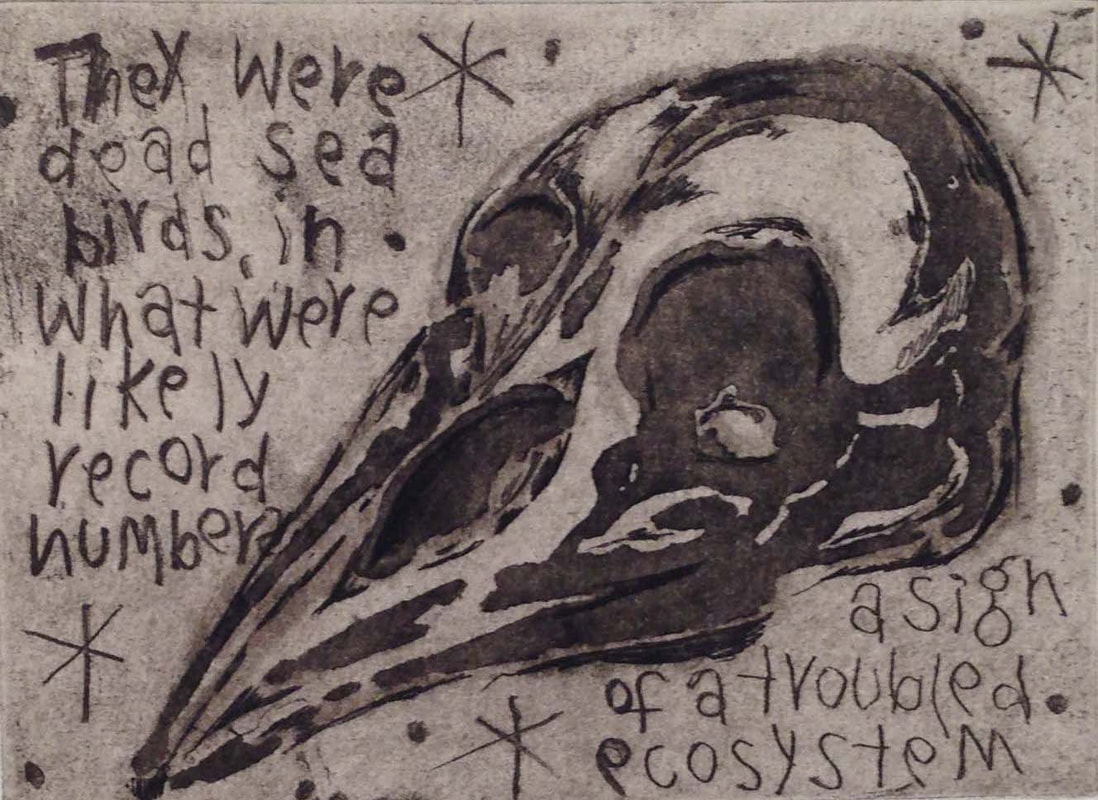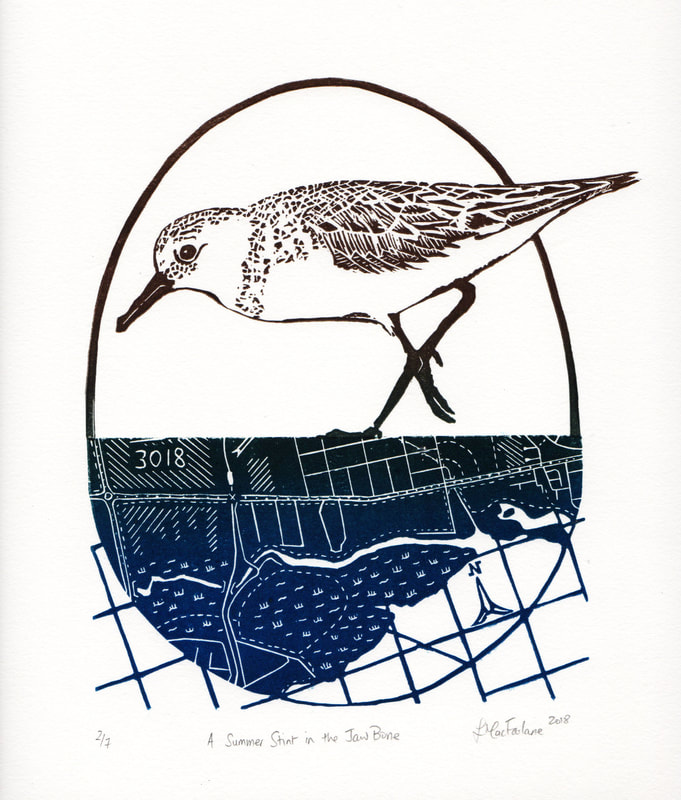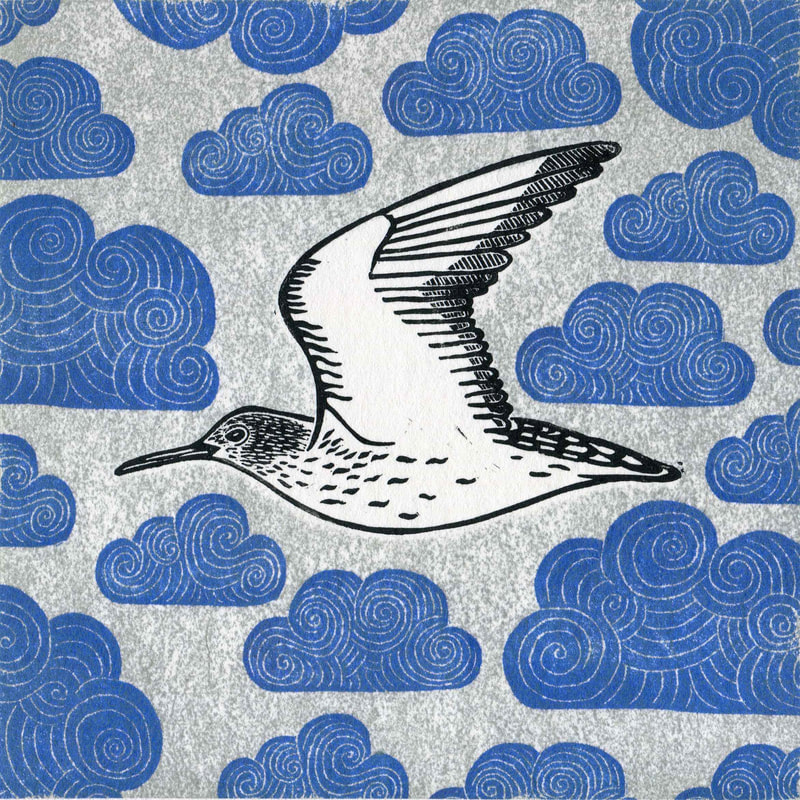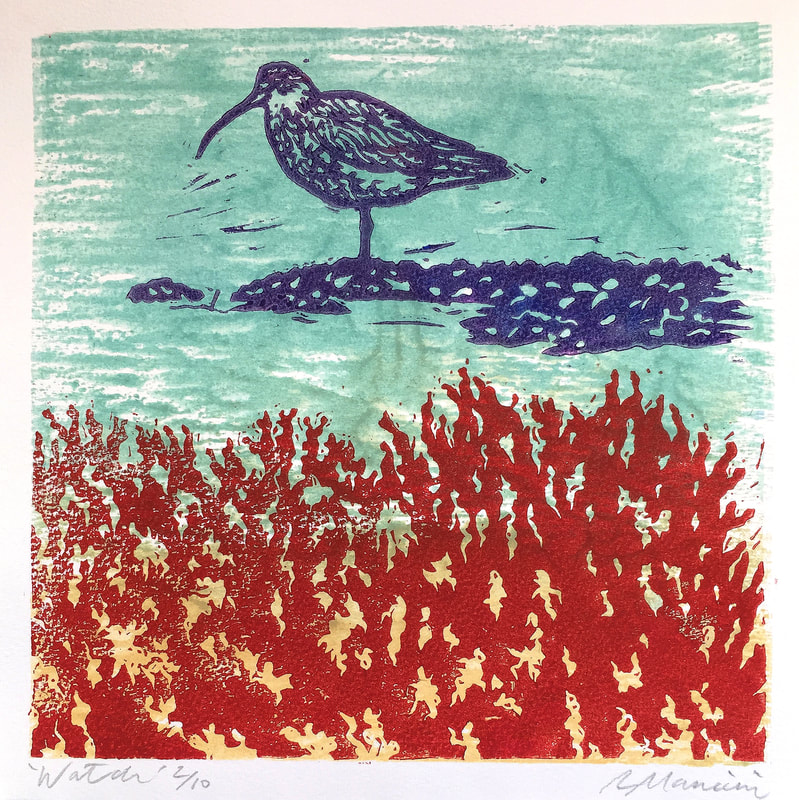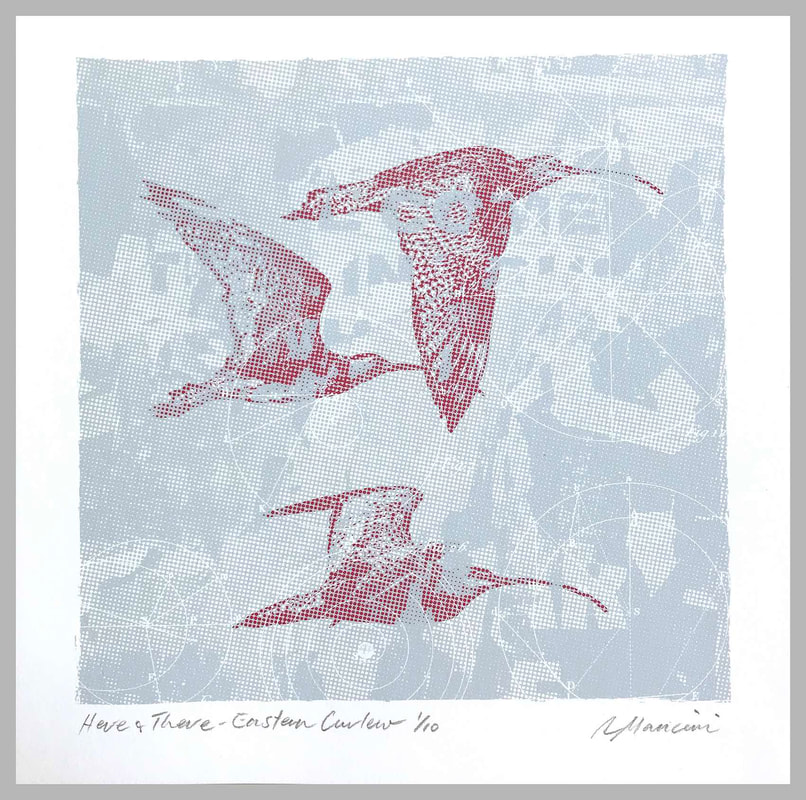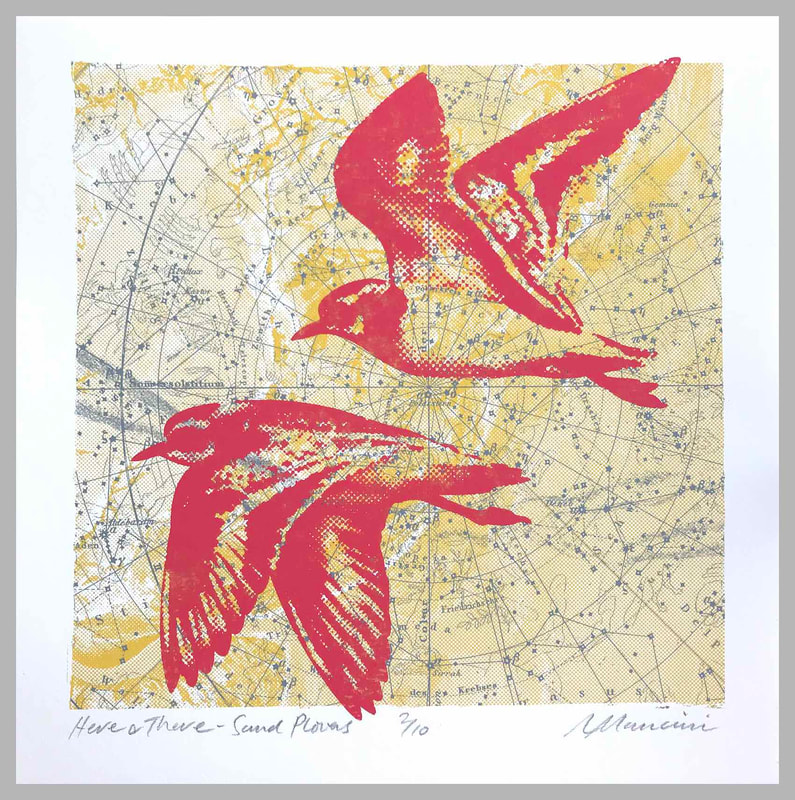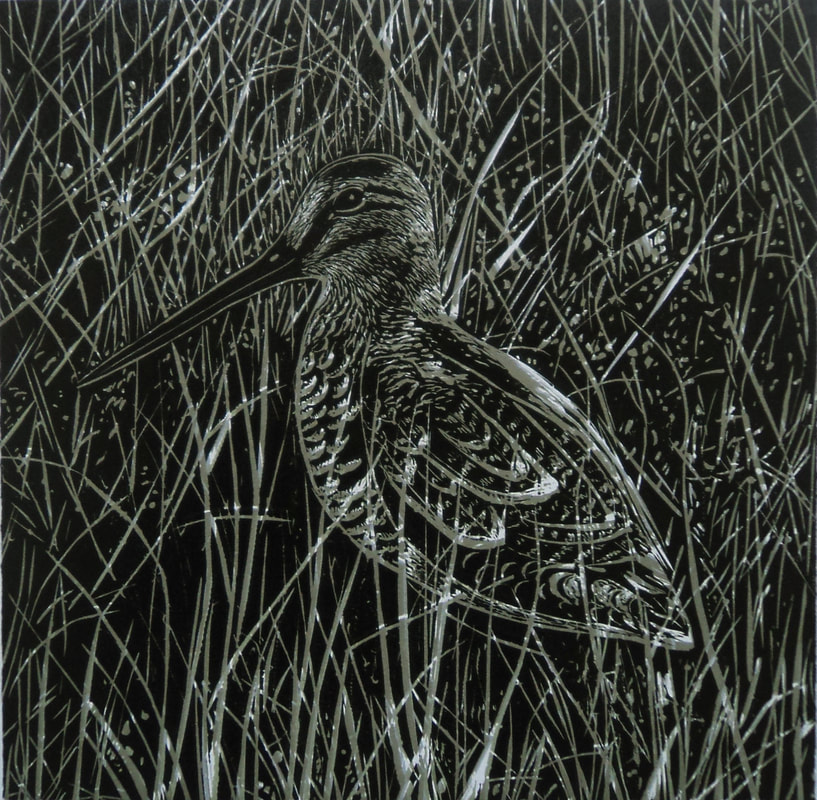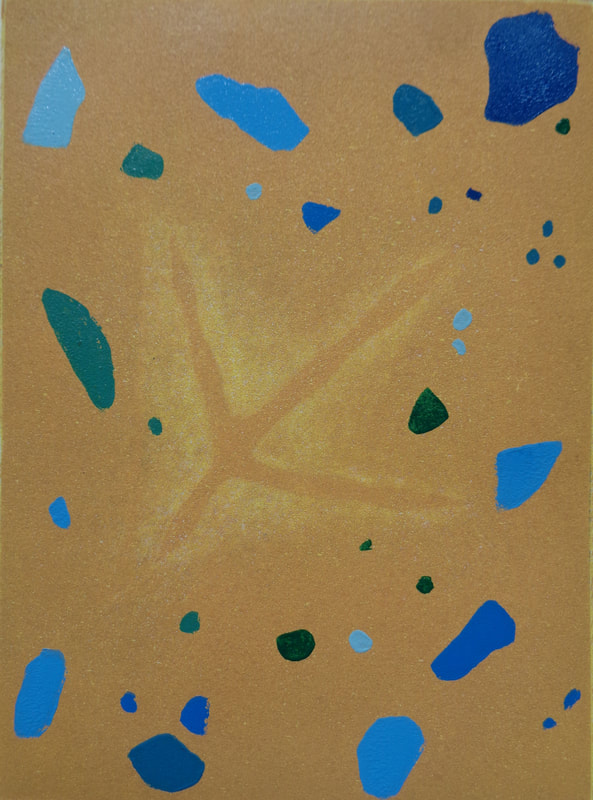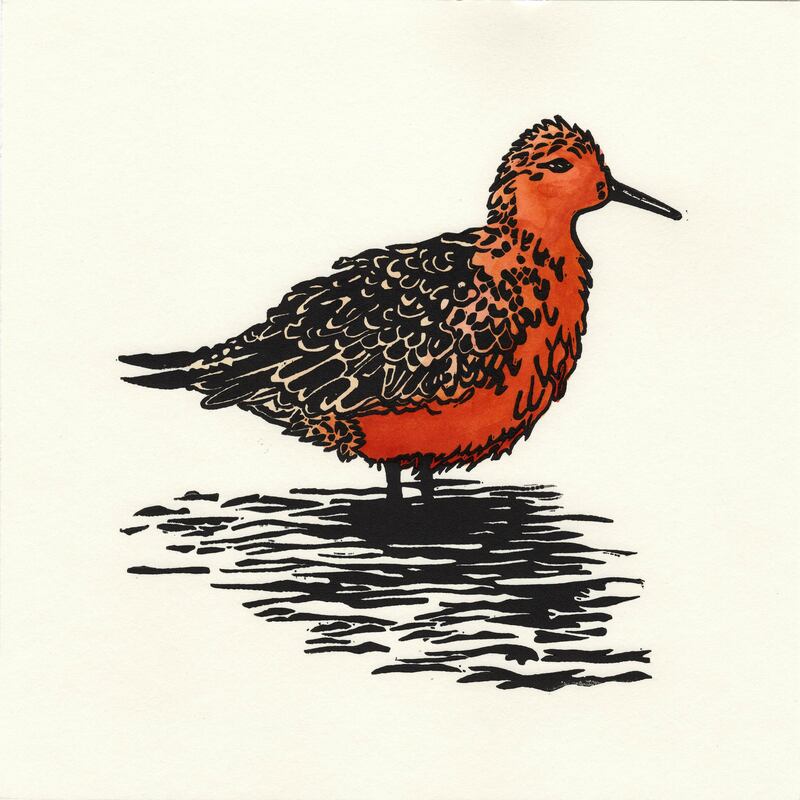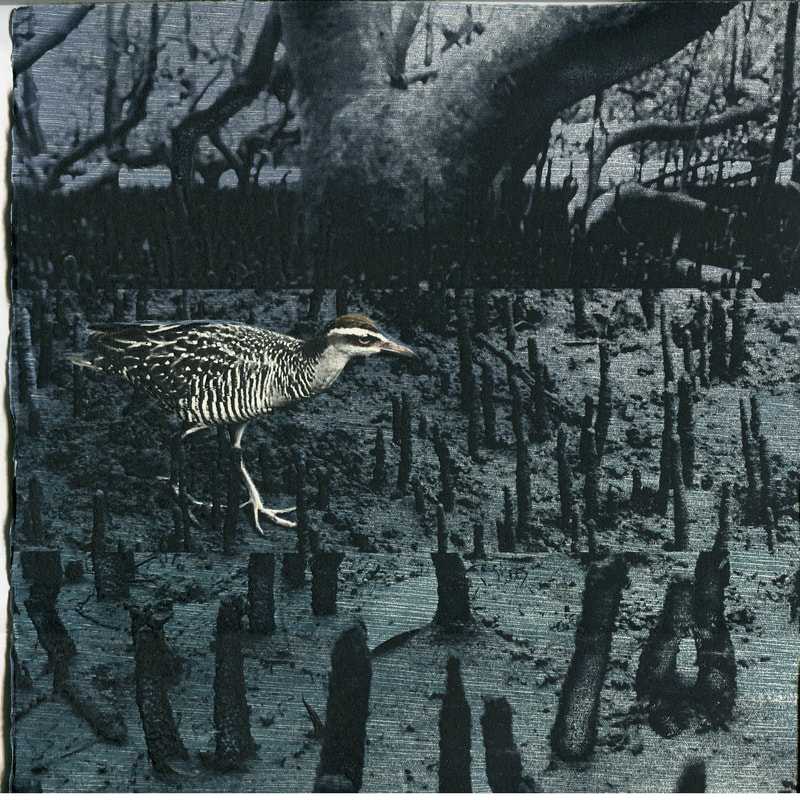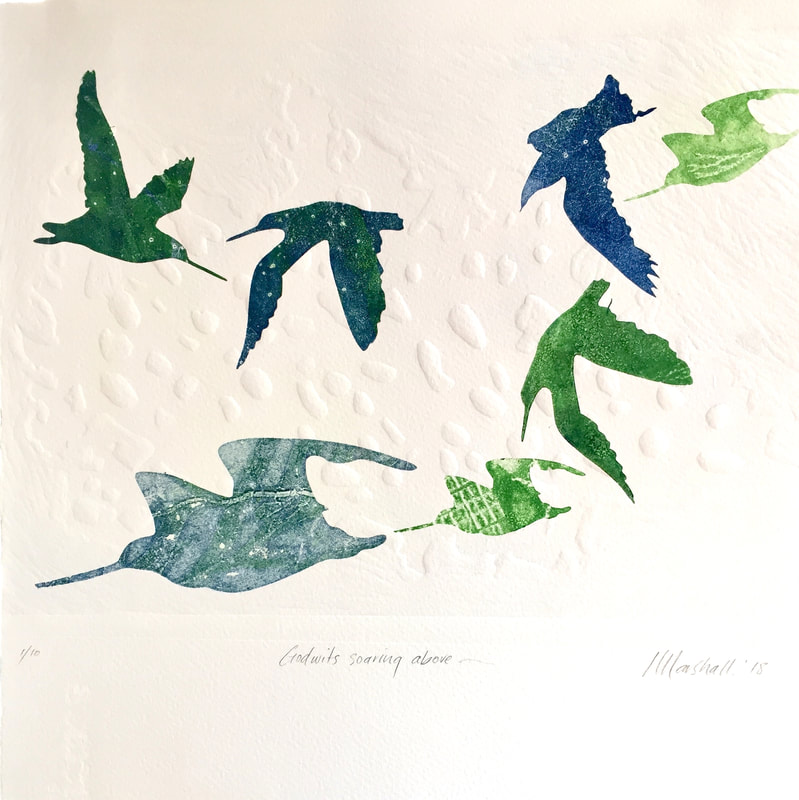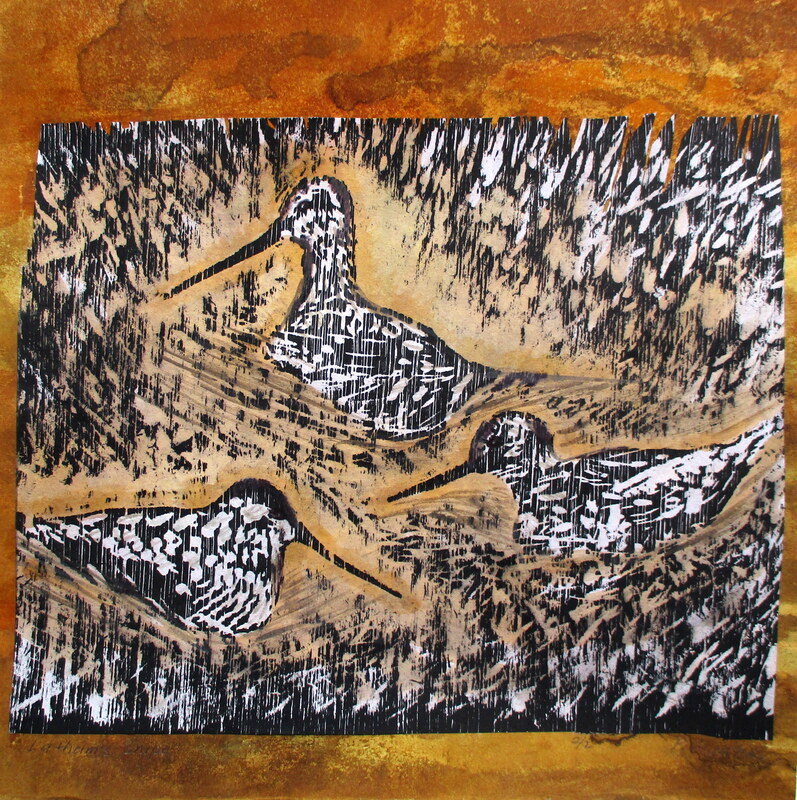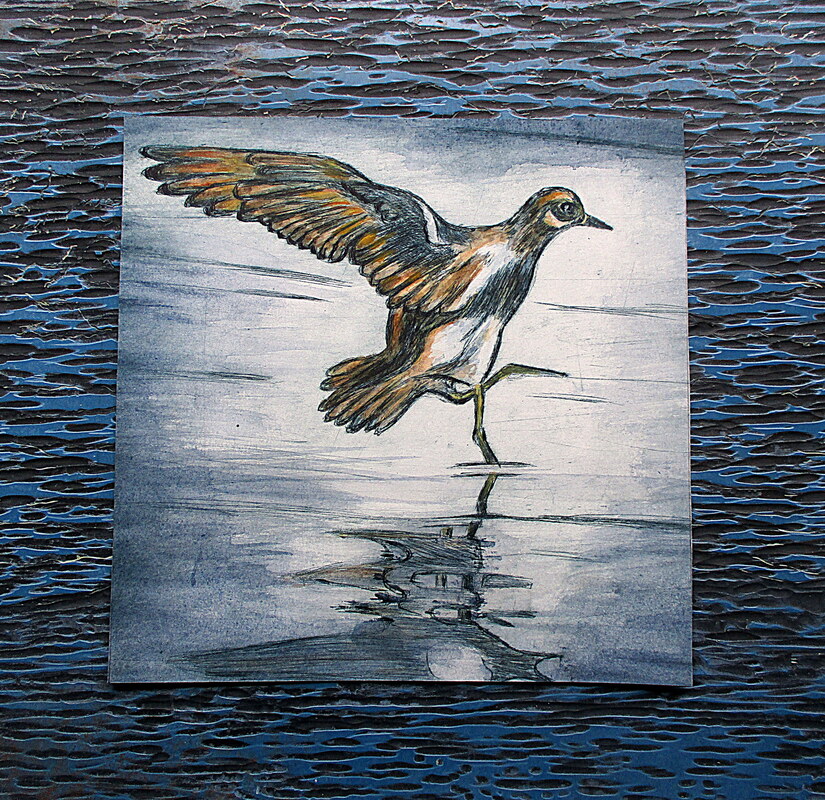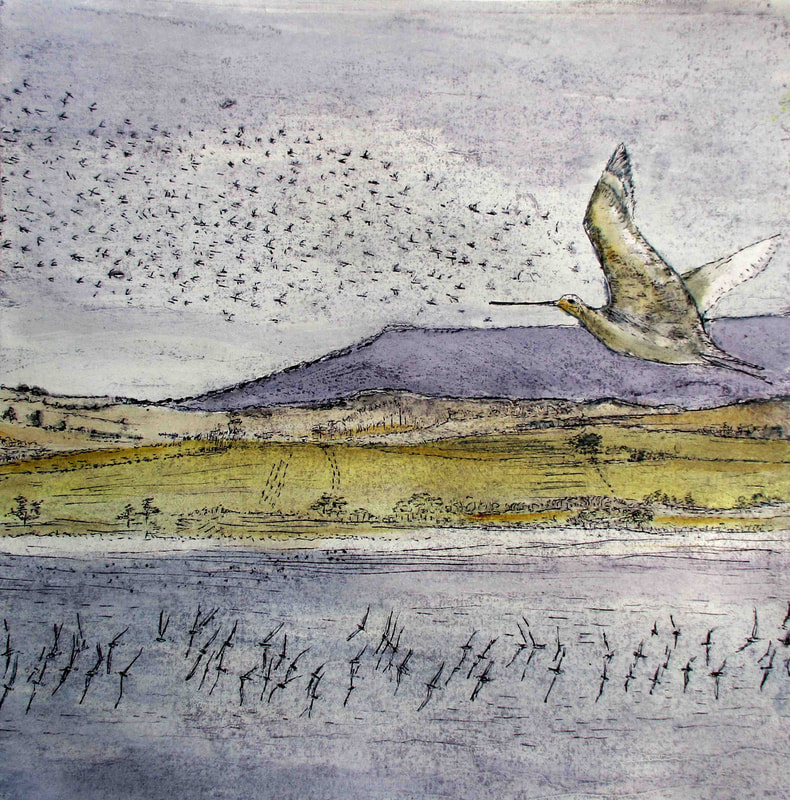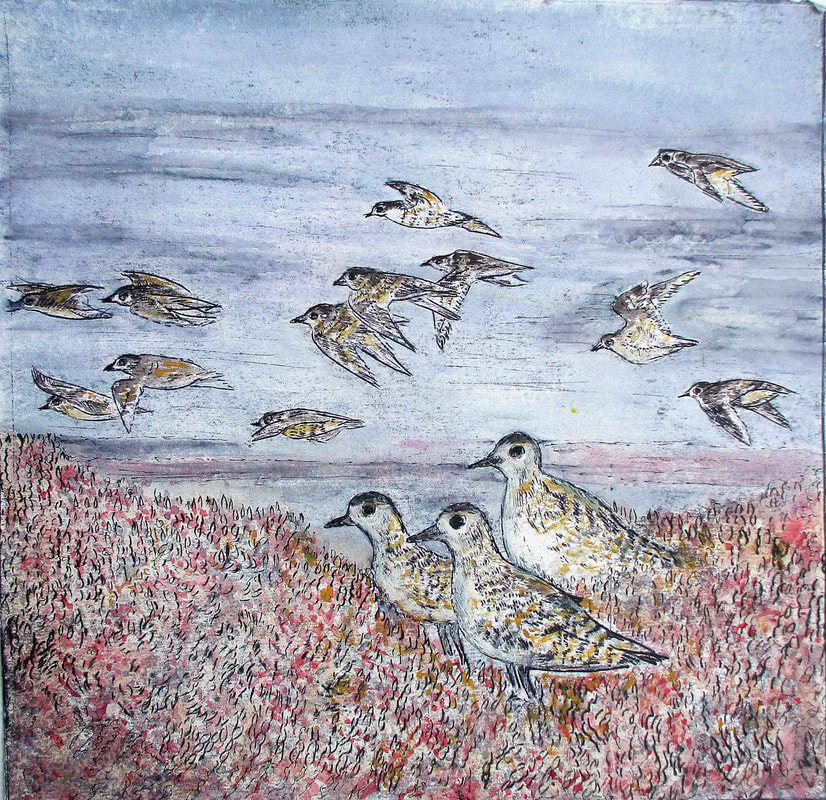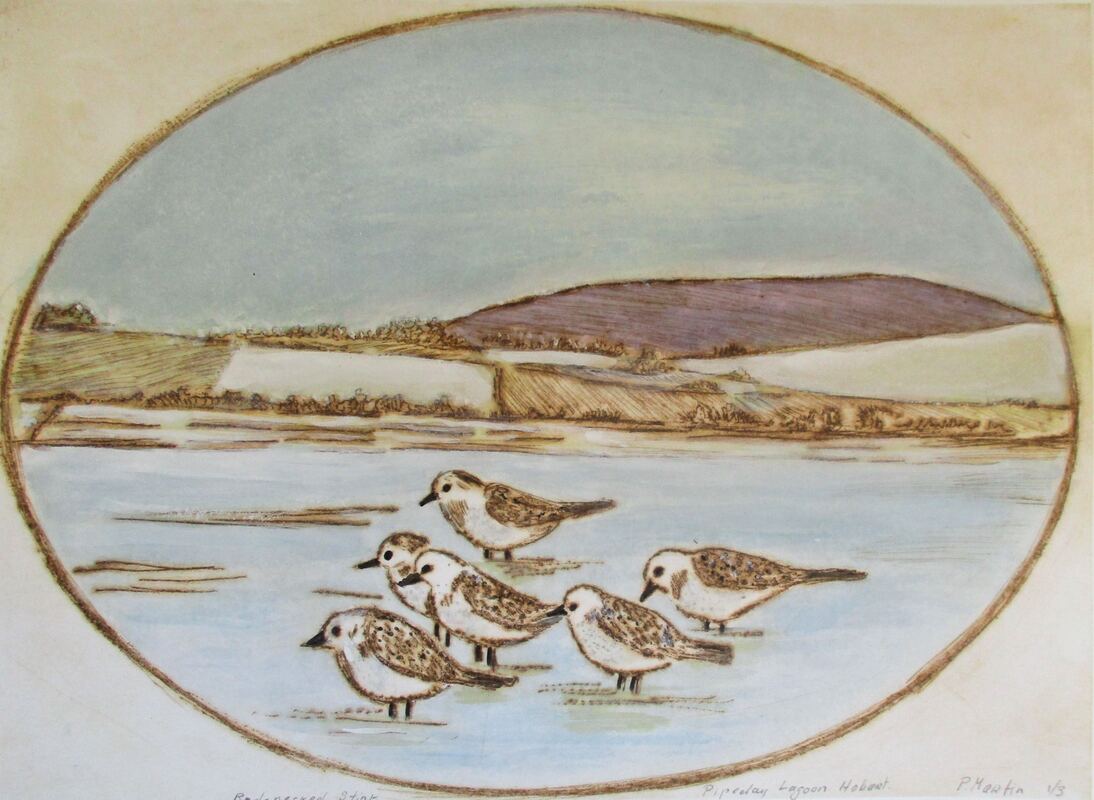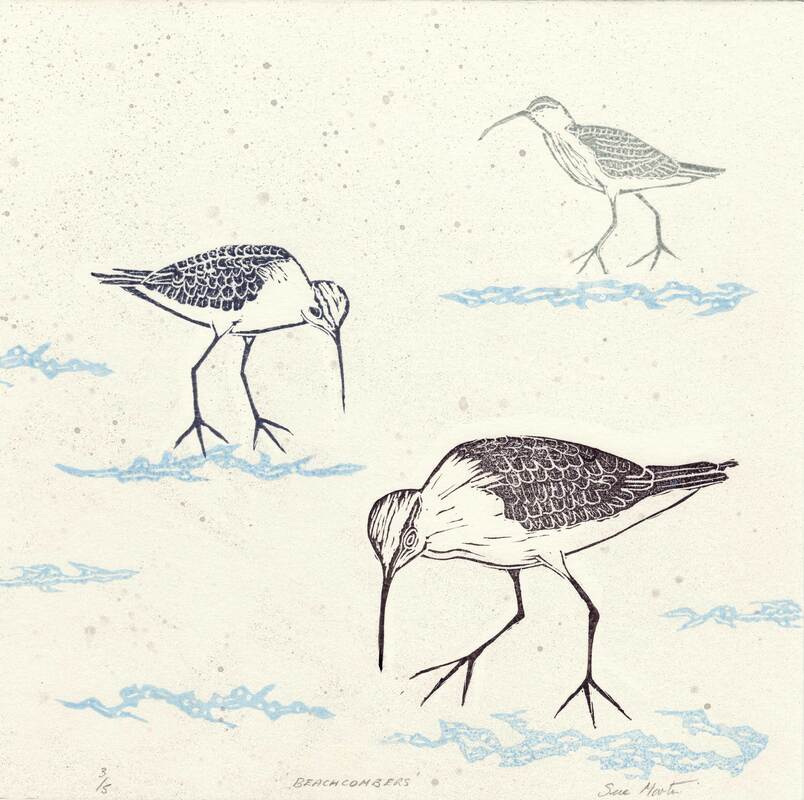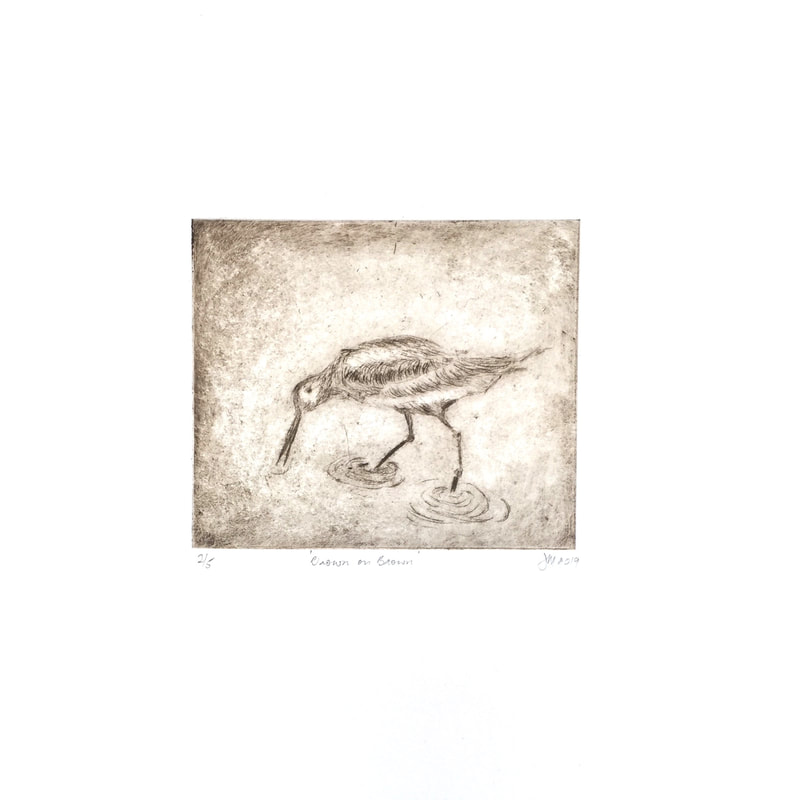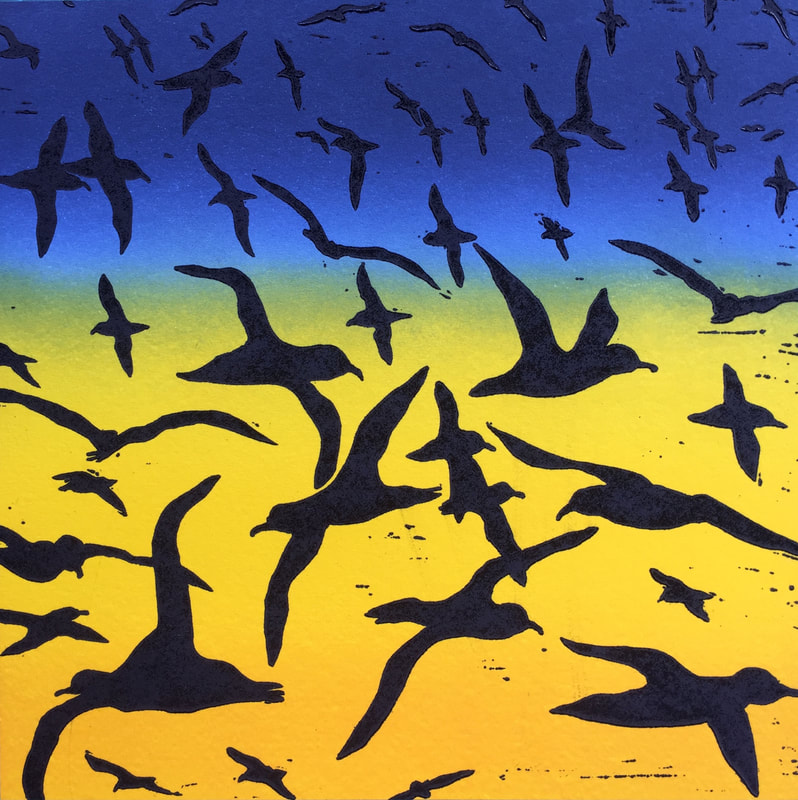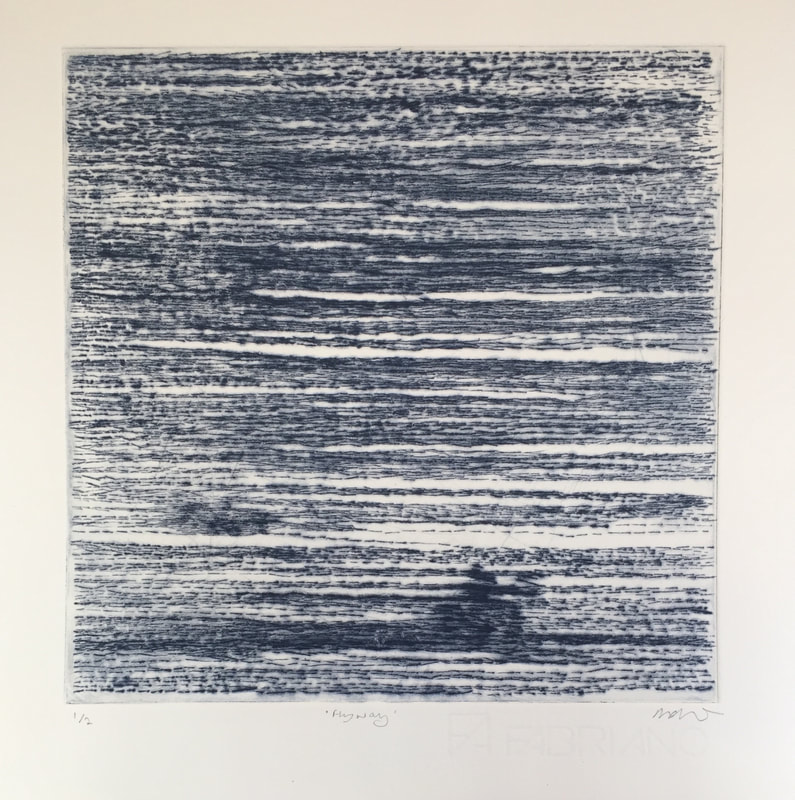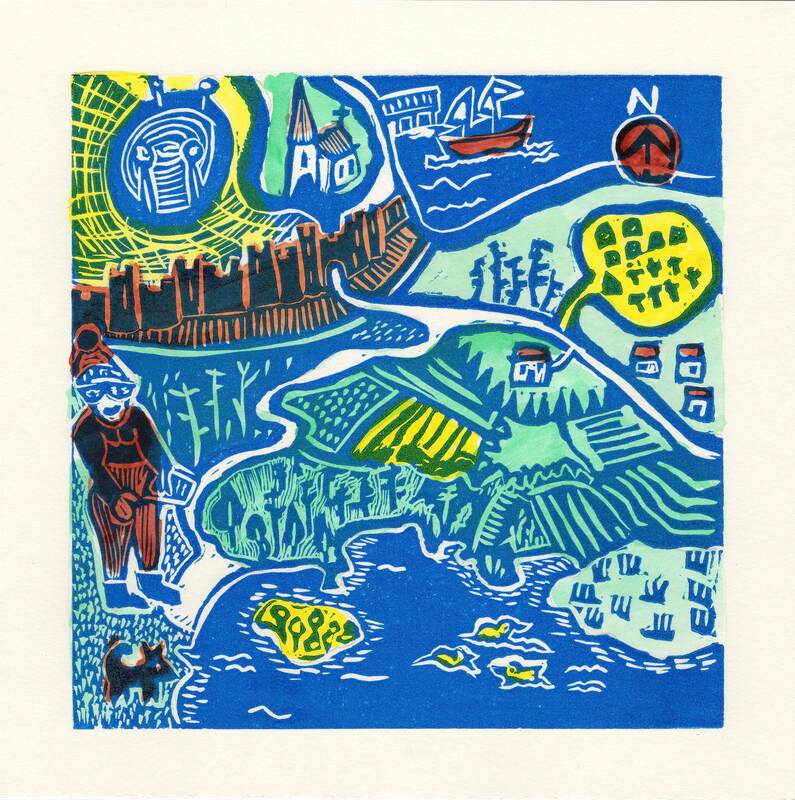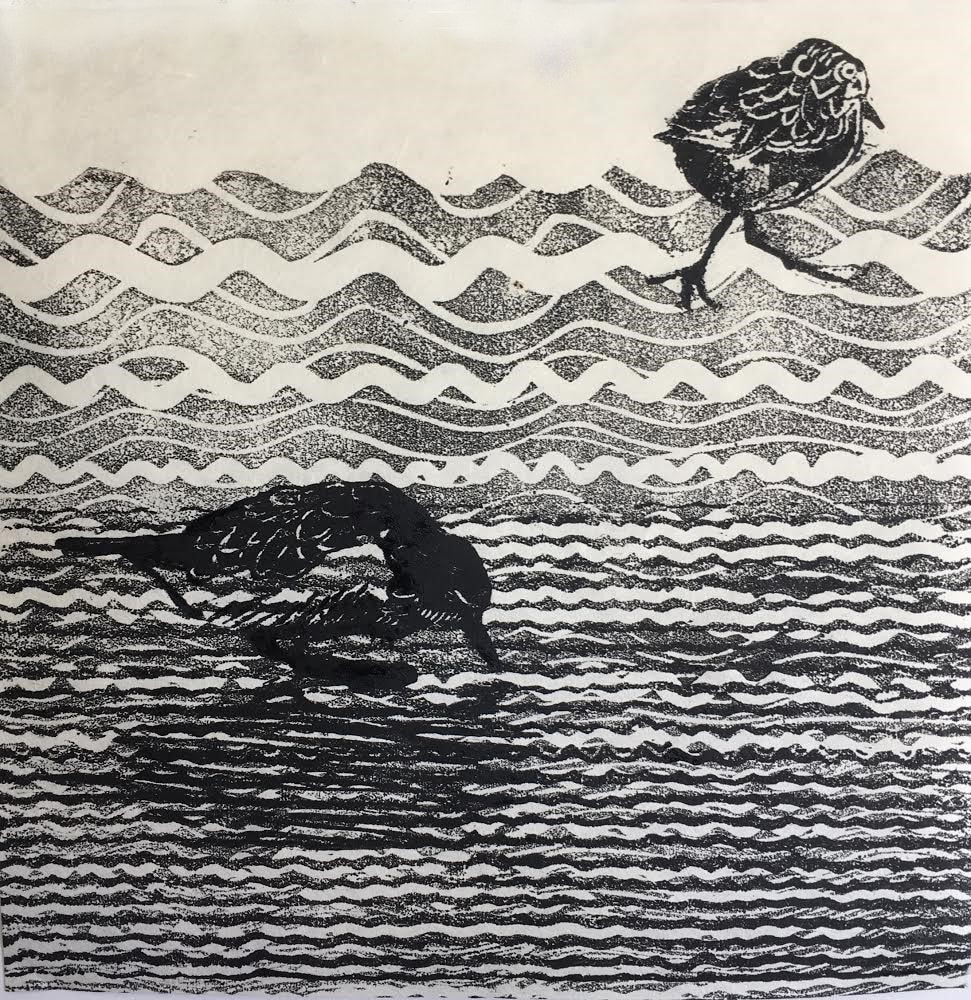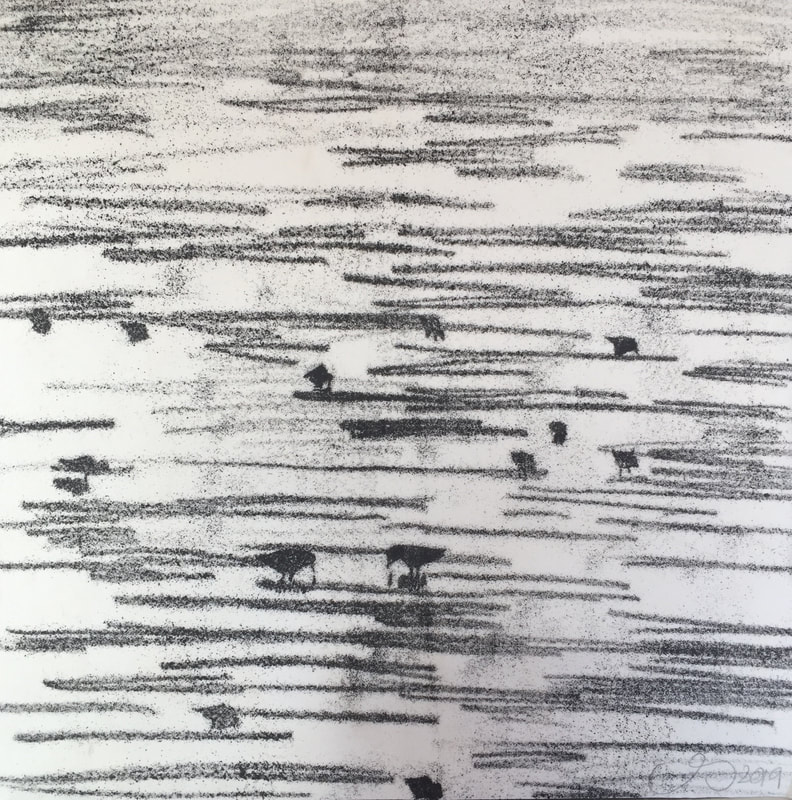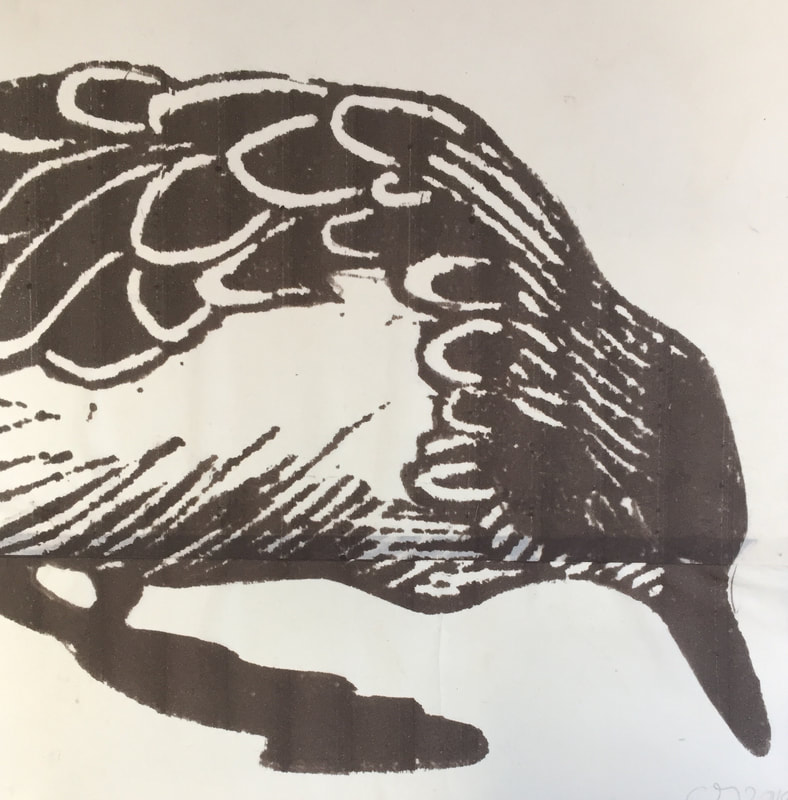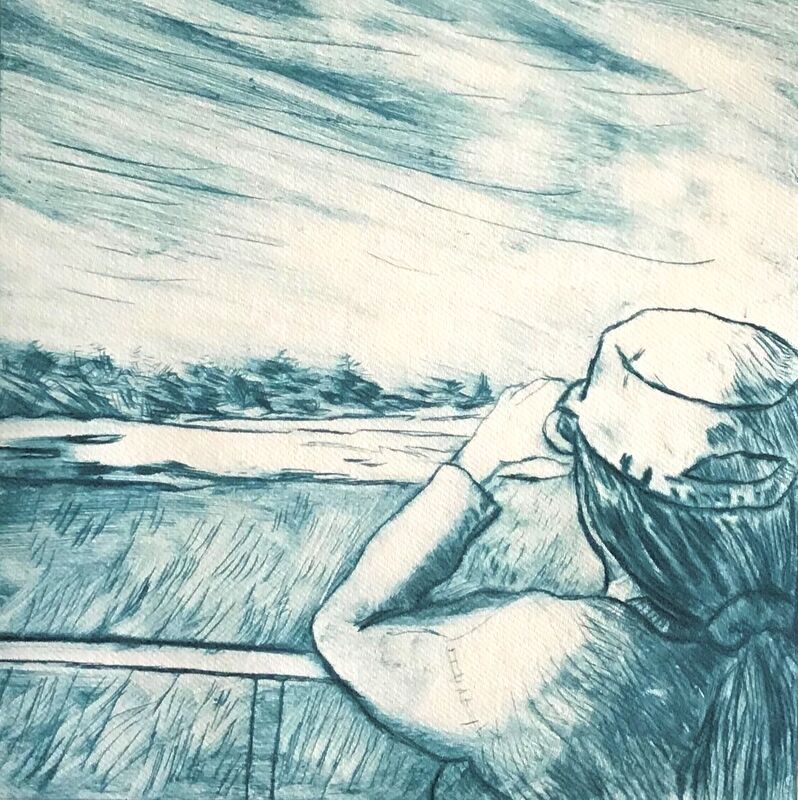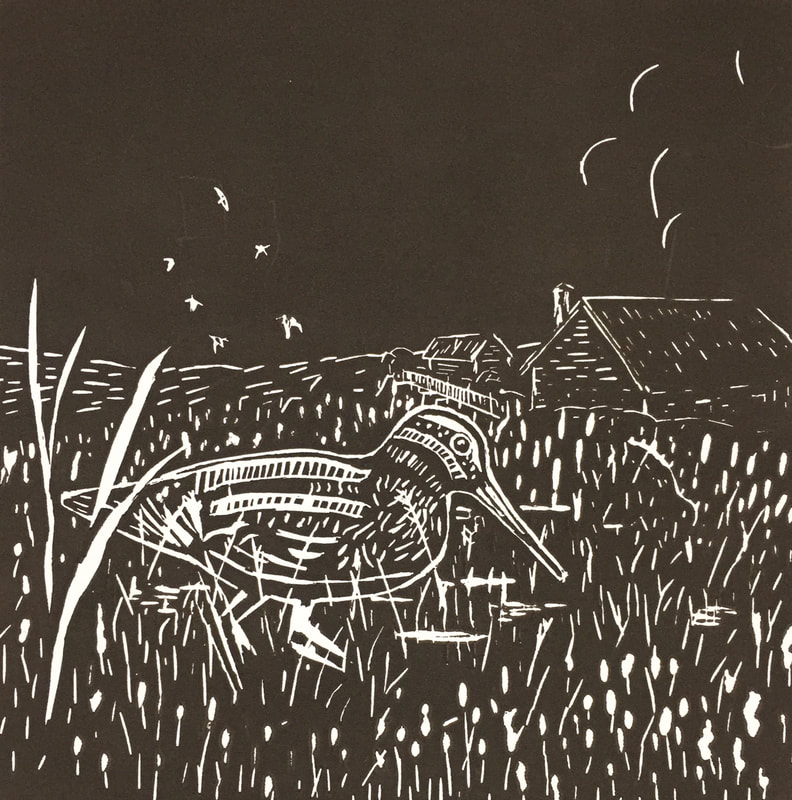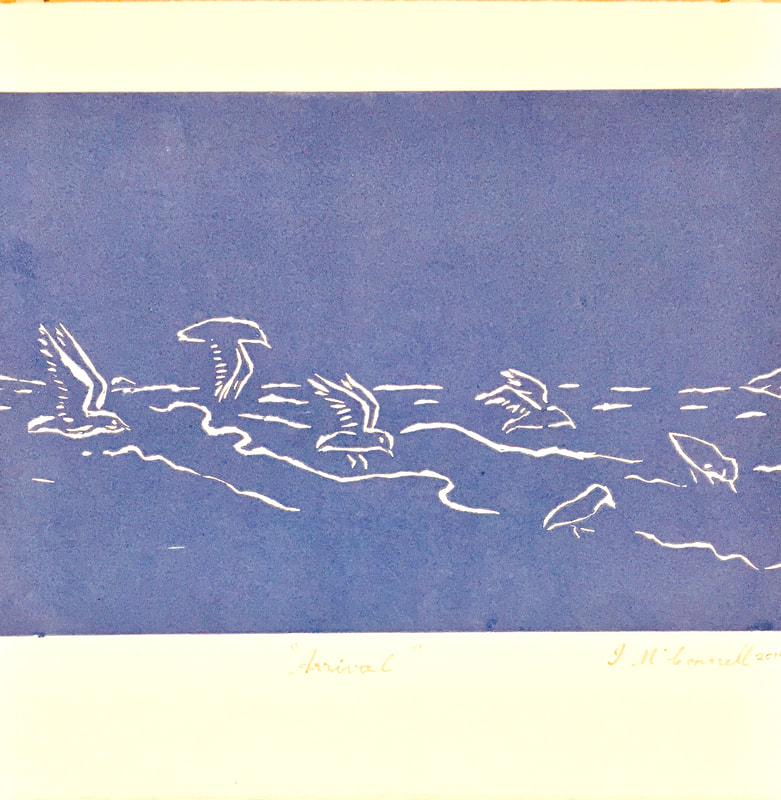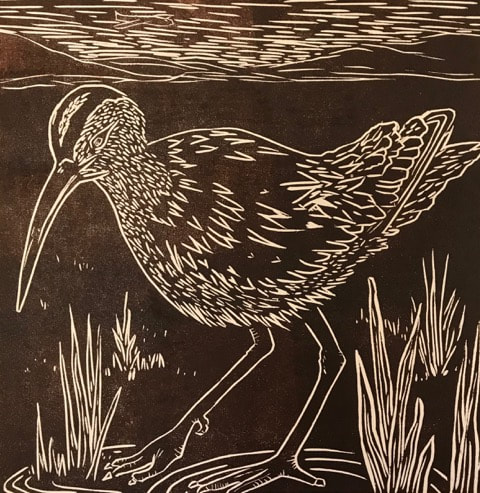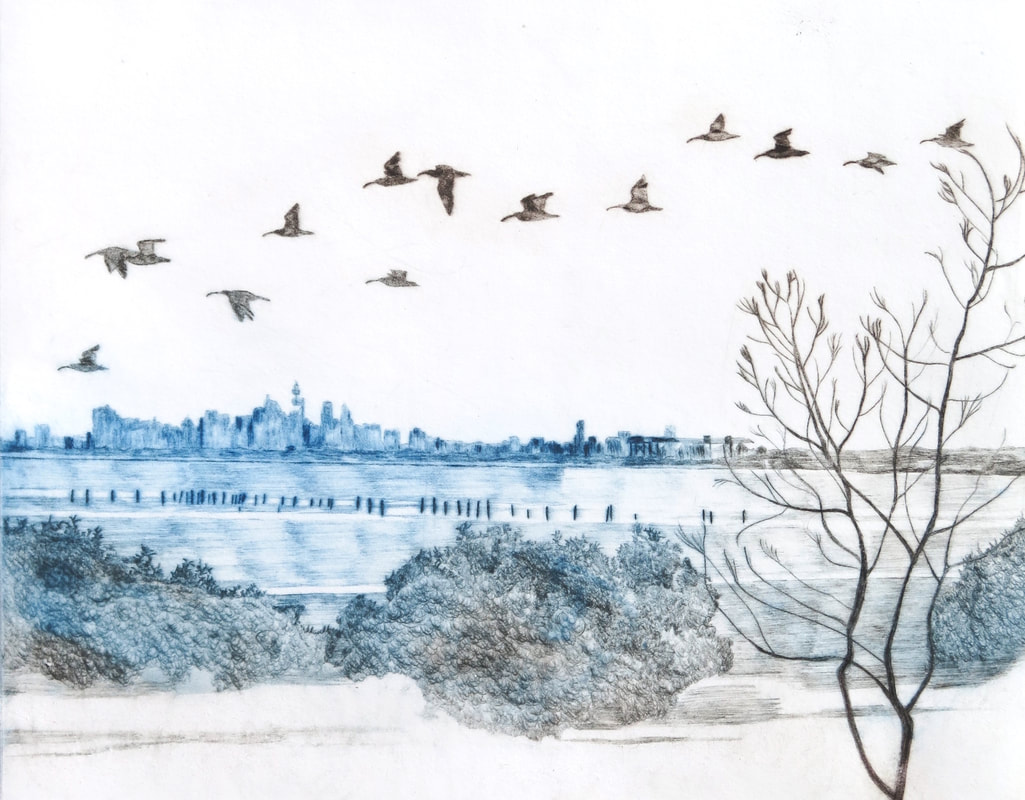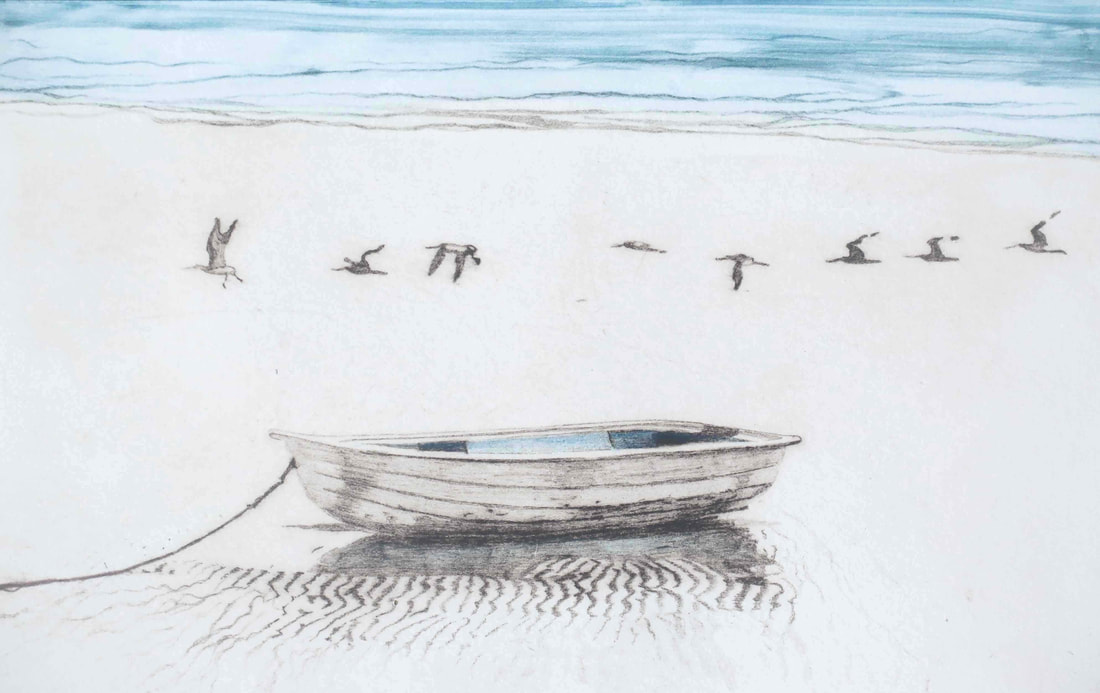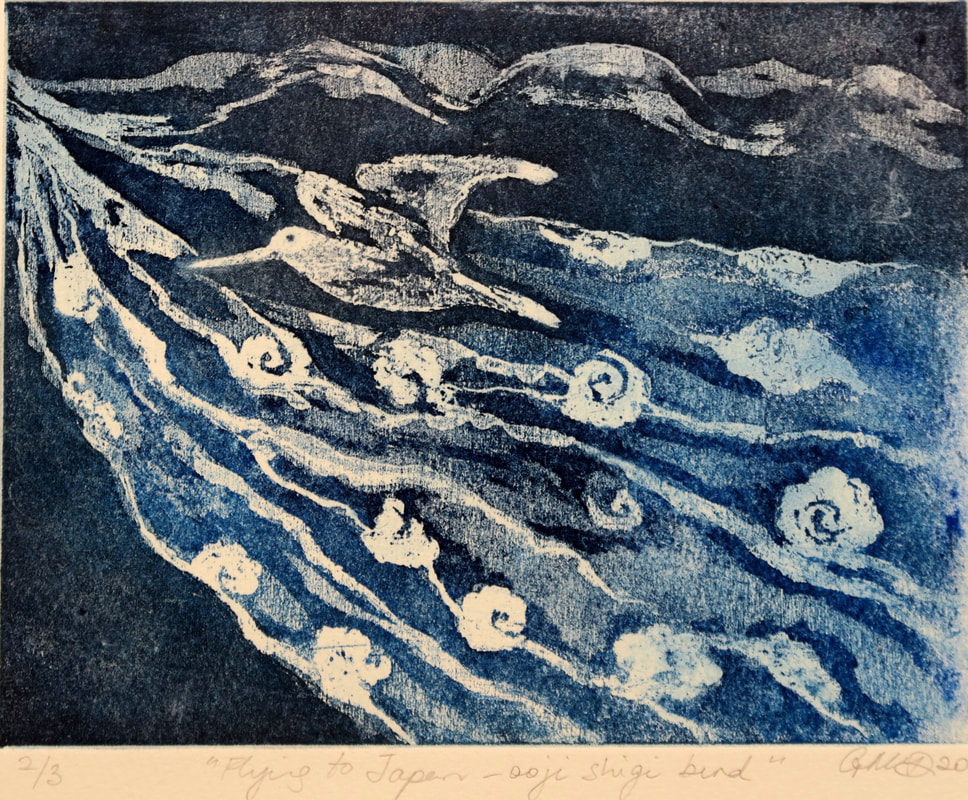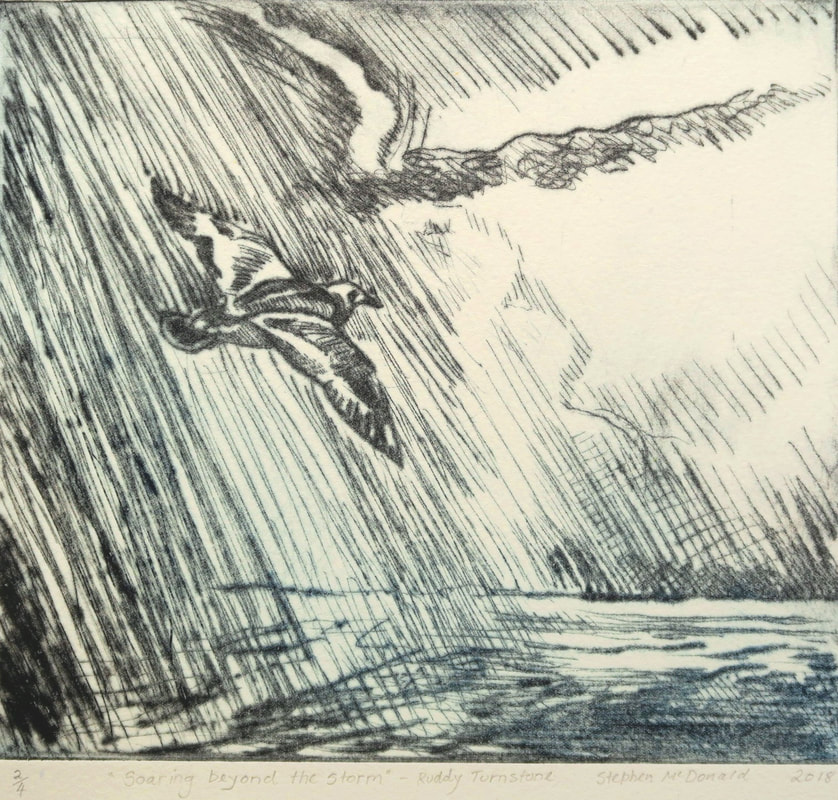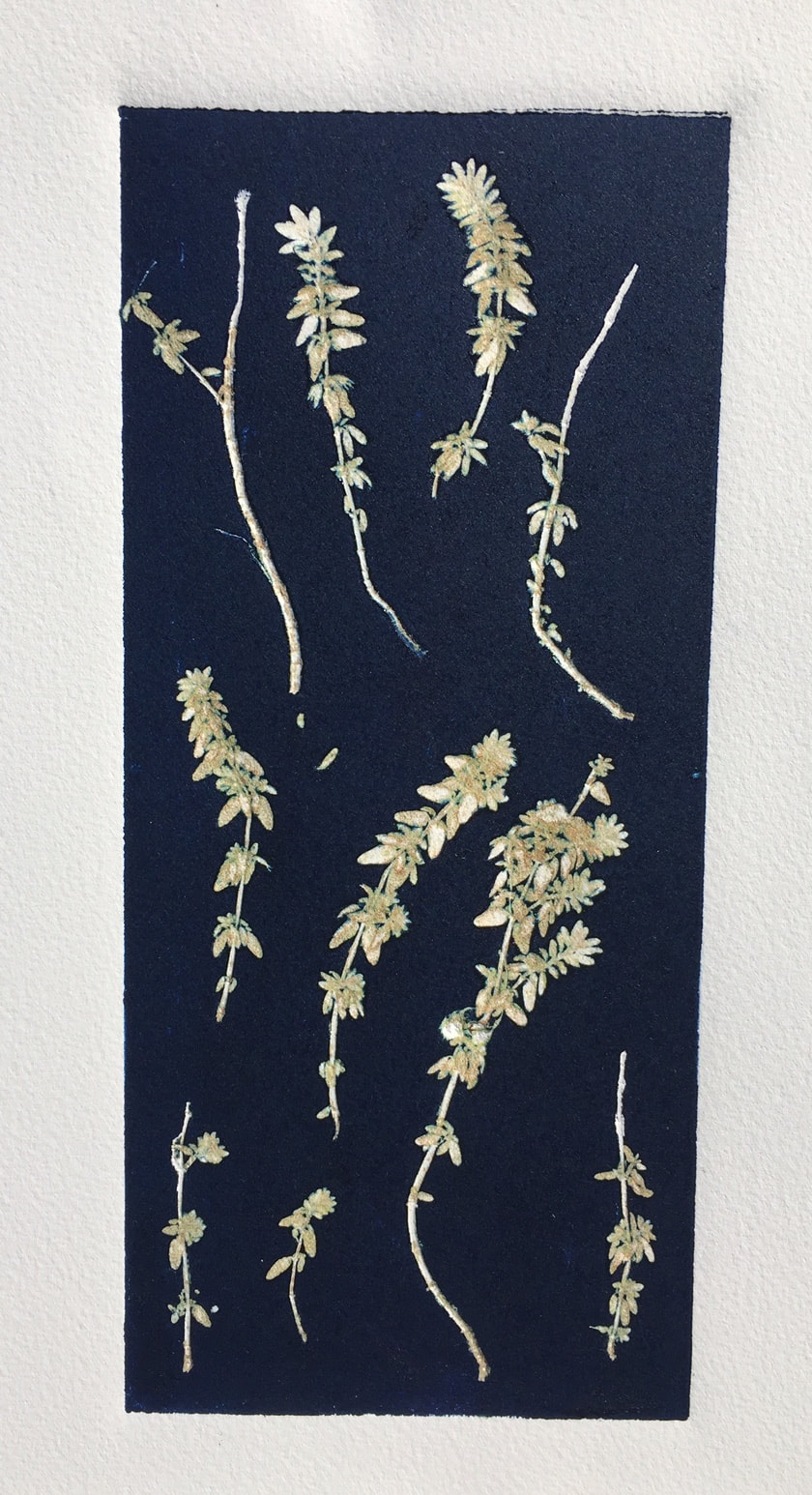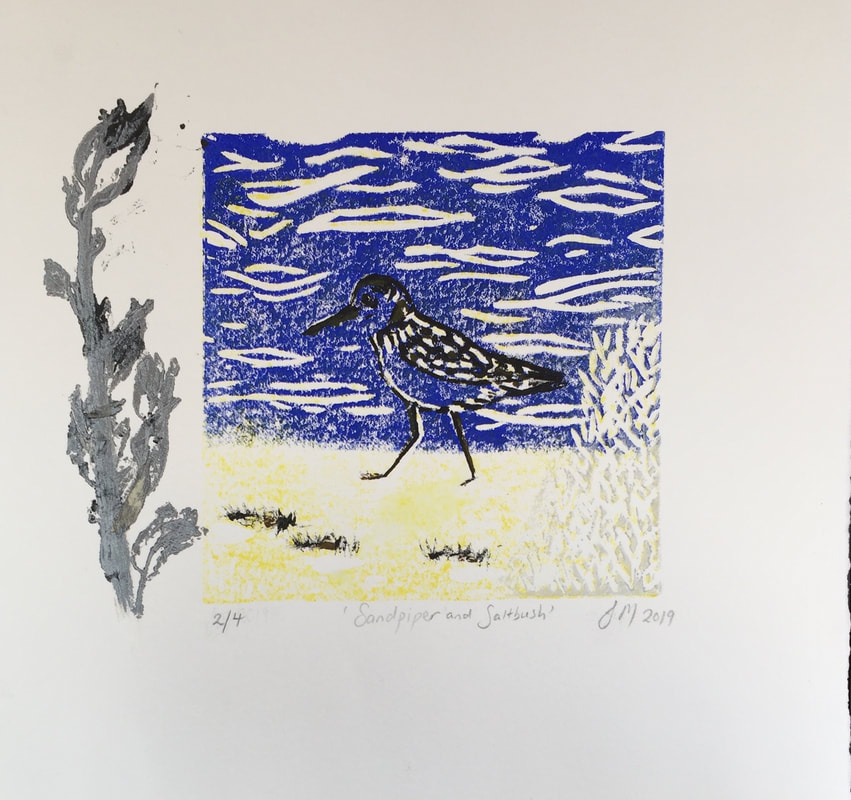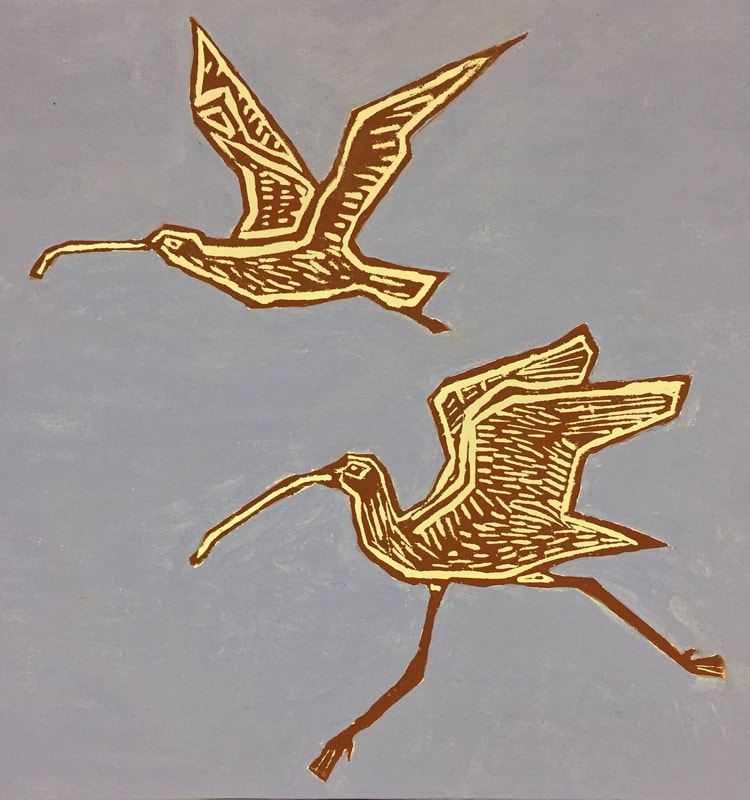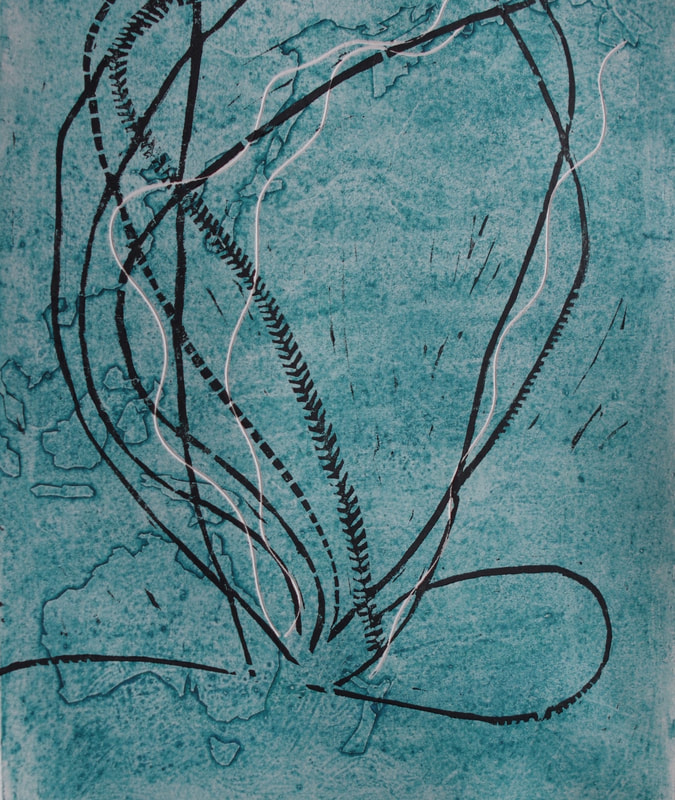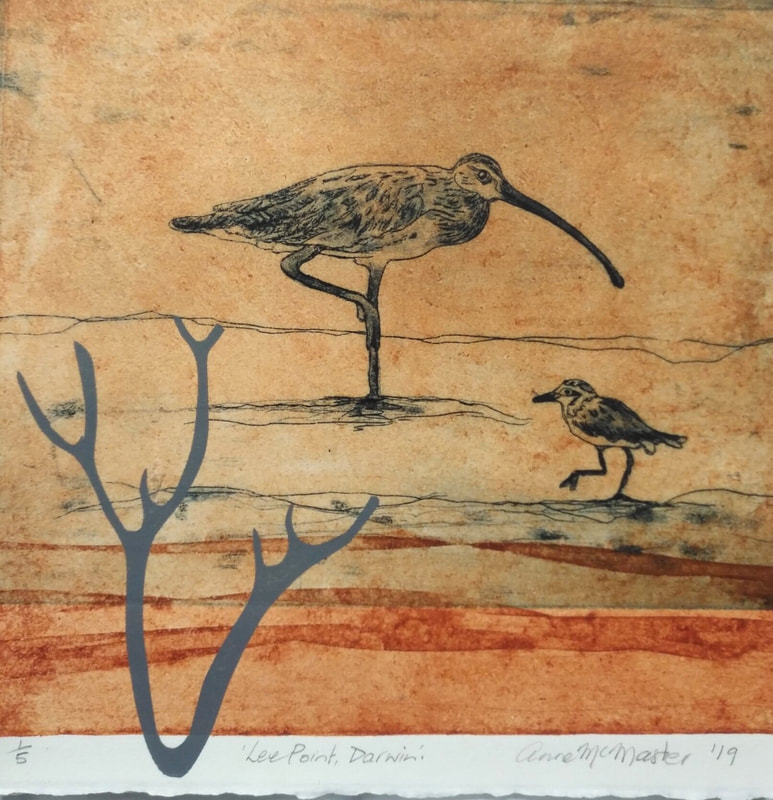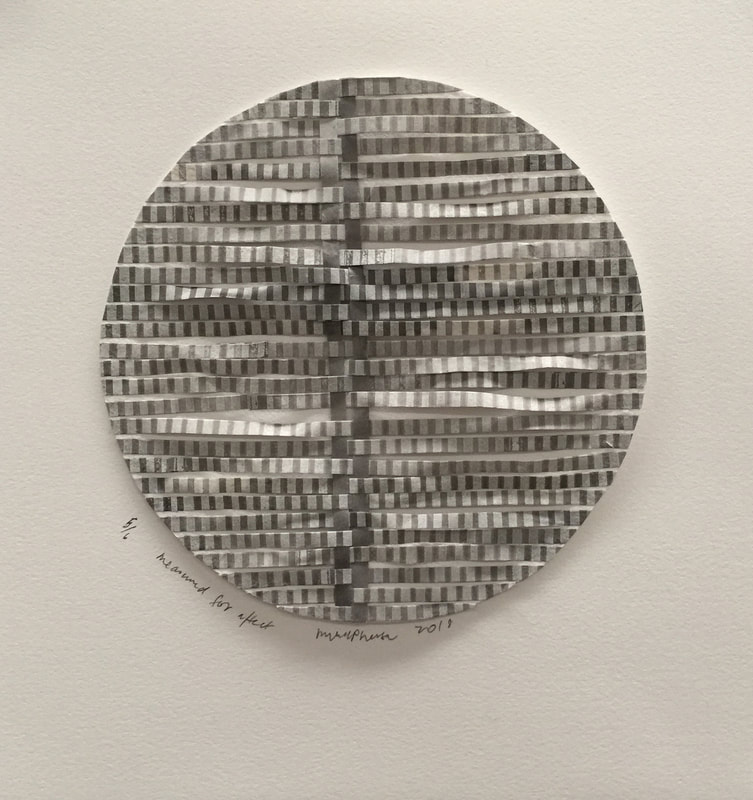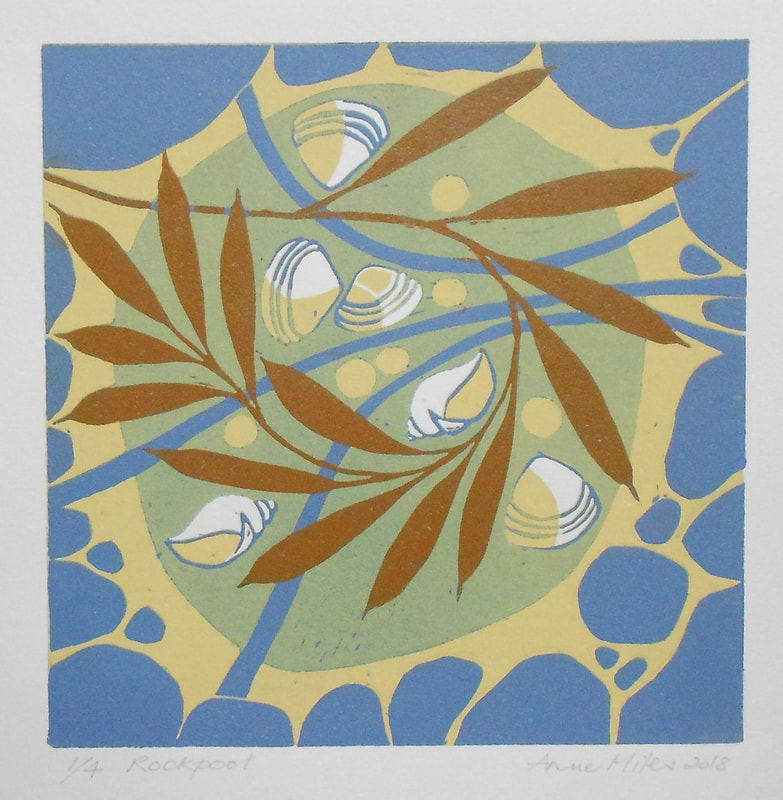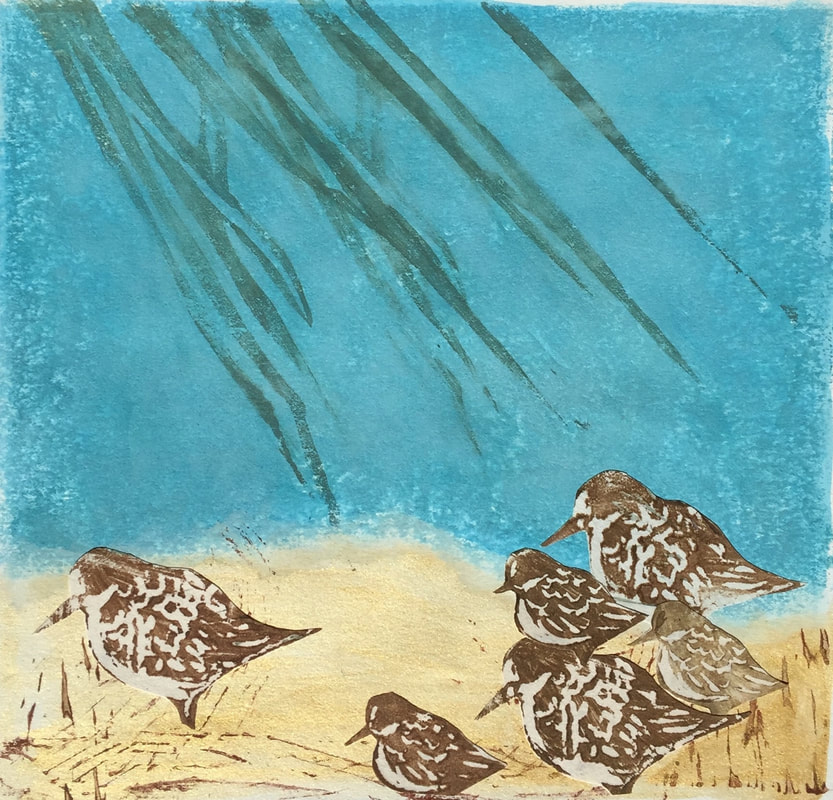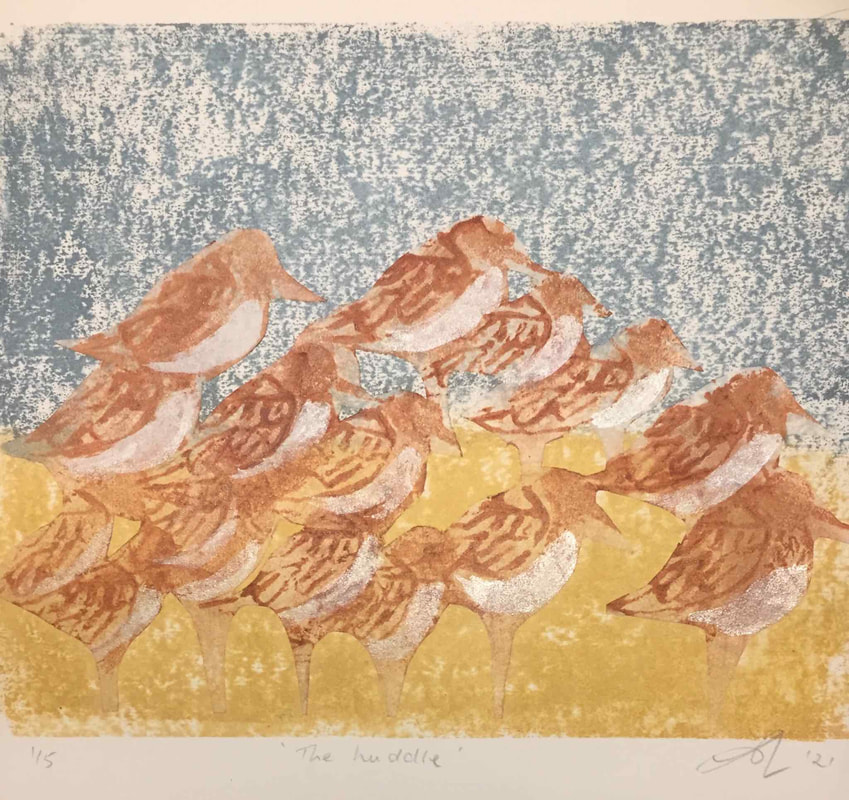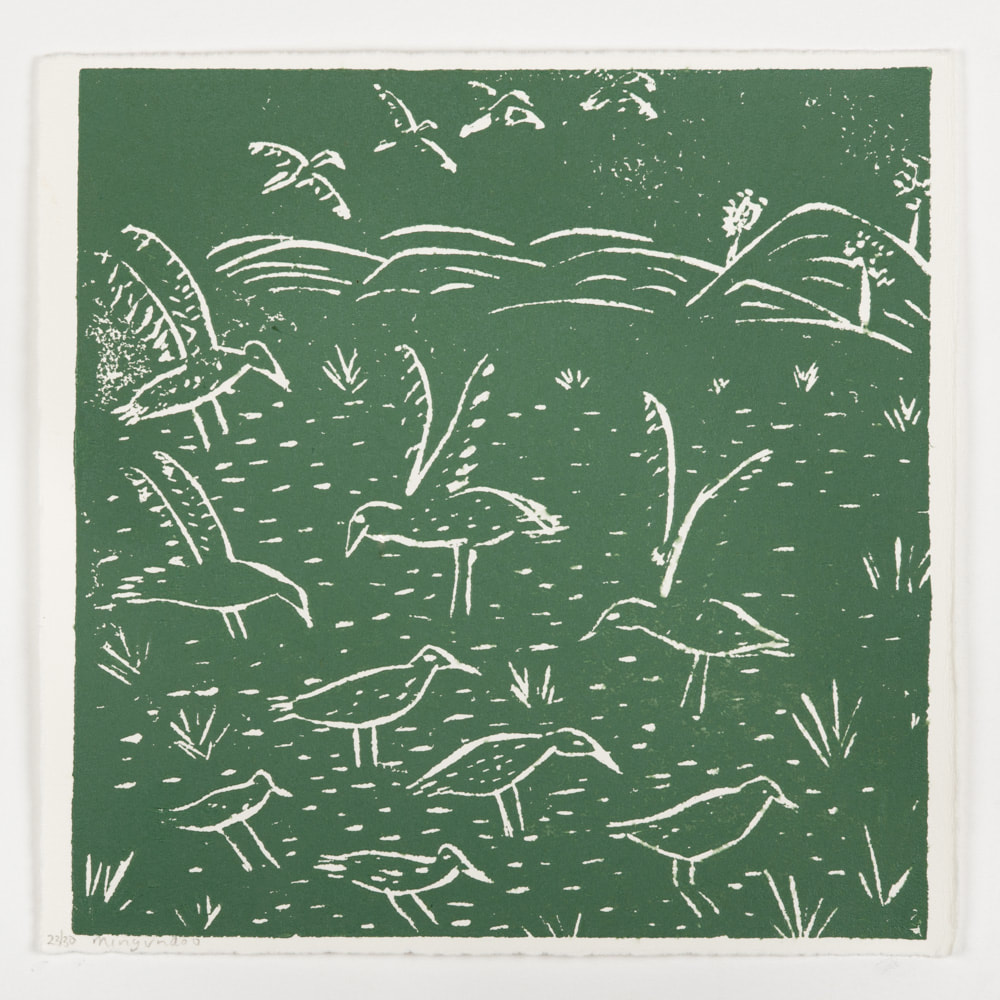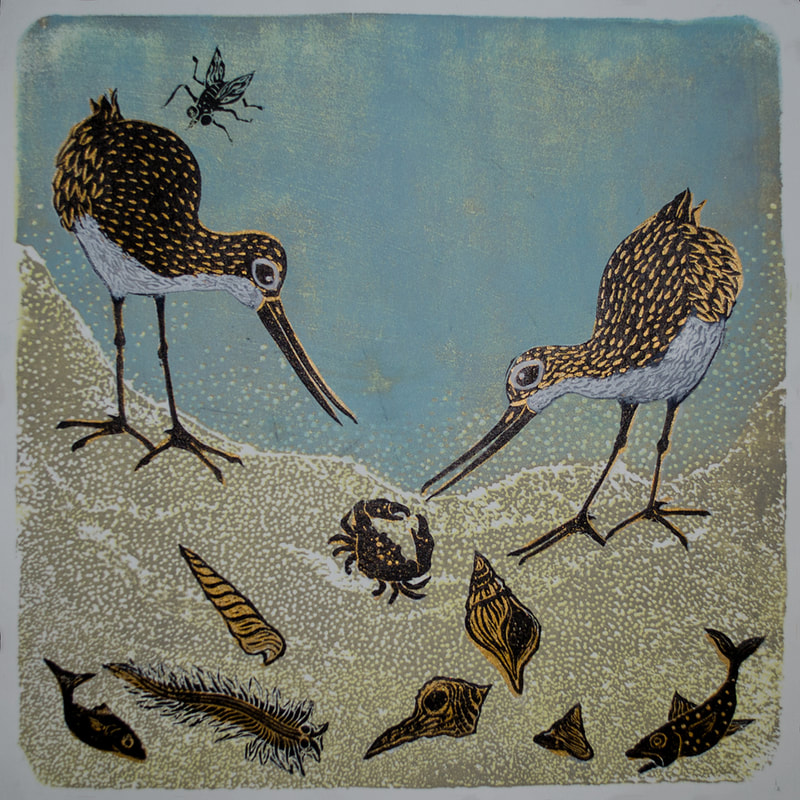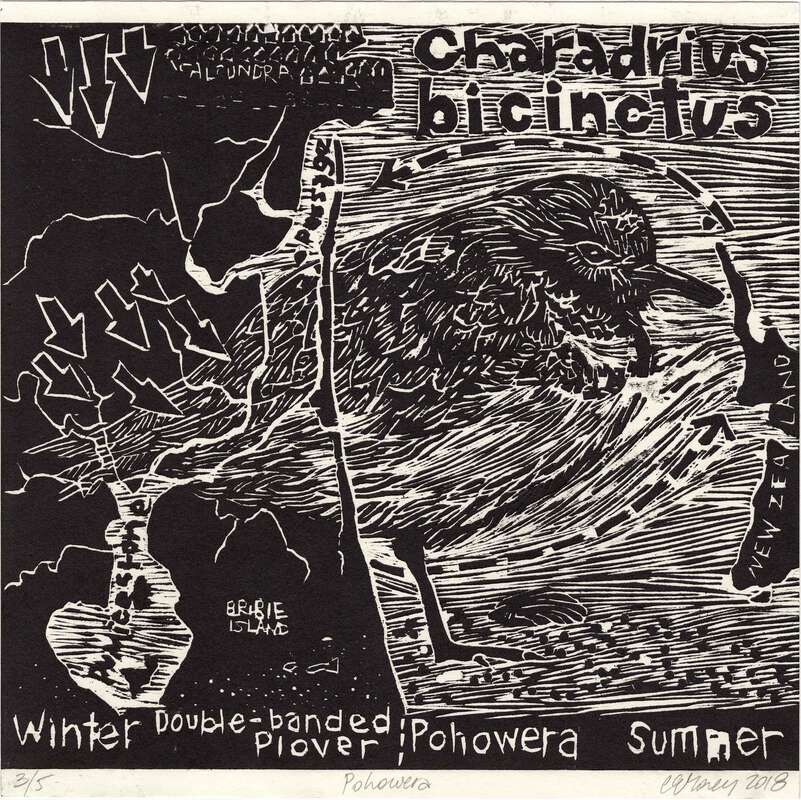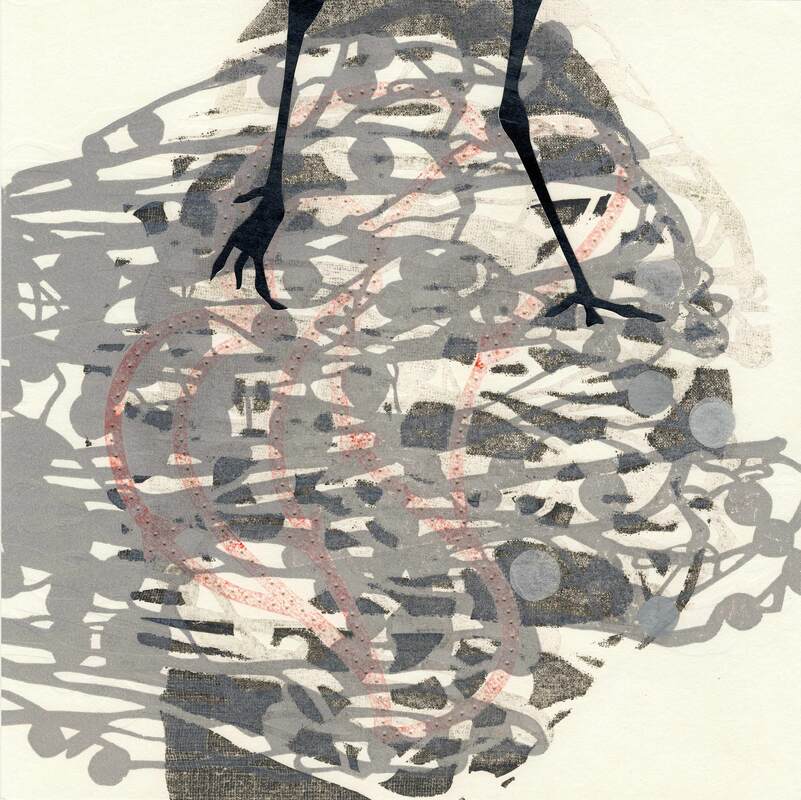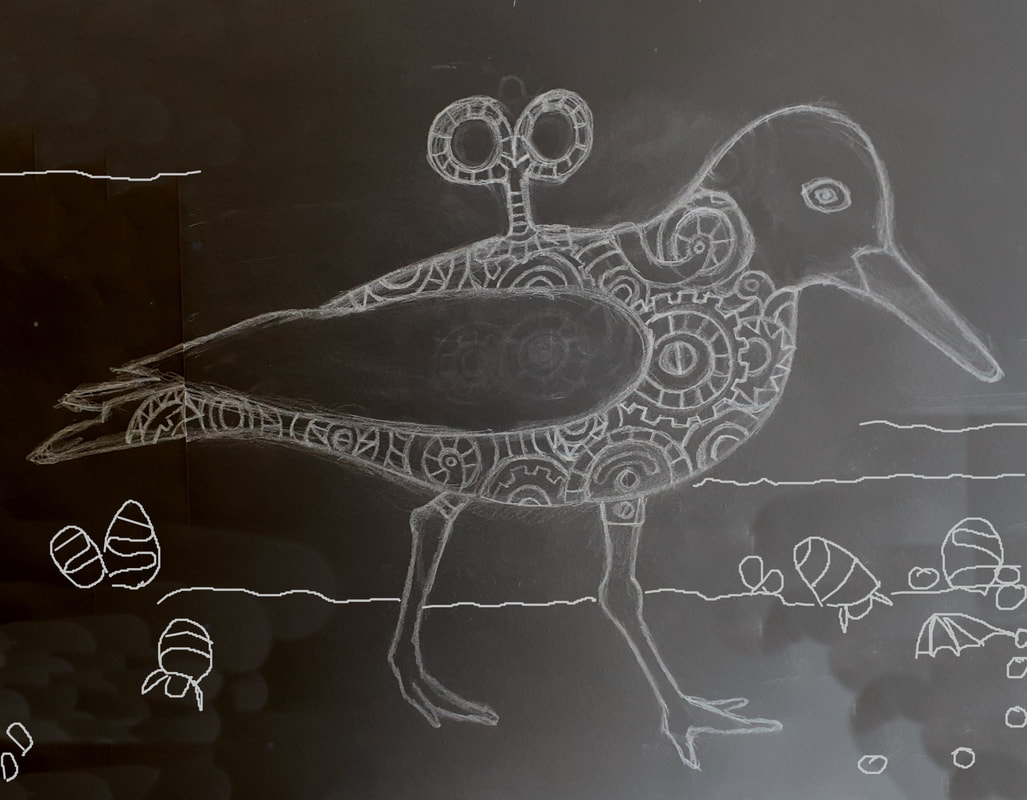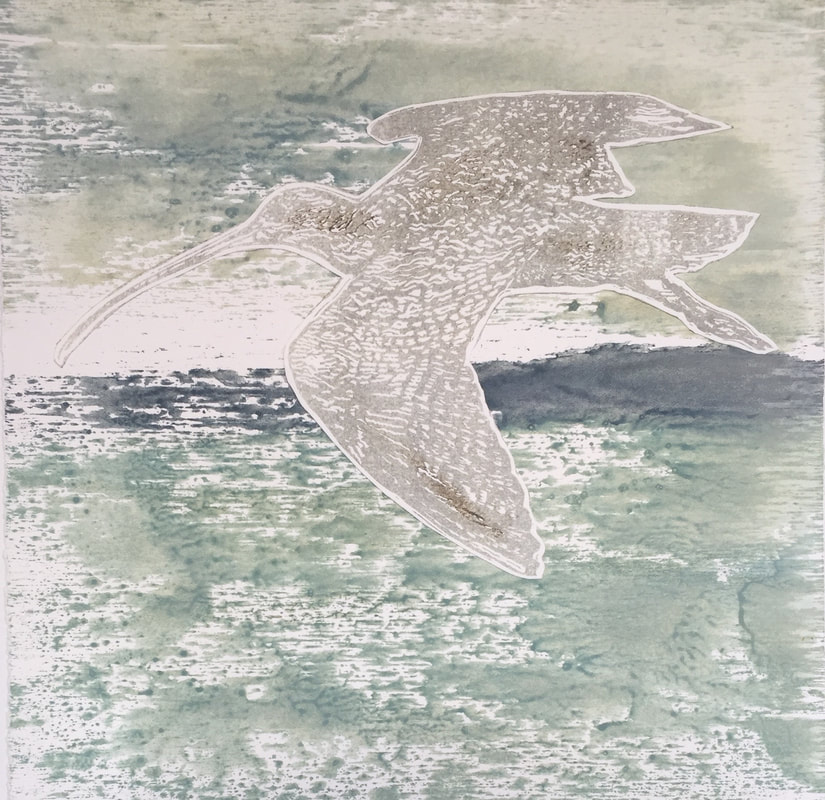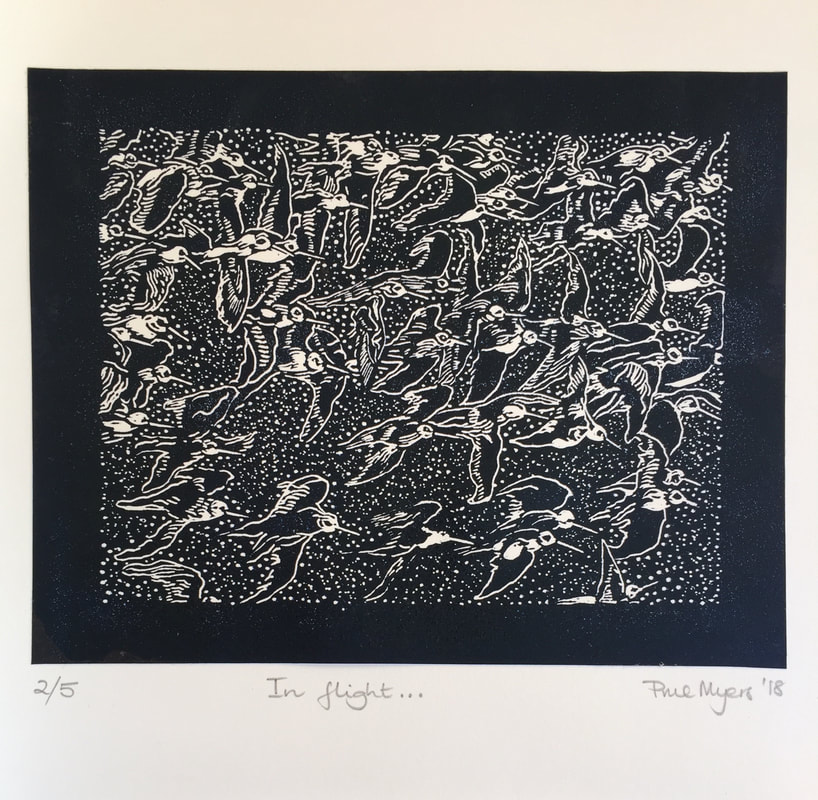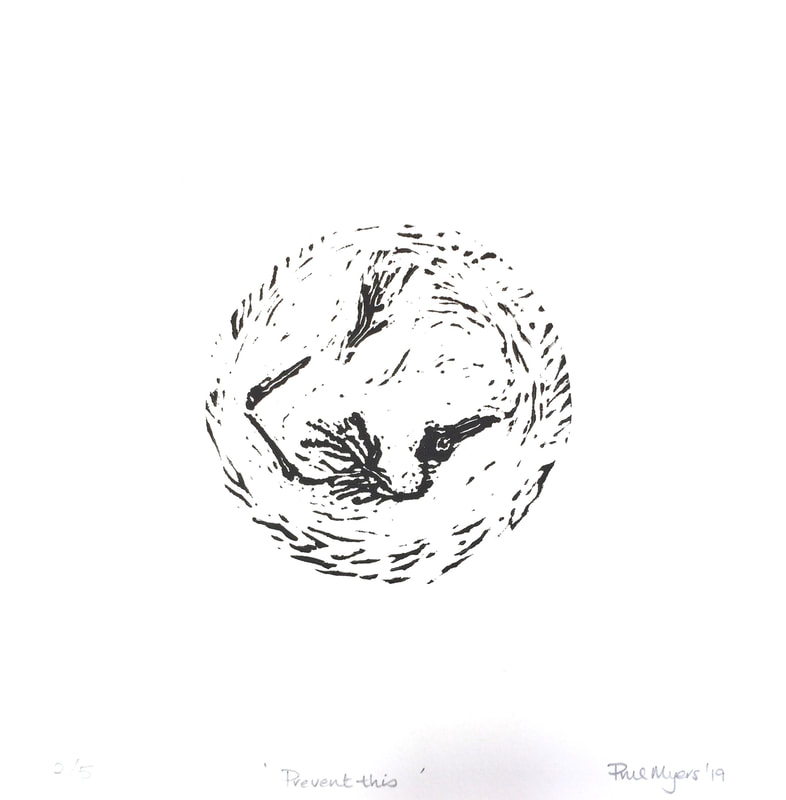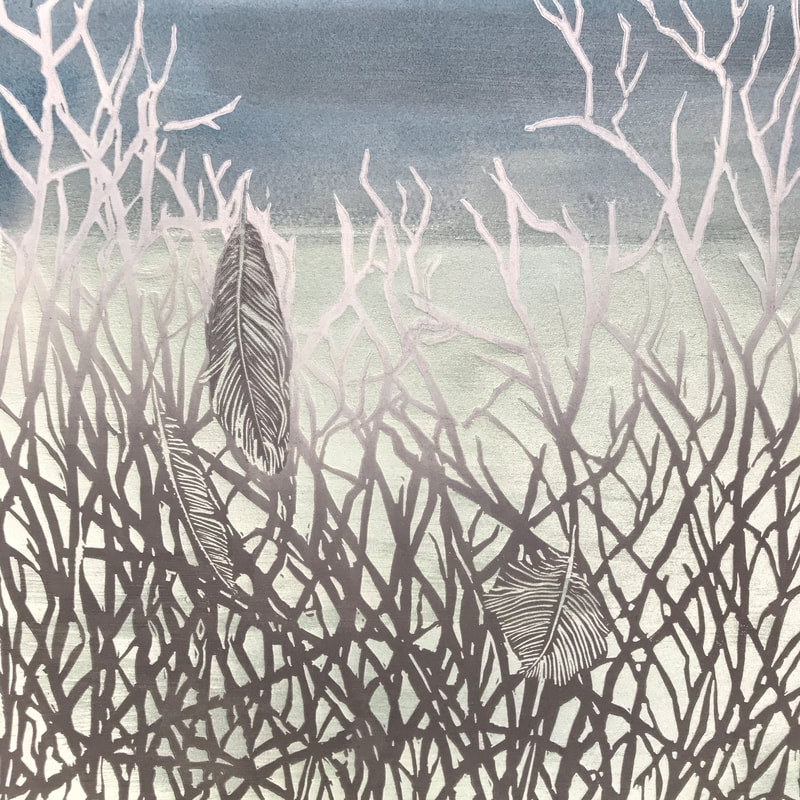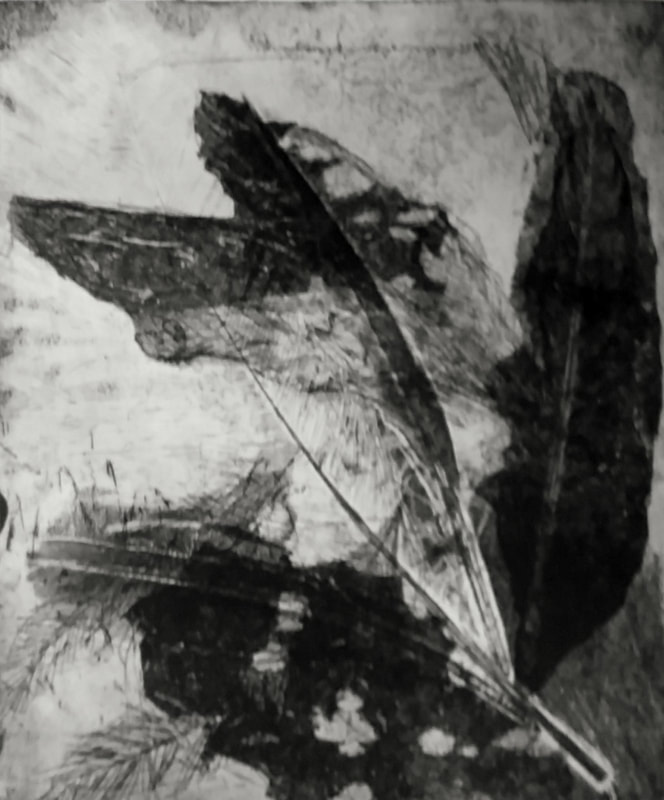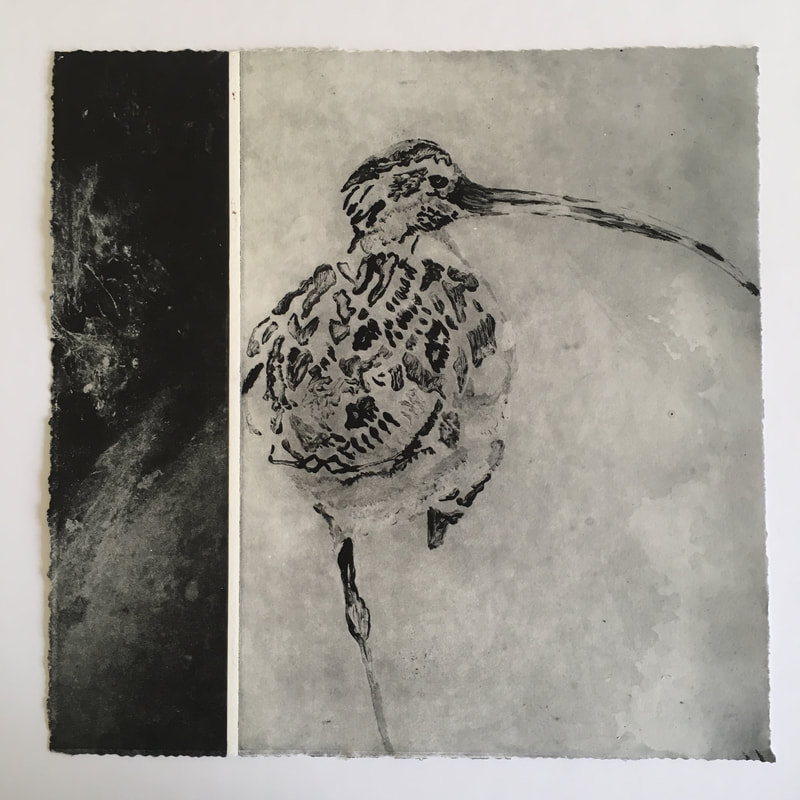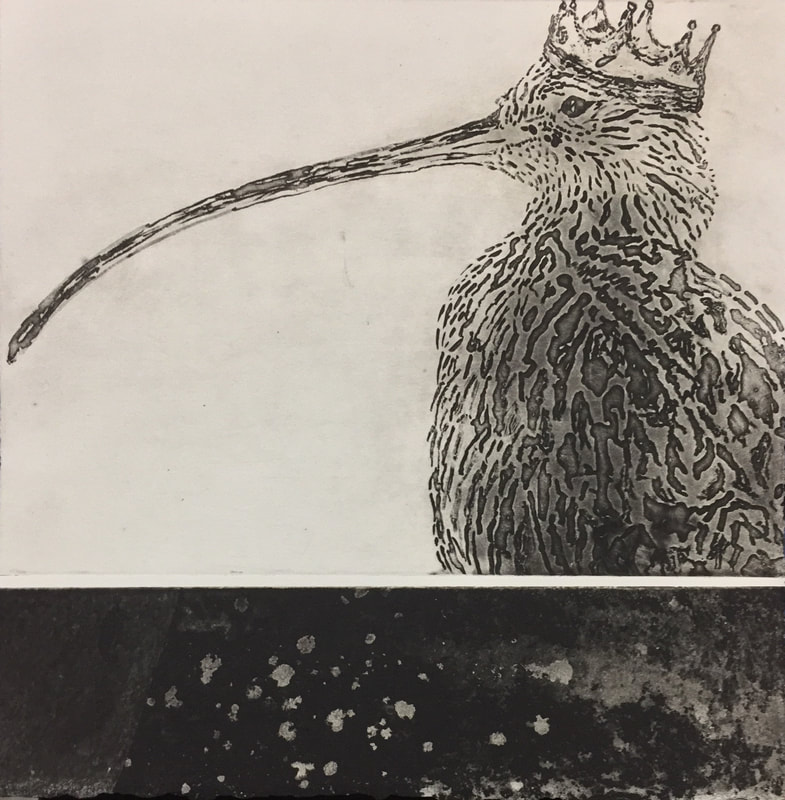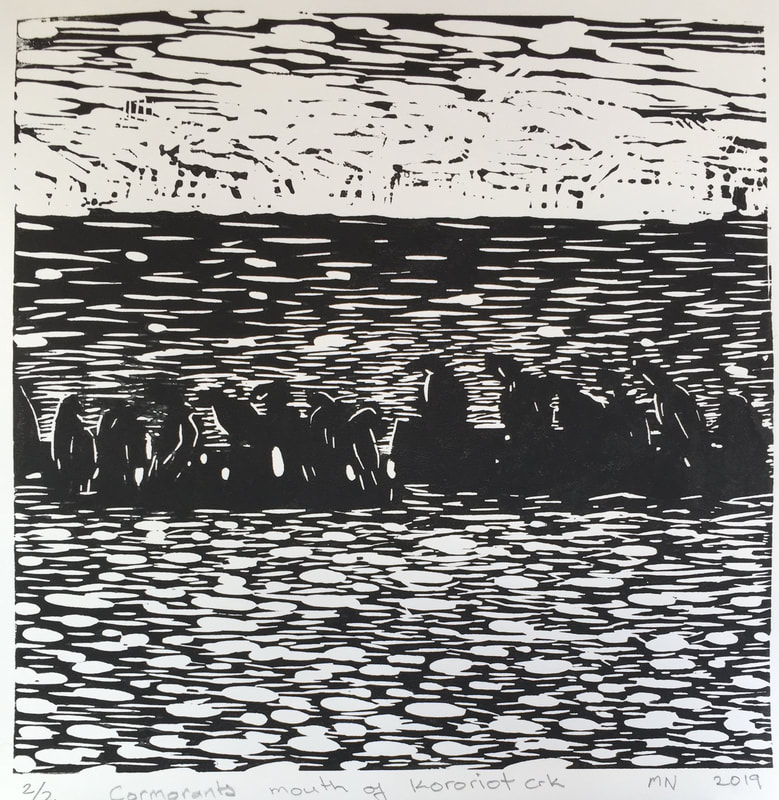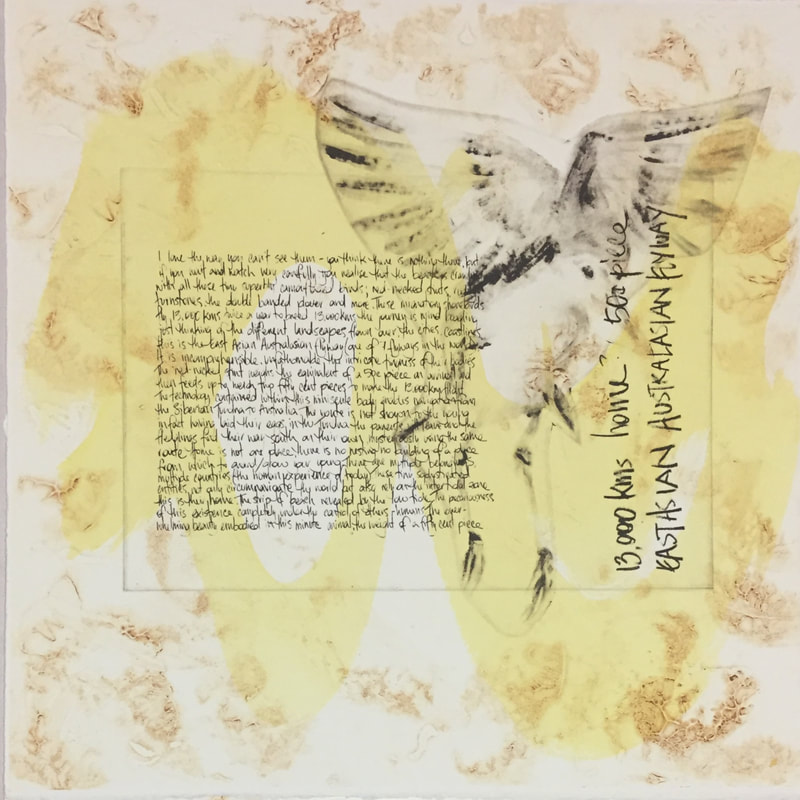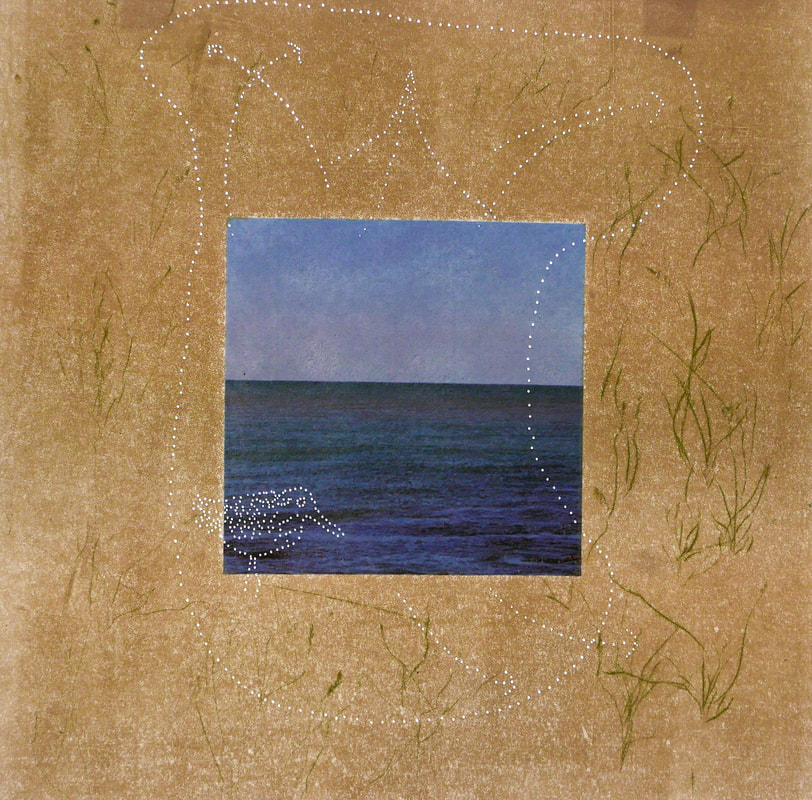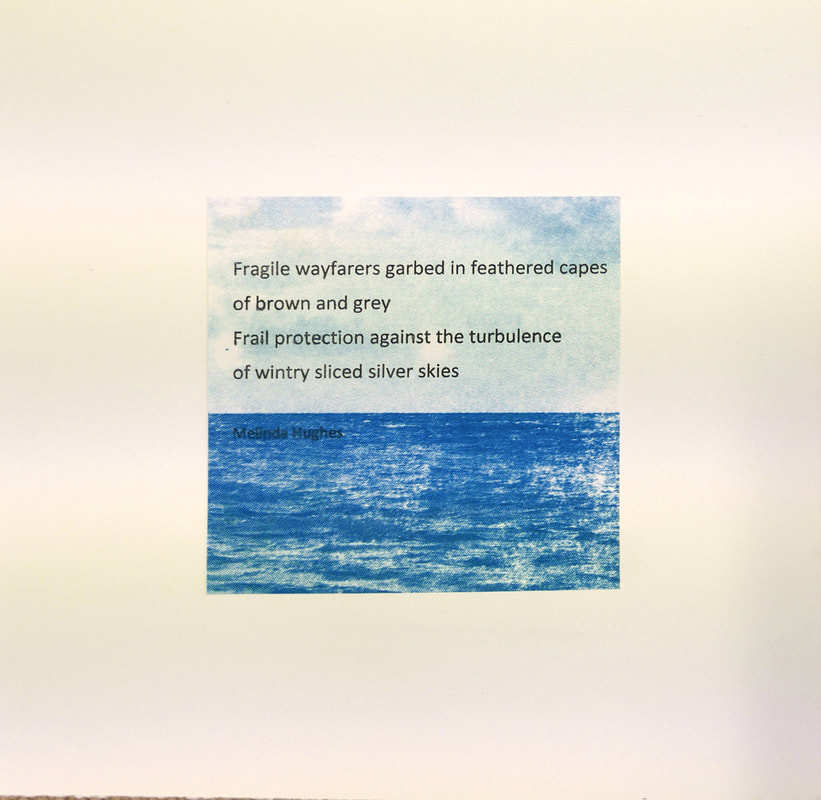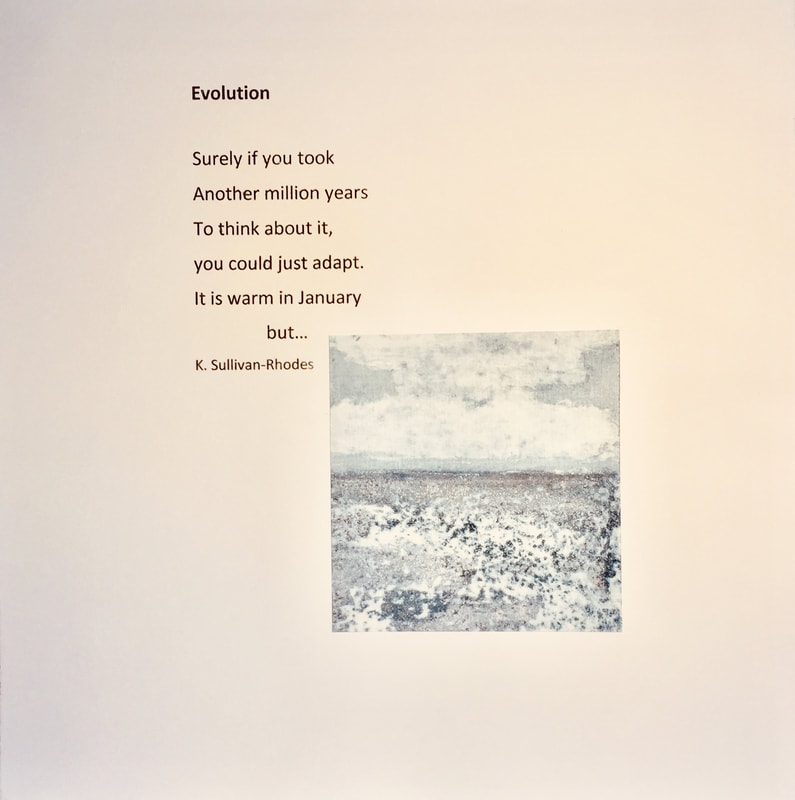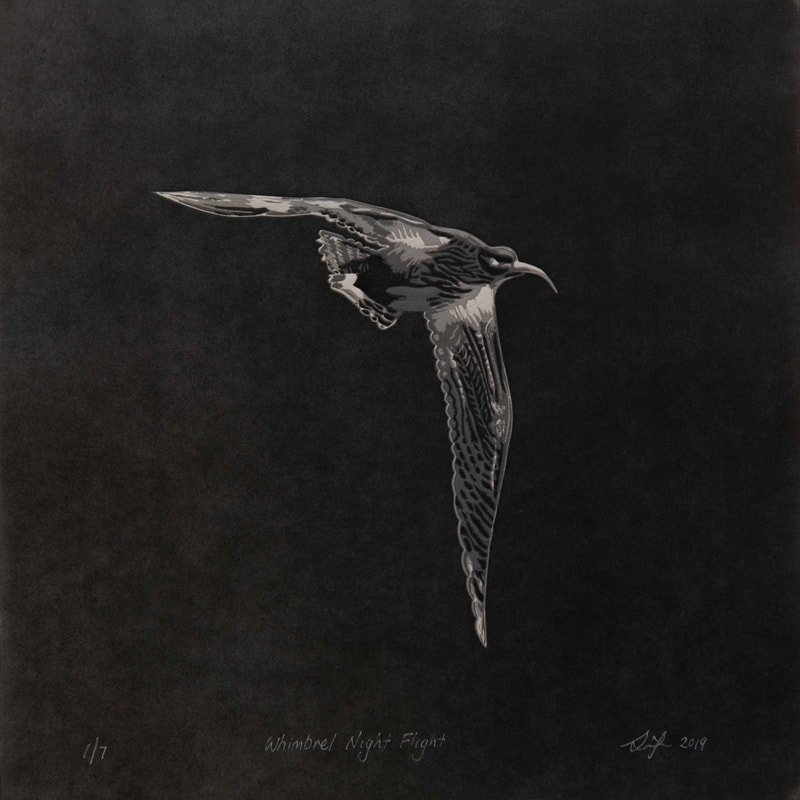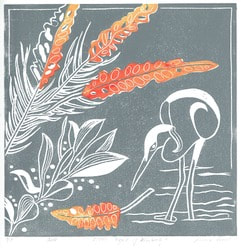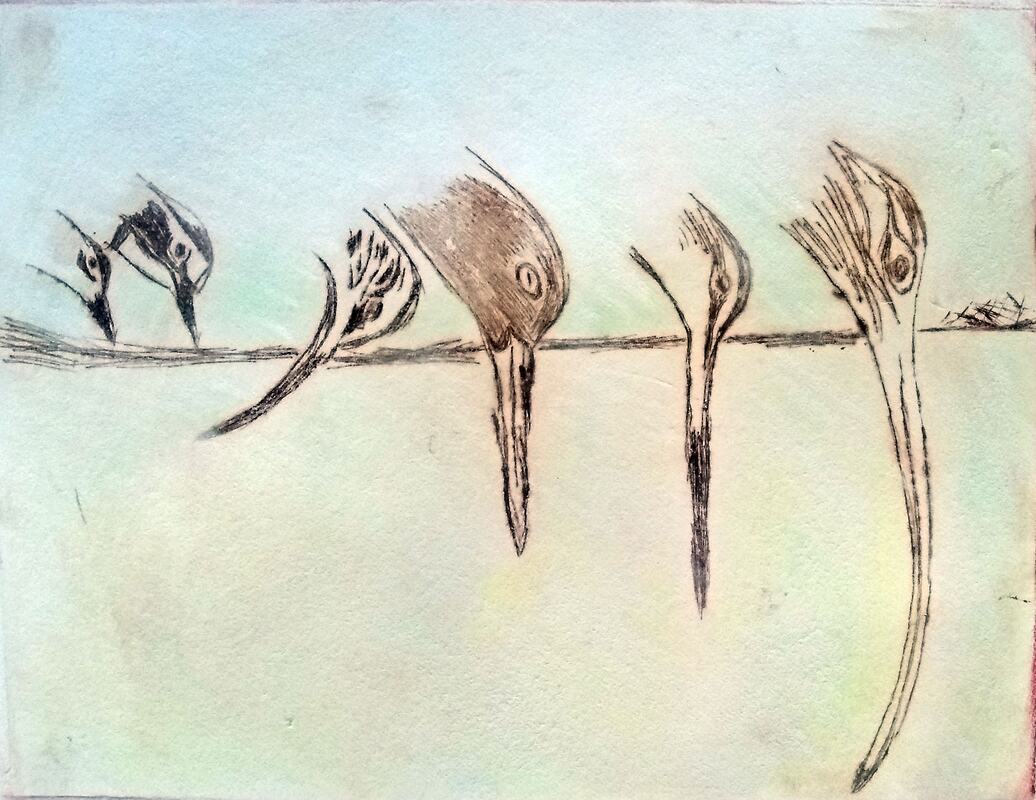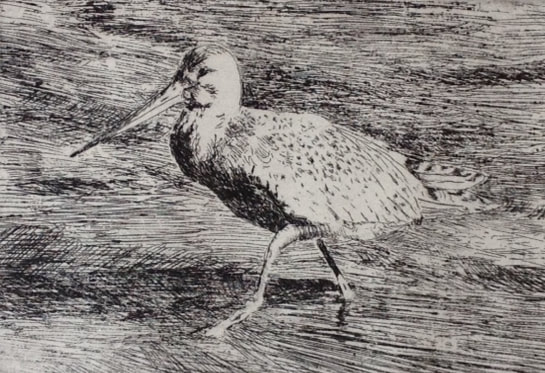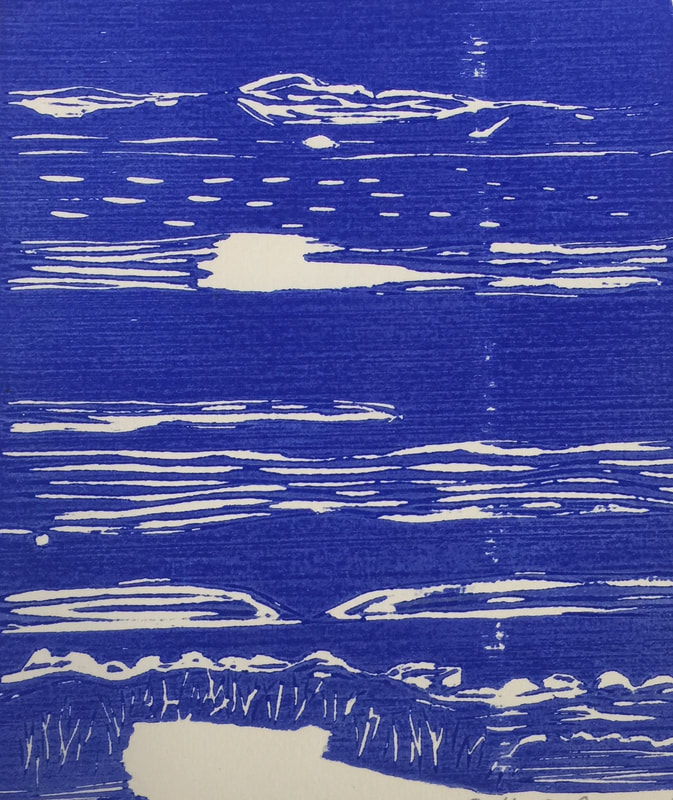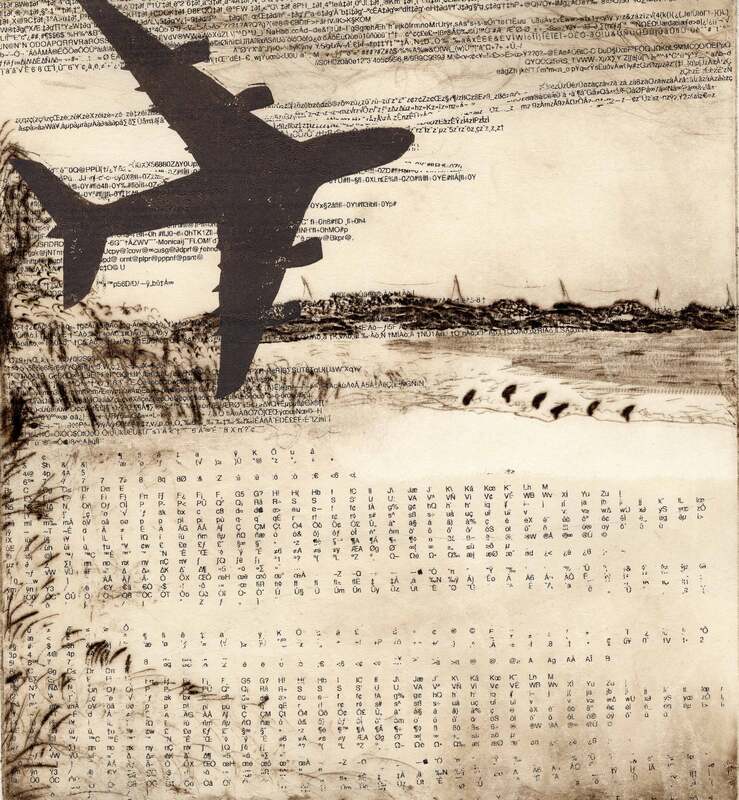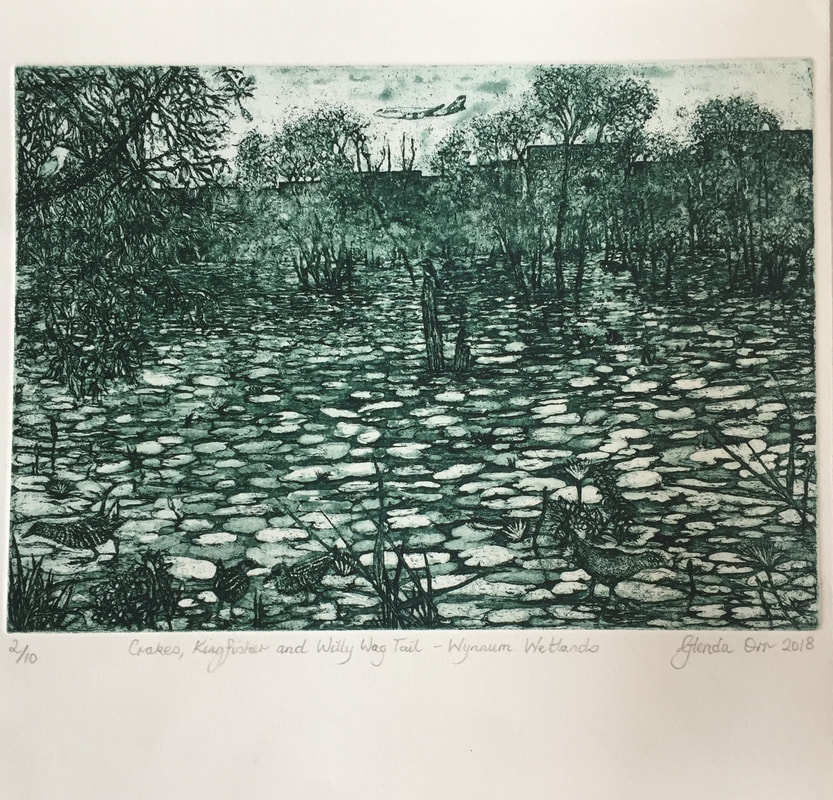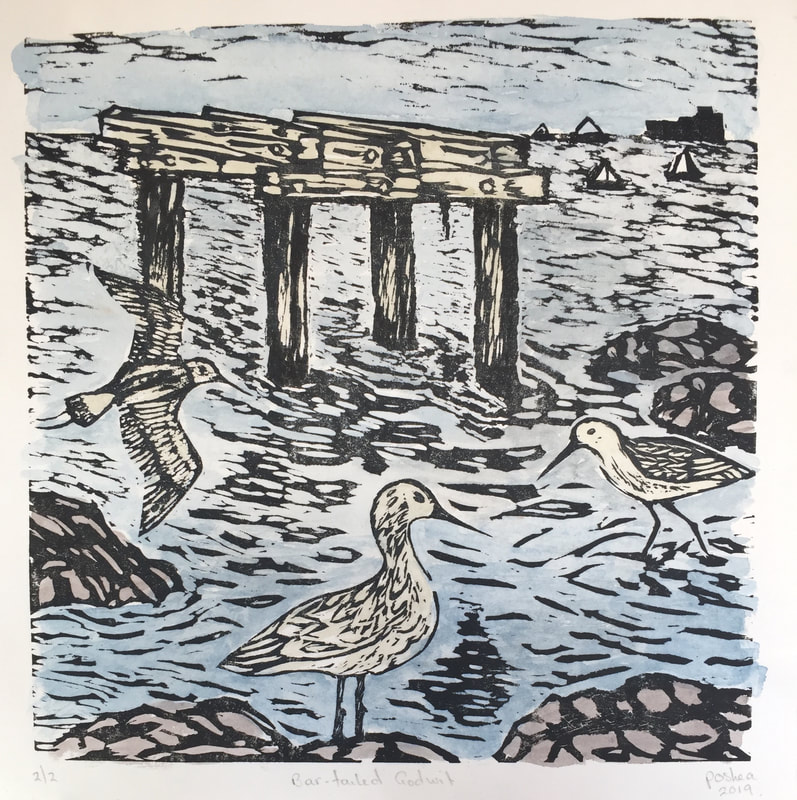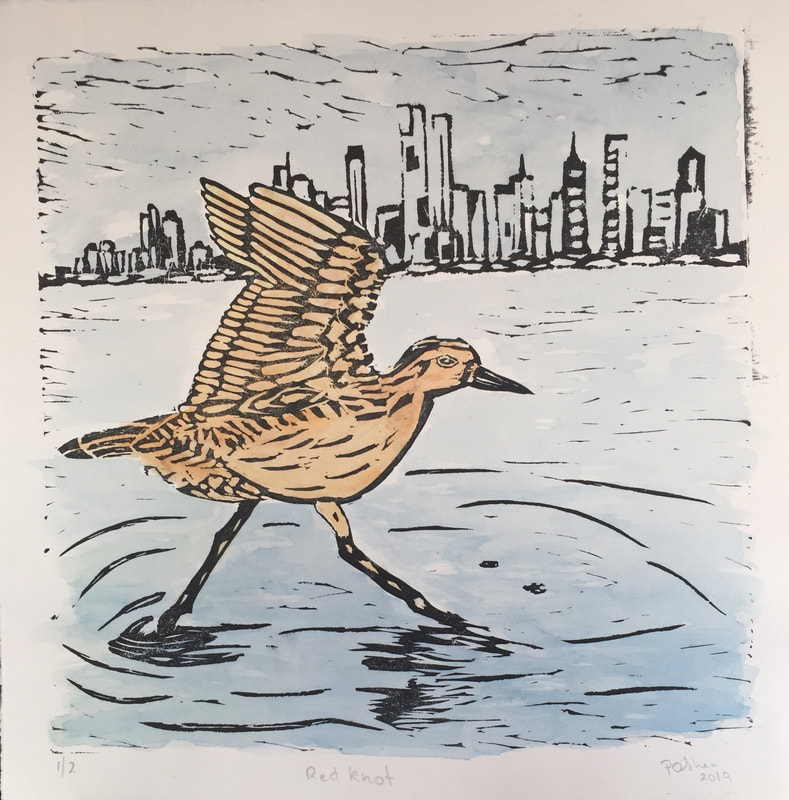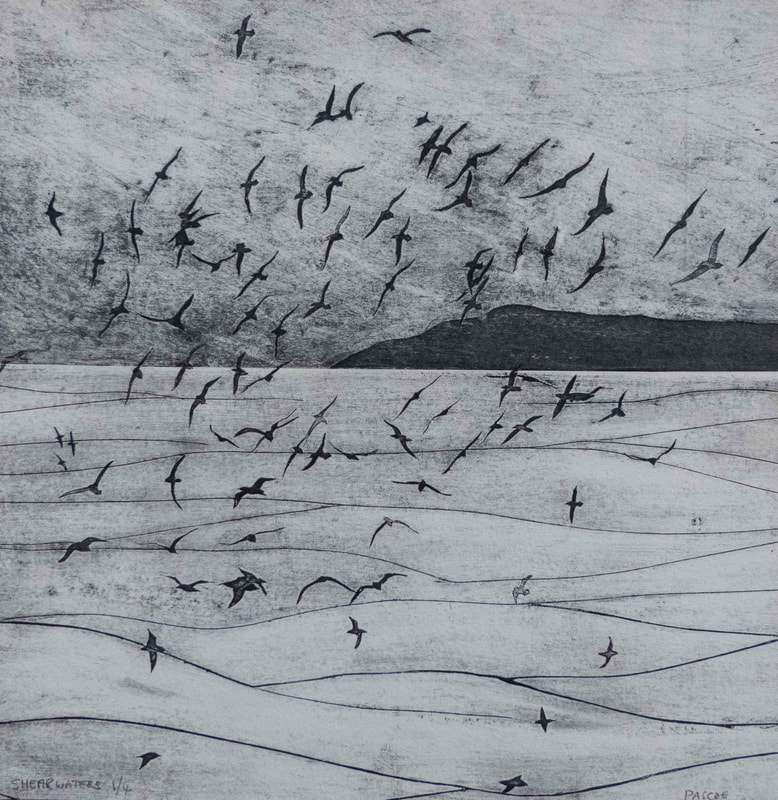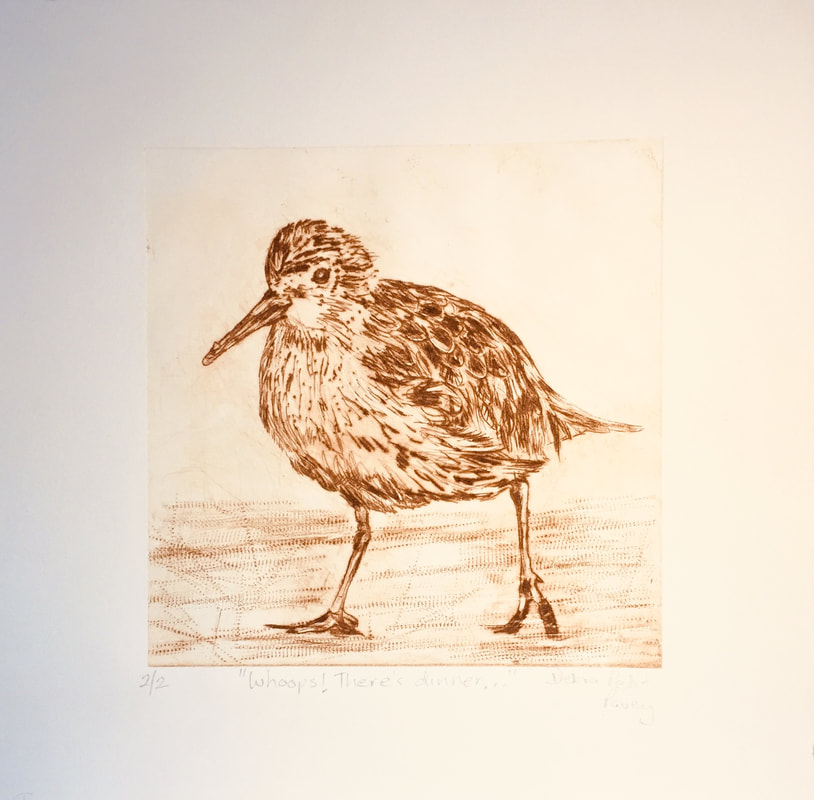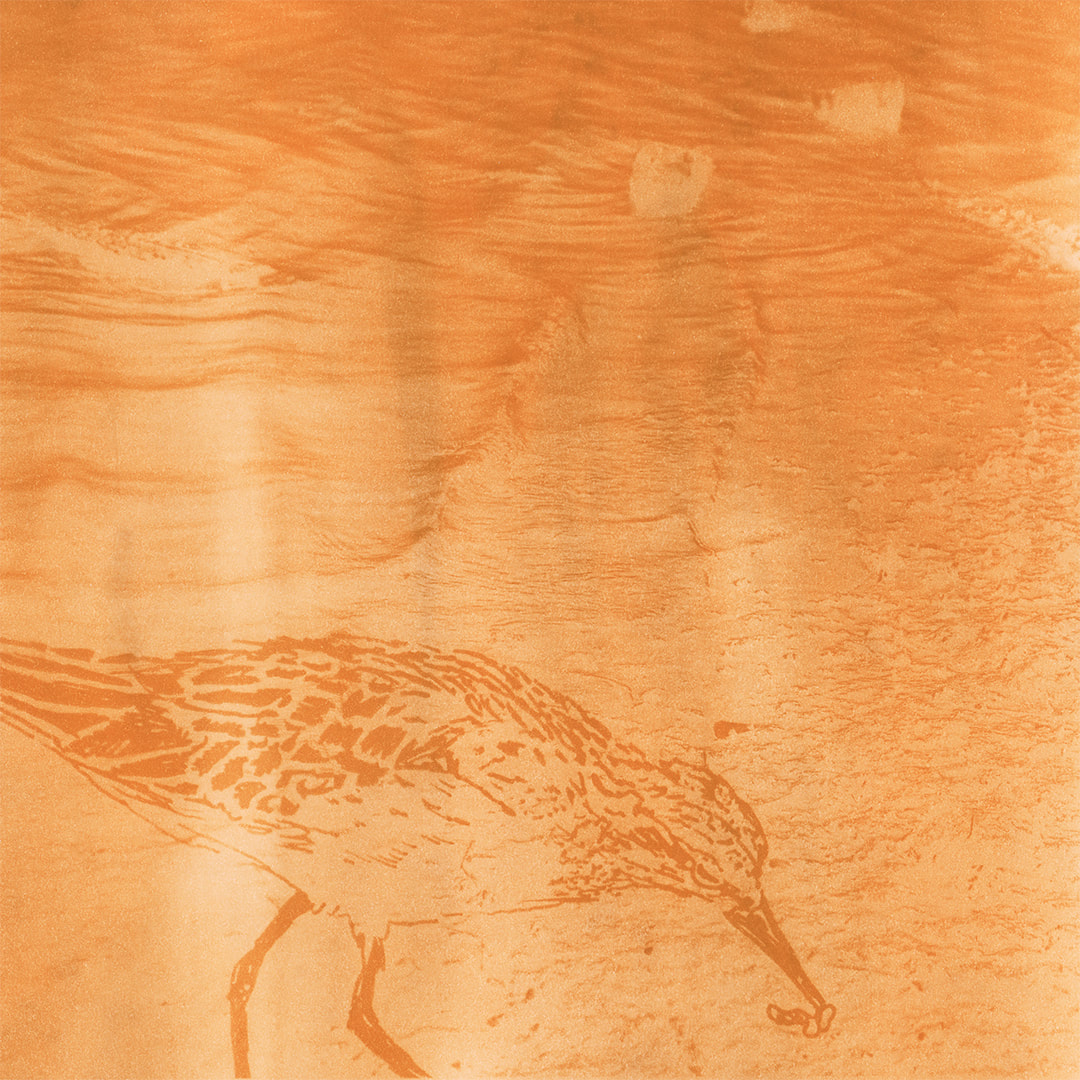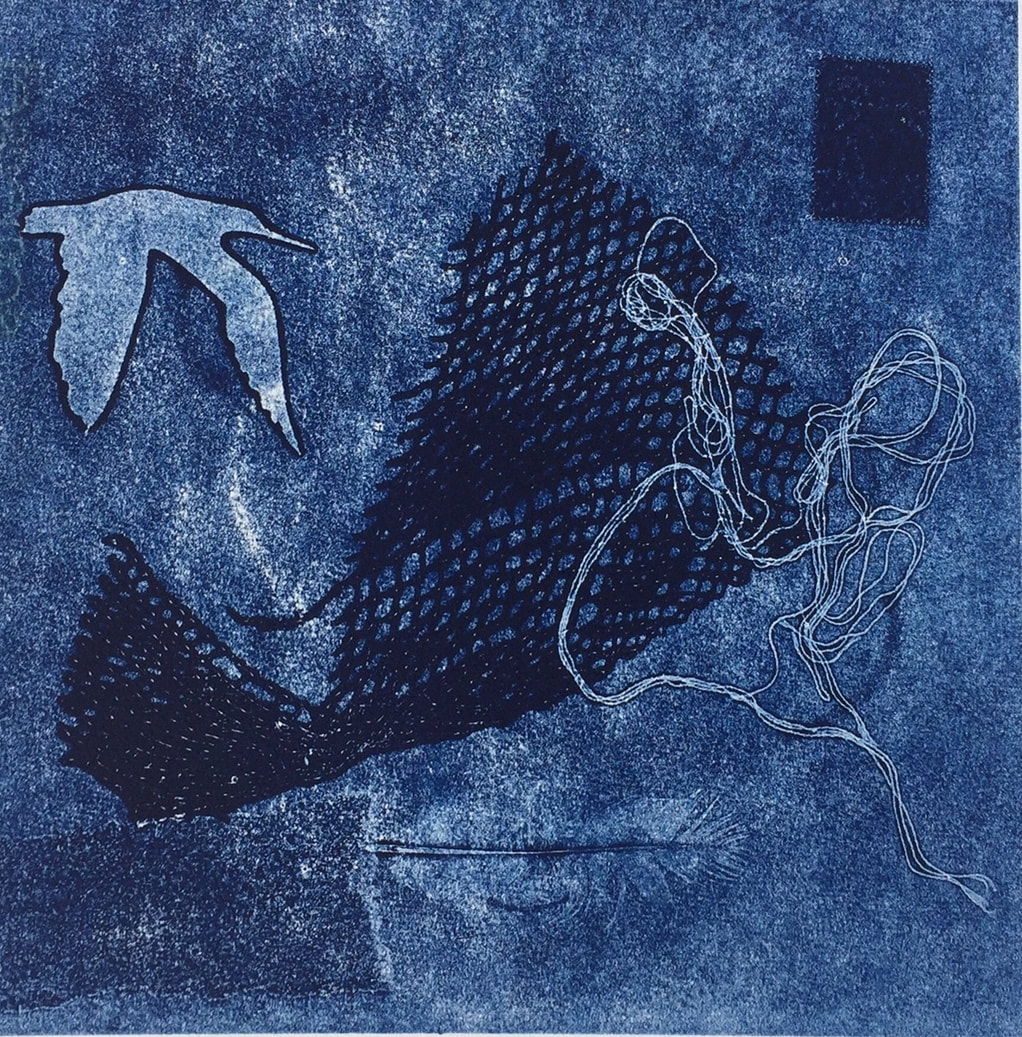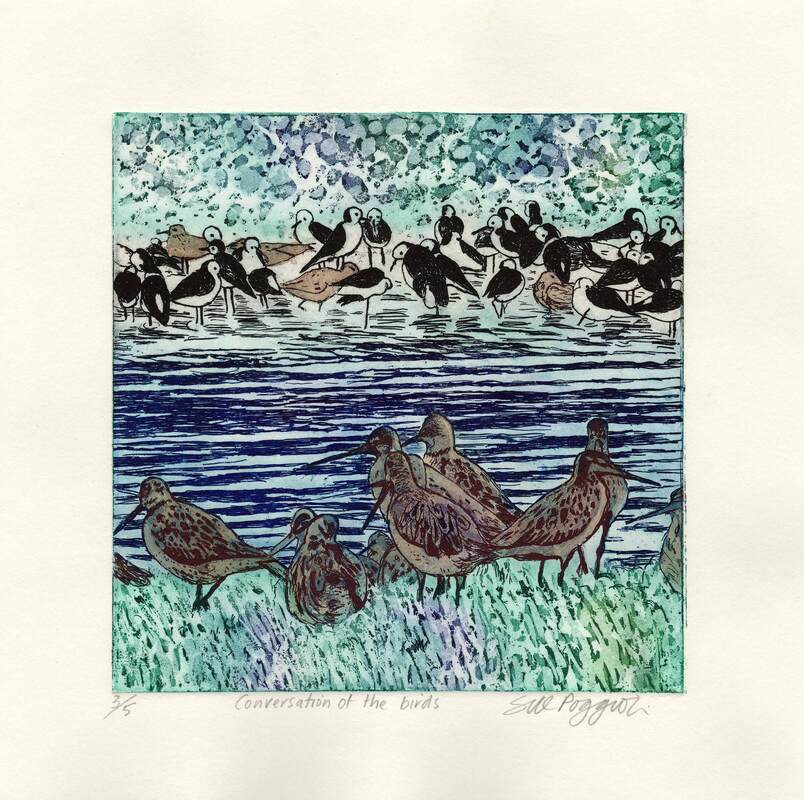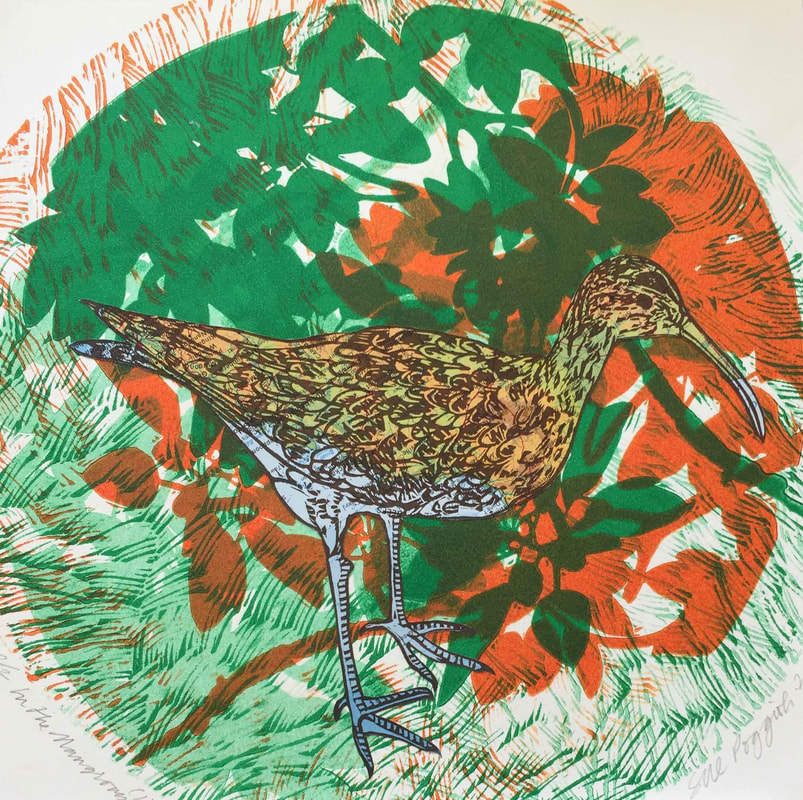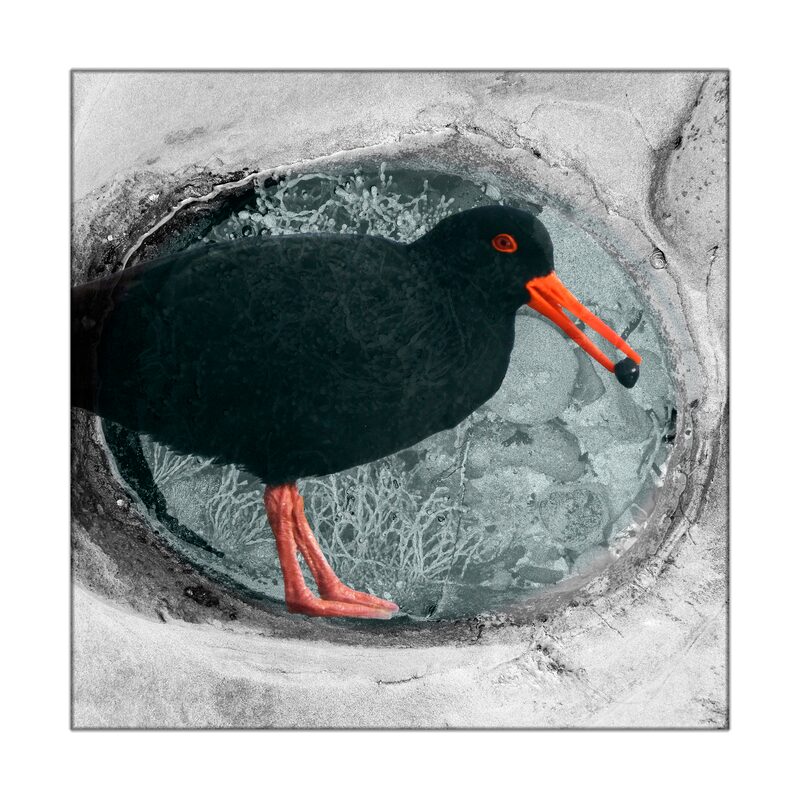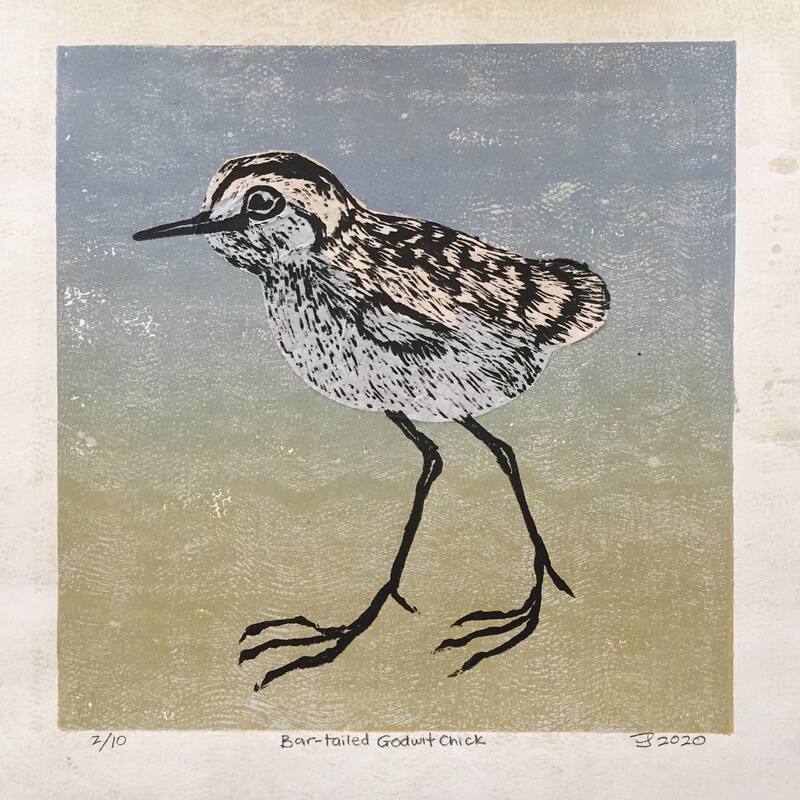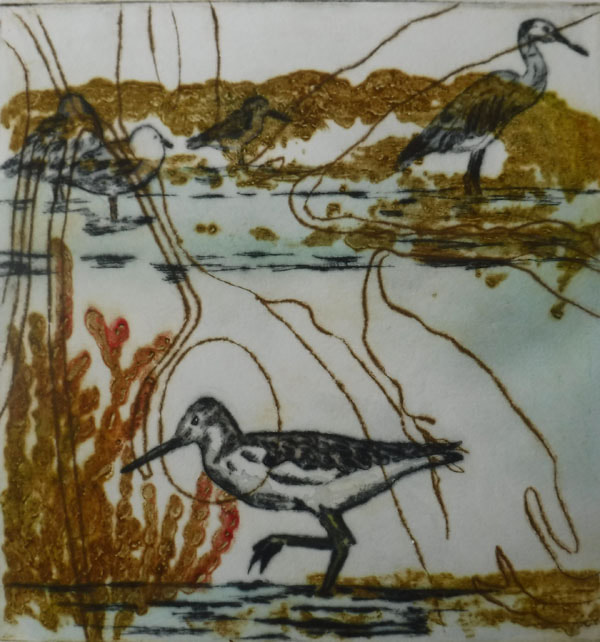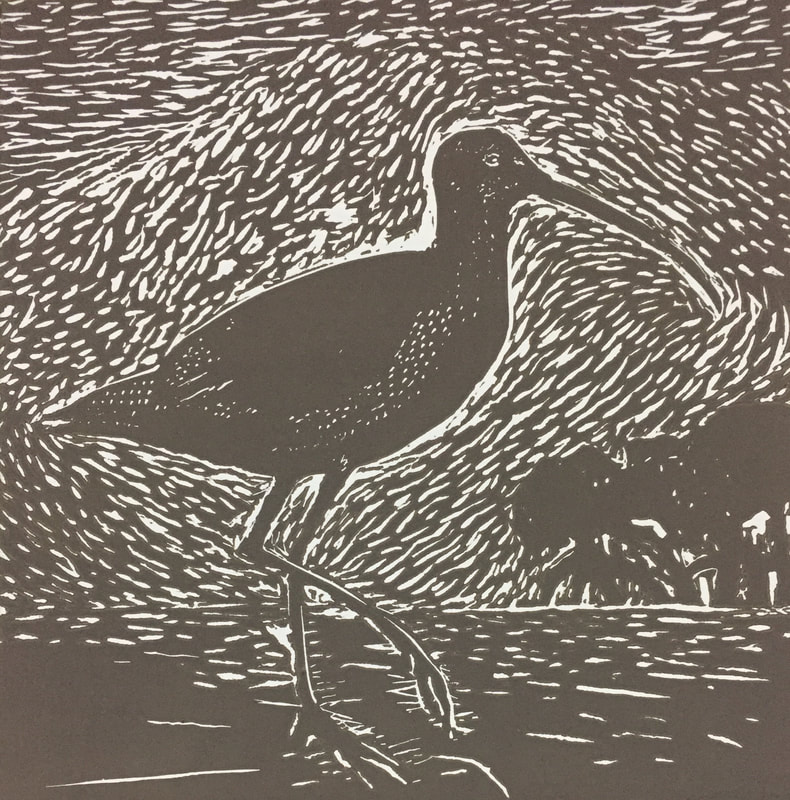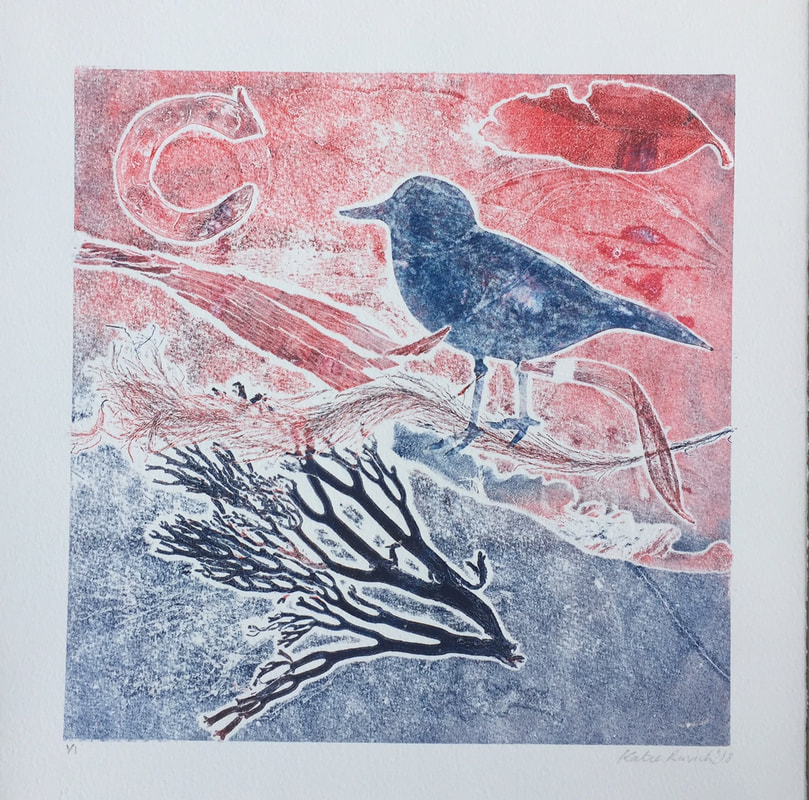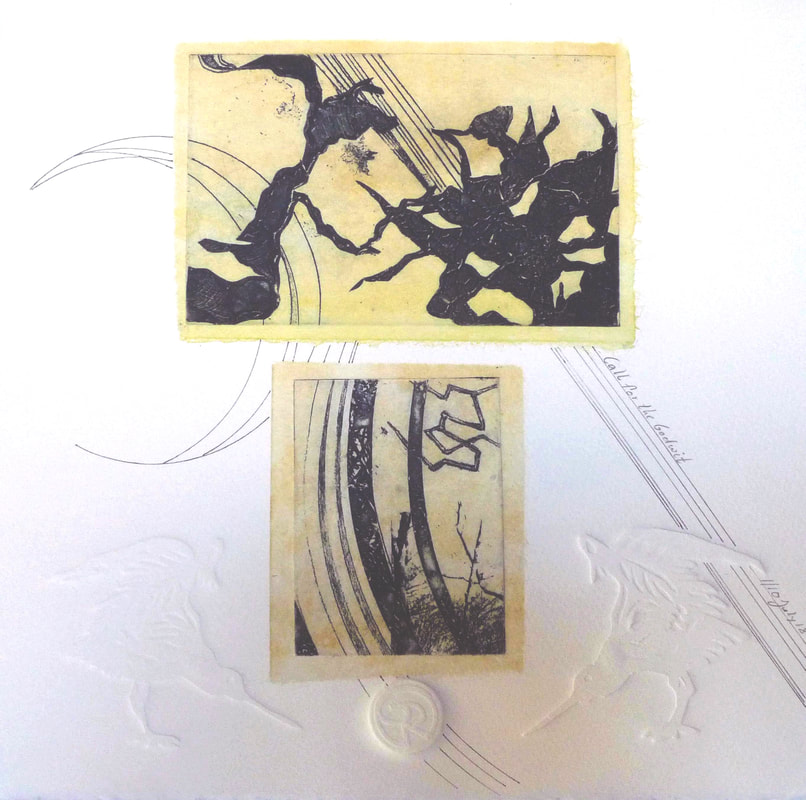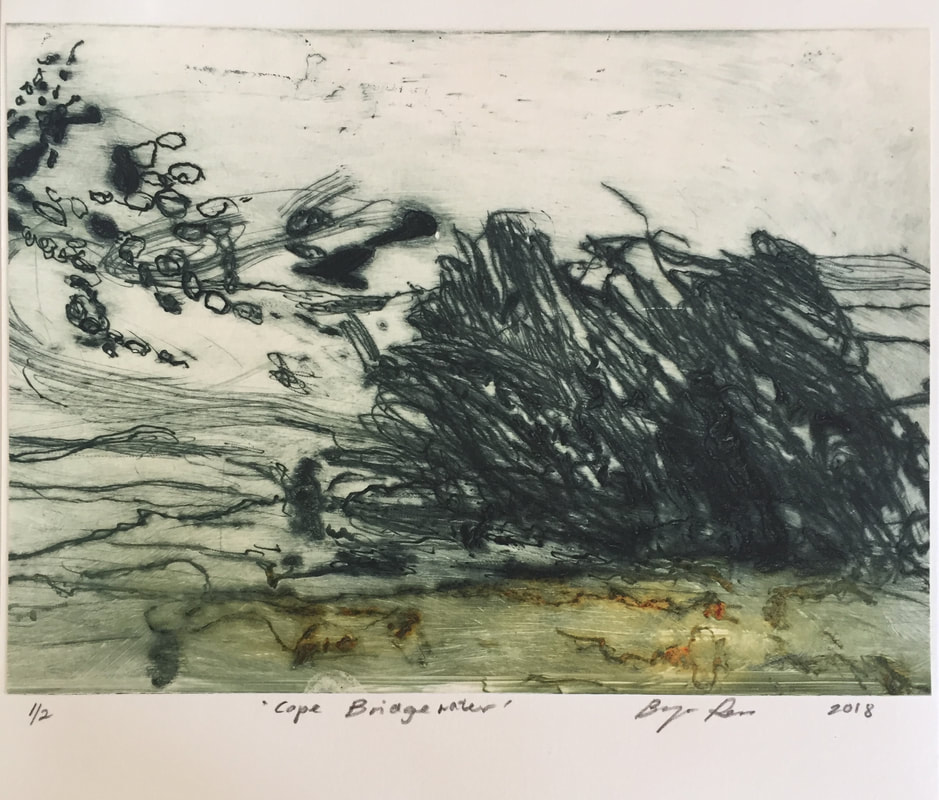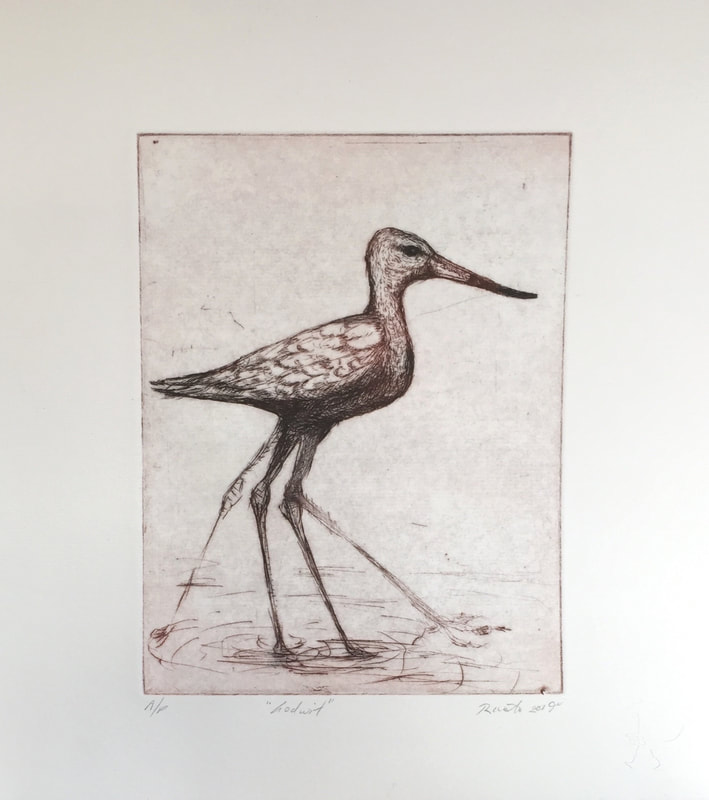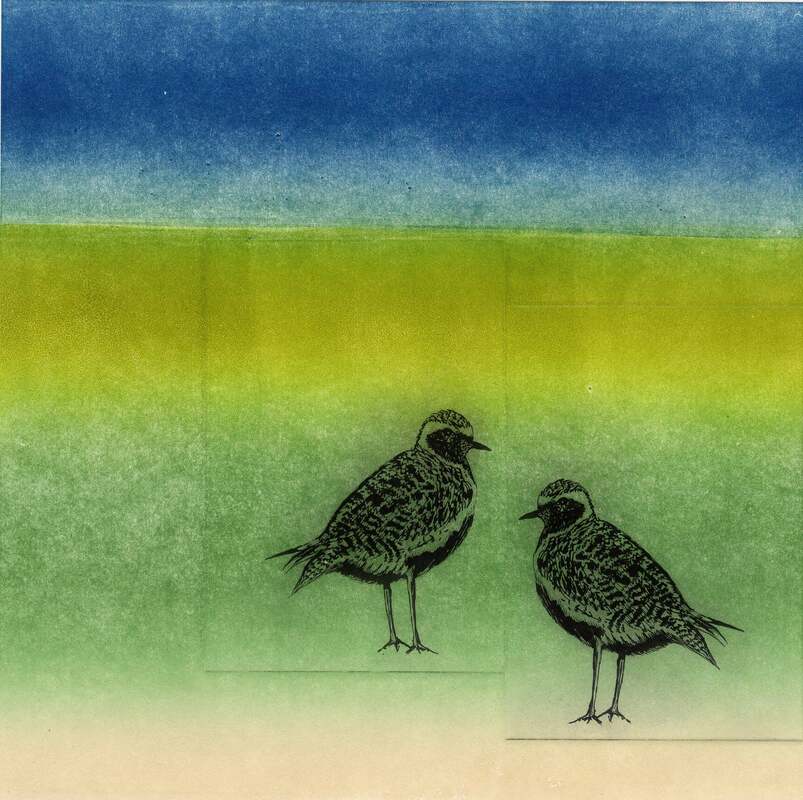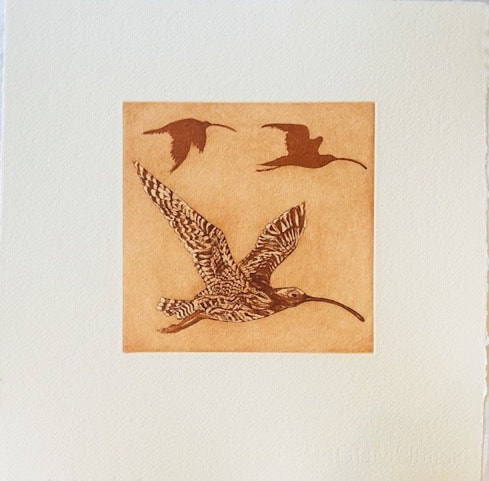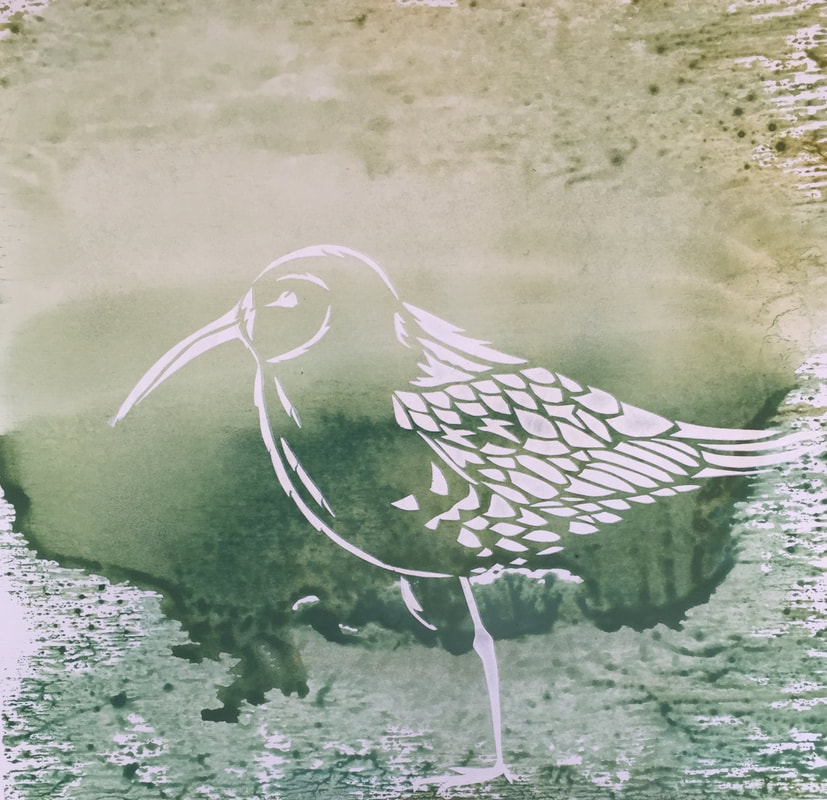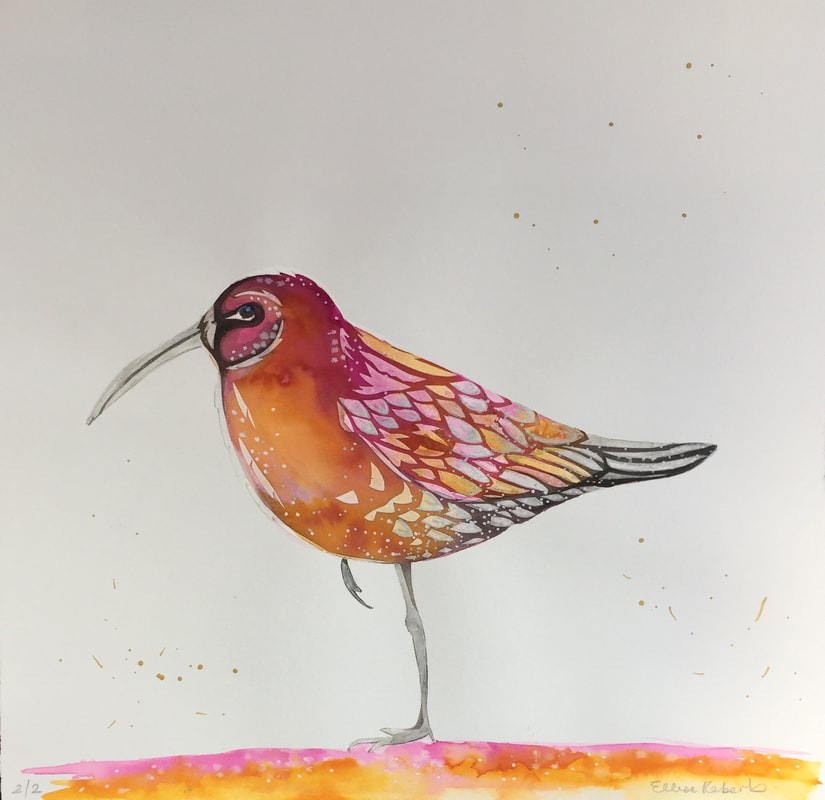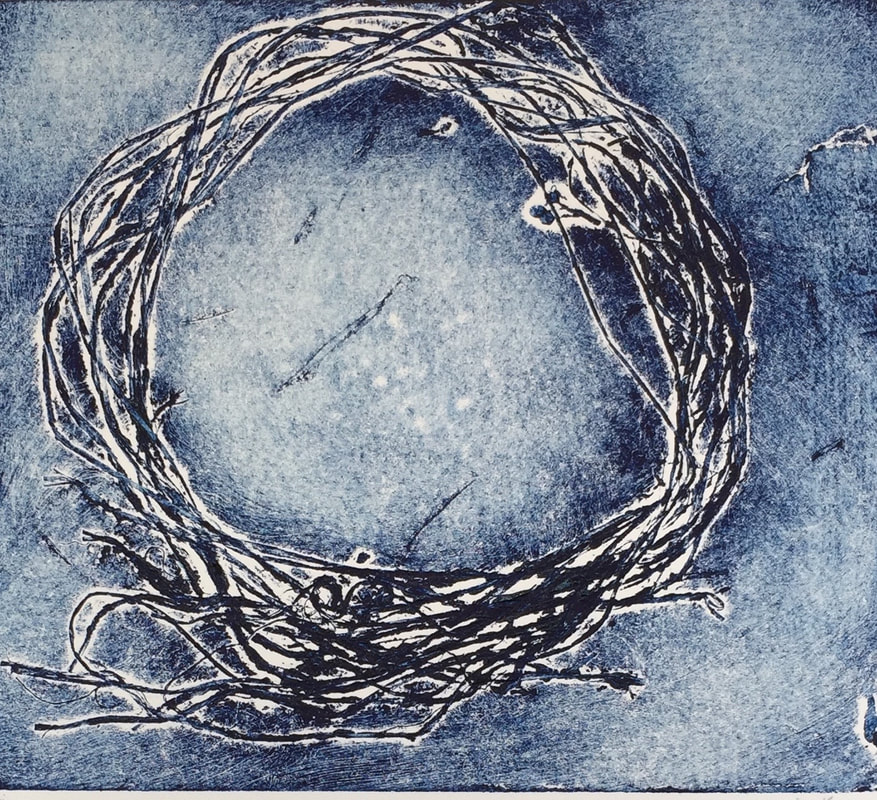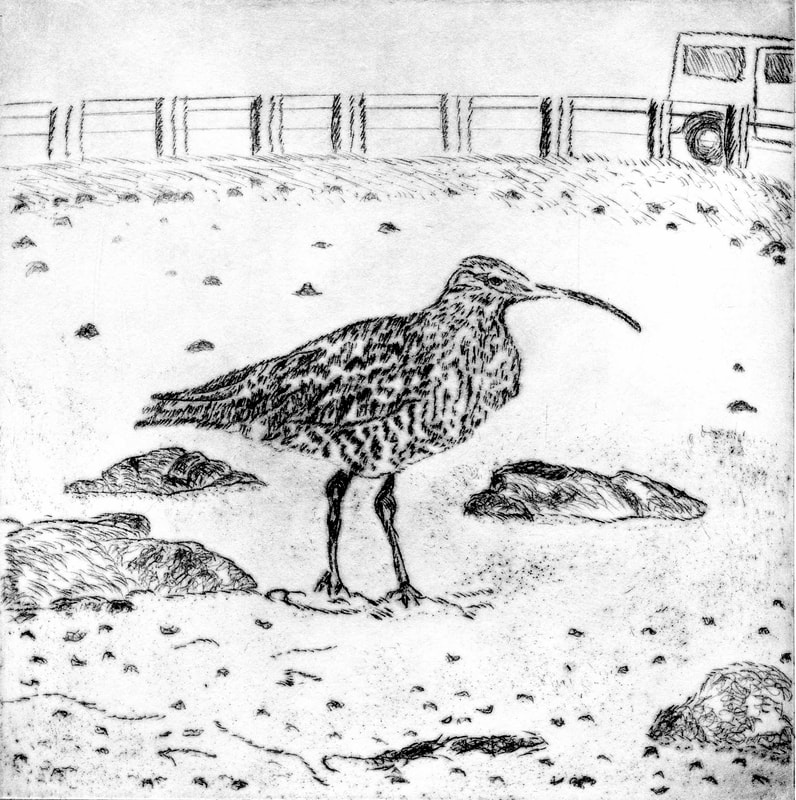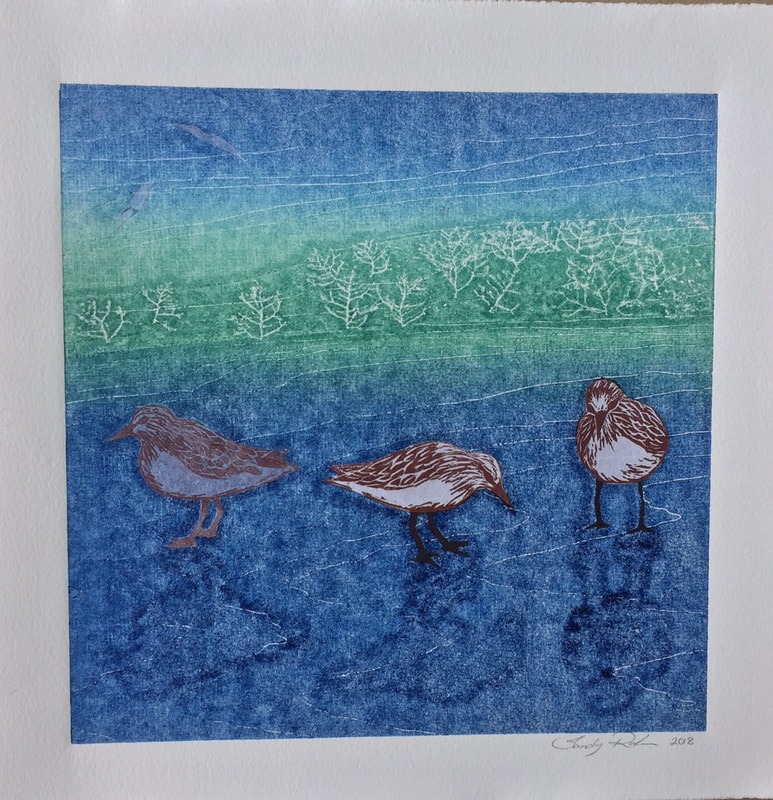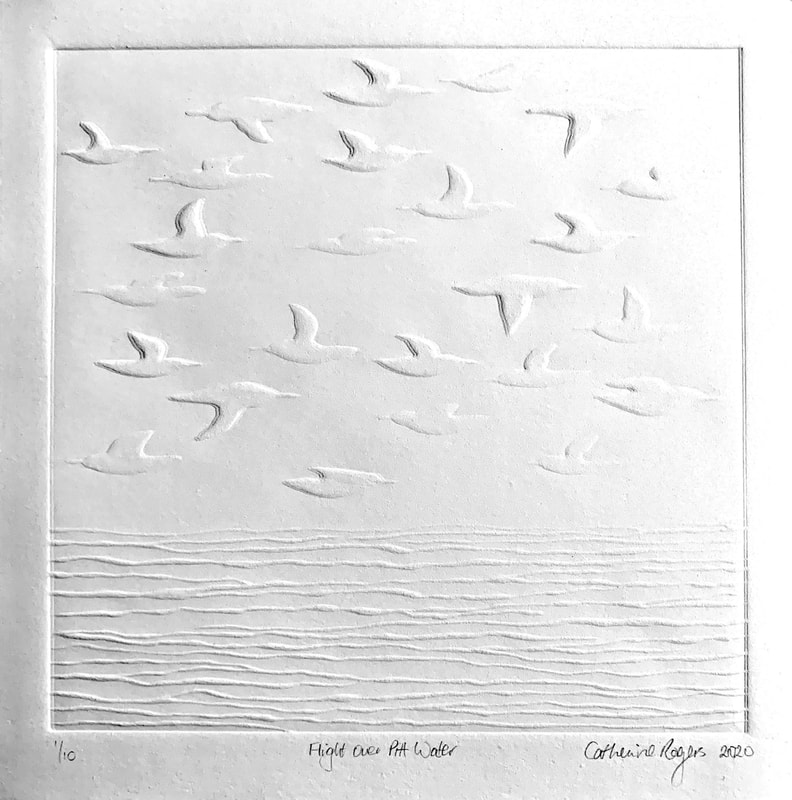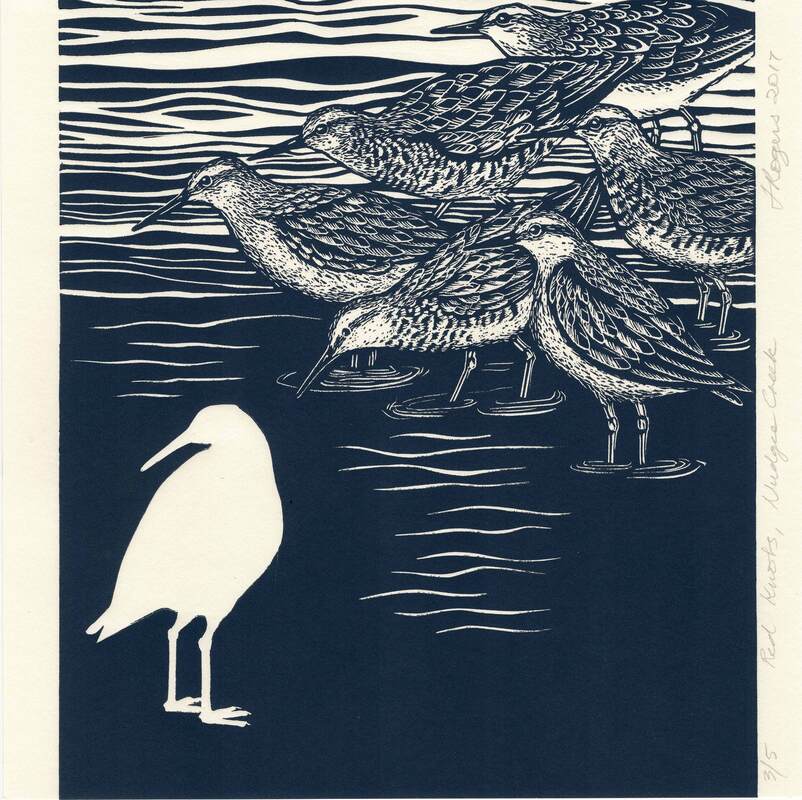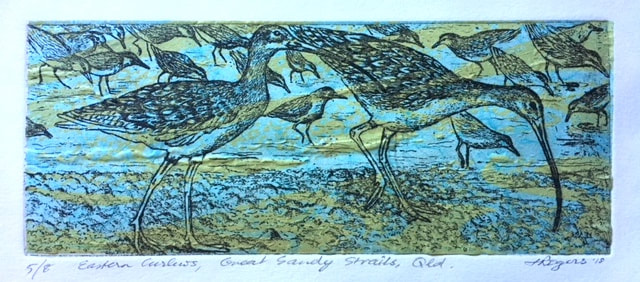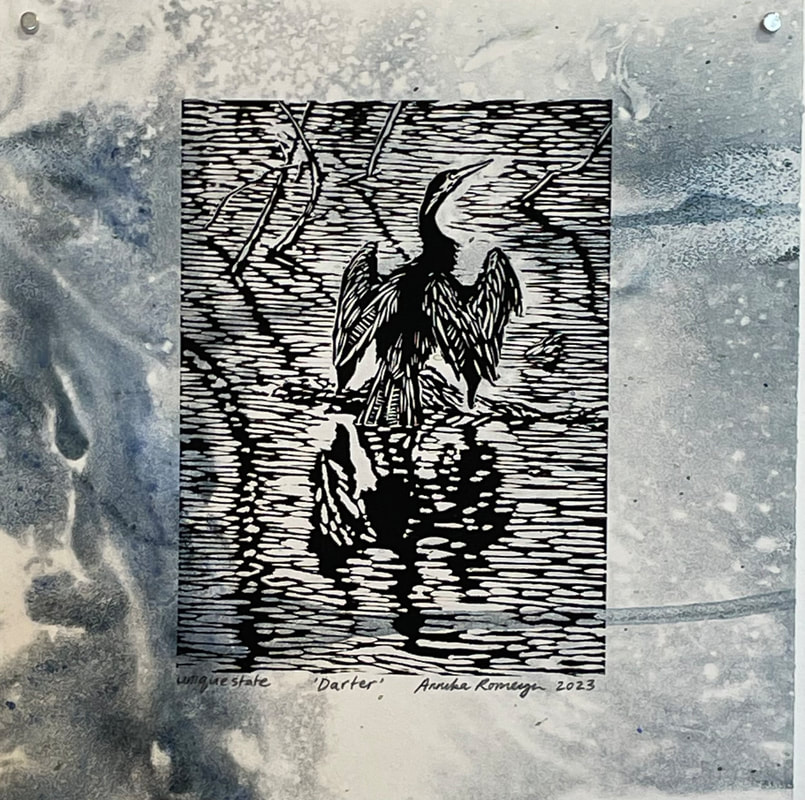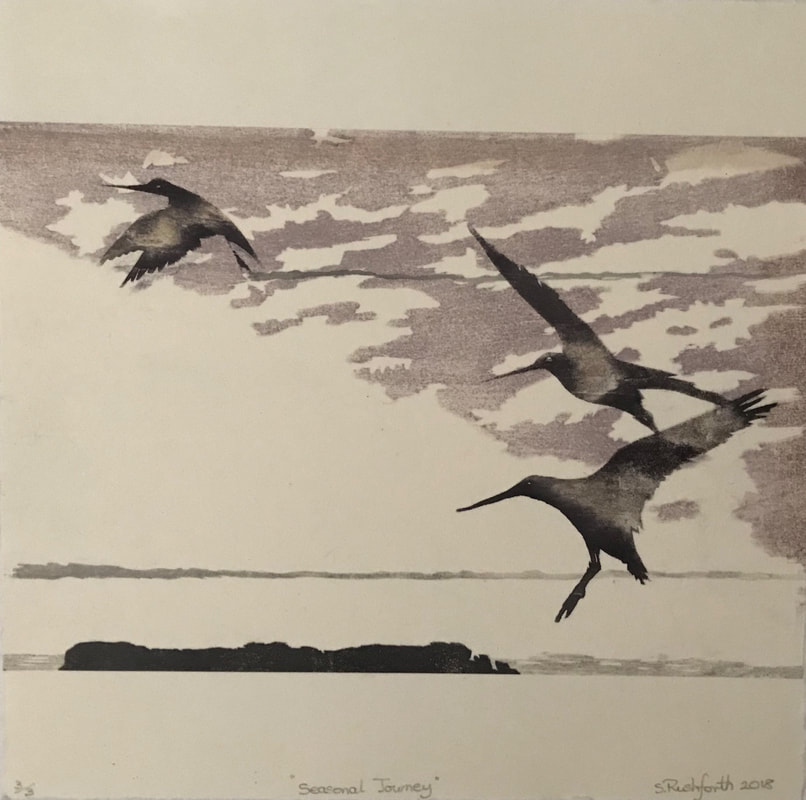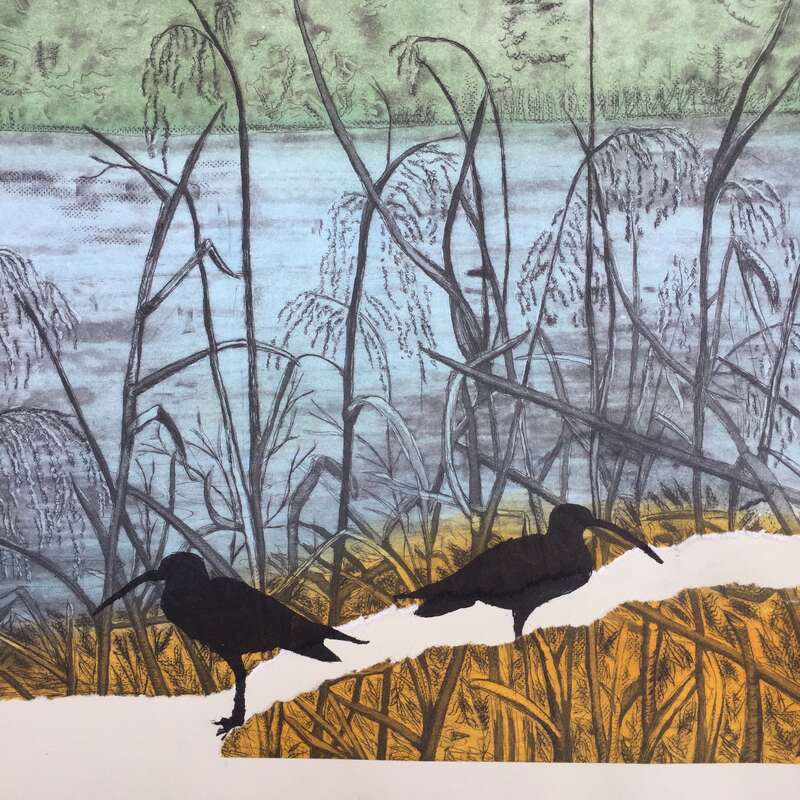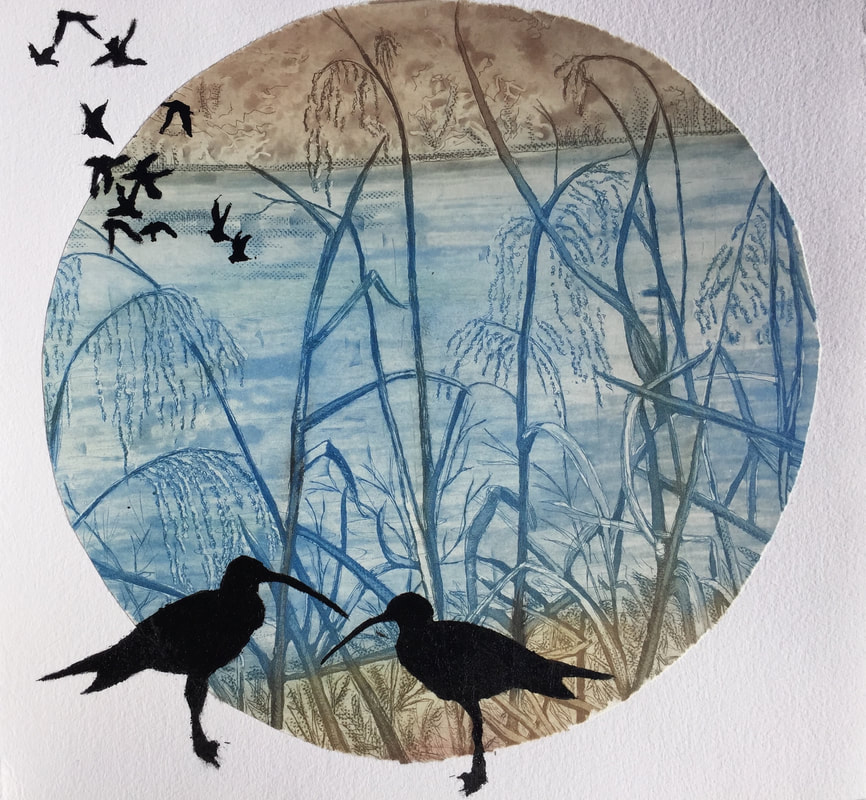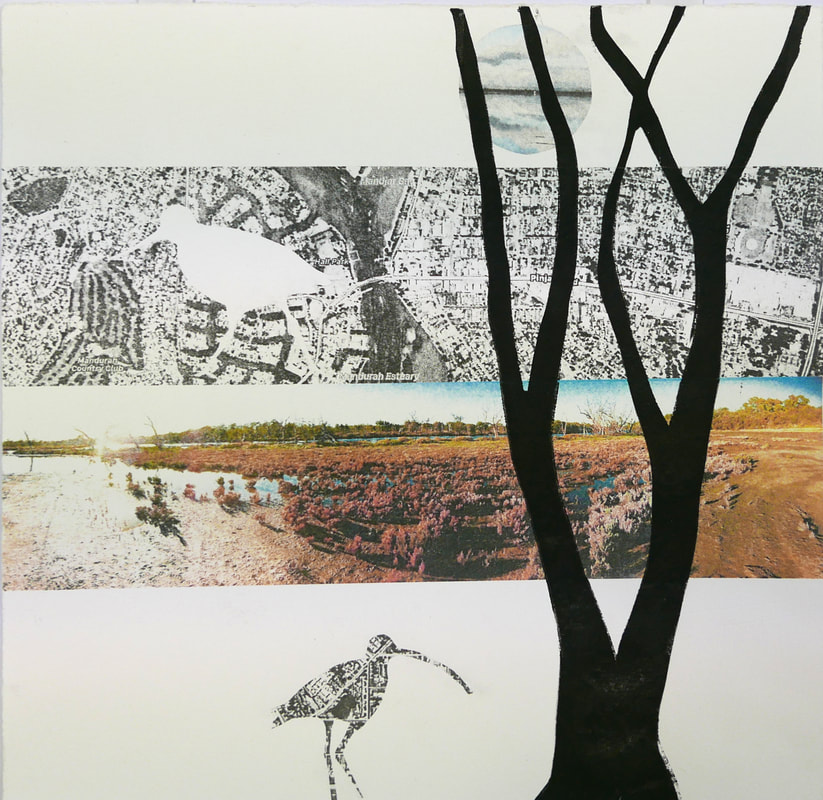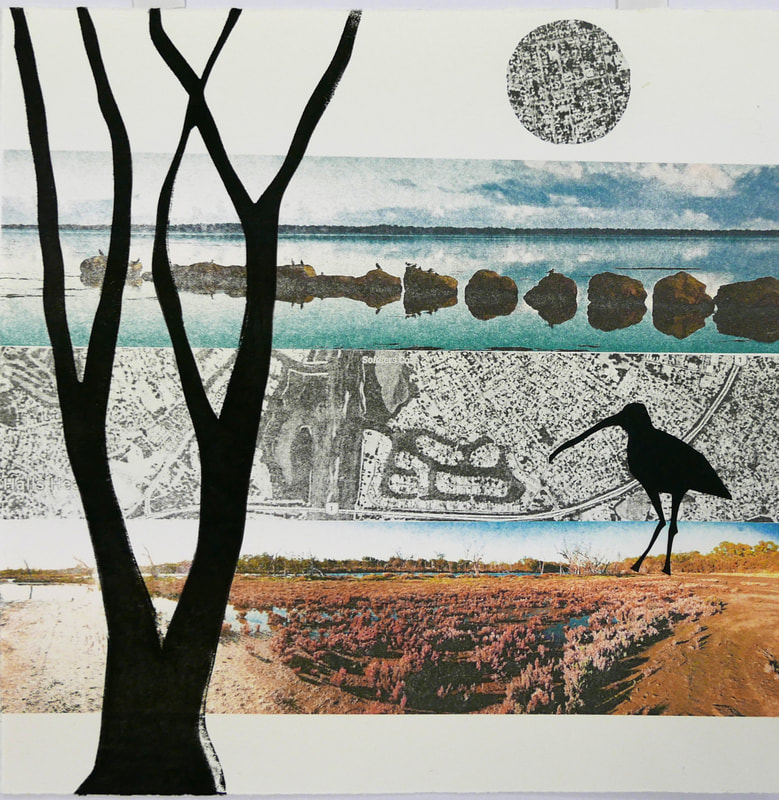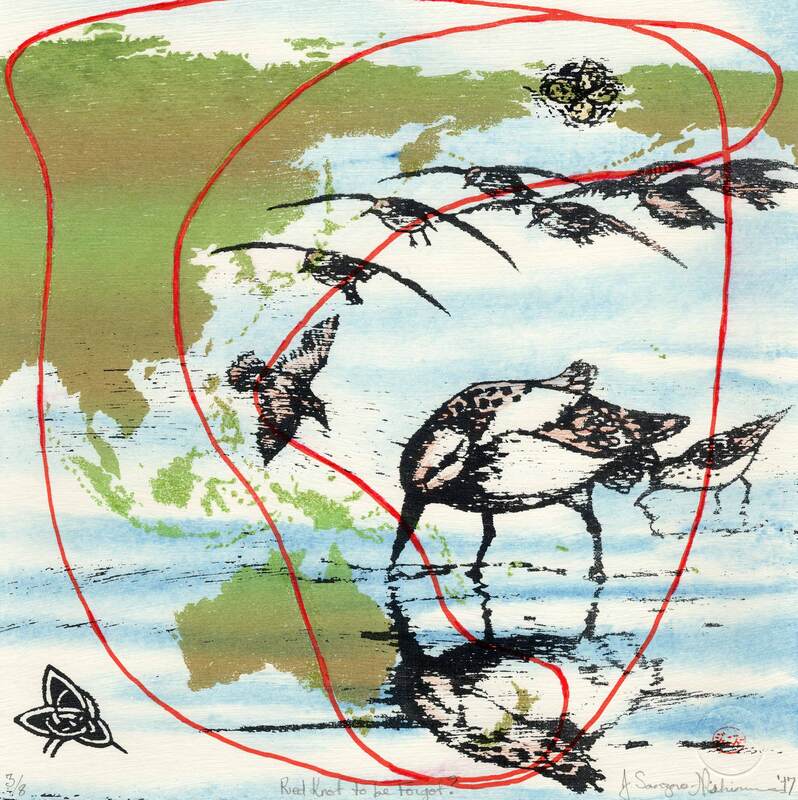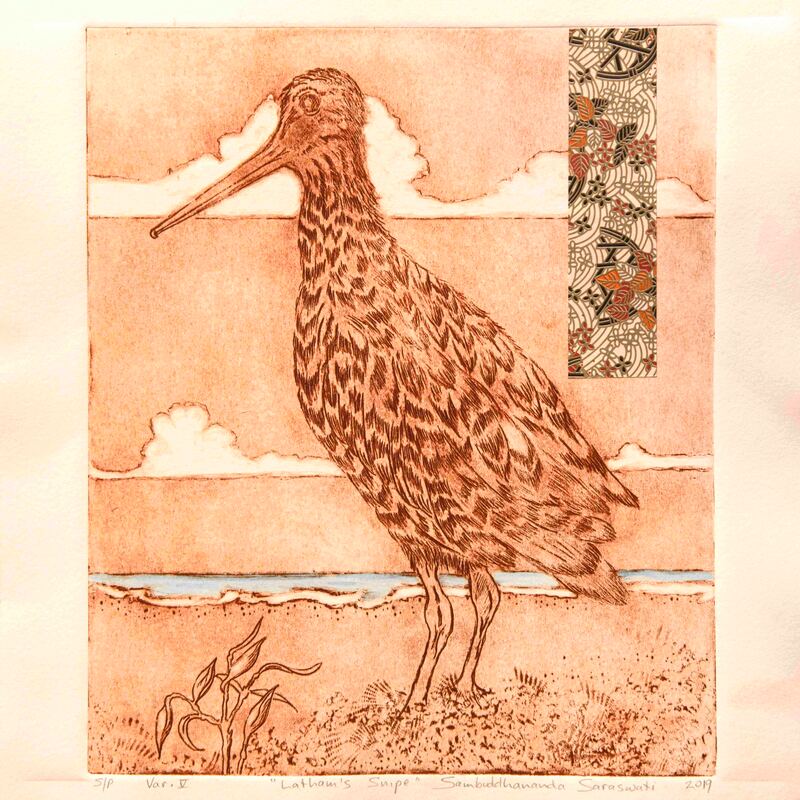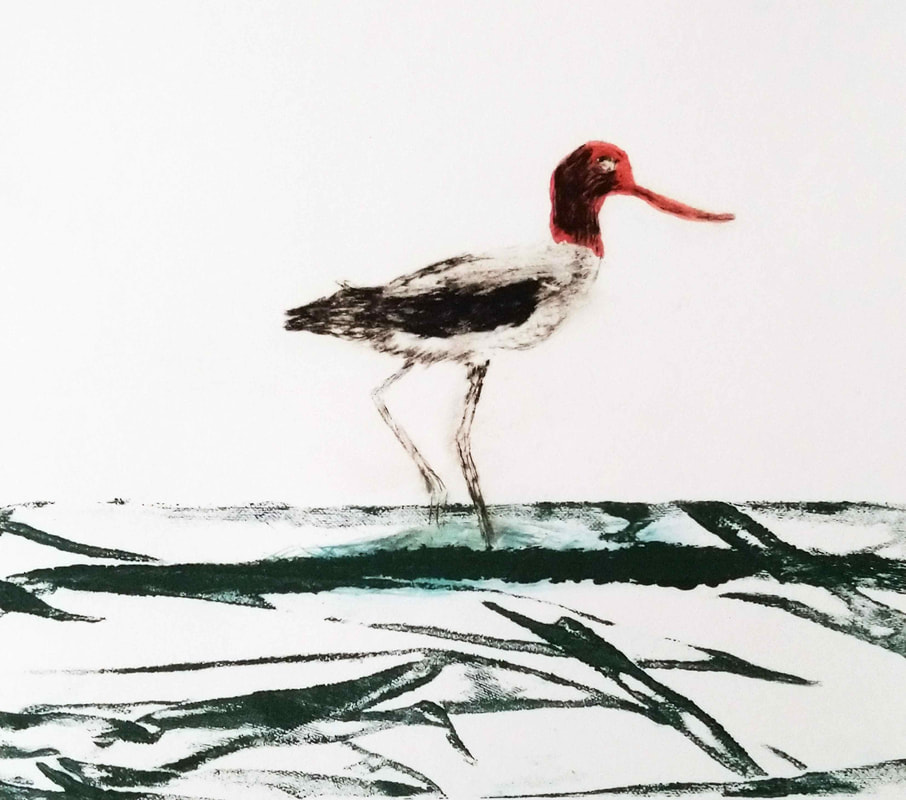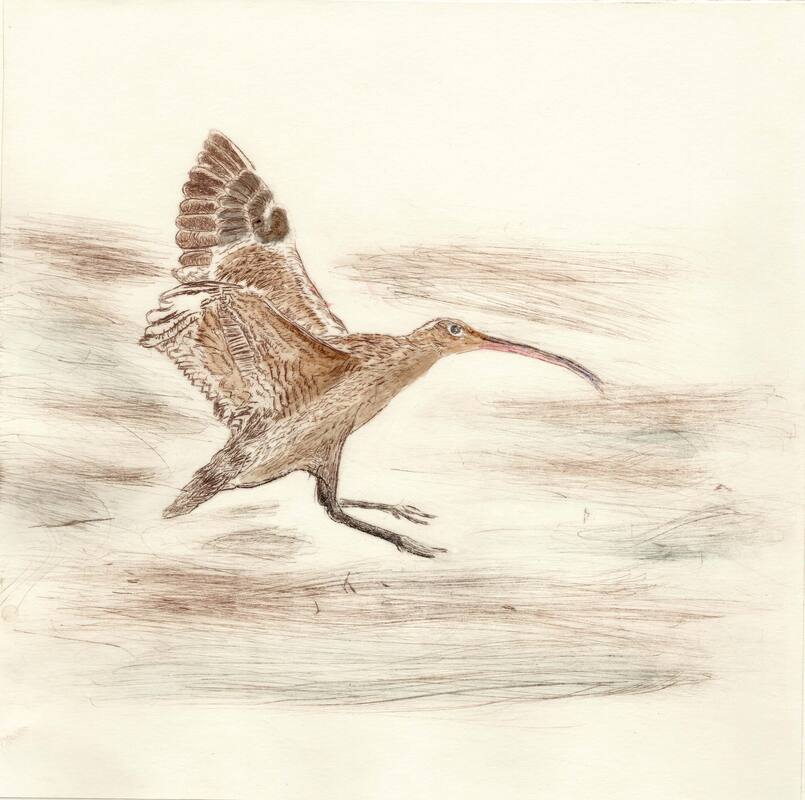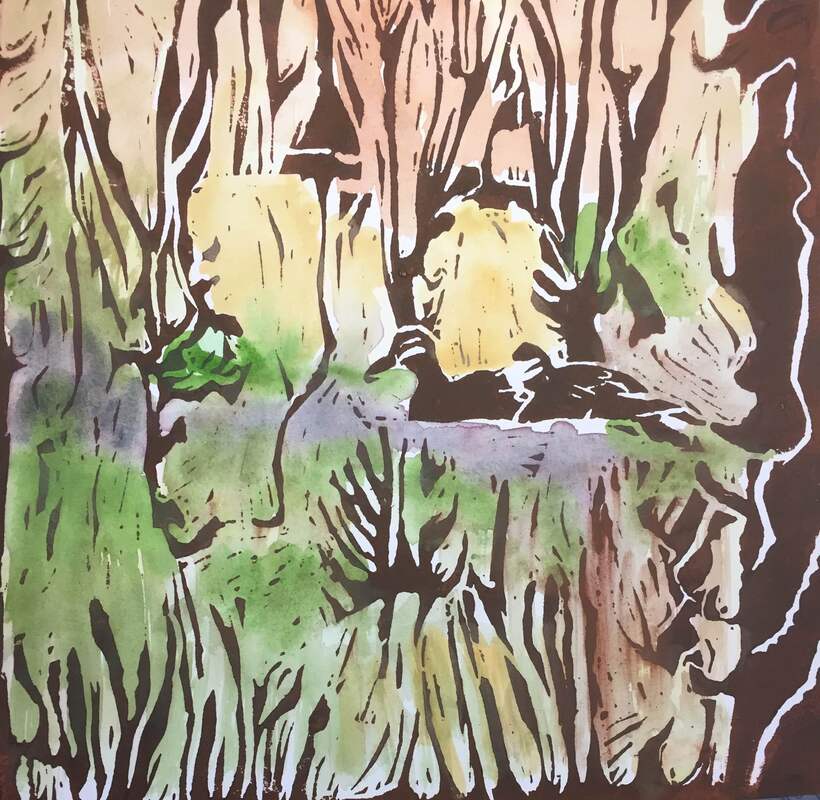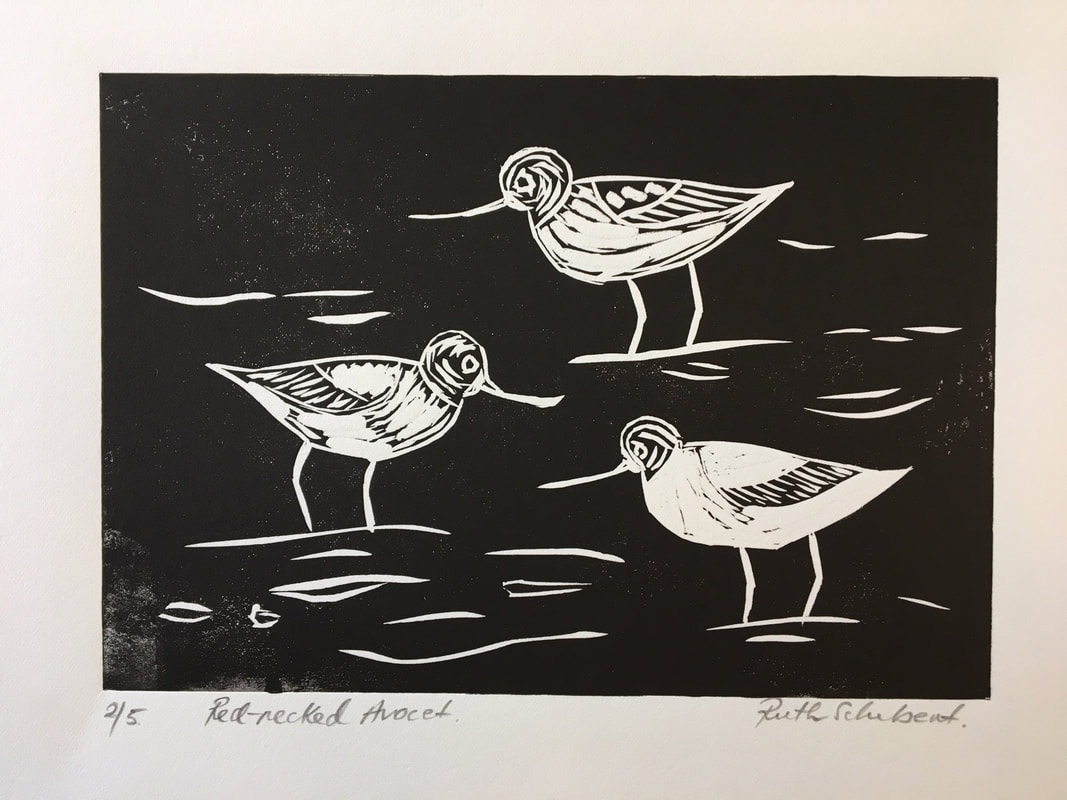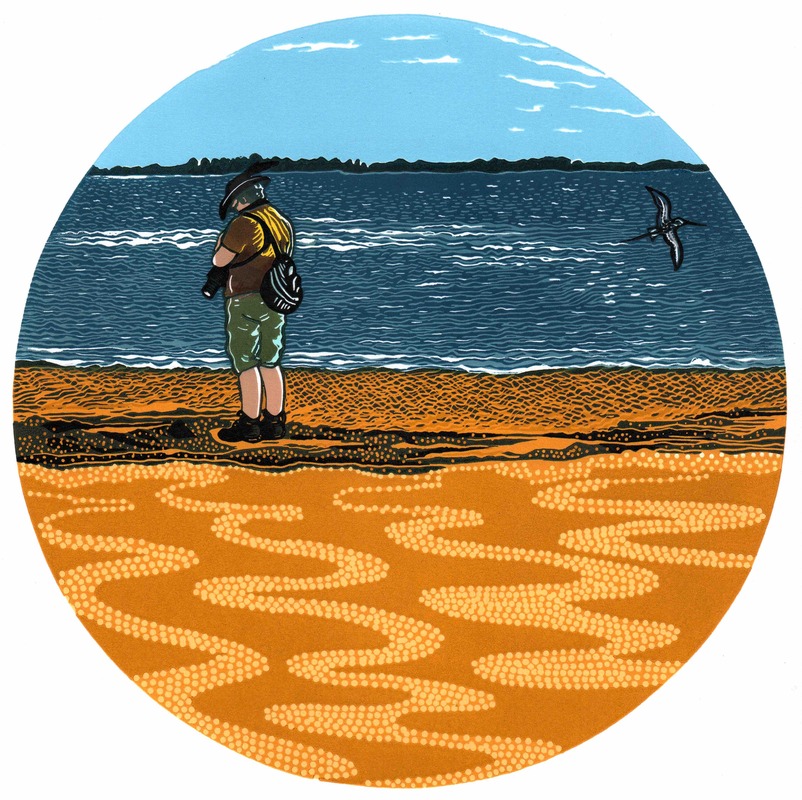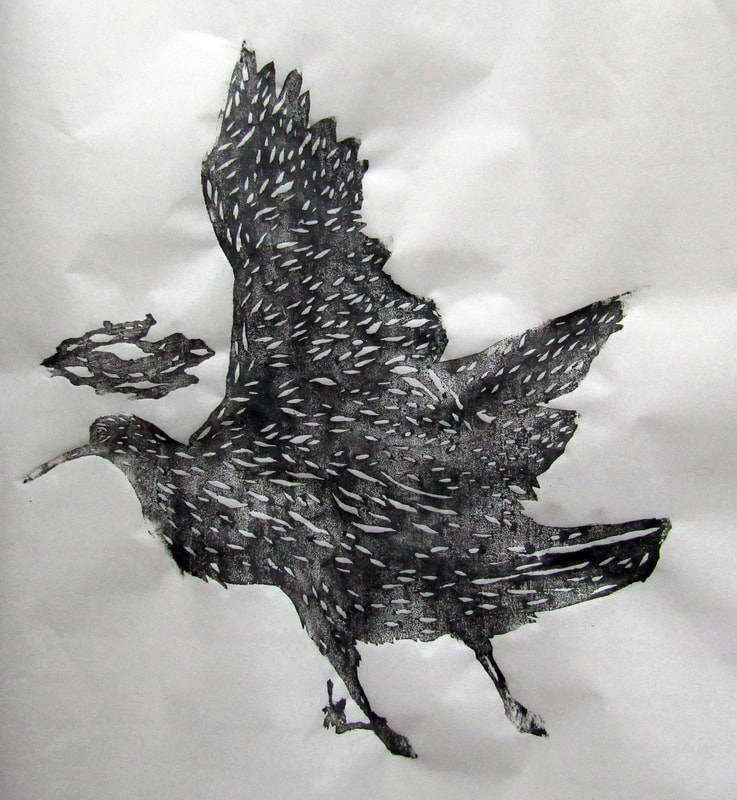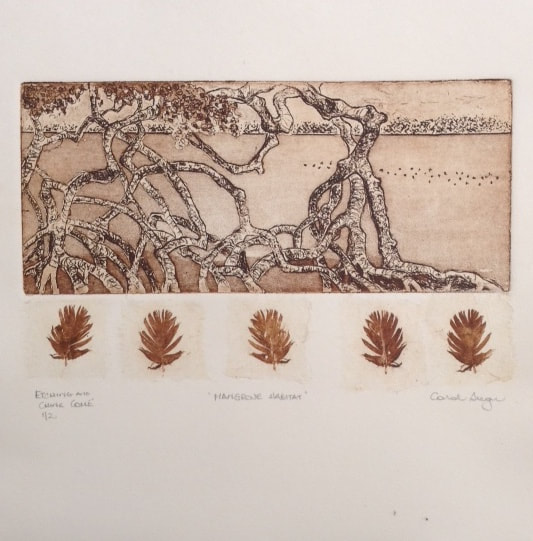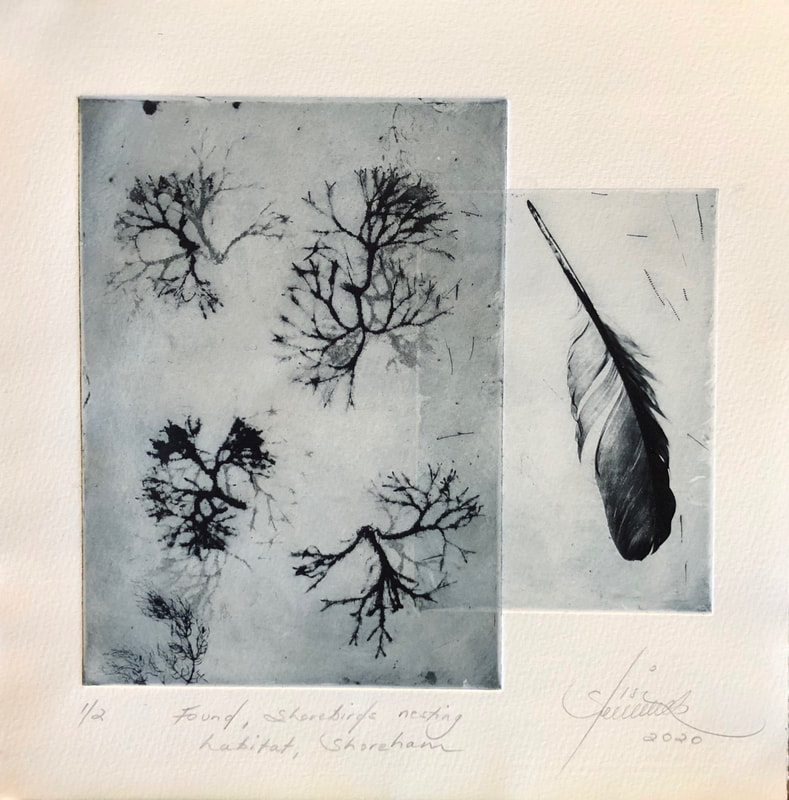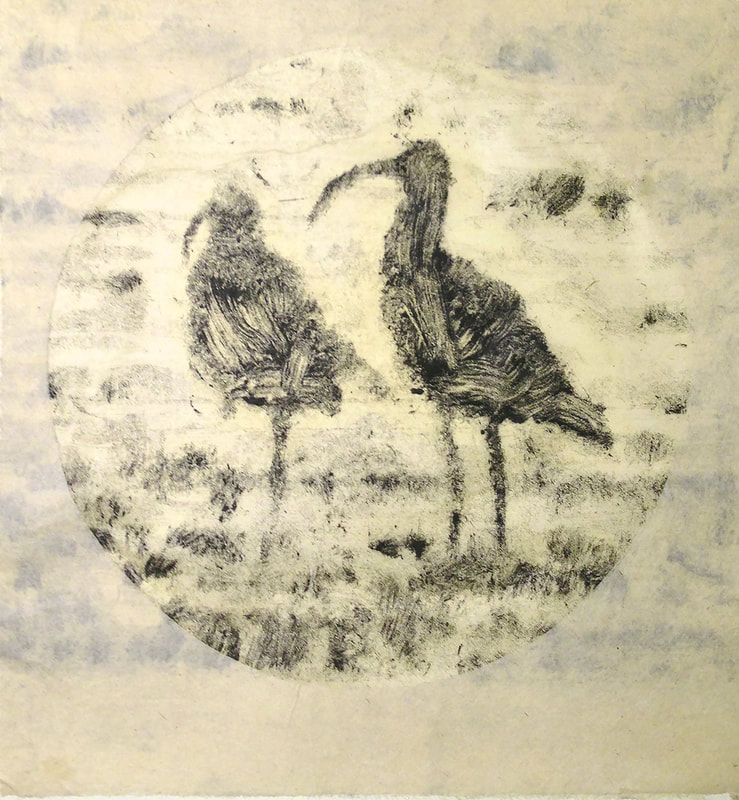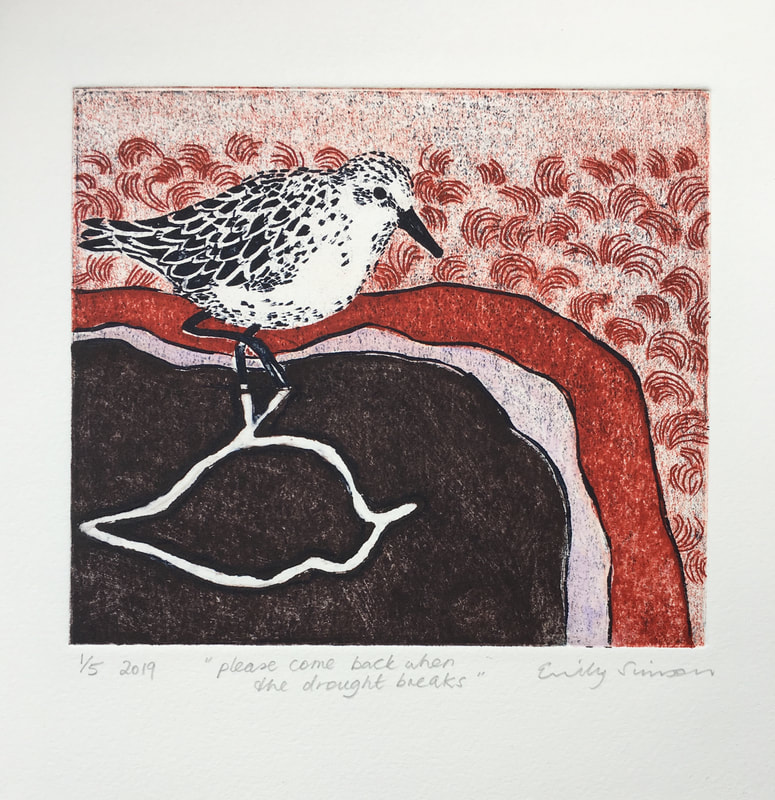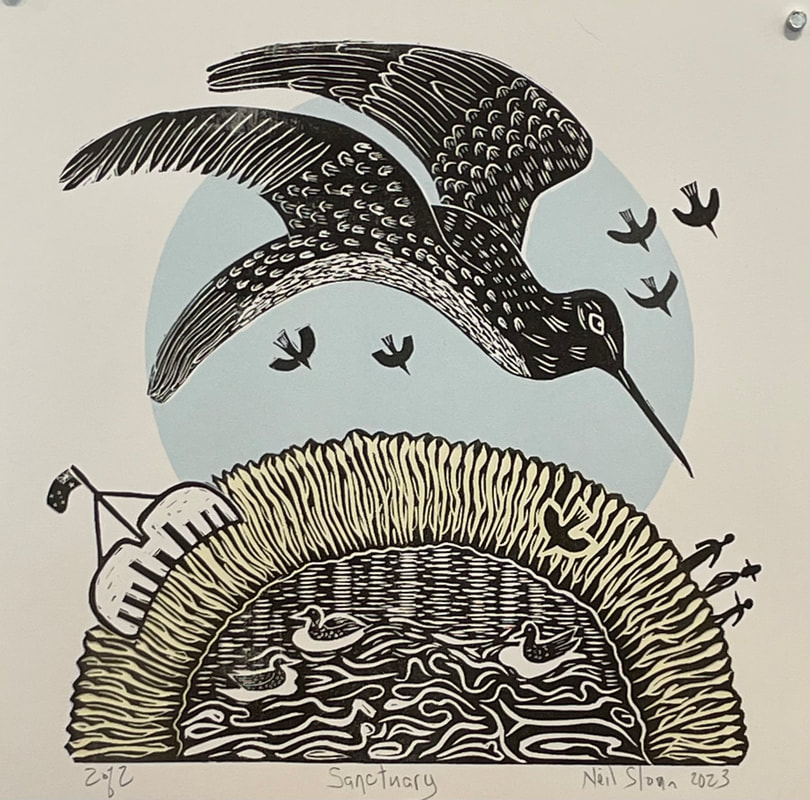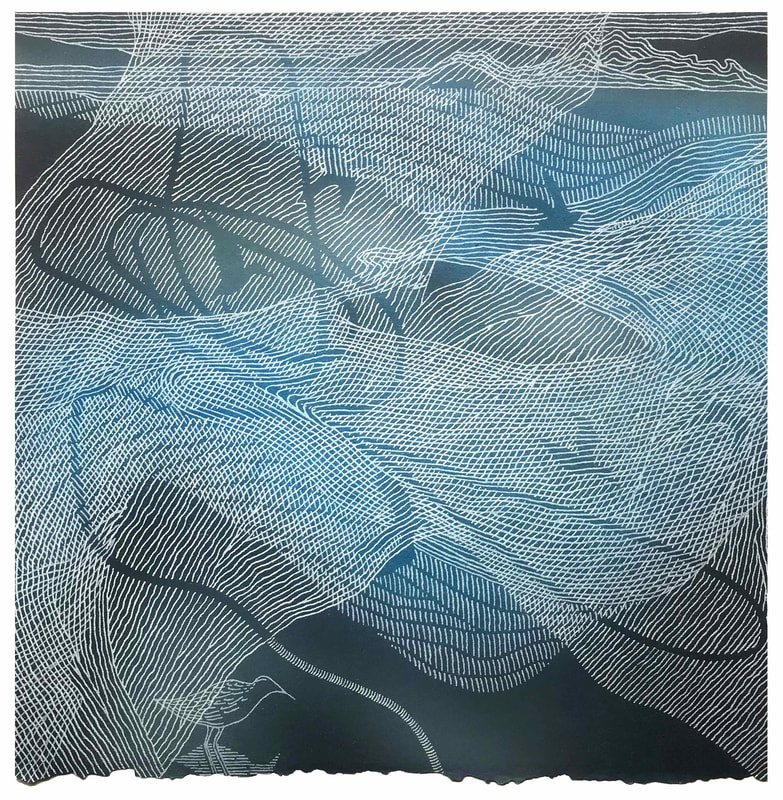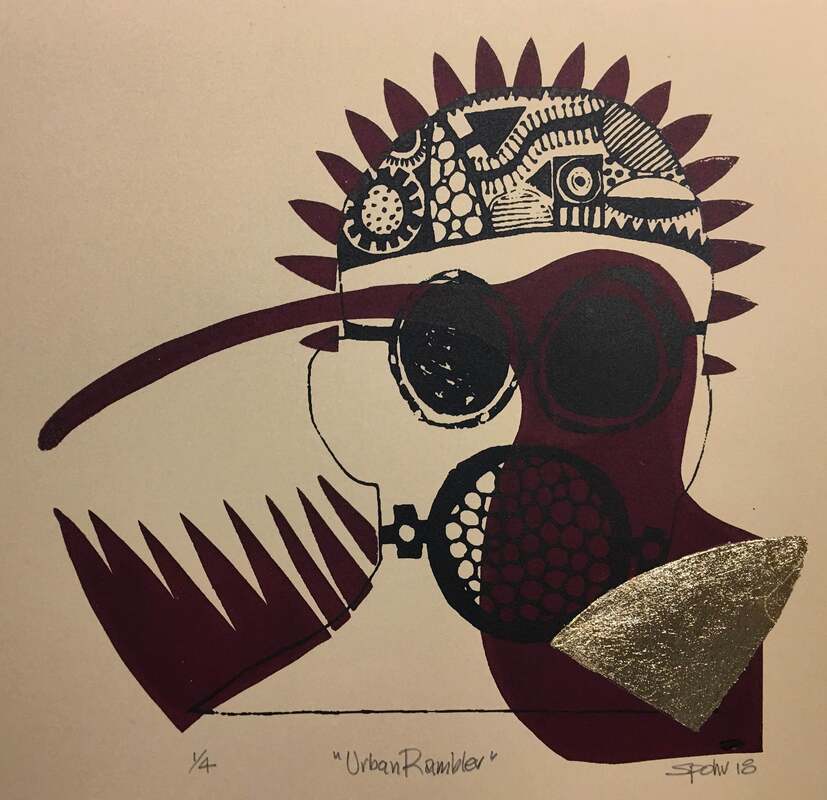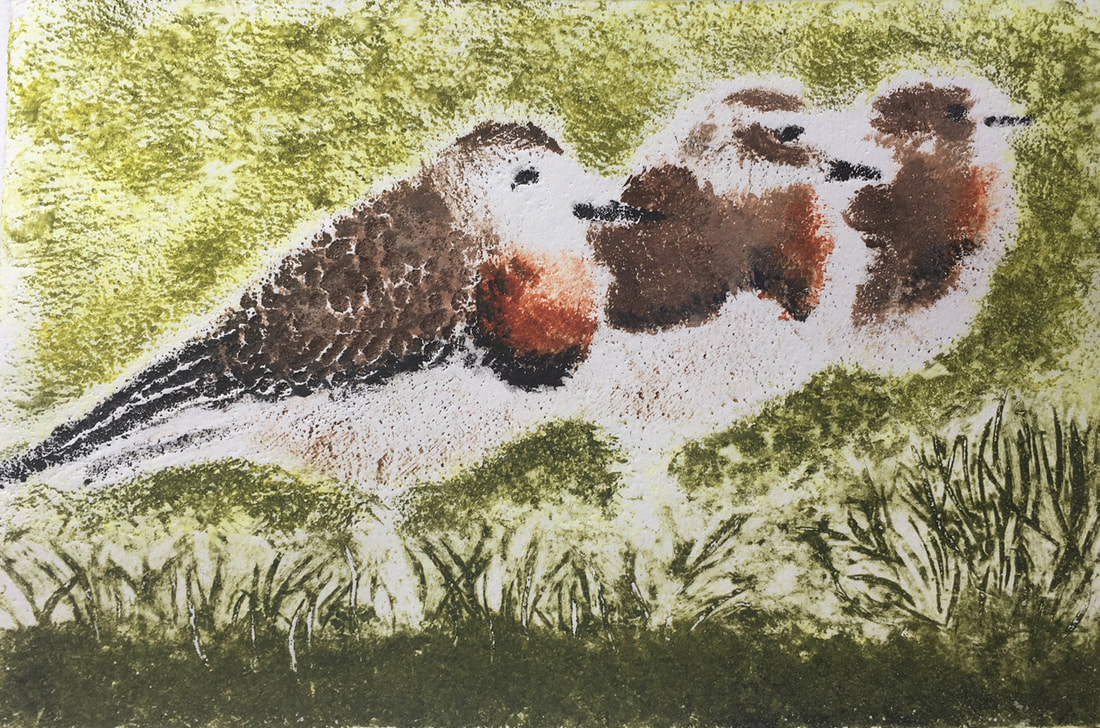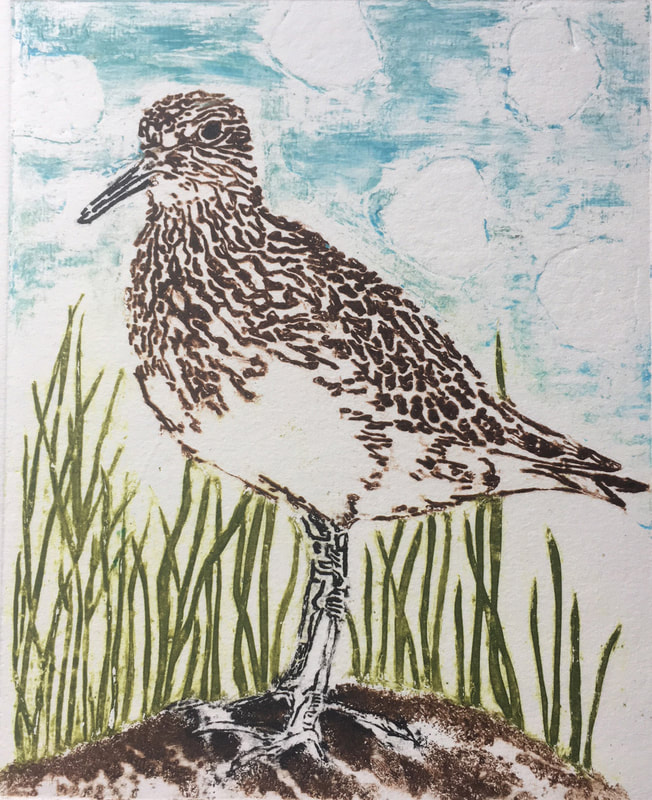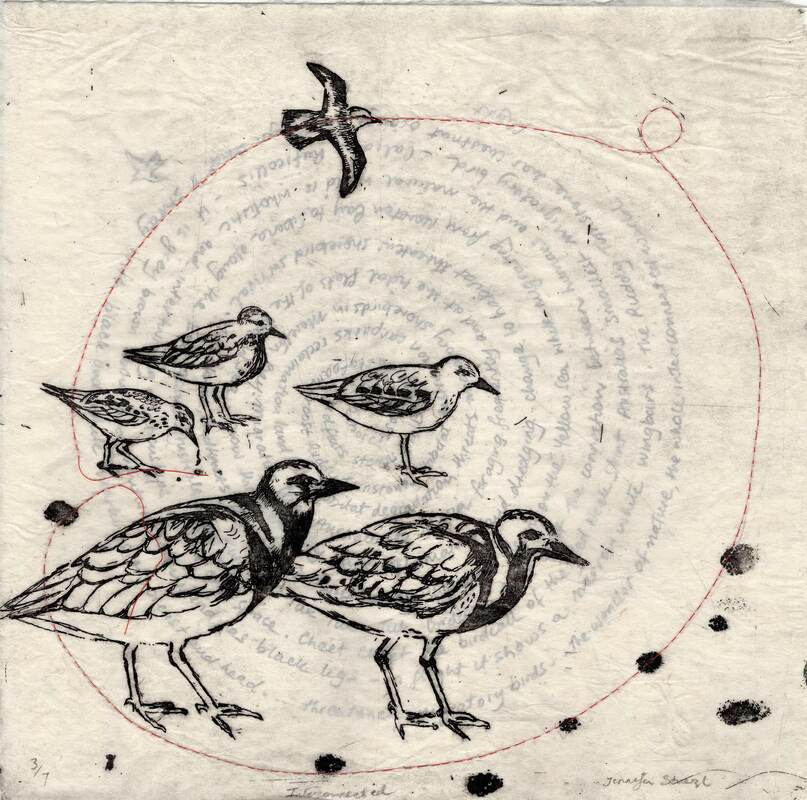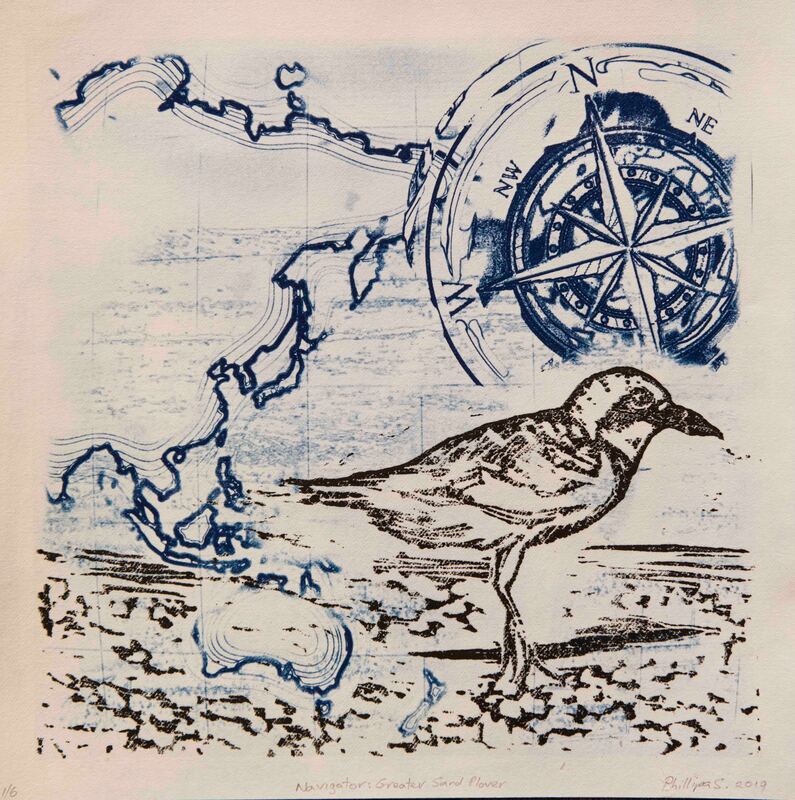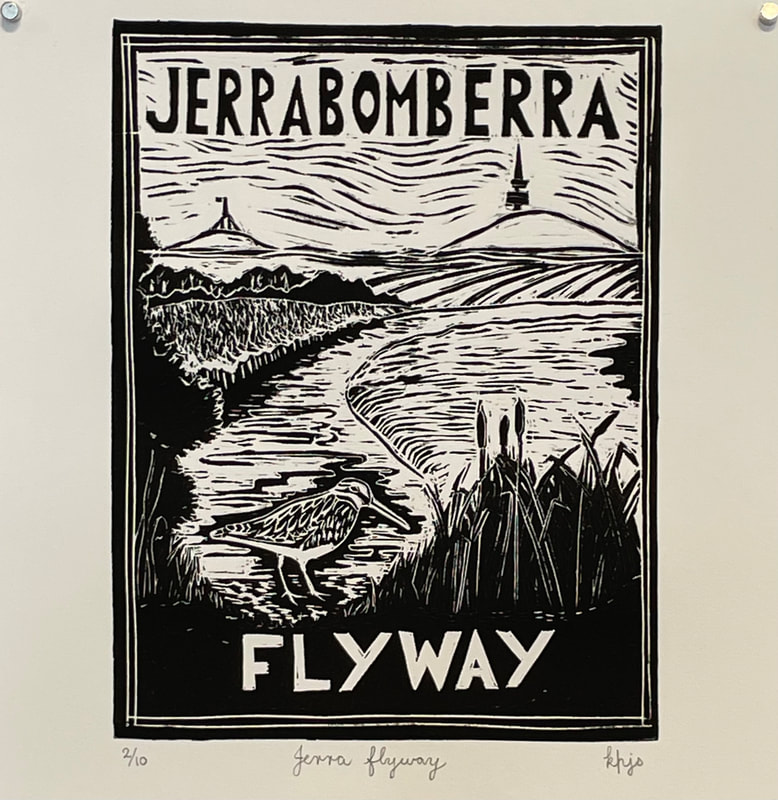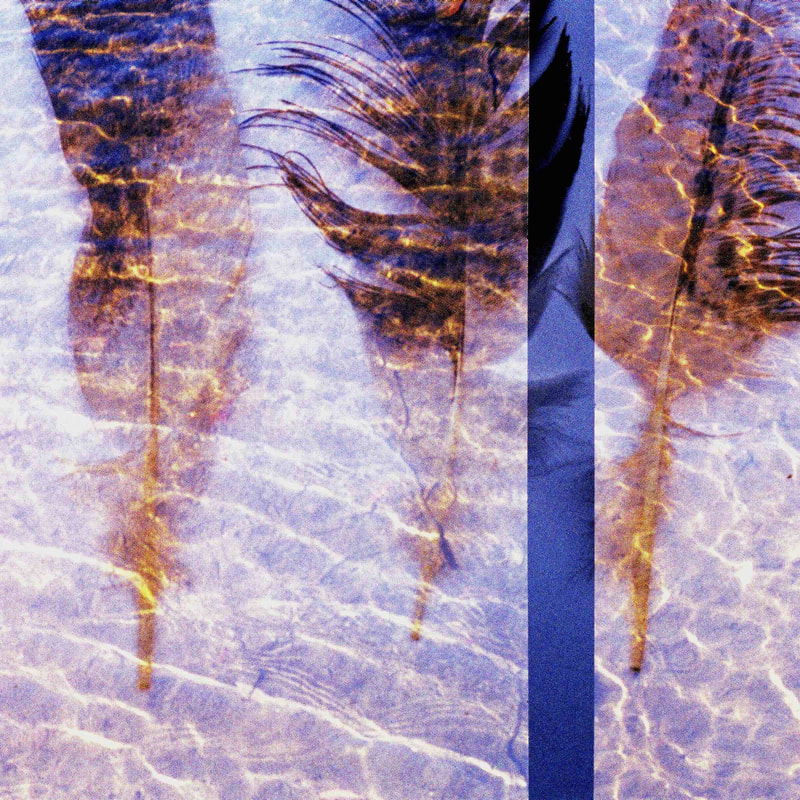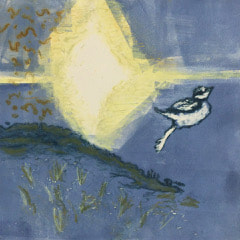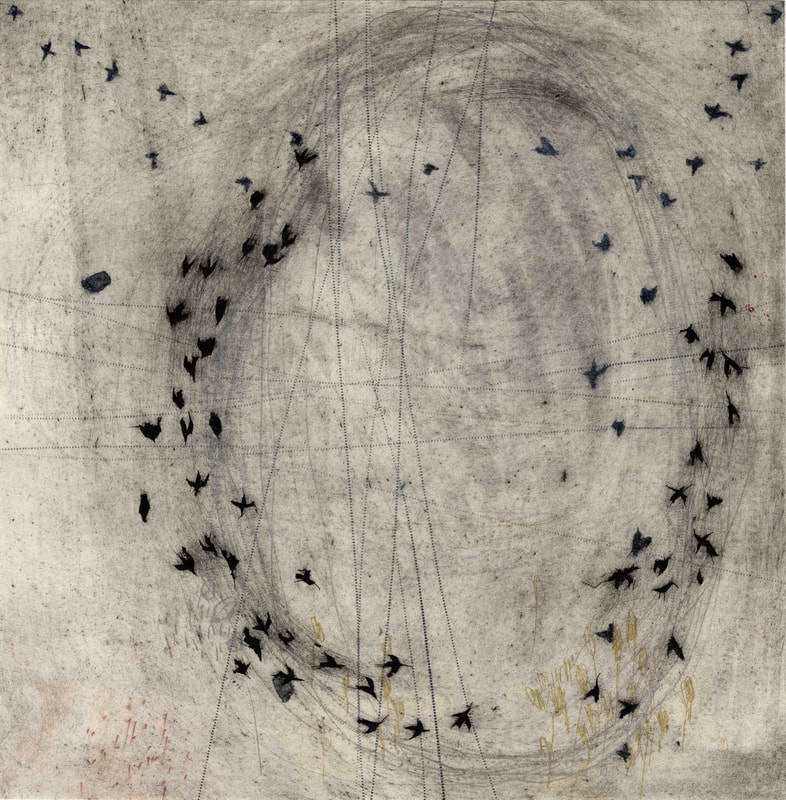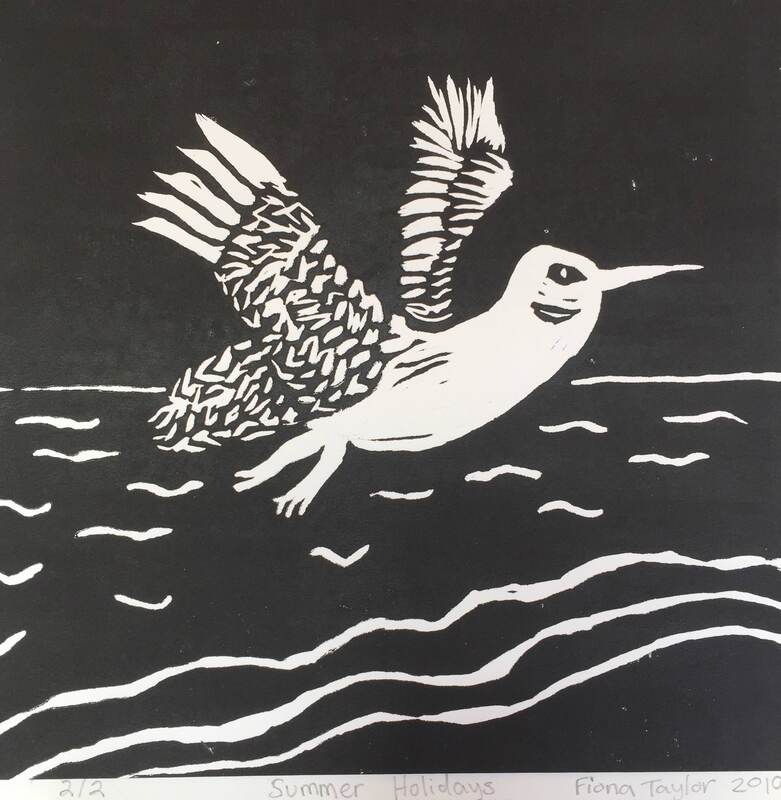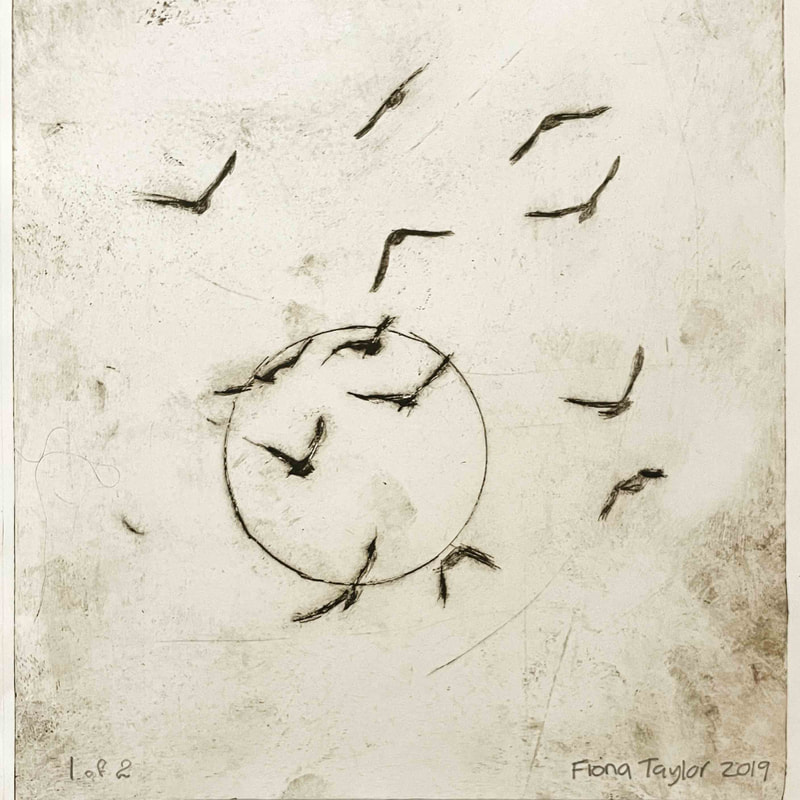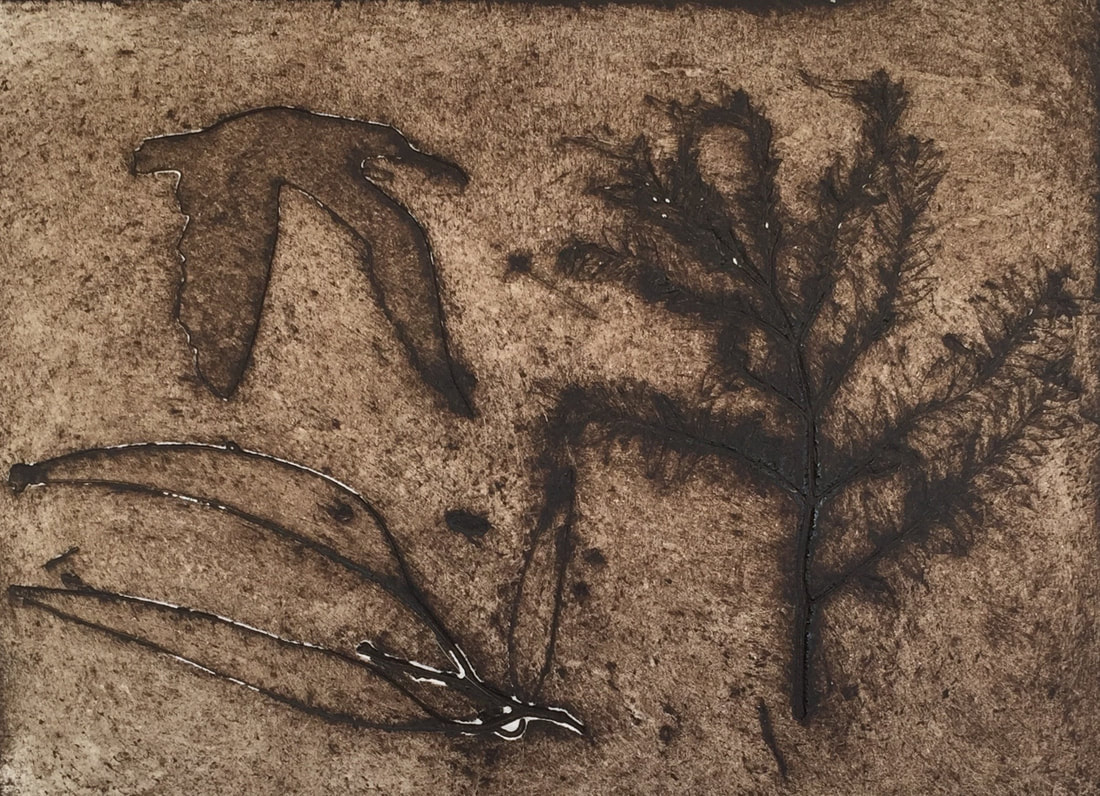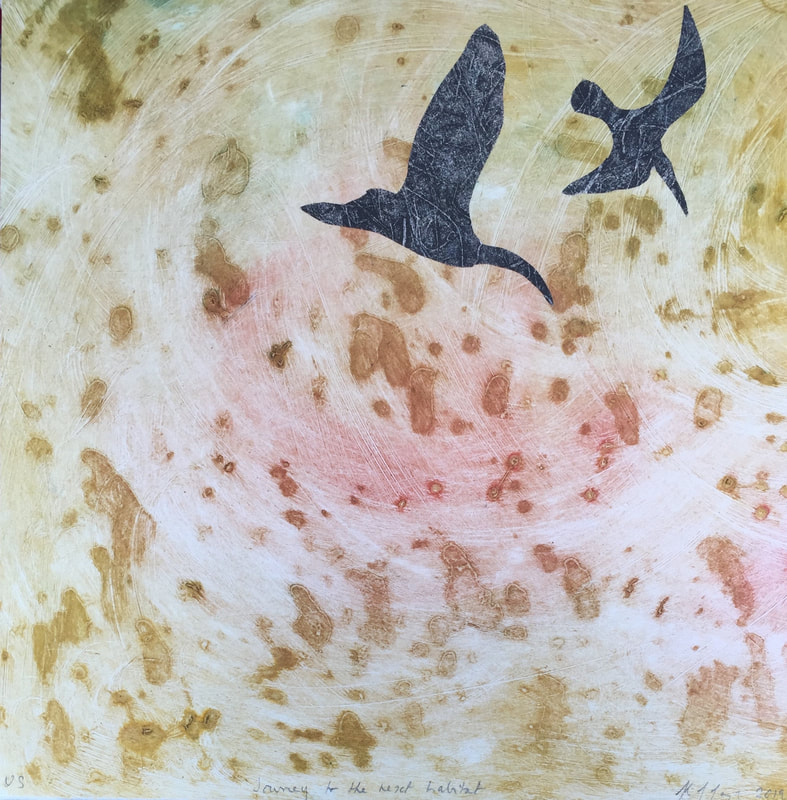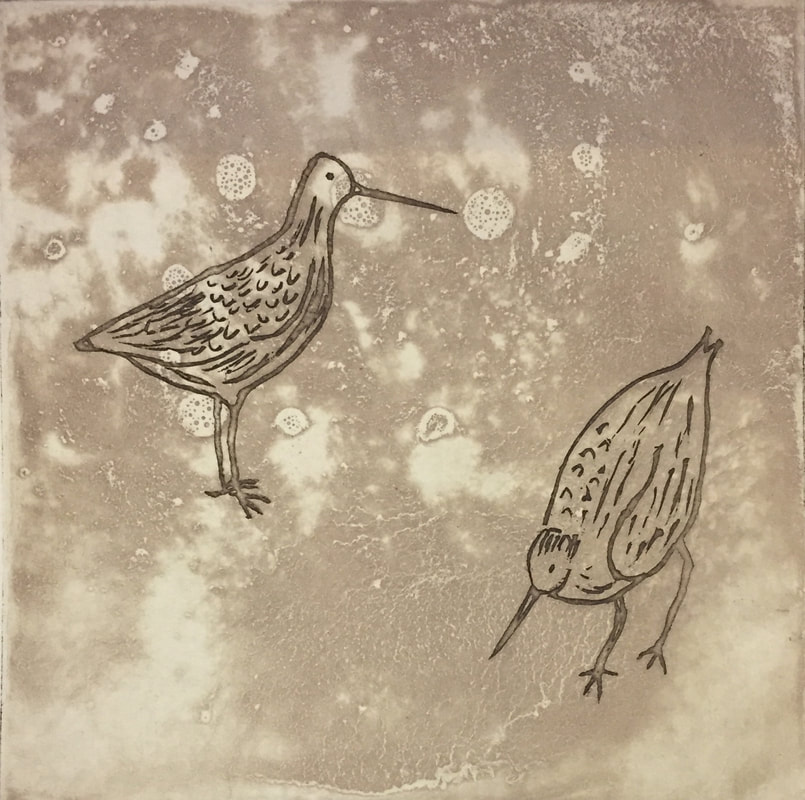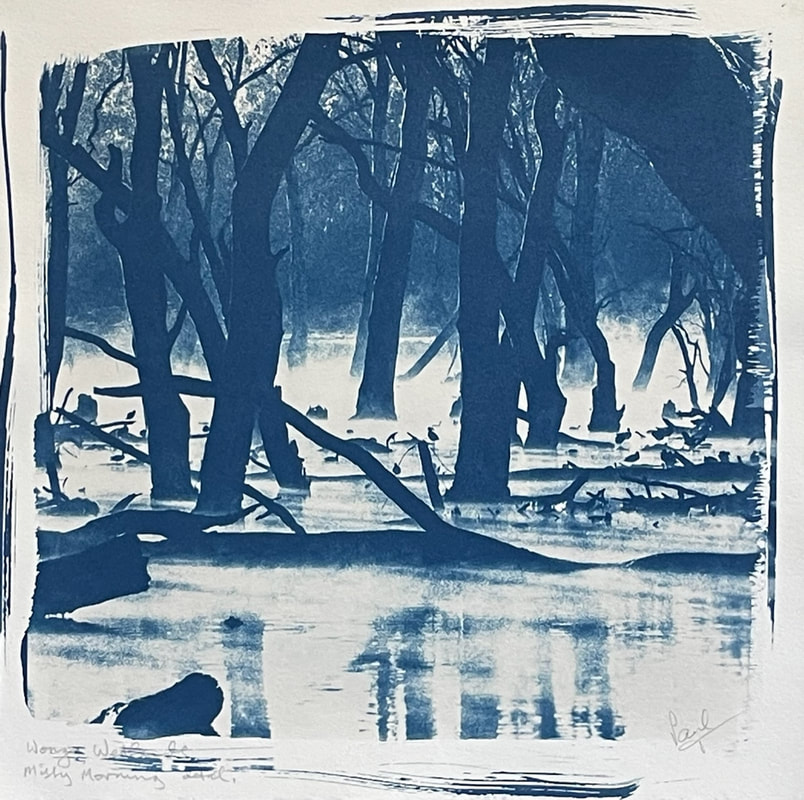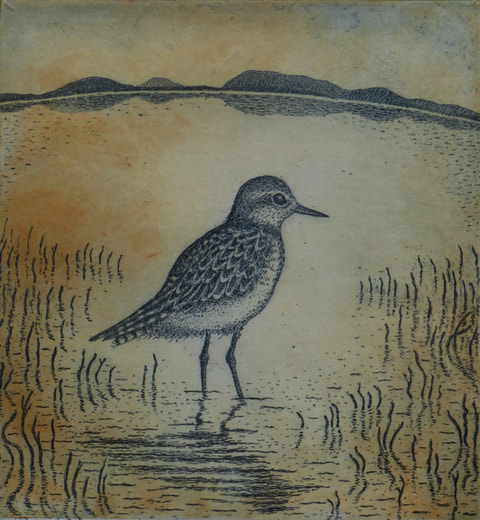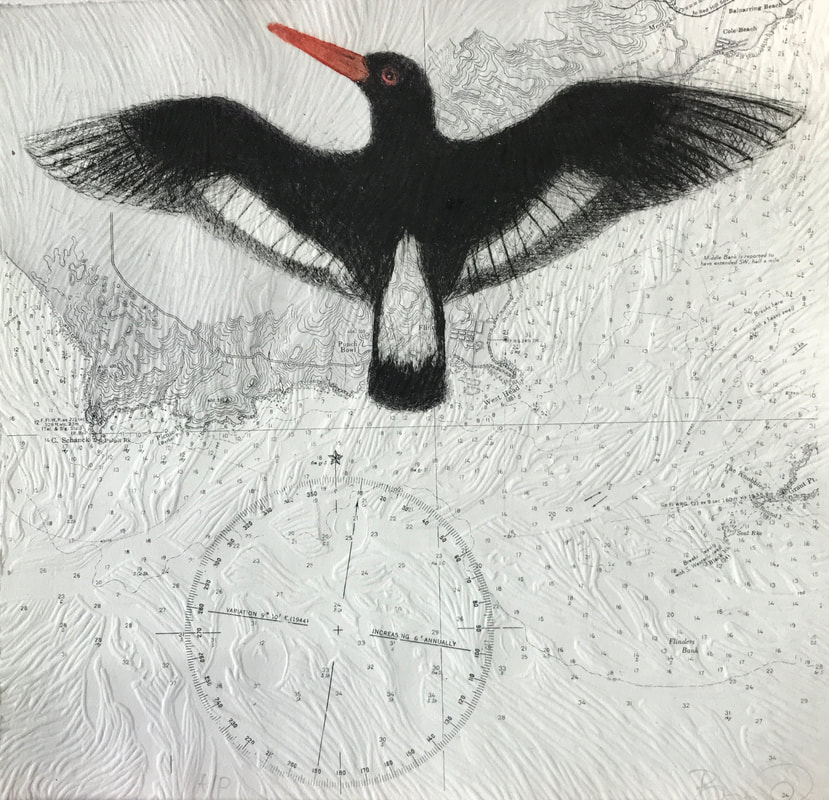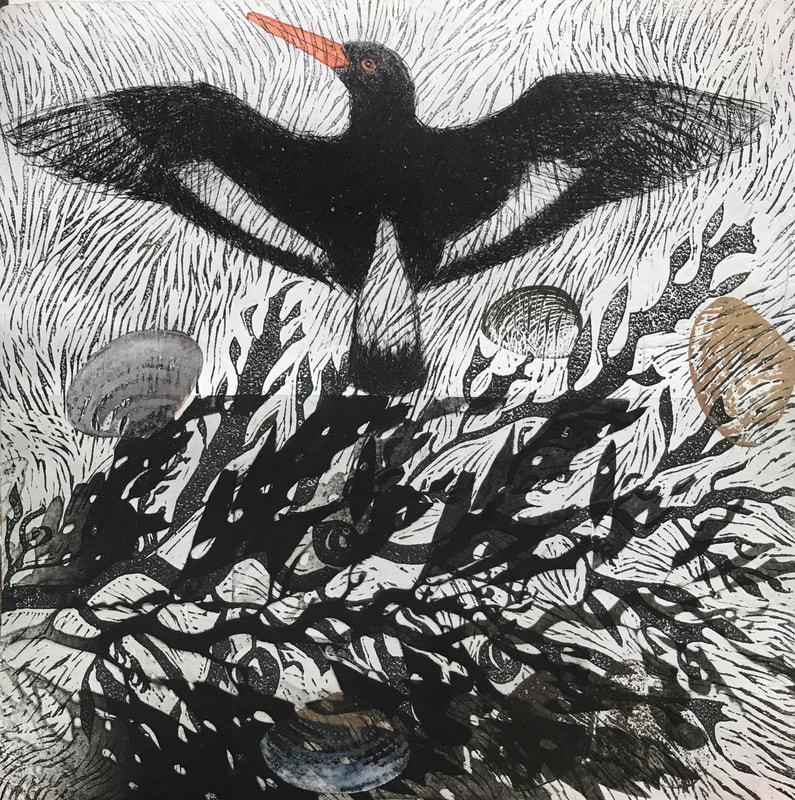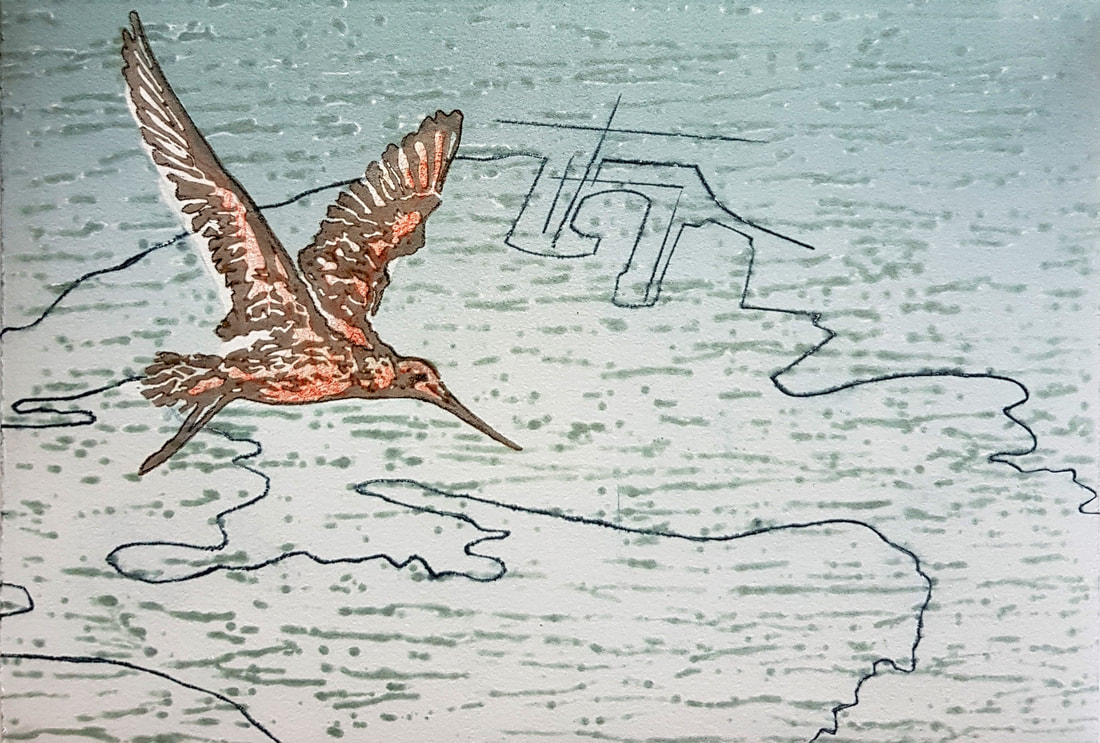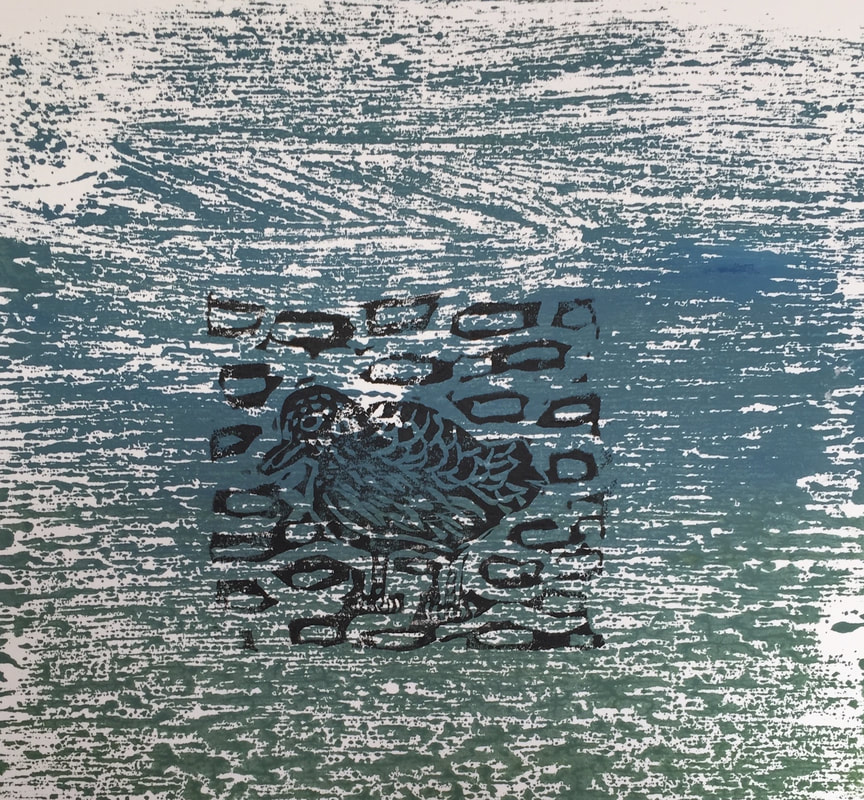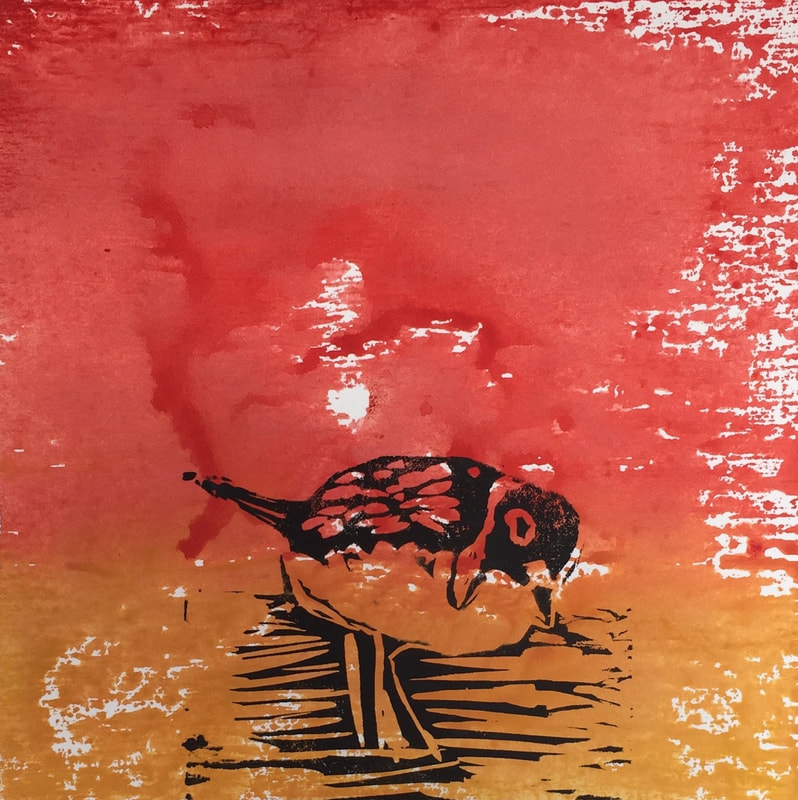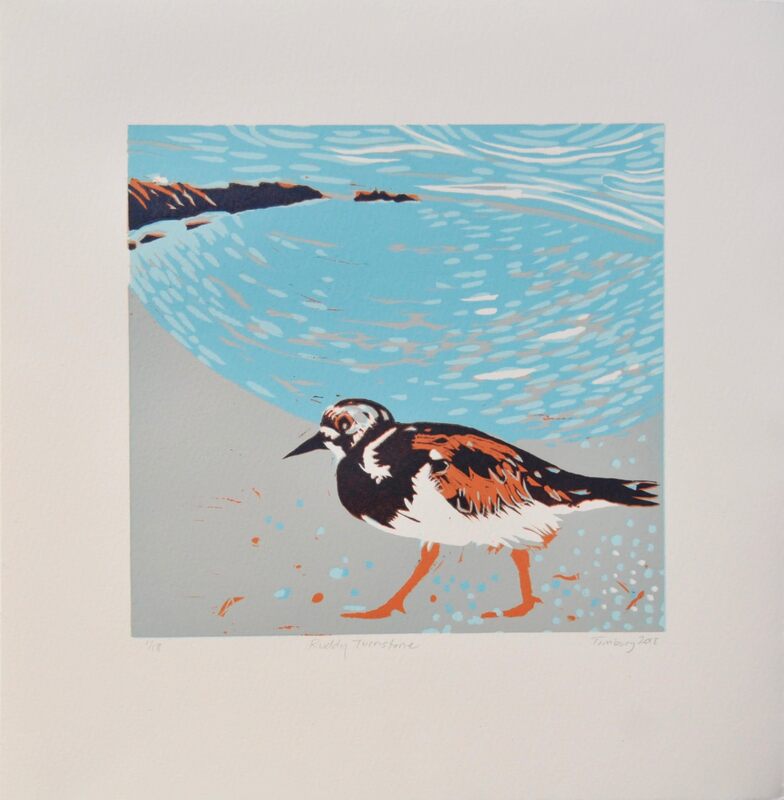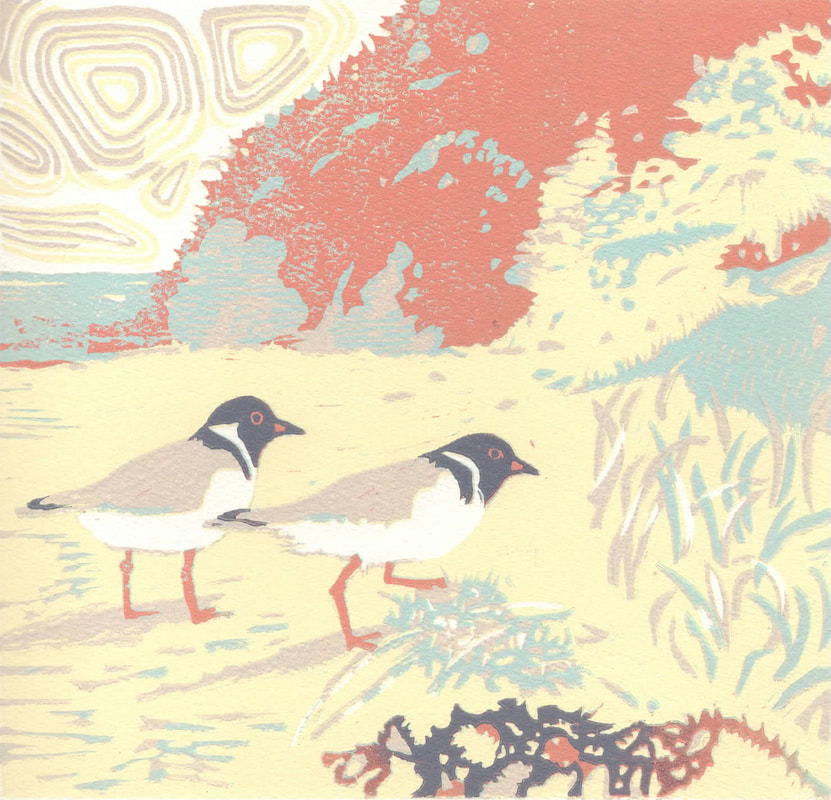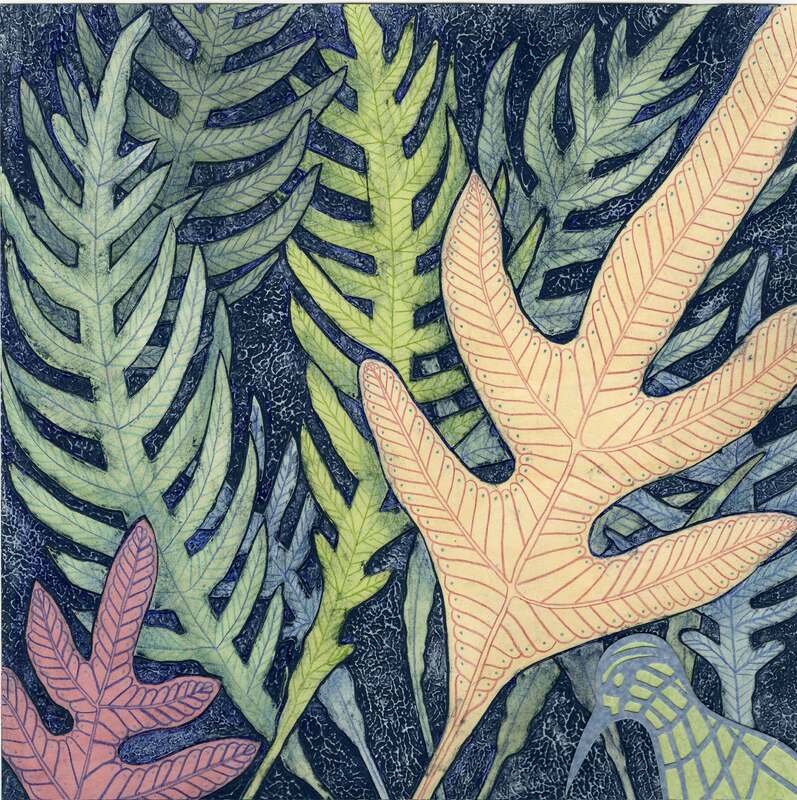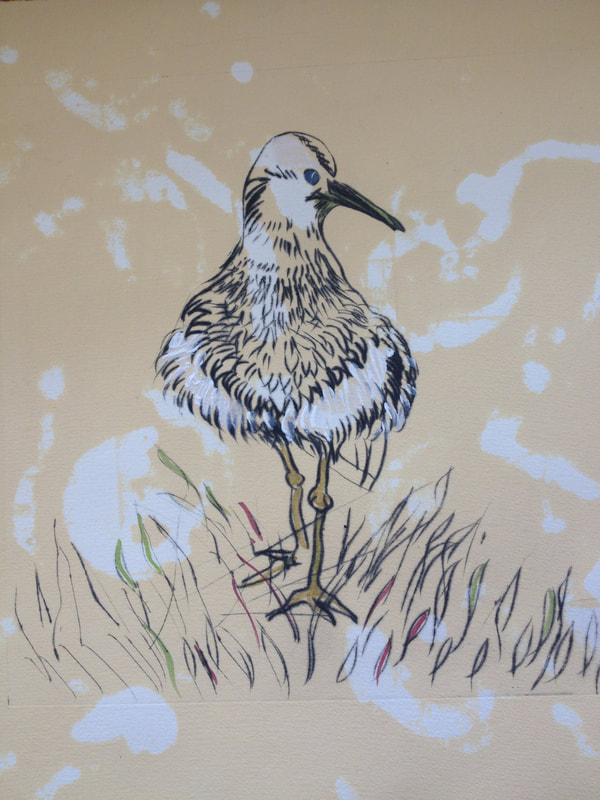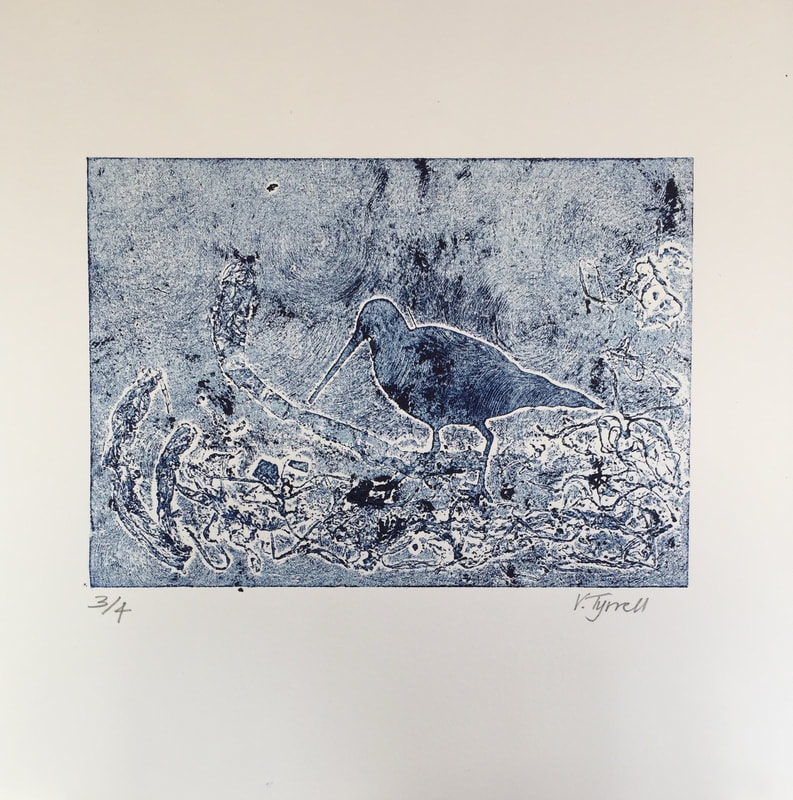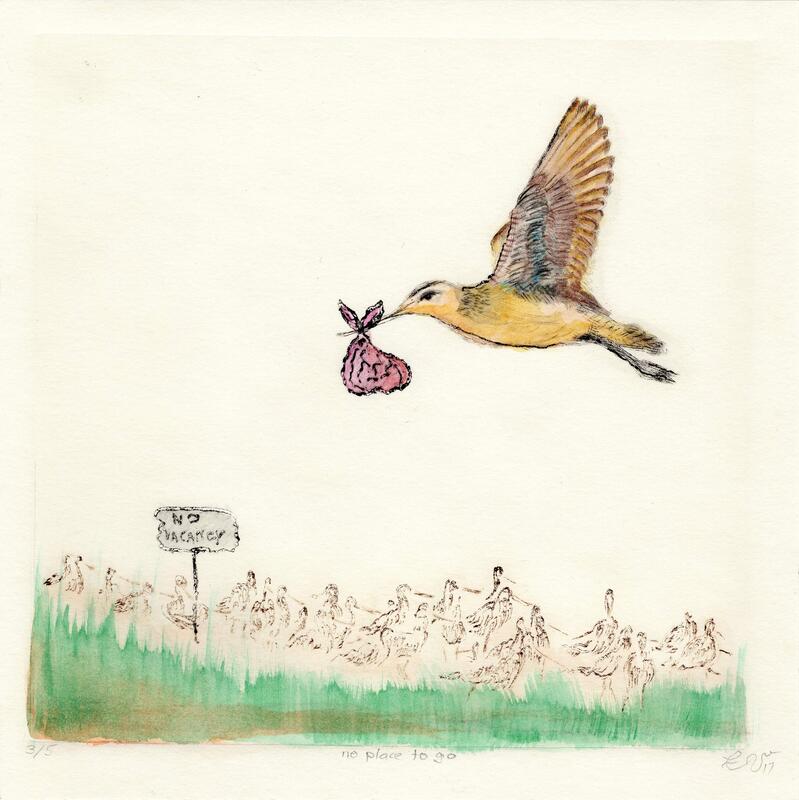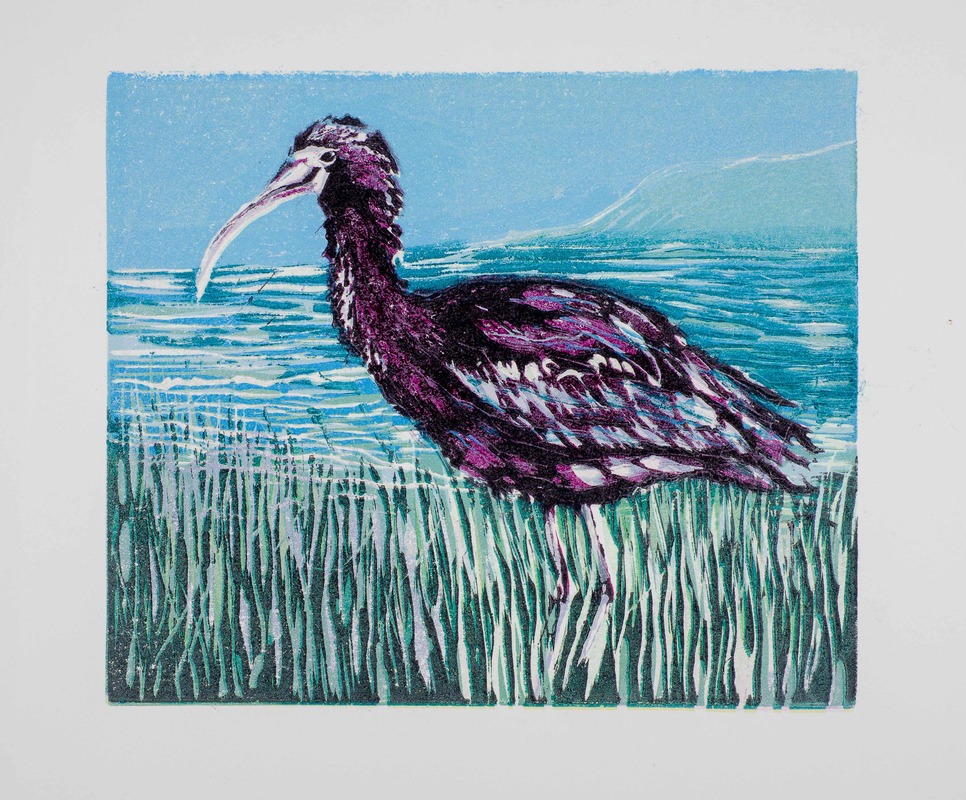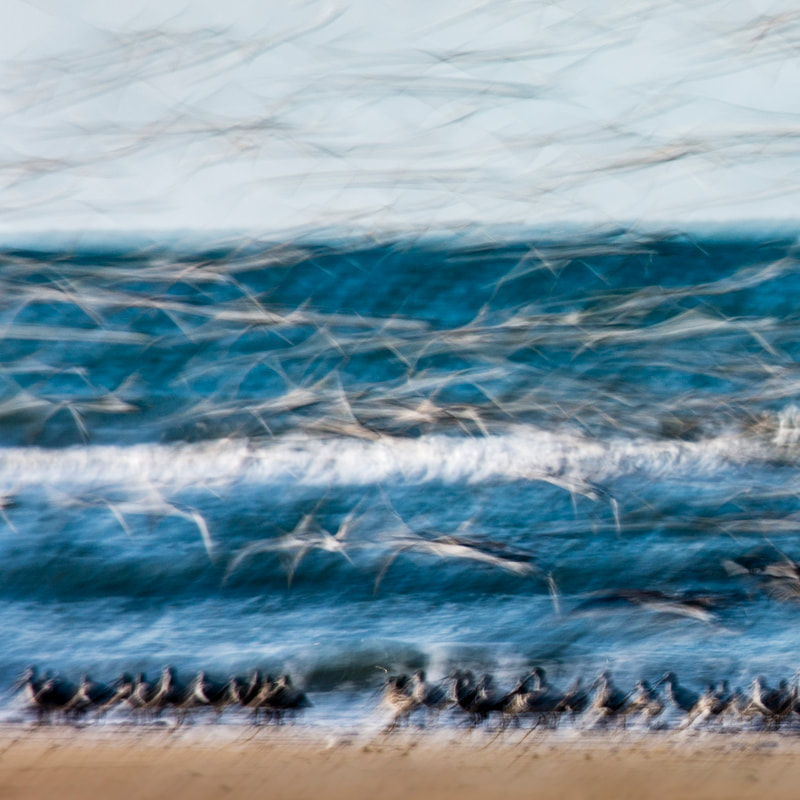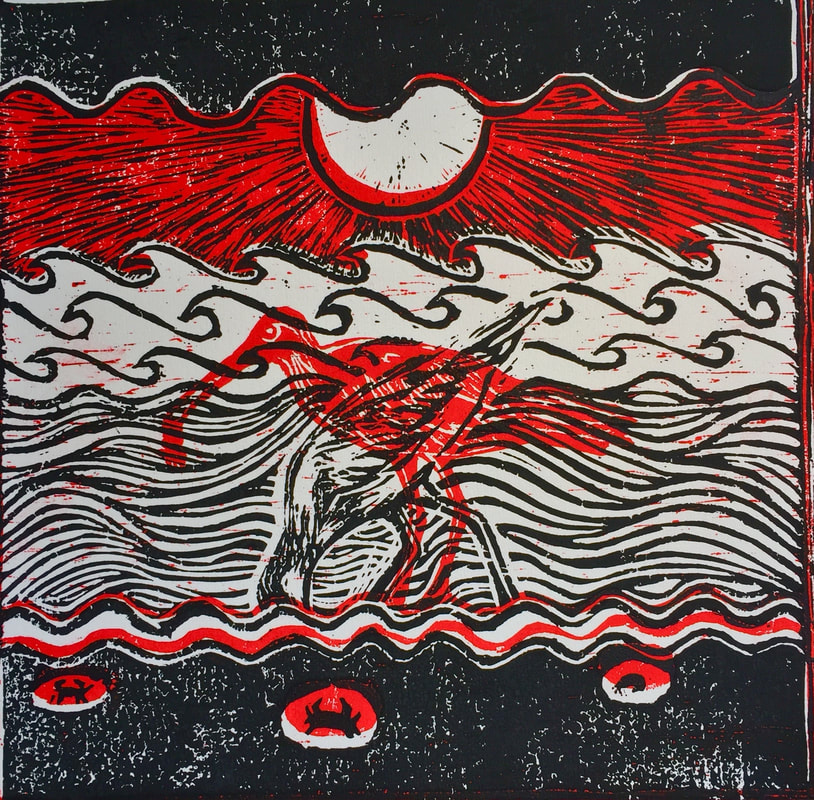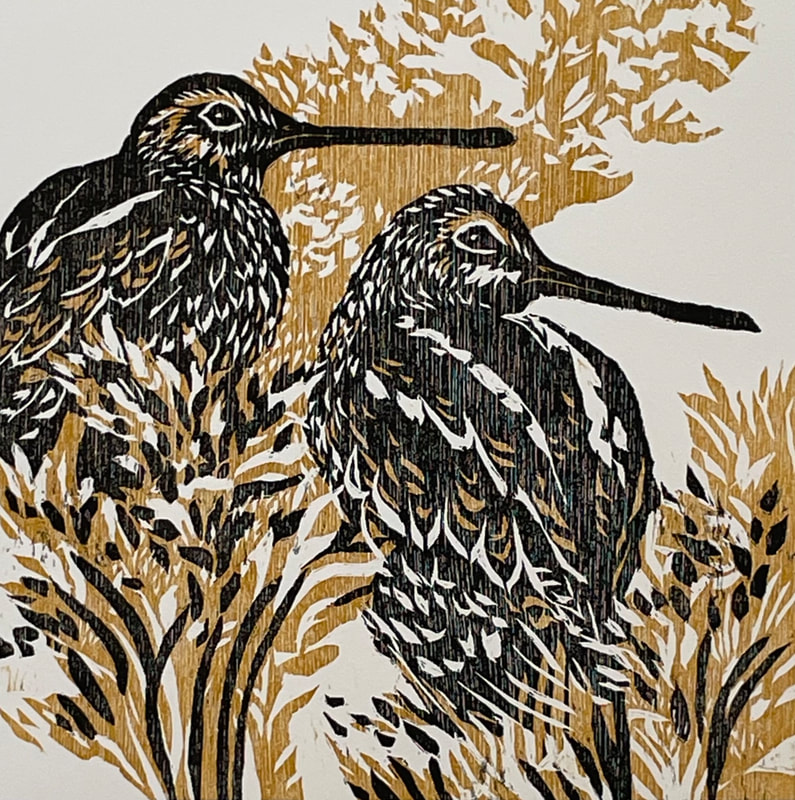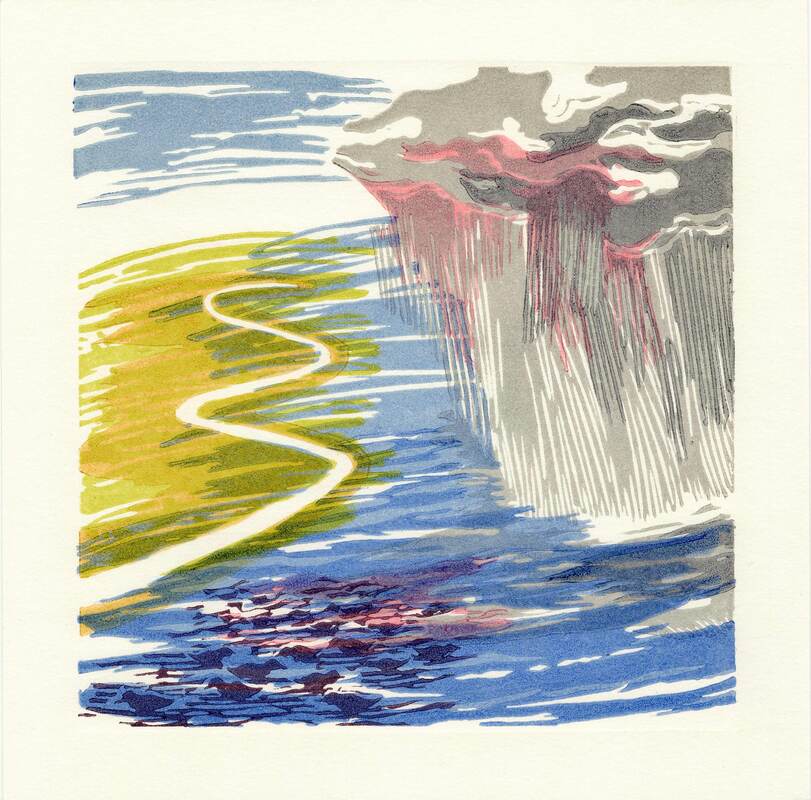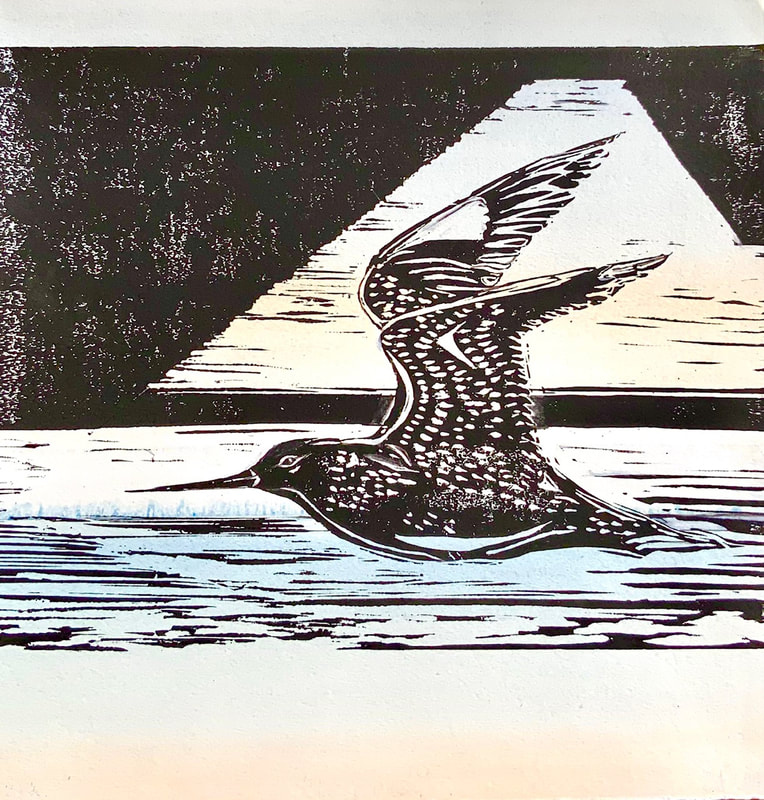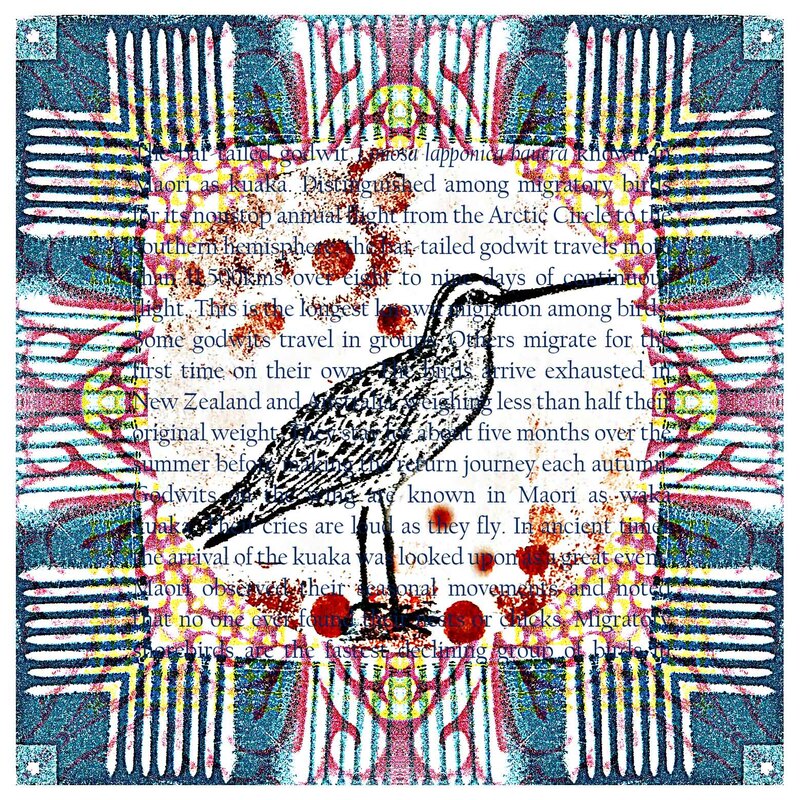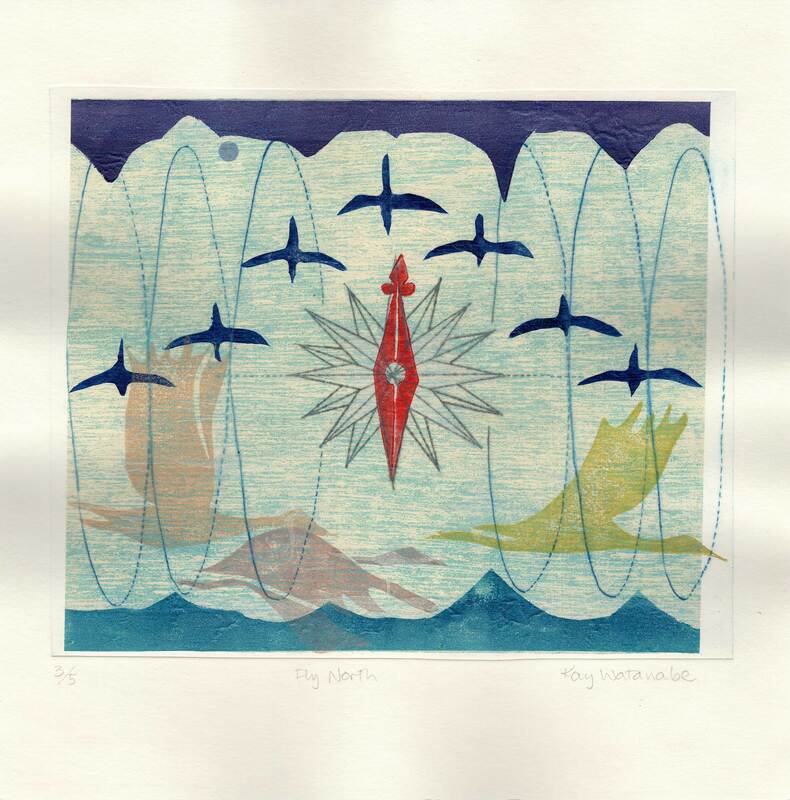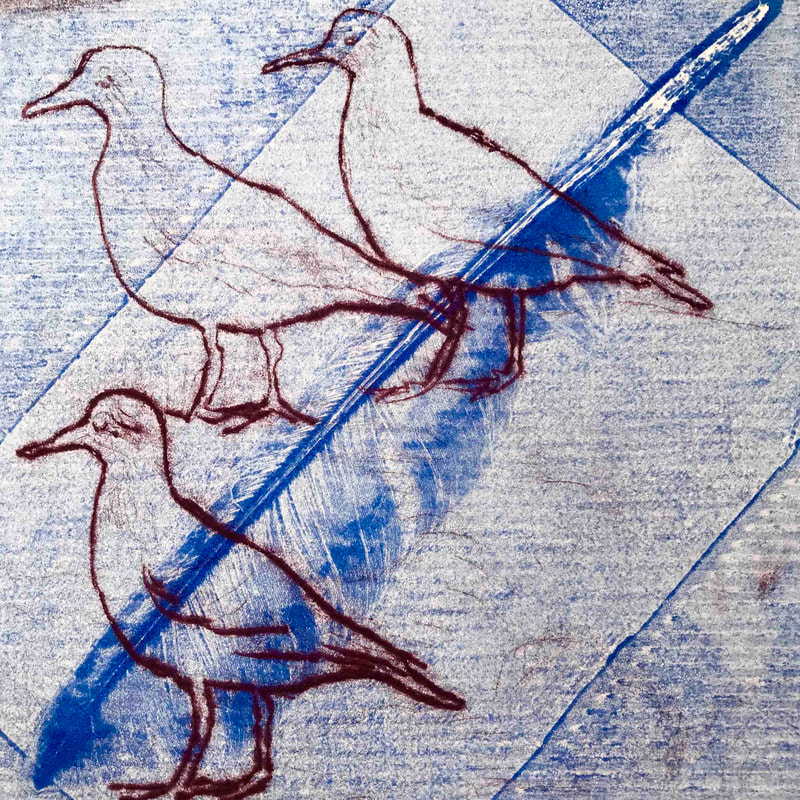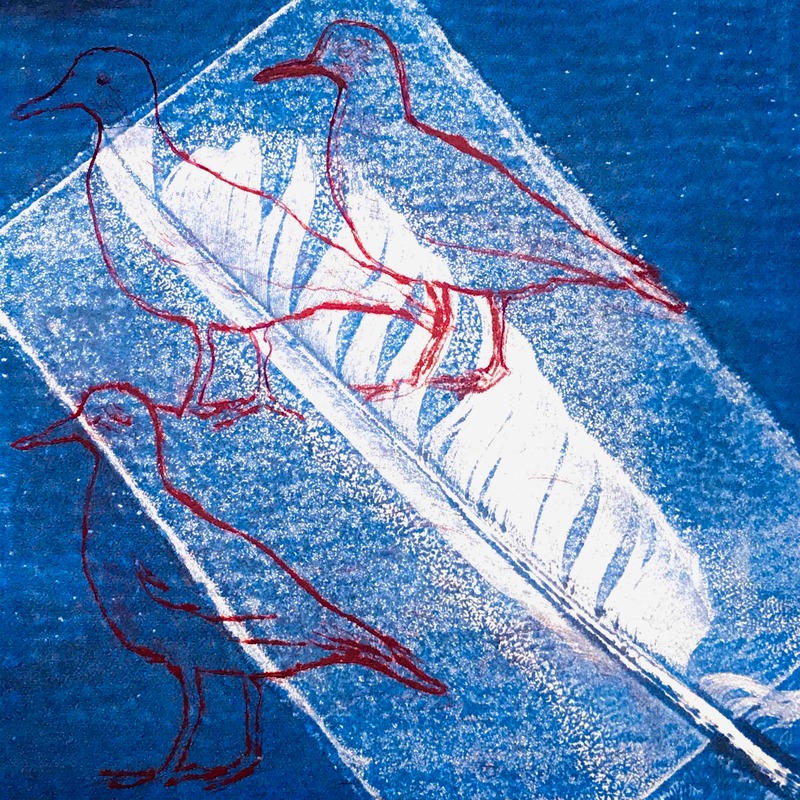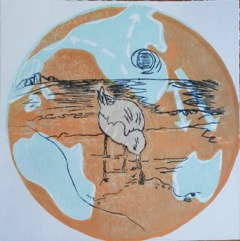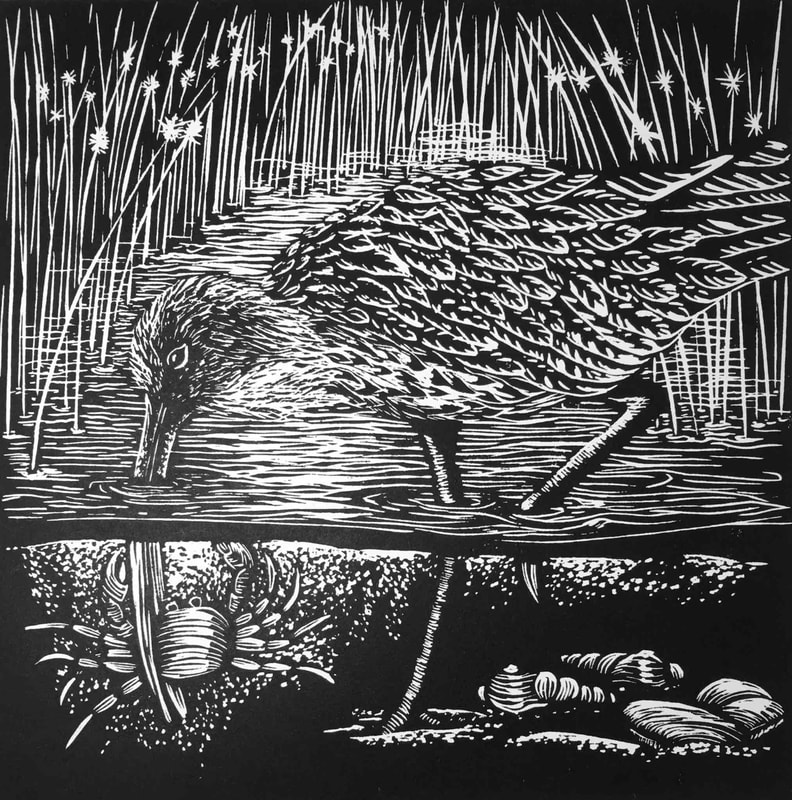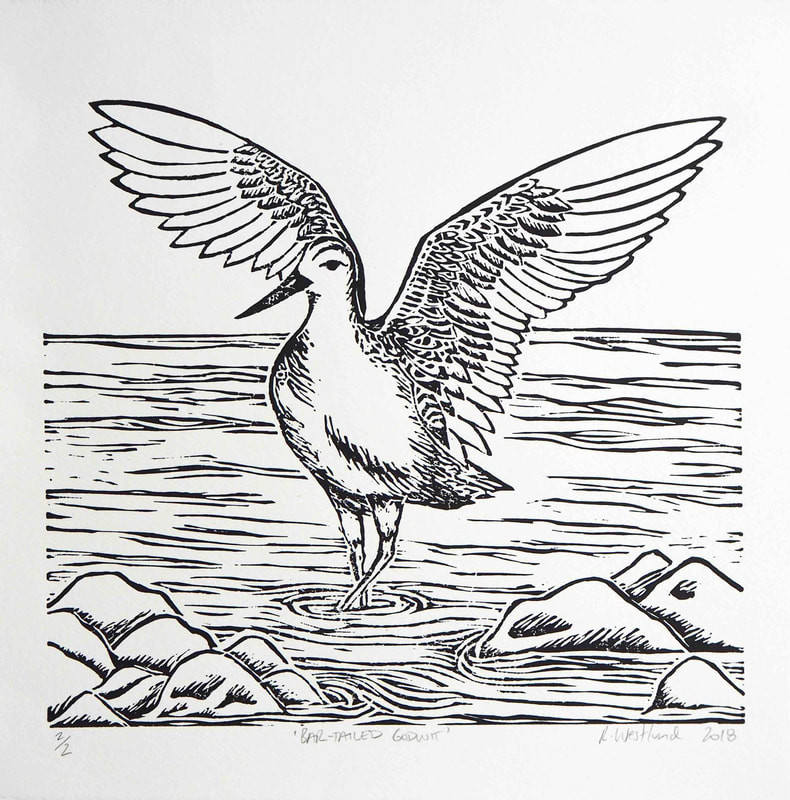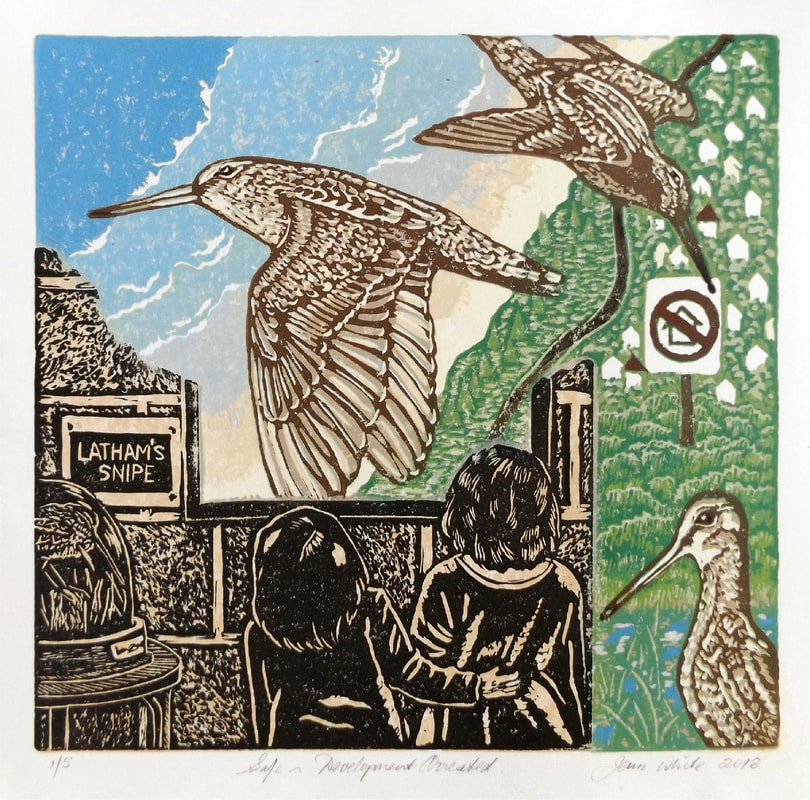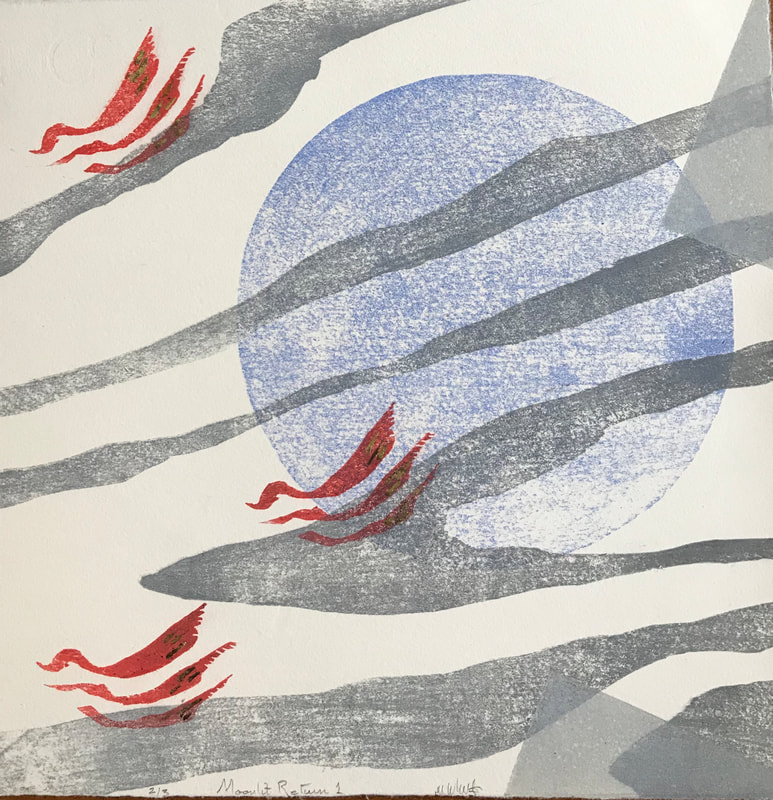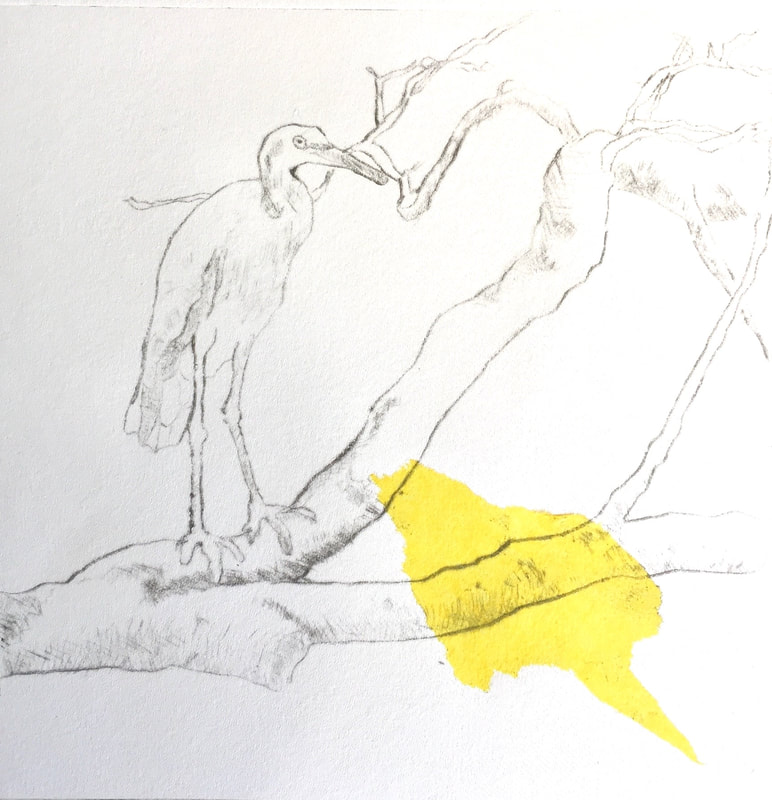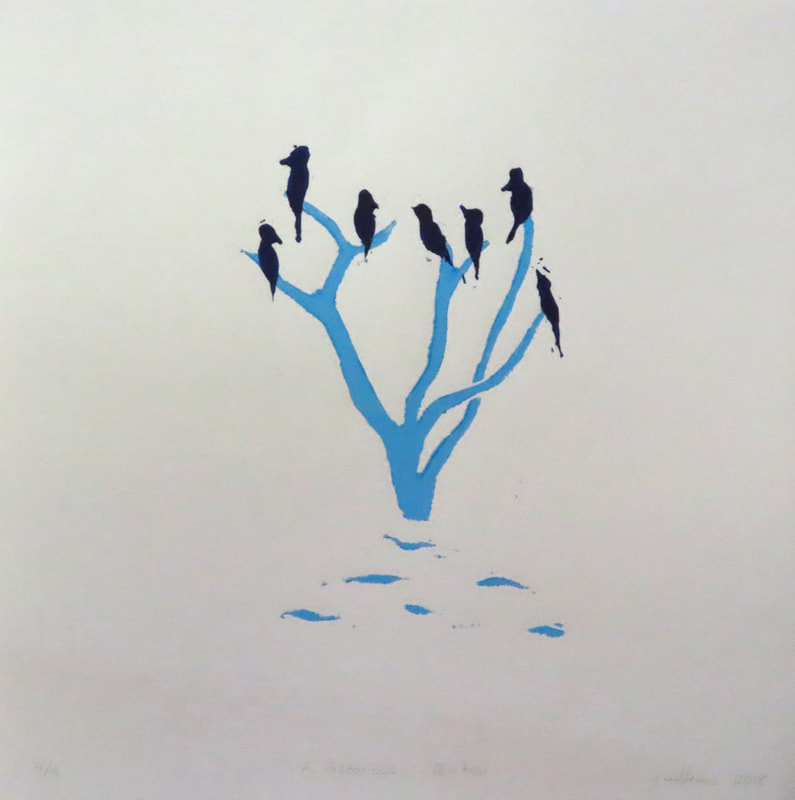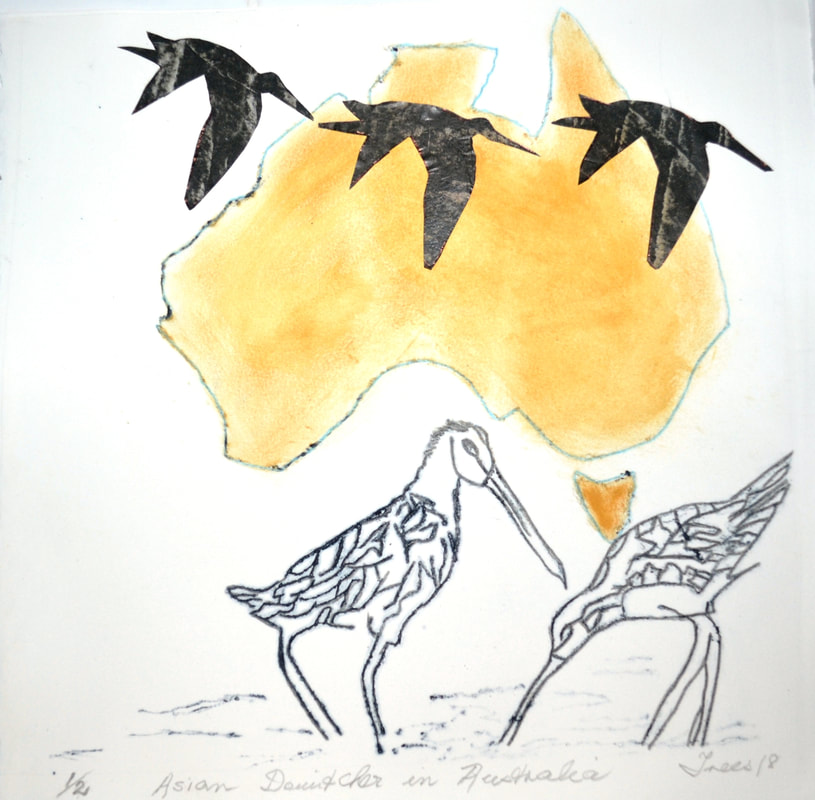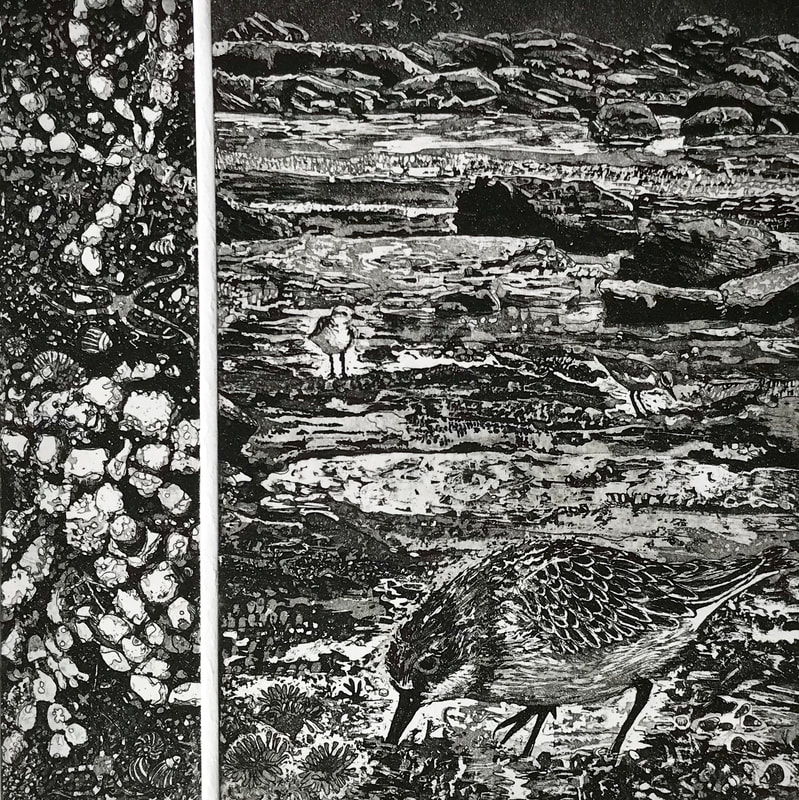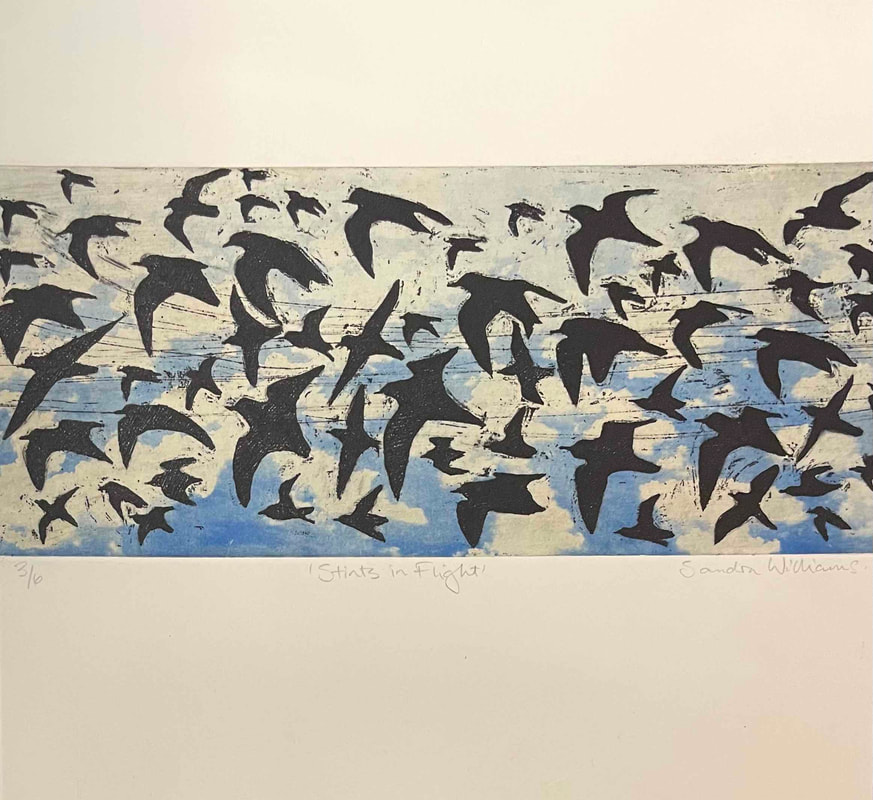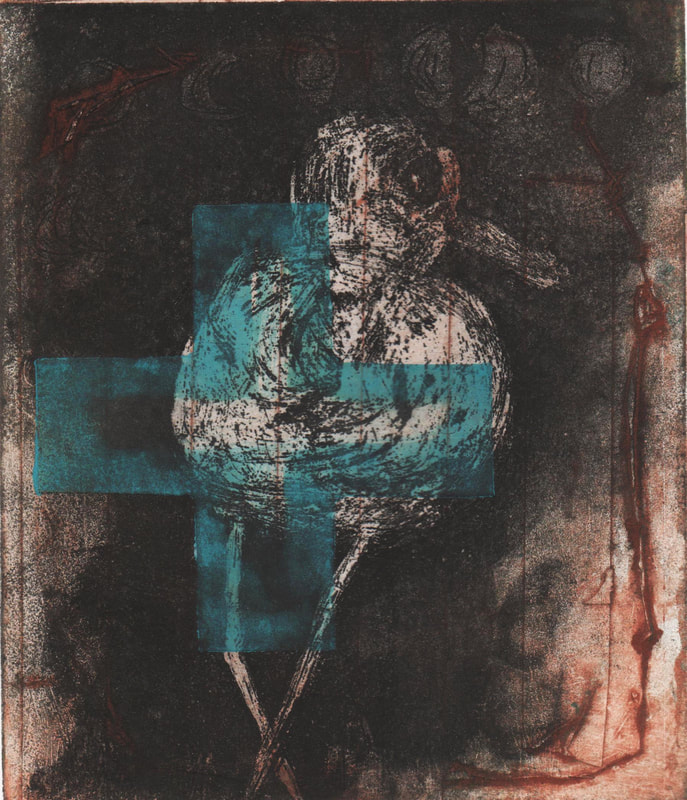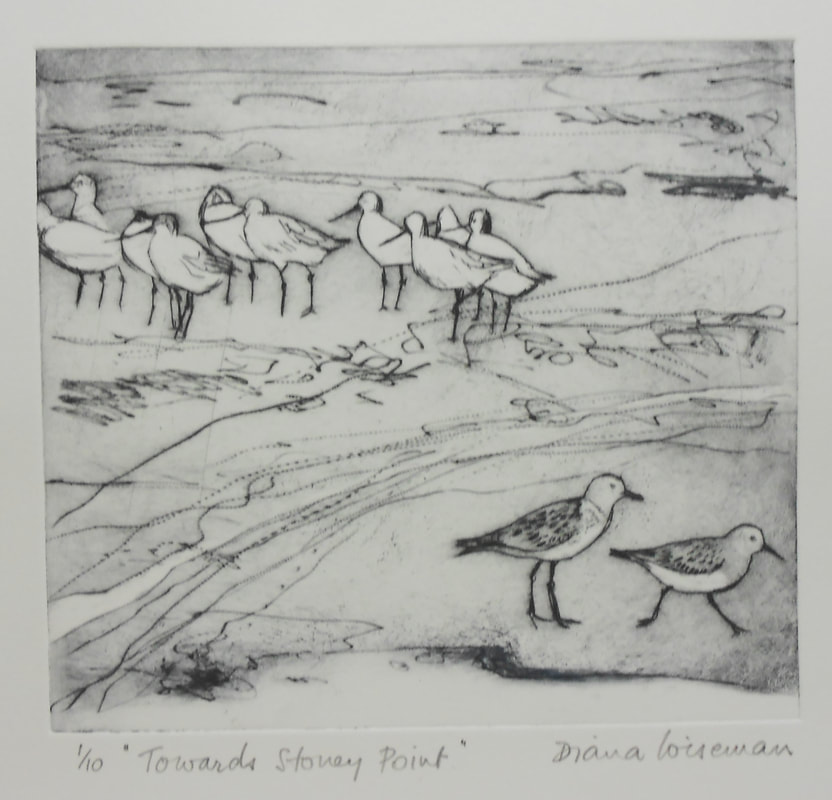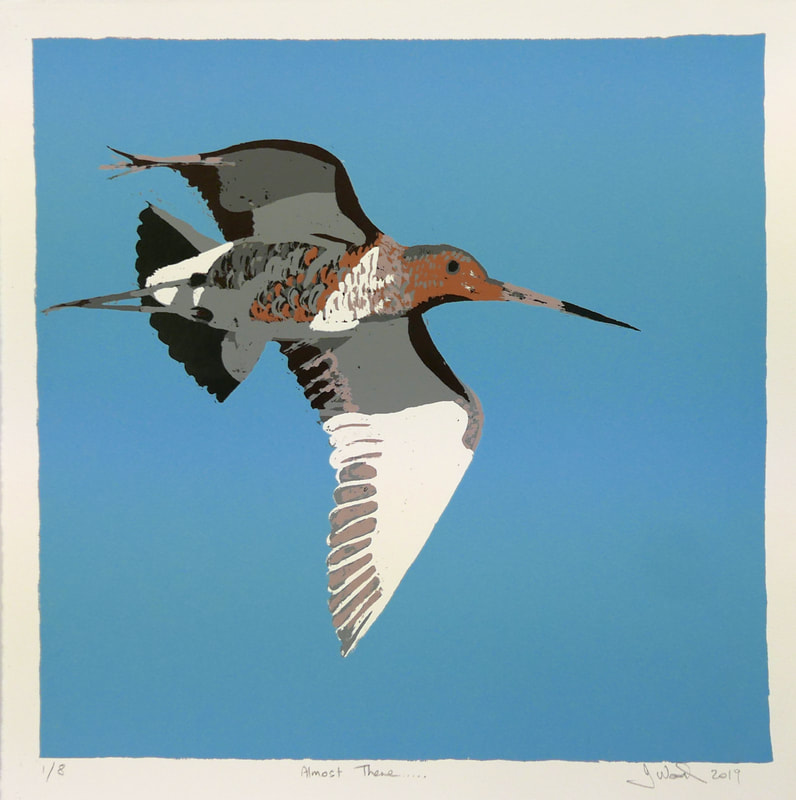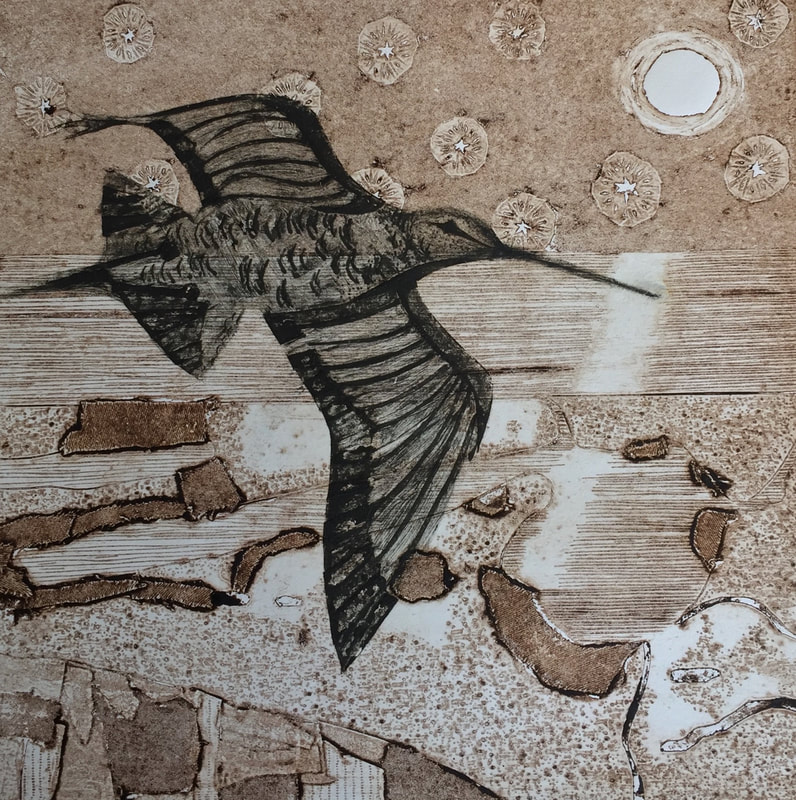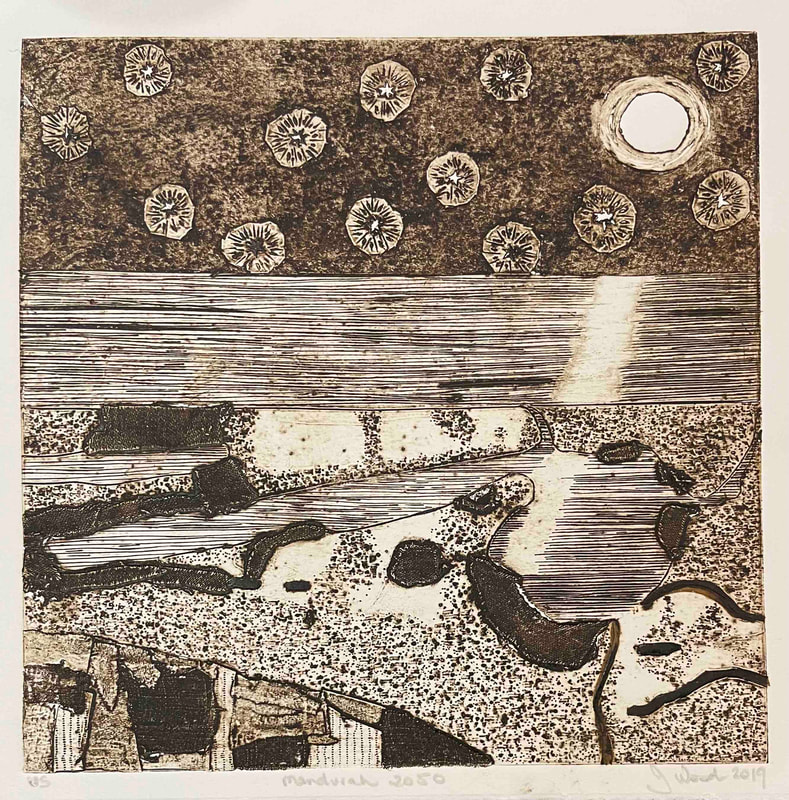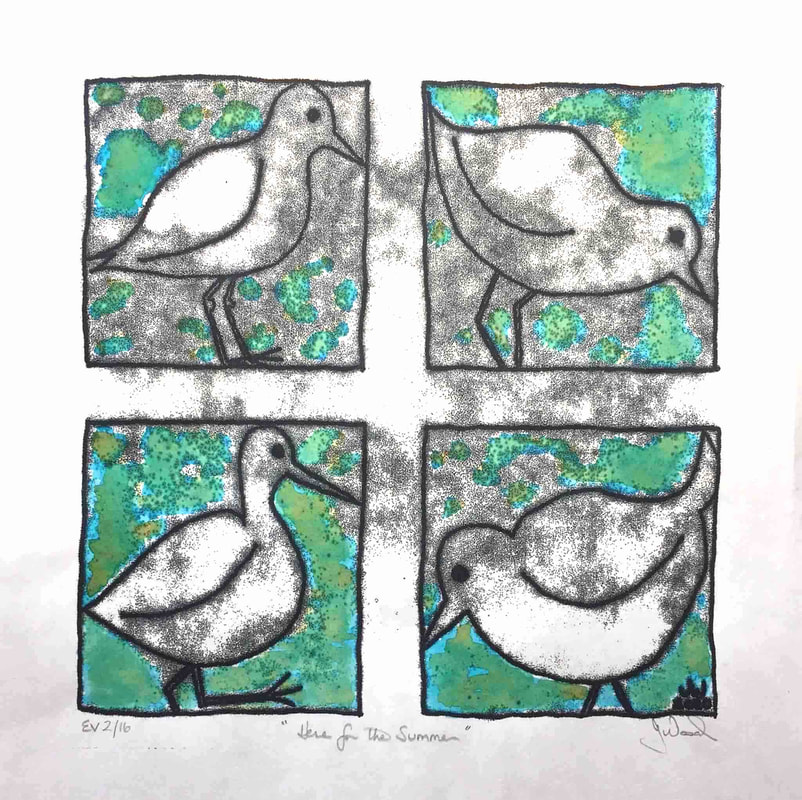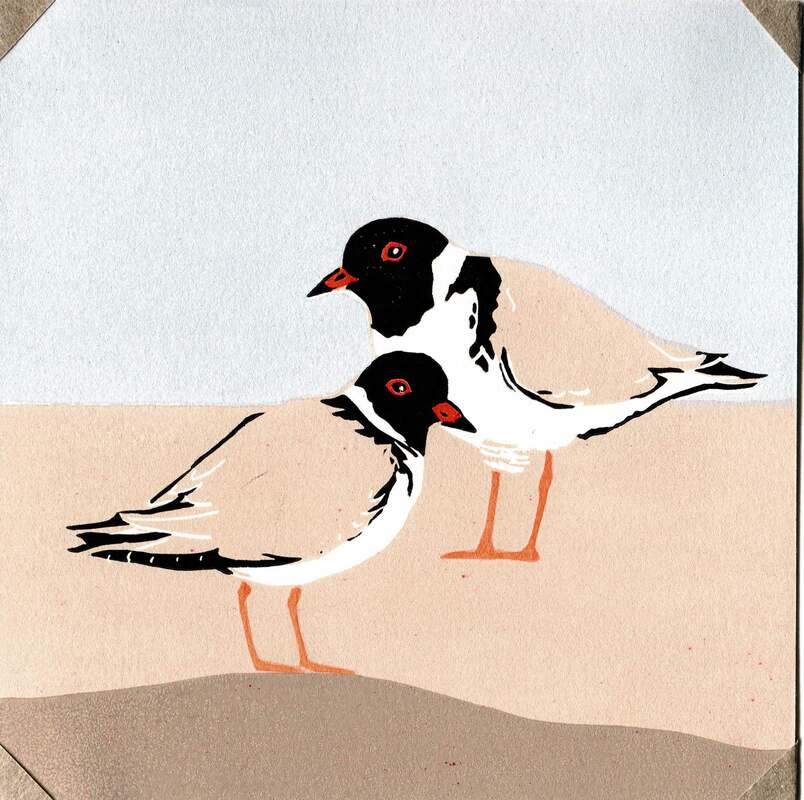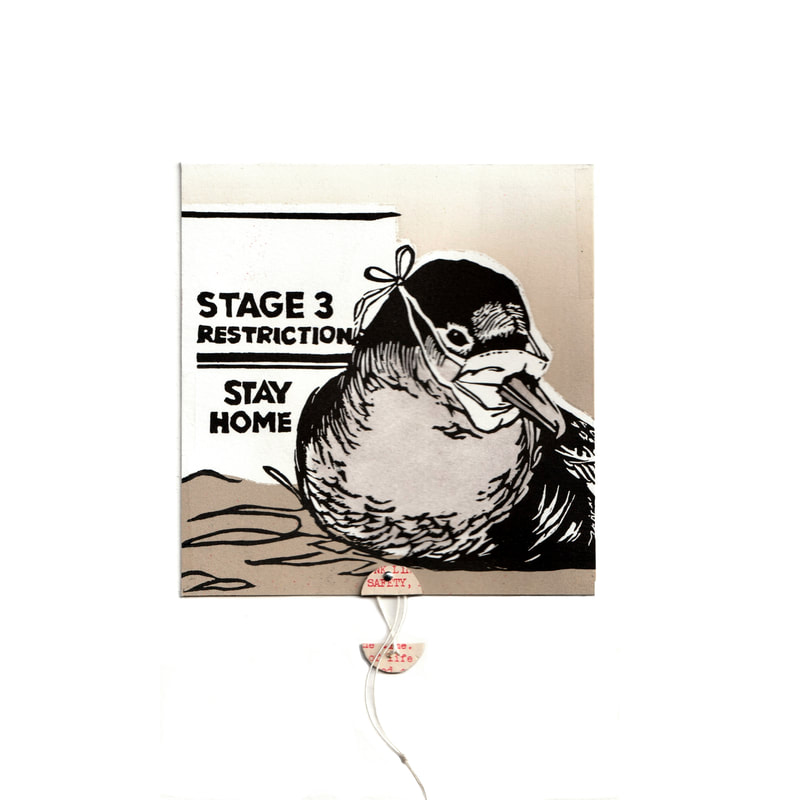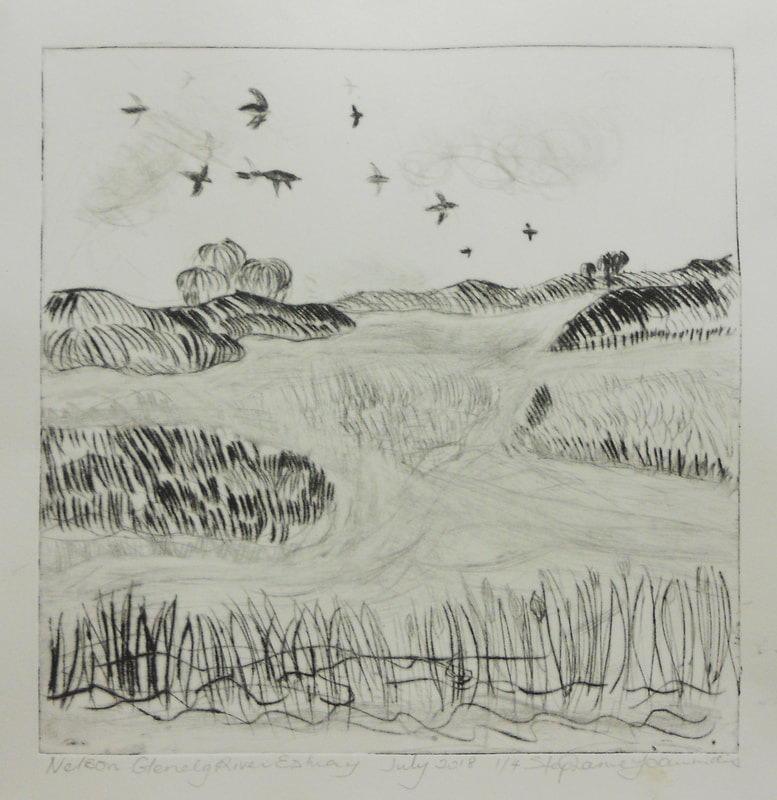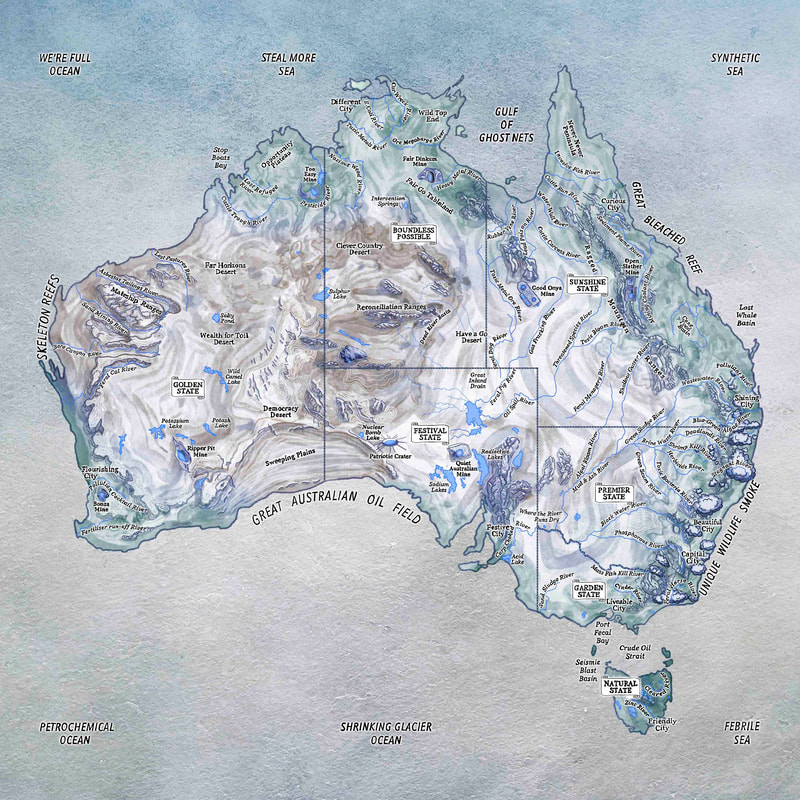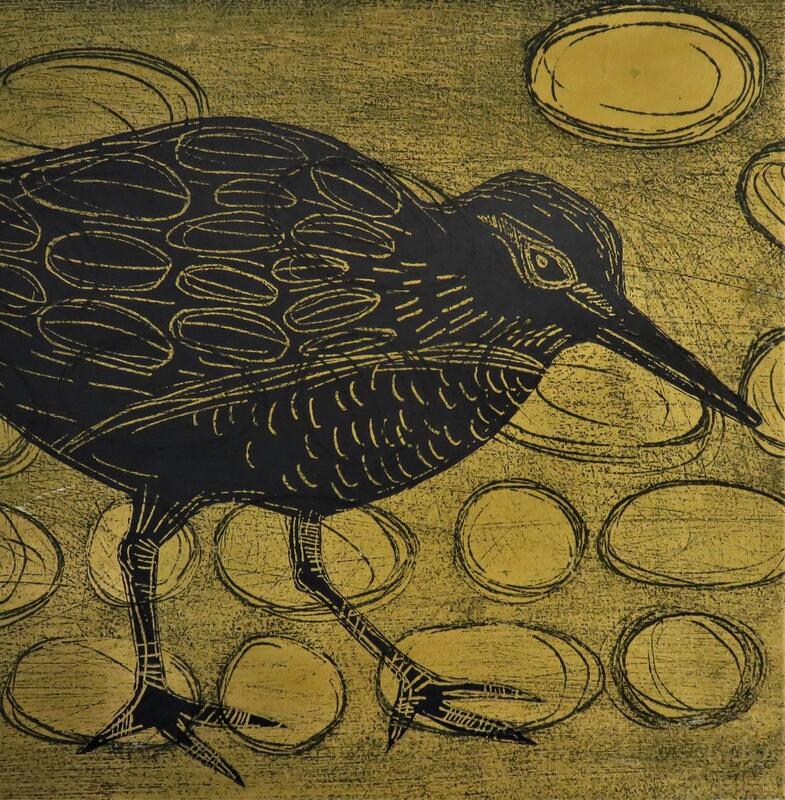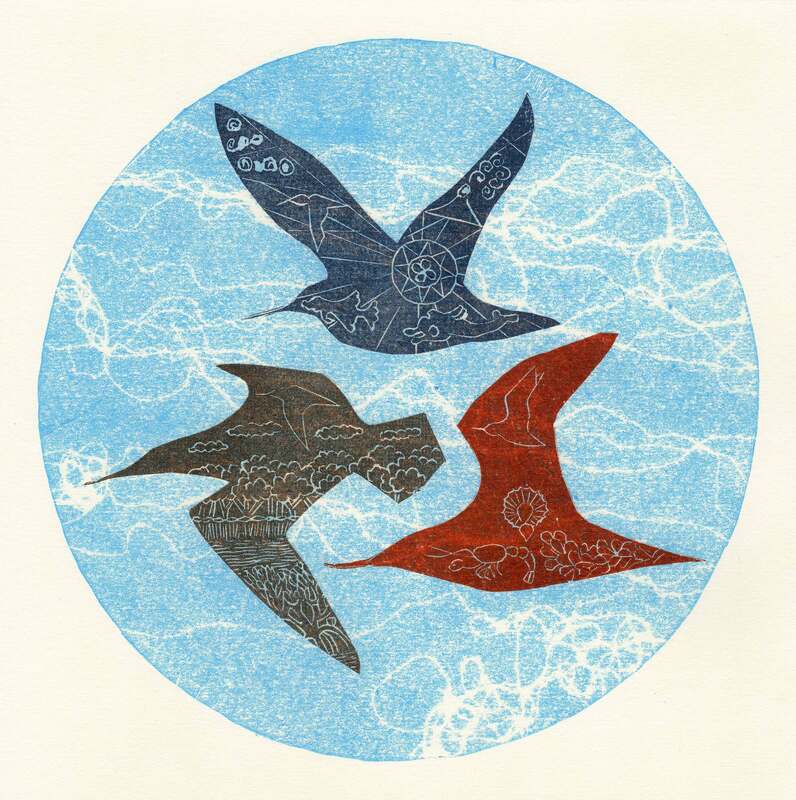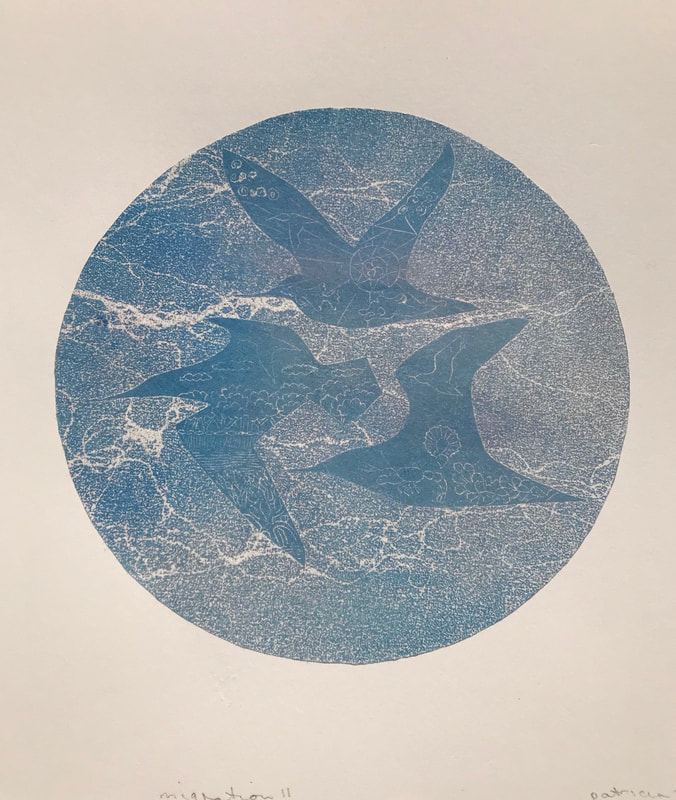Introduction
Artists who work in any media can join the Overwintering Project, but the core of the project is the Overwintering Project Print Portfolio, a growing portfolio of original prints by artists from around Australia and New Zealand. The artists who have contributed these prints to the project are listed below, and you can find out how to contribute a print here.
To contribute a work to the portfolio, artists are asked to visit their local migratory shorebird habitat and to respond to it. This is to foster a genuine connection between them and their local habitat. The project is long-term, to give people the opportunity to come to it in their own time, and for as many people to join as possible. The Portfolio is a collection of original prints in any medium, on paper 28 x 28 cm, made by artists in response to their local migratory shorebird habitat and donated to the project by the artists.
As the project’s goal is also to encourage people to see habitat as a complex system upon which many species rely, artists are encouraged to make work about any aspect of the habitat to which they feel drawn. This is why you will see some species other than migratory shorebirds in the artworks of the Portfolio, including resident shorebirds such as the extremely endangered Hooded Plover and striking Oystercatchers, other birds such as egrets, ibis and shearwaters, and other animals, plants and depictions of habitat and journeys. Having said that, most artists have chosen to depict these birds that travel beyond our imaginations.
As well as being a visual petition to show how much the community across Australia cares about our migratory shorebirds, their habitat, and the other plants and animals that depend on it, the Overwintering Project Print Portfolio is a snapshot of printmaking at this time. In the Portfolio below you will find examples of every kind of printmaking: linocuts, etchings, silkscreen prints, stencils, stamps, digital prints, photocopy transfers, collographs, woodcuts, woodblock prints, chine colle, and more.
Some artists have come to the project alone, but others have made the project a focus for their local print studio or workshop. I'm very grateful to those who administrate these workshops who have often been the ones to suggest the project to the group, organise the site visits, hang and/or collate the prints and send them to me. It has been a huge job and the results can be seen below.
Workshops and Institutions that have participated in the project include:
Art House Anglesea (Anglesea, Vic.)
Bathurst Street Printmakers (Sydney, NSW)
Bittondi Printmakers (Adelaide, SA)
Capricornia Printmakers Inc. (Rockhampton, Qld)
Charles Darwin University (Darwin, NT)
Creators Artspace (Wodonga, Vic.)
Firestation Print Studio (Melbourne, Vic.)
King Island Cultural Centre (Tas.)
Maryborough Printmakers Qld
Megalo Print Studio (ACT)
Migaloo Press (Brisbane, Qld)
Newcastle Printmakers Workshop (Newcastle, NSW)
North Metropolitan TAFE (Perth, WA)
Portland Bay Press (Portland, Vic.)
Printmakers Association of Western Australia
South Regional TAFE, Denmark (WA)
South Regional TAFE, Margaret River (WA)
Southern Printmakers Association (Gymea, NSW)
Thumbprint Press Inc. (Mount Gambier, SA)
Warringah Printmakers Studio Inc. (Sydney, NSW)
Woods Street Arts Space (Laverton, Vic.)
Each artist has donated two of each editioned print to the project, one to exhibit and one to sell to raise funds for shorebird conservation.
Artists who contribute prints to the Overwintering Project Print Portfolio are listed below in alphabetical order.
To contribute a work to the portfolio, artists are asked to visit their local migratory shorebird habitat and to respond to it. This is to foster a genuine connection between them and their local habitat. The project is long-term, to give people the opportunity to come to it in their own time, and for as many people to join as possible. The Portfolio is a collection of original prints in any medium, on paper 28 x 28 cm, made by artists in response to their local migratory shorebird habitat and donated to the project by the artists.
As the project’s goal is also to encourage people to see habitat as a complex system upon which many species rely, artists are encouraged to make work about any aspect of the habitat to which they feel drawn. This is why you will see some species other than migratory shorebirds in the artworks of the Portfolio, including resident shorebirds such as the extremely endangered Hooded Plover and striking Oystercatchers, other birds such as egrets, ibis and shearwaters, and other animals, plants and depictions of habitat and journeys. Having said that, most artists have chosen to depict these birds that travel beyond our imaginations.
As well as being a visual petition to show how much the community across Australia cares about our migratory shorebirds, their habitat, and the other plants and animals that depend on it, the Overwintering Project Print Portfolio is a snapshot of printmaking at this time. In the Portfolio below you will find examples of every kind of printmaking: linocuts, etchings, silkscreen prints, stencils, stamps, digital prints, photocopy transfers, collographs, woodcuts, woodblock prints, chine colle, and more.
Some artists have come to the project alone, but others have made the project a focus for their local print studio or workshop. I'm very grateful to those who administrate these workshops who have often been the ones to suggest the project to the group, organise the site visits, hang and/or collate the prints and send them to me. It has been a huge job and the results can be seen below.
Workshops and Institutions that have participated in the project include:
Art House Anglesea (Anglesea, Vic.)
Bathurst Street Printmakers (Sydney, NSW)
Bittondi Printmakers (Adelaide, SA)
Capricornia Printmakers Inc. (Rockhampton, Qld)
Charles Darwin University (Darwin, NT)
Creators Artspace (Wodonga, Vic.)
Firestation Print Studio (Melbourne, Vic.)
King Island Cultural Centre (Tas.)
Maryborough Printmakers Qld
Megalo Print Studio (ACT)
Migaloo Press (Brisbane, Qld)
Newcastle Printmakers Workshop (Newcastle, NSW)
North Metropolitan TAFE (Perth, WA)
Portland Bay Press (Portland, Vic.)
Printmakers Association of Western Australia
South Regional TAFE, Denmark (WA)
South Regional TAFE, Margaret River (WA)
Southern Printmakers Association (Gymea, NSW)
Thumbprint Press Inc. (Mount Gambier, SA)
Warringah Printmakers Studio Inc. (Sydney, NSW)
Woods Street Arts Space (Laverton, Vic.)
Each artist has donated two of each editioned print to the project, one to exhibit and one to sell to raise funds for shorebird conservation.
Artists who contribute prints to the Overwintering Project Print Portfolio are listed below in alphabetical order.
Participating Artists and the Prints of the Portfolio
To date, the artists of the Overwintering Project Print Portfolio are:
ACKERMAN, Tanja; ALLSOP, Riki; ALTSCHWAGER, Libby; AMOS, Sabine; ARMSTRONG, Kate; BALCHIN, Nanette; BANCROFT, Ro; BARKER, Tess; BARRY, Lyn; BATINI, Frank; BECKETT, Alexis; BEESON, Jennie; BENNETT, Margaret; BEVAN, Angela; BIGNELL, Julie; BIRD, Cynthia; BLACK, Michelle; BLAKE, Dianne; BOAG, Melissa; BONSHEK, Anna; BRERETON, Kurt; BRITTON, Hazel; BROADWAY, Vivian; BROOKS, Brenda; BUNAIKBUTH, Metasit; BURKE, Gill; CAIRNS, Robyn; CAIRNS, Valma; CAMLIN, Elaine; CAMPBELL, Sacha; CASEY, Lea; CASTALDI, Darcy; CASTALDI, Jennifer; CASTELL, Laura; CHANDLER, Linda; CHAPLYN, Glenda; CHIVERS, Megan; CICCONE, Avrille; CLARE, Helen; CLARK, Colin; CLARKE, Ileana; CLARKE, Leah; CLEMONS, Liz; CLEMONS, Trish; CLULOW, Joyce; COFFEY, Therese; COHEN, Haya Hagit; CONDE, Jen; CONNOLLY, Geraldine; CONRON, Anne; COURT, Moira; COWAN, Angela; COWIE, Nicola; COWPER, Shelley; CRAGGS, Kirsten; CROCE, Beth; DARBY, Judy; DAVIDSON, Brian; DAY, Annie; De LITTLE, Cath; DOWD, Anni; DUFFY, Josephine; DWYER MORRIS, Lola; ELKIN, Ros; ELLIS, Di; EGGPICNIC; EURELL, Jennifer; EVANS, Judy; EZRA, Robin; FORD, Clare Jean; FORMAN, Catherine; FOTHERINGHAM, Rowan; FRANKLIN, Emma; FRYER, Jill; GARDENER, Jorji; GIBLIN, Jane; GLADDISH, Grace; GLENISTER, Dianne; GOODWIN, Trudy; GORRINGE-SMITH, Kate; GOW, Britt; GRAY, Jess; GREEN, Nikki; GUNNELL, Andrew; HABY, Gracia and JENNISON, Louise; HALL, Litzia; HALLINAN, Michelle; HAMMER, Violet; HANASY, Nora; HANRAHAN, Janette; HARDING, Alyssa; HARRIOTT, Elizabeth; HARRISON, Jeanne; HELY, Anna; HENDERSON, Mark; HESTERMAN, Heather; HILLEBRAND, Bridget; HILLER, Kit; HITCHCOCK, Griselda; HOARE, Domenica; HOATH, Aileen; HOLMES, Veta; HUBBARD, Joanna; HUDSON, Kate; HUDSON, Penny; HUGHES, Melinda*; HUNDT, Robin; HUNTER, Anne-Maree; IAKOVLEVA, Margarita; IRINI, Alexandra; IVES, Bron; JACOBSEN, Bede**; JAMES, Jeanne; JOLLEY, Nadine; KAHLE, Jade; KEEGEL, Forest; KEESING, Amanda; KEIGHRAN, Sharon; KERSHAW, Michele; KING, Hannah-Amelia; KING, Martin; KITE, Carol; KLUSACEK, Eva; KNIGHT, Elizabeth; KNOWLES, Carmel; KOCIS EDWARDS, Helen; KONTOOLAS, Kahlia; KOPIETZ, Belinda; KOTSZAPAVLIDIS, Anastasia; KOWARSKY, Damon; KRISTINE, Sophie; LAFFAN, Julian; LANGLEY, Helen; LAWRY, Penelope; LEANE, Helene; LEASON, Wendy; LEE, Glynis; LESSELS, Lance; LEWIS, Hannah; LEWIS, Megan; LIESFIELD, Jan; LIGHTFOOT, Pippa; LITTLE, Emma; LIVERMORE, Brenda; LLOYD, Peta; LOCKHART, Adrian; LOVEGROVE, Niloufar; LOVEJOY FURNELL, Kate; LOWE, Susan; LUNAN, Hollie; MacFARLANE, Larissa; MADDOCK, Negin; MANCINI, Robert; MANIFOLD, Marion; MARKS, Margaret; MARSHALL, Elsa; MARSHALL, Lisa; MARTIN, Patricia; MARTIN, Sue; MARTINUS, Jennifer; MASTERS, Diane; MATEK, Leah; MAUNSELL, Malini; MAY, Edith; McCAFFERY, Victoria; McCARTHY, Clare; McCONNELL, Ian; McCOY, Cheryl; McCREADY, Stephanie; McDONALD, Gina; McDONALD, Steve; McFADZEAN, Peta; McGINNESS-WHYTE, Janine; McGRATH, Pam; McINTOSH, Valerie; McMASTER, Anne; McPHERSON, Megan; MEW, Stephanie; MILES, Anne; MILTON, Julie; MINGUNDOO ALLWOOD, Gret; MITCHELL, Donna; MITCHELL, Sarah; MONEY, Catherine; MOORE, Michelle; MORRISON, Elizabeth; MORRISON; Jade; MOSS, Nicola; MOSTYN, Rosemary; MURPHY, Melina; MURRAY, Gillian; MYERS, Prue; NEAL, Karen; NEWTON, Josie; NEWTON, Suzanne; NICHOLLS, Mike; NICHOLSON, Bridget; NIXON, Lyn; NORTH, Sally; NOVA, Maria; NYKIEL, Annette; OAKLEY, Yolande; O’BRIEN, Paul; O’CONNOR, Sally; OKINES, Sharron; OPPEN, Monica; ORR, Glenda; O'SHEA, Paula; PAGE, Rosanna; PASCOE, Ian; PEDLEY, Sue; PETIT, Debra; PHILLIPS, Perdita; PILON, Fay; PLANT, Rhyll; POGGIOLI, Sue; PROEBSTING, Irene; PUCHALSKI, Julie; PULFORD, Mary; QUIRK, Jill; RAVICH, Katie; READE, Gaby; REES, Bronwyn; REILLY, Kathy; RICARDO, Geoffrey; RICE, Trudy; RIGGS, Anne; RILEY, Angelina; ROBERTS, Ellise; ROBINSON, John; ROBINSON, Sandy; ROGERS, Catherine; ROGERS, Jennifer; RUSHFORTH, Susan; RUSHTON, Margot; SANDS, Stephne; SANZARO-NISHIMURA, Jenny; SARASWATI, Sambuddhananda; SARAVANAMUTHU, Petra; SAUNDERS, Nyrel; SCHLAFER, Mez; SCHREIDER, Maija-Liisa; SCHUBERT, Ruth; SCOTT, Gwen; SEE, Pamela; SEEGER, Carol; SEWARDS, Lisa; SHELLEY, Luke; SIMSON, Emily; SMITH, Melissa; SPOHR, Trevor; STRAZZARI, Michelle; STUERZL, Jennifer; STURGESS, Phillipa; SULLIVAN-RHODES, K.*; SWINFIELD, Linda; TANDBERG, Trudy; TASKER, Gwenn; TAYLOR, Fiona; TAYLOR, Kerrie; TAYLOR, Sandra; TEMPLE, Paul; THAMO, Kati; THOMAS, Bridgit; THOMPSON, Ruth; THOMPSON, Sabine; THOMPSON, Sylvie; TIMBURY, Helen; TOP, Sue; TSERONIS, Emilie; TYRELL, Vicki; UPTON, Evelyne; VALPIANI, Cate; VASSELEU, Cathryn; VILLAR, Teona; WARD, Peter; WARNER, Tammy; WARREN, Marama; WATANABE, Kay; WATSON, Eunie; WATTS, Amanda; WEST, Peta; WESTLUND, Rebecca; WHITE, Jenn; WHITE, Margaret; WIBURD, Margot; WILKINS, Jazmin; WILKINS, Therese Gabriel; WILLIAMS, Sandra; WILSON, Penny; WISEMAN, Diana; WOOD, Jo; YEATES, Lindy; YOANNIDIS, Stephanie; YOUNG, Rebecca; ZAKARAUSKAS, Valé; ZUBER, Patricia.
*Melinda Hughes and K. Sullivan-Rhodes collaborated with Lyn Nixon, so their works can be found under Lyn Nixon's name
**Bede Jacobsen collaborated with Annette Nykiel so can be found under her name.
ACKERMAN, Tanja; ALLSOP, Riki; ALTSCHWAGER, Libby; AMOS, Sabine; ARMSTRONG, Kate; BALCHIN, Nanette; BANCROFT, Ro; BARKER, Tess; BARRY, Lyn; BATINI, Frank; BECKETT, Alexis; BEESON, Jennie; BENNETT, Margaret; BEVAN, Angela; BIGNELL, Julie; BIRD, Cynthia; BLACK, Michelle; BLAKE, Dianne; BOAG, Melissa; BONSHEK, Anna; BRERETON, Kurt; BRITTON, Hazel; BROADWAY, Vivian; BROOKS, Brenda; BUNAIKBUTH, Metasit; BURKE, Gill; CAIRNS, Robyn; CAIRNS, Valma; CAMLIN, Elaine; CAMPBELL, Sacha; CASEY, Lea; CASTALDI, Darcy; CASTALDI, Jennifer; CASTELL, Laura; CHANDLER, Linda; CHAPLYN, Glenda; CHIVERS, Megan; CICCONE, Avrille; CLARE, Helen; CLARK, Colin; CLARKE, Ileana; CLARKE, Leah; CLEMONS, Liz; CLEMONS, Trish; CLULOW, Joyce; COFFEY, Therese; COHEN, Haya Hagit; CONDE, Jen; CONNOLLY, Geraldine; CONRON, Anne; COURT, Moira; COWAN, Angela; COWIE, Nicola; COWPER, Shelley; CRAGGS, Kirsten; CROCE, Beth; DARBY, Judy; DAVIDSON, Brian; DAY, Annie; De LITTLE, Cath; DOWD, Anni; DUFFY, Josephine; DWYER MORRIS, Lola; ELKIN, Ros; ELLIS, Di; EGGPICNIC; EURELL, Jennifer; EVANS, Judy; EZRA, Robin; FORD, Clare Jean; FORMAN, Catherine; FOTHERINGHAM, Rowan; FRANKLIN, Emma; FRYER, Jill; GARDENER, Jorji; GIBLIN, Jane; GLADDISH, Grace; GLENISTER, Dianne; GOODWIN, Trudy; GORRINGE-SMITH, Kate; GOW, Britt; GRAY, Jess; GREEN, Nikki; GUNNELL, Andrew; HABY, Gracia and JENNISON, Louise; HALL, Litzia; HALLINAN, Michelle; HAMMER, Violet; HANASY, Nora; HANRAHAN, Janette; HARDING, Alyssa; HARRIOTT, Elizabeth; HARRISON, Jeanne; HELY, Anna; HENDERSON, Mark; HESTERMAN, Heather; HILLEBRAND, Bridget; HILLER, Kit; HITCHCOCK, Griselda; HOARE, Domenica; HOATH, Aileen; HOLMES, Veta; HUBBARD, Joanna; HUDSON, Kate; HUDSON, Penny; HUGHES, Melinda*; HUNDT, Robin; HUNTER, Anne-Maree; IAKOVLEVA, Margarita; IRINI, Alexandra; IVES, Bron; JACOBSEN, Bede**; JAMES, Jeanne; JOLLEY, Nadine; KAHLE, Jade; KEEGEL, Forest; KEESING, Amanda; KEIGHRAN, Sharon; KERSHAW, Michele; KING, Hannah-Amelia; KING, Martin; KITE, Carol; KLUSACEK, Eva; KNIGHT, Elizabeth; KNOWLES, Carmel; KOCIS EDWARDS, Helen; KONTOOLAS, Kahlia; KOPIETZ, Belinda; KOTSZAPAVLIDIS, Anastasia; KOWARSKY, Damon; KRISTINE, Sophie; LAFFAN, Julian; LANGLEY, Helen; LAWRY, Penelope; LEANE, Helene; LEASON, Wendy; LEE, Glynis; LESSELS, Lance; LEWIS, Hannah; LEWIS, Megan; LIESFIELD, Jan; LIGHTFOOT, Pippa; LITTLE, Emma; LIVERMORE, Brenda; LLOYD, Peta; LOCKHART, Adrian; LOVEGROVE, Niloufar; LOVEJOY FURNELL, Kate; LOWE, Susan; LUNAN, Hollie; MacFARLANE, Larissa; MADDOCK, Negin; MANCINI, Robert; MANIFOLD, Marion; MARKS, Margaret; MARSHALL, Elsa; MARSHALL, Lisa; MARTIN, Patricia; MARTIN, Sue; MARTINUS, Jennifer; MASTERS, Diane; MATEK, Leah; MAUNSELL, Malini; MAY, Edith; McCAFFERY, Victoria; McCARTHY, Clare; McCONNELL, Ian; McCOY, Cheryl; McCREADY, Stephanie; McDONALD, Gina; McDONALD, Steve; McFADZEAN, Peta; McGINNESS-WHYTE, Janine; McGRATH, Pam; McINTOSH, Valerie; McMASTER, Anne; McPHERSON, Megan; MEW, Stephanie; MILES, Anne; MILTON, Julie; MINGUNDOO ALLWOOD, Gret; MITCHELL, Donna; MITCHELL, Sarah; MONEY, Catherine; MOORE, Michelle; MORRISON, Elizabeth; MORRISON; Jade; MOSS, Nicola; MOSTYN, Rosemary; MURPHY, Melina; MURRAY, Gillian; MYERS, Prue; NEAL, Karen; NEWTON, Josie; NEWTON, Suzanne; NICHOLLS, Mike; NICHOLSON, Bridget; NIXON, Lyn; NORTH, Sally; NOVA, Maria; NYKIEL, Annette; OAKLEY, Yolande; O’BRIEN, Paul; O’CONNOR, Sally; OKINES, Sharron; OPPEN, Monica; ORR, Glenda; O'SHEA, Paula; PAGE, Rosanna; PASCOE, Ian; PEDLEY, Sue; PETIT, Debra; PHILLIPS, Perdita; PILON, Fay; PLANT, Rhyll; POGGIOLI, Sue; PROEBSTING, Irene; PUCHALSKI, Julie; PULFORD, Mary; QUIRK, Jill; RAVICH, Katie; READE, Gaby; REES, Bronwyn; REILLY, Kathy; RICARDO, Geoffrey; RICE, Trudy; RIGGS, Anne; RILEY, Angelina; ROBERTS, Ellise; ROBINSON, John; ROBINSON, Sandy; ROGERS, Catherine; ROGERS, Jennifer; RUSHFORTH, Susan; RUSHTON, Margot; SANDS, Stephne; SANZARO-NISHIMURA, Jenny; SARASWATI, Sambuddhananda; SARAVANAMUTHU, Petra; SAUNDERS, Nyrel; SCHLAFER, Mez; SCHREIDER, Maija-Liisa; SCHUBERT, Ruth; SCOTT, Gwen; SEE, Pamela; SEEGER, Carol; SEWARDS, Lisa; SHELLEY, Luke; SIMSON, Emily; SMITH, Melissa; SPOHR, Trevor; STRAZZARI, Michelle; STUERZL, Jennifer; STURGESS, Phillipa; SULLIVAN-RHODES, K.*; SWINFIELD, Linda; TANDBERG, Trudy; TASKER, Gwenn; TAYLOR, Fiona; TAYLOR, Kerrie; TAYLOR, Sandra; TEMPLE, Paul; THAMO, Kati; THOMAS, Bridgit; THOMPSON, Ruth; THOMPSON, Sabine; THOMPSON, Sylvie; TIMBURY, Helen; TOP, Sue; TSERONIS, Emilie; TYRELL, Vicki; UPTON, Evelyne; VALPIANI, Cate; VASSELEU, Cathryn; VILLAR, Teona; WARD, Peter; WARNER, Tammy; WARREN, Marama; WATANABE, Kay; WATSON, Eunie; WATTS, Amanda; WEST, Peta; WESTLUND, Rebecca; WHITE, Jenn; WHITE, Margaret; WIBURD, Margot; WILKINS, Jazmin; WILKINS, Therese Gabriel; WILLIAMS, Sandra; WILSON, Penny; WISEMAN, Diana; WOOD, Jo; YEATES, Lindy; YOANNIDIS, Stephanie; YOUNG, Rebecca; ZAKARAUSKAS, Valé; ZUBER, Patricia.
*Melinda Hughes and K. Sullivan-Rhodes collaborated with Lyn Nixon, so their works can be found under Lyn Nixon's name
**Bede Jacobsen collaborated with Annette Nykiel so can be found under her name.
Tanja Ackerman
|
loud ruddy turnstone
turning stones eating sand hoppers Tak-a tuk-tuk-tuk Migratory birds fascinate and inspire me. I await their arrival with a sparkling anticipation every September. Exploring waterways in my kayak or walking along our stunning coastlines it is an honour to be in their presence. The Ruddy Turnstone migrates from East Siberia and West Alaska to ‘Overwinter’ on Australian shores. They rely on the ebb and flow of the tide to feed. A noisy and quarrelsome bunch, they are a delight to spend time with and witness their behaviours, movements and stone turning! Title: Ruddy Turnstone Medium: Linocut Site: Yuraygir National Park NSW |
Riki Allsop
|
My name is Riki and I am of Austrian background. I enjoy Oriental brush painting since 1980’s. In 2019 I was actively involved in the Wall of Wings community project at Coffs Harbour Regional Gallery and am now keen to commit to the Overwintering Project.
I focused on an amazing bird, the Sanderling, which breeds in the high Arctic tundra and migrates annually to Southern climes. The Sanderling can be sighted on our NSW coast. This bird is an inspiration to surviving in challenging environments. We all need to nurture our fragile environment and are depending on good guidance for our planet to flourish in the 21stcentury. Title: Sanderling Medium: Collagraph print with India ink on Stone Henge paper Site: The Sanderling can be sighted in NSW, the conservation status in NSW is vulnerable. I am fortunate to live in walking distance to the coast but have not yet been successful to observe the Sanderling |
Libby Altschwager
|
On the 8th April, 2018 printmakers from Adelaide, Melbourne and Mt Gambier joined Kate Gorringe-Smith at Racecourse Bay, Port MacDonnell for a field trip to study the shorebirds and their habitat.
It was a very successful day with many birds along the shore providing much inspiration. Title: Ruddy Turnstone Medium: Solar Plate etching Site: Racecourse Bay, Pt MacDonnell, se SA |
Sabine Amos
Kate Armstrong
|
The presence and absence of birds in a place indicates the overall health of that place - of the world. The more species in healthy populations that are present, the healthy the environment. Birds are also beautiful, joyous and extraordinary and they do many things for us assisting in pollination, insect control, soil and sand aeration etc, and they do it all - for free! They are interwoven into our lives in many ways, some of which we are totally unaware of - and yet we are destroying their habitat and ignoring their right to life. The loss of birds that we are now witnessing worldwide, is not only terribly sad, it is shocking and is as much a loss to mankind as it is to the birds themselves. I hope my small contribution to this wonderful project, can in some way help others to stand up for birds in all their forms - not just become aware of their loss, but fight for them.
Medium: Collograph Site: King Island, TAS |
Nanette Balchin
|
It’s the incredible migratory flight of the Bar-tailed Godwit who in nine days travels over 11000km from Alaska to arrive at Kinka Beach in Queensland that captured my imagination. I share my home with these and other migratory shorebirds every year. I have applied the cyanotype process using the movement of the sand and water across the paper to create one layer of the print: creating a sense of place and a feeling of the calm quietness and flow of the birds’ habitat. The second print layer is a paper plate etching illustrating the bird at rest.
Title: The Bar-tailed Godwit at Kinka Beach Medium: Multi plate print using cyanotype and paper plate etching Site: Kinka Beach. Site coordinates: 23,13,30S- 150,47,59E which is located at the southern end of Kinka Beach on a sand spit at the entrance to Kinka Creek, Capricorn Coast, Central QLD |
Ro Bancroft
|
In February 2018, I joined a group of printmakers at Point Lonsdale to be taken by shorebird expert Robyn Atkinson to Victoria Lake, where we learned about the amazing flights of these migrating shorebirds, their feeding habits and the importance of wetlands in their journey each year. Previously I had no idea these little birds flew such amazing distances. But the thing that had the greatest impact on me came out of a conversation with Kate about how the wetlands were not only under threat in countries along the birds flight path but here in Australia as well. So I chose to depict wetland habitat, for if there is no habitat there are no birds.
Title: Lake Victoria Wetlands, Point Lonsdale Medium: Linocut Site: Victoria Lake, Point Lonsdale VIC |
Tess Barker
|
Title: Hot Property Medium: Embossed linocut with stencil print and stitching on Hahnemuhle Site: The Jerrabombera Wetlands, ACT The Jerrabombera Wetlands are surrounded by light industry, food precincts and agriculture. It is a vital refuge, especially as other habitats are being lost to development and drying up of wetlands. Inspired by the project’s title, 'Mapping Sanctuary', I was interested in exploring the site’s topography as well as it's connection with Japan, as many migratory shorebirds travel along the East Asian-Australian Flyway annually. I imagined the Wetlands as a target, directing exhausted birds such as the Latham's snipe back to their summer home in Canberra. |
Lyn Barry
|
Migrating birds come to the samphire flats on the Swan River each year. The birds find food and shelter here. The colours of the samphire change with the seasons and the weather, and I love these always changing and different colours.
Title: Samphire Medium: Silk screen print Site: Swan River Estuary, WA |
Frank Batini
|
I have enjoyed art as a hobby since school, often stopping to sketch a scene during my travels on work or holiday. I am a member of the Canning Arts Group and have taken classes in watercolour, which is my favourite medium. I paint mainly landscapes and botanical art.
Title: Red- capped plovers Medium: Drypoint etching and and watercolour Site: Alfred Cove reserve, Swan River, Perth WA |
Alexis Beckett
|
The astonishing journeys undertaken by small migratory birds to and from their breeding grounds every year are known to many people. But these tiny individuals, their songs, their personalities and their way of navigating the world are a mystery. This work is a memorial to them as their numbers decline along with their places of refuge in my city, Melbourne.
Title: Skeleton Creek Revisited Medium: Blind embossing, pencil drawing, pinpricking, collage (digital prints of embroidery) Site: Skeleton Creek quietly meets the sea on the west side of Port Philip Bay. Located south of Melbourne, it is part of the Cheetham Wetlands and close to the Werribee sewage farm. Its low scrubby shrubs and fragrant salty tidal zones are enclosed by suburban sprawl and a big sky. Many wading birds, tiny grey brown fluff balls, spend summer in this refuge resting and fattening up before the returning to the northern hemisphere to breed. |
Jennie Beeson
Margaret Bennett
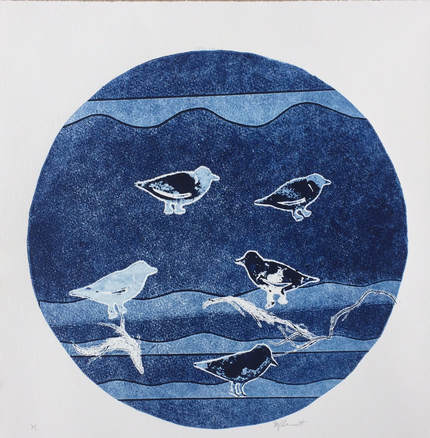
I have lived on King Island almost my entire life and seen the migratory birds come and go with the seasons even though the coastline is in a state of constant change. That migratory birds can and do fly non-stop for days and days always inspires me. Some of these long-distance migrants are very small, weighing only 50 grams. Migratory birds depart King Island in late March, and follow the East Asian-Australasian Flyway. Their mission is to arrive at their breeding site, find a mate, incubate and raise chicks, thereby ensuring the continuation of their species. The dedication of such vast numbers of birds to follow their instinct by flying from the southern to the northern hemisphere to breed and return again when their chicks become independent is one of nature’s marvels.
My print is of some small migratory birds resting in the moonlight.
Title: Moonlight Sea Mist
Medium: Stencilled monoprint
Site: King Island, TAS
Angela Bevan
Julie Bignell
|
The south-east coastal region around Port MacDonnell, includes areas such as French Point, Stony Point and Danger Point. These areas provide a rich source of food for many migratory and residential birds as well as offering shelter and camouflage. During a recent field trip by the Thumbprint Printmaking Group we were lucky enough to see Ruddy Turnstones, Red-necked Stints, Little Plovers, Sandpipers and Sanderlings. Many of these small shorebirds were scavenging on the beach and in the rockpools at Port MacDonnell.
My print depicts Ruddy Turnstones foraging in the beach wrack at Danger Point. Beach wrack incorporates organic material such as seaweed – kelp and seagrass that is cast up onto the beach by the tide, but unfortunately can also include marine debris such as plastic, glass and metal. Title: Ruddy Turnstones Foraging in Beach Wrack. Medium: Solar etching over collograph print Site: South-east coast SA |
Cynthia Bird
|
The Flyways for this endangered shoreline bird is significant in covering landmass from my home to the Yellow Sea in China. As many bird lovers around the world like myself, work to save land habitat my intention in this mage was to bring the mapping to the fore, given loss of land has such a huge impact on their ability to survive as a species. Title: The Far Eastern Curlew Flyway Route Medium: Screen print, Lino Print Site: Mornington Peninsula, Victoria |
Title: Bar-tailed Godwit over Huanghai (Yellow Sea) 3 Medium: Screenprint and linocut Site: Yellow Sea |
Michelle Black
|
Each year, the Bar-tailed Godwit flies non-stop from Alaska to the shores of Australia and NZ to overwinter and feed on insects and crustaceans with their upturned beaks. It takes about 8 days to reach our shores — that’s a long time without rest or food.
Impressions of marks in the intertidal mud flats were used to create the collagraph plate and drypoint was used to illustrate the birds leaving the shores of the Kinka Wetlands to journey back to Alaska to breed. Title: The Longest Flight Medium: Multi plate intaglio print, collograph and drypoint Site: Kinka Beach site coordinates: 23,13,30S—150,47,59E which is located at the southern end of Kinka Beach on a sand spit at the entrance to Kinka Creek, Capricorn Coast, Central QLD |
Dianne Blake
|
Watching out for the arrival of the migratory birds on the shores of the wild coast of King Island Tasmania has become an intriguing obsession and a seasonal calendar.
A deep fascination has developed. To see the first arrive is a special moment, and then watch as numbers grow. I look forward to the return each year with anticipation, hoping the numbers are as strong as the previous year. The perils they face, diminishing habitat, pollution, global warming and climate change all impact on these courageous creatures. The Bar-tailed Godwit is one of many migratory birds that visit King Island. I saw them for the first time last year. The flight of the migratory birds has me astounded and amazed at the extraordinary feat of flying from the Northern Artic regions to our shores. I feel fortunate to witness this, knowing how far they have flown and realise how important projects like the Flyway Print Exchange and the Overwintering Project by Kate Gorringe-Smith are to bring about greater awareness to the plight of the migratory birds both here on King Island and all through the Flyways. Title: Bar-tailed Godwit Medium: Collograph Site: King Island TAS |
Melissa Boag
|
Between September 2018 and March 2019, Hobson's Bay City Council conducted a series of monthly printmaking workshops and local site visits, culminating in an exhibition at Altona's Joel Gallery, the Overwintering Project: Hobson's Bay. The exhibition opened as part of the annual Hobson's Bay World Migratory Bird Day Festival, and closed after World Environment Day!
Melissa Boag was one of the contributing artists who made the exhibition such a success. Medium: Etching Site: Altona Foreshore VIC |
Anna Bonshek
|
Mongolian (Lesser Sand Plover)
Derrit drit, derrit drit, derrit drit. Take flight, from this coast, Ever distant, to our Ancestral (penal) home, From where they are long gone. Your chestnut-red nape, breast, Is cut from your white throat By a black line. Seen, by encircled eyes — black patch, Black edge to white forehead-- Is your duller partner's body, Twenty centimetres, never inland. Together, will you survive As they did, miraculously? Who will notice As we do, quietly? Derrit drit, derrit drit, Derrit drit, derrit drit, Derrit drit, derrit drit. Anna Bonshek 2017 Title: Mongolian Medium: Stencil |
Kurt Brereton
Hazel Britton
|
I have wanted to contribute to the Overwintering Project for some time, but had no experience of making prints. I organized the NW Tasmania biannual Shorebird Counts for 18 years, so this area, close to the southern end of the East Asian-Australasian Flyway is very special to me. Shorebirds are integral to this wilderness area of extensive mudflats, a fantastic ecosystem that supports large flocks of migrant and resident shorebirds.
Unfortunately, as almost everywhere, numbers have declined since I first visited the area. It remains to be seen if the proposed wind farm on Robbins Island will negatively impact the shorebirds. Title: Pacific Golden Plover at High Tide Medium: Linocut Site: Five Islets, Robbins Island. One of the High Tide Roosts within the Robbins Passage/Boullanger Bay Key Biodiversity Area in NW Tasmania. |
Vivian Broadway
|
I enjoy lino printing and I love nature! Living in the sandbelt region of Port Phillip Bay, its not surprising my main influences are the local surroundings; from the foreshore reserves to the heathlands, wetlands, even my own garden or my neighbour’s!
I’m so glad to be part of a project to raise awareness of Australia and New Zealand as being the major destinations for migratory shorebirds of the East Asian-Australian Flyway. Its wonderful to realise that our artist community is getting involved and can play some part in preserving their habitats. I’m also really looking forward to seeing all the artwork produced for a good cause! Title: Whimbrel Medium: Multiplate Linocut Site: Port Phillip Bay VIC |
Brenda Brooks
|
Painting was a way of getting to know people as a retiree who was new to Australia. Printing with the Printmakers Association of WA has opened a new aspect of art for me and I have made many friends through PAWA who have helped expand my knowledge of the subject. My engineering background appreciates the technicality and precision of the processes required to produce my work. There are always new processes for me to learn. This gives me great satisfaction.
Title: Grey Plover Medium: Drypoint etching Site: Swan River Estuary WA |
Metasit Bunaikbath
Gill Burke
|
I’ve portrayed Bar-Tailed Godwits as I’ve seen them, in silhouette, flying over the Central Coast of New South Wales on their way home to Alaska. They overwinter at Tuggerah Lakes having undertaken incredible journeys - one bird flew 11,500km non-stop in nine days from Alaska to New Zealand - the longest non-stop flight of any bird in the world. Despite this tenacity, they’re still near threatened so the protection of local habitats is imperative. While council has undertaken action to protect the important Tuggerah Lakes salt marsh environment this and other sites will require ongoing maintenance and development if we are to continue to welcome these amazing visitors to our shores.
Title: Fly Away Home Medium: Wood Engraving Site: Central Coast NSW |
Robyn Cairns
|
My print depicts a haiga poem (haiku and image come together) where one of my students is dreaming of the Latham's Snipe after an outing birdwatching at the Western Treatment Plant in Werribee. This is one of my favourite places to view migratory shorebirds and observe birds because it's a place of arrival, big skies and tranquillity. The Latham's Snipe is in flight as a symbol of the aerial view of the world on its journey from Japan to Australia. Kaizen is a Japanese term that means ‘change for the better’. In creating my print I imagined the Latham's Snipe happy for my students actions to help local habitats for the future of all.
Title: Kaizen Medium: Linocut collage printed on Japanese rice paper Site: Western Treatment Plant, Werribee VIC |
Valma Cairns
Elaine Camlin
|
Walking through Fivebough Wetlands, an inland swamp located on Wiradjuri land in the Riverina, the ecological impact of a dry season was evident. The species of birds during the overwintering period had been lower than in previous seasons, initial disappointment subsided as we moved through the track, our mere presence in this environment provided overwhelming inspiration. The dragonfly I followed through the native shrubs was a gentle reminder of the diversity of species present. Responding to our visit, I developed a print which embodies the calming sounds of the environment through subtle colours and marks, and detailed and meditative line-work.
Title: Fivebough Wetlands - Riverina NSW Medium: Drypoint and monoprint on BFK Rives Site: Fivebough Wetlands, central NSW |
|
Our world stands at the threshold of change, our global footprint is jeopardising intricate ecosystems, causing immediate and direct changes to our planet and disrupting the delicate balance of nature. Every aspect of our life is reliant on our natural environment, it is our most precious natural resource, but despite this we continue to live on the edge.
Temperatures rise, causing frequent heat waves, severe drought, flooding and extreme weather, resulting in water shortages, increased fire threats, weed and pest invasions, intense storm damage, and flora and fauna extinction due to habitat destruction. Minimising the impact on our precious world is reliant on humans changing current behaviours and taking responsibility for how we make and consume energy. On the edge: Fivebough responds to these concerns, the image was captured during a site visit to Fivebough Wetlands, converted to a negative and exposed with the sun, onto a light-sensitive Cyanotype solution. Title: On the edge: Fivebough Medium: Toned cyanotype on BFK Rives Site: Fivebough Wetlands, central NSW |
Sacha Campbell
|
As migratory shorebirds, Curlew Sandpipers breed in the Arctic Siberian tundra, before flying South, to Australia on the East-Asian Australasian Flyaway. Collective impressions and memories, forged by time spent in the area of Thompson’s Lake, informed my response both to the area, and this project, with the creation of this print.
Title: Curlew Sandpiper Medium: Woodcut Site: Thompson’s Lake WA |
Lea Casey
Darcy Castaldi
|
Darcy's subjects are focused on industrial areas around Newcastle, Kooragang and Stockton - which happens to be one of the safe havens for the migratory birds to stop and rest. Bridge and rail structures are a feature of Darcy’s work and he seeks to document the big picture as well as the small details.
Title: Terek Sandpiper at Stockton Bridge Medium: Solarplate etching, hand-coloured collograph, collage Site: Stockton Bridge NSW |
Jennifer Castaldi
|
Jennifer Castaldi is a printmaker and architect living in Newcastle. She enjoys printmaking for its combination of mastering the technical skills and the element of surprise that evolves from each print produced.
She is interested in how the natural and human built environments interact around the coastal regions. The animals and birds often find a place of safe harbour in manmade structural creations. The Overwintering Project was a way to find out more about a little creature and its habits – The Painted Snipe. Title: Painted Snipe in Marshlands Medium: Hand-coloured collograph Site: Newcastle NSW |
Laura Castell
|
The Esplanade in Cairns (North Queensland) is visited by a variety of shorebirds that seem to happily spend their time feeding and walking along the mudflat. The Black-tailed Godwit is one of these birds which can still be seen in good numbers at specific times. By incorporating some small but obvious areas of ‘landscape’ within the bird, I tried to capture its transient nature in time but also as a symbol of their vulnerability to the conditions of the environment they inhabit in their long travels.
Title: Black-tailed Godwit Medium: Drypoint and monoprint Site: The reference for this image was taken on the Cairns Esplanade in North Queensland during October 2016. This coastal area has a very gentle slope that exposes a wide mudflat during the low tides, where the birds spend time feeding and wondering around. |
Linda Chandler
|
This print is my personal response to the importance of conserving the natural environment of the Broadwater on the Gold Coast, Queensland. Currently there is a proposal “The Broadwater Marine Project” which is offering development rights to parcels of government land and seabed on the Broadwater Queensland, in total 81.4 Ha in exchange for the construction and operation of a cruise ship terminal. This development will see the removal of a large shorebird foraging area and the possible destruction of the main shorebird roost in the Southern Broadwater.
My works are a visual reminder of the urgent need to preserve the balance of nature on which shorebirds survival depends. It is my effort to awaken awareness of a little migratory shorebird known as the Bartailed Godwit – Limosa lapponica- which restores itself on the Broadwater for its journey home. The act of migration is exceptional as is the distance flown by this little bird. In 2007 a female Bar-tailed Godwit was tracked flying 11,680 kilometres from Alaska to New Zealand in nine days straight. It is the longest recorded bird flight on the planet. It seems perverse that a bird that can fly enough to get to the moon in its lifetime should be so fragile, but the Bar-tailed Godwit and its fellow shorebirds face enormous perhaps insurmountable challenges. These shorebirds aren’t just declining in the abstract sense, they are heading toward extinction. Everytime a species become extinct we lose something we can never get back. Title: Fly me to the Moon Medium: Collograph, silver leaf chine collé Site: the Broadwater on the Gold Coast QLD |
Glenda Chaplyn
|
My print of the Eastern Curlew was created from a coloured pencil drawing used to make a photo stencil. Some of the patterns on the bird are the shapes of the sea grass and mudflats. The design reflects the curlew habitat to which it belongs as it balances the biodiversity of the Queensland east coast. With growing awareness of Morton Bay as a ‘Wetland of International Importance’ hopefully marina developments will not proceed in this precious place.
Title: Arrival at Toondah Medium: Silkscreen print on rice paper Site: Toondah Harbour, Moreton Bay QLD |
Megan Chivers
|
The inspiring Overwintering Project: Mapping Sanctuary raises awareness of the plight of migratory birds and their epic flyways. I was drawn to sharing the journey of the Short Tailed Shearwater, a seasonal part of growing up on King Island.
Mutton birds or moon birds as they are known to some are migratory heroes, their cycle in Tasmania an ancient rhythm embedded with local rituals. These lino prints use techniques gleaned from our printmaking workshop with Kate, hand-cut stencils depict the mutton birds' journeying from King Island, over many seas, northward bound. Local seaweed depicts our sea, dried oregano stalks and flowers offer a likeness to our predominatetea trees. Ink colour is the almost regal Prussian Blue. Medium: Stencilled monoprint. Site: King Island TAS |
Avrille Ciccone
|
I chose to show the Bar-tailed Godwits in flight because I read that not only do they fly extreme distances but one, E7, broke the world record, flying between Alaska and New Zealand in a 9 day non-stop trans-Pacific Ocean flight. I imagine they must see such varied scenery, including our own spectacular coastline.
Title: Flight of the Godwits’ Medium: Photopolymer etching, a la poupée, Site: Sydney Northern Beaches NSW |
|
I’ve seen the Common Sandpiper on Sydney's Northern Beaches where I live, in freshwater lagoons and wetlands, it has striking markings on it’s wings. I find it a very decorative bird, along with the patterns of the mud or sand flats that it forages on, picking up small food items such as insects, crustaceans and other invertebrates. Title: Common Sandpiper Medium: Photopolymer etching à la poupée Site: Sydney's Northern Beaches NSW |
Helen Clare
|
The Black-tailed Godwit is an uncommon bird - rare - small flocks or singularly. Frequents coastal tidal estuaries and sandy shores. Arrives in Australia from Northern Europe and Asia during October, departing in March and April. Breeding season June & July in North Europe, North Asia, Mongolia, Siberia. Because of its rarity, the black tail and long legs, I chose to do a linocut, embossed and monotype.
Title: Taking Off Medium: Embossed Linocut and monotype |
Colin Clark
Ileana Clarke
|
The Common Greenshank is a large wader that is rarely seen in groups and lives in muddy margins of estuaries of the Newcastle wetlands in NSW. They fly thousands of miles from their breeding grounds in Siberia to warmer climates of Australia.After resting and thriving on Australian shores they leave from February to early March returning to their breeding grounds.
My work is layered with a background digital image of stitches, implying a long flight path, overlapped with monoprint and hand painted Greenshank shorebirds taking flight. After resting on Australian shores, they return to their breeding grounds from February to early March. These amazing migratory shorebirds are threatened by coastal developments along their flight path and as such their numbers have lessened.This project has made me aware of the dire situation birds are facing; therefore I will endeavour to protect our environment. Title: Flight Path Medium: Monoprint on digital image of artwork and watercolour Site: Newcastle NSW |
Leah Clarke
Liz Clemons
|
As a recently retired Early Childhood teacher, and a new-comer to the artistic word, I am wallowing in the joy that I once allowed my students; that of exploring and creating in the medium of printmaking.
Here on King Island we are so fortunate in having Dianne and Andrew Blake to guide and support us kindly in our experiences. Kate Gorringe -Smith expanded our printmaking skills whilst enriching us with a deeper appreciation of migratory shorebirds. Although my everyday interest is with the many birds that visit our garden, I was very happy to go adventuring with Kate. I hope you enjoy my results. Medium: Stencilled monoprint Site: King Island TAS |
Trish Clemons
|
I grew up on King Island and have spent many a day walking along the wintery west coast beaches seeing those amazing little ruddy turnstones and being fascinated by the shearwaters (muttonbird) and that their migration went all the way to the Aleutian Islands and back to the same burrows each year.
Experimenting with printmaking has given me an opportunity to represent the flight of these incredible migratory birds. Medium: Stencilled monoprint Site: King Island TAS |
Joyce Clulow
|
Wood Sandpiper: An uncommon bird in Australia. Frequents fresh water, swamps, particularly where there is aquatic vegetation, shellfish and insects. It swims well and also perches on trees.
Distribution: Northern Europe and northern Asia, India, Malaysia and Australia. It has been recorded that the Sandpiper frequents all mainland states incuding Tasmaina. Nest: A depression in the ground. Eggs: Four bluish eggs with spots and blotches of dark purplish red. Title: Sandpiper Medium: Collograph and watercolour |
Therese Coffey |
|
I live on the rugged cliffs of Cape Bridgewater in the far South West corner of Victoria. This environment has influenced my art practice in many ways.
Having been a printmaker for many years, primarily screen printing and dry points, I particularly like the imperfections that occur in both processes leaving unfinished lines to conjure the viewer’s imagination. The Bar-tailed Godwit is an extraordinary migratory bird, and to endure such long distances is unbelievable. The 'boarding pass' print is a witty presentation of the Godwits' marvel. Title: Bar-tailed Godwit Medium: Screen Print Site: Cape Bridgewater, sw VIC |
Haya Hagit Cohen
|
As an observer behind the heavy fauna at the Attadale reserve, along the Swan River, Western Australia, didn’t leave me passive for a long time but essentially required active fuse into moments of magic.
The dynamics of various groups of birds coming and going “hassle bustle”, flying in flying out, sounds, colours, scents light, shadows and so much more kept me wound up. These notions of business, lively and rich interactions between so many types of birds I endeavour to portray here in my artwork. Title: Change of Time Medium: Dry point etching, Akua ink, Embossing of branches, Sakura watercolor Site: Attadale Reserve, along the Swan River, WA |
Jen Conde
|
The Curlew has a haunting distinctive call. These beautiful birds, the largest of all waders, migrate from northeastern Asia, including Siberia and Mongolia to winter in coastal Australia. They can be found at Canaipa Point in Moreton Bay where the artist has observed their foraging and listened to their calls. The Eastern Curlew occurs only in our East Asian-Australasian Flyway so we have a particular responsibility to protect our coastal wetlands for them to survive.
Jen’s prints and paintings explore her love of water and her ‘place’, where she lives on the shores of Moreton Bay. She currently exhibits paintings, prints and artists books in her solo and group exhibitions held across Australia and internationally. Jen has won various awards and has work in the National Gallery of Australia print collection and the National Library of Australia Collection. Title: Eastern Curlew Medium: Etching Site: Canaipa Point, Moreton Bay, QLD |
Geraldine Connolly
|
On his spindly, knobbly kneed legs, the Eastern Curlew struts bravely on the water’s edge of Moreton Bay, in South East Queensland.
From Siberia’s lush feeding grounds after the winter’s thaw, in late spring and summer. The flocks enjoy a feast of insects and grubs. Food galore! Then as Autumn approaches and spring begins at the other end of the world, great flocks take flight to over winter in warmer climes. On the shores of Moreton Bay, with change of tides, muddy mangroves on the river and creek edges, they find much need for food. For on the journey over they have lost half their body weight! Avoiding all the obstacles en route – pollutants in the Yellow Sea – oil, diesel floating on the water, plastic detritus, fishing nets, and general garbage as humans encroach with housing and industrial development on once pristine shores. Cargo ships, small boats, planes coming in to land. And then the dangerous pathway between North Korea and Japan with destroyers and missiles from land and sea. And still only half way there! But it’s OK. Here he is protected with his speckly camouflage. Here by law he is a protected species. Let’s keep his habitat safe and clean! Title: Here at Last Medium: Hand coloured etching Site: Moreton Bay, se QLD |
Anne Conron
|
This lino print portrays Double-banded Plovers at the East Inlet, near Stanley in north west Tasmania. At low tide you can walk for miles across the floor of this remote sandy bay which is rimmed with tiers of dunes and hills. These shy little plovers paddle at the edges of tidal pools, scratching around in the sand for crustaceans and molluscs. Amazingly they breed in New Zealand in the summer and then migrate across the ocean to the east coast of Australia for winter.
Title: Double-banded Plovers at East Inlet, Tasmania Medium: Hand-coloured linocut Site: East Inlet, near Stanley in North West TAS |
Greta Cooper
|
I have been inspired by the many layers of history the Jerrabomberra Wetlands have experienced since its creation in 1964. The layers in my screenprint represent the layers of history (told and untold).
As a by-product of the damming of Molonglo River when Lake Burley Griffin was made, Jerrabomberra Wetlands emerged. Since then, the novel ecosystem has gone through many changes and now provides key habitats for vulnerable species including the Eastern Long-Necked Turtle and Platypus. This unique ecosystem is surrounded by farmland, a sewerage treatment plant, the Monaro Highway, and the city skyline in the background. Amongst all the action is the wetlands, a magnet for many birds (both woodland and wetland) including the migratory freshwater shorebird the Latham’s Snipe that returns here every year. Title: Above the Surface Medium: Screenprint Site: Jerrabomberra Wetlands, Fyshwick, ACT (Ngunnawal and Ngambri Country) |
Moira Court
|
I visited the South Western corner of Thomsons Lake at Beeliar Nature reserve in West Australia too late in the year (May) to see any overwintering birds so my print, Sky Tracks, is inspired by the rusting typha reeds fringing that part of the lake and animal tracks in the sand. The typha reeds are printed from a woodcut and the flying Black-tailed Godwits, who are known visitors to Thomsons Lakes, are embossed with a plate made from cardboard.
Title: Sky Tracks Medium: Woodcut and blind embossing Site: Thomsons Lake, part of the Beeliar Wetlands near Perth, WA |
Angela Cowan
Nicola Cowie
|
I created this linocut print in response to my visit to Thomsons Lake, south Perth in Western Australia.
I visited in early winter after a very dry autumn so the landscape was wide and marshy with lots of grasses and a little water in the distance. I loosely recreated the landscape of Thomsons Lake within an organic pebble-filled border which acts as a window on to this small scene to consider the vista before seeing the bird hidden in the grass, which is the experience common to finding these birds in their habitat, usually well hidden. Title: In the Reeds Medium: Linocut Site: Thomsons Lake, south Perth WA |
Shelley Cowper
|
Red Samphire Grass
The Swan River in Perth is home to three A class nature reserves. On a visit to Alfred Cove with SERAG (Swan Estuary River Action Group) I was amazed by the beautiful colours of the samphire grass growing along the banks of the river in the water. The grass, which is also endangered and protected forms part of the habitat of the migratory birds. The colours are a striking blend of browns, reds and greens and have interesting organic forms with small individual pods and long structures. A Pacific Golden Plover, uncommon for that area, was sighted while we were there. Title: Samphire and Traveller Medium: Hand-coloured etching Site: Alfred Cove, Swan River Estuary, Perth WA |
Kirsten Craggs
Beth Croce
|
This work was inspired by shocking news images of thousands of small, darkly feathered bodies littering beaches from Gabo Island to Portland and down to Tasmania, in the spring of 2013. Our local beachside councils were overwhelmed and scientists perplexed. The cause of this die-off eventually became clear: exhausted and emaciated after poor feeding conditions in the northern hemisphere, the short tailed shearwaters were unable to cope with storms en route to their specific nesting locations in south-eastern Australia. The challenges for these feisty birds mount as they rely on evolution and instinct to negotiate a rapidly changing world. Burrow location where I was up close and personal with Short Tail Shearwaters: Lady Julia Percy Island, Victoria Title: Journey Uncompleted Medium: Intaglio etching, chine collé Site: Lady Julia Percy Island, VIC |
Judy Darby
|
I have chosen the Common Sandpiper’s migration to the Southern Hemisphere as the subject of my print, though it is a very occasional visitor as far south as Mallacoota. The linear overprinting was to symbolise the frailty of the birds for such a journey and their reduced numbers.
Title: Migration – Common Sandpiper Medium: Linocut – 2 blocks on paper and tarlatan Site: Mallacoota VIC |
Brian Davidson
|
These prints are inspired by the littoral zone of my home town, Lennox Head, NSW and Hervey Bay, QLD where I often visit and can observe migraters feeding as the three metre tide expose sand flats.
I have been making Lino prints for one year and am pleased to find the medium opens technical and creative avenues. I intend to look to other forms of printmaking in future, particularly wood engraving. Congratulations for the Overwintering Project and I hope it strikes a blow with all who view it. Title: Curlew Migration Medium: Linocut Sites: Lennox Head, NSW and Hervey Bay, QLD |
Annie Day
|
Incredibly these birds know when it’s time to take off for the Siberian springtime to mate. They raise their chicks then return to sunnier climes to overwinter. Expert Bethany Lindsay explains how... ‘complicated processes involving spectrums of light, electron excitation, and constant recalibrations.’ But to me it’s a completely amazing phenomena!
Title: Time to Go Medium: Lithograph and etching; 2 plates, key plate is a lithograph and the other plate an etching inked in 2 colours. |
Cath de Little
|
On the sandy northern shore of Southport Lagoon, amid millions of tiny shells, I lie alone in the quiet stillness of the vast amphitheatre formed by water and sky, and bordered by the iconic profile of the distant Southern Ranges. Small numbers of Red-necked Stints, Red-capped Plovers, Double-banded Plovers, Hooded Plovers, Pied Oystercatchers, Sooty Oystercatchers and, very occasionally, Bar-tailed Godwits forage unconcernedly across the wide sandflats left by the receding tide. It is a remote, isolated place of great beauty and peace which has always inspired me. And I marvel at the resilience of the tiny birds which have reached this final southern outpost of their journey.
Printing with collagraphs enables a range of tonal effects which suits this print. I feel they can convey an emotional charge, and in this print, enhance the sense of remoteness and also impending loss. Title: Going, going..... Medium: Collograph Site: Southport Lagoon is a large saltwater lagoon situated 110 km south of Hobart, in the Far South region of Tasmania. It is located in the Southport Lagoon Conservation Area, and reached by a 7 km train ride on the historic Ida Bay Railway, then a ¾ hour walk on a moderately easy trail which ends on the white beach at the northern end of the lagoon. When the tide is out, a few of the most hardy migratory shorebirds and waders are attracted to the vast sand/mudflats revealed. |
Anni Dowd |
|
My first sighting of a Curlew Sandpiper was on a visit to Indonesia and I haven't seen them on the wetlands of the Mornington Peninsula.
According to BirdLife they are an endangered species in Victoria are experiencing severe declines along the Flyway due to habitat decline in the Yellow Sea and partly the incremental loss of wetland habitat in Australia. The Overwintering Project has been an opportunity for me to further focus on and respond to our precious environment and the birds that inhabit it. Title: Flight Medium: Linocut Site: Mornington Peninsula - Mushroom Reef & Warringine wetlands VIC |
Josephine Duffy
|
Whimbrels are shorebirds of the East Asian-Australasian Flyway which don’t have webbed feet - as seabirds do. The need for stability whilst feeding in mud and soft wet beach sands of the intertidal and wetland fringe zones necessitates a broad splay of toes for balance whilst walking in, and on, a constantly shifting base.
It’s this shoreline that is threatened by industrial development and human interventions. This marginality of place - being a peripheral zone on the land mass - is tenuous, and alluded to by an un-inked embossed ‘ghost’ plate. Verticality of imagery references their north/south coastal migration pathway. Title: Wading - Whimbrel Medium: Intaglio etching, hard ground and aquatint, blind embossing. Site: The whimbrels in my print have been observed feeding and resting at a site on the beach to the north of the lake-channel opening at The North Entrance, NSW. The area has been fenced to protect migratory shorebirds, however people ignore the signage stating this. Unfortunately, human and dog tracks can be seen within the fenced enclosure. |
Lola Dwyer Morris
|
Mushroom Reef Beach is on the Bass Strait side of the Flinders headland. This protected marine sanctuary is scattered with black pebbles over white sand and offers the Rudy Turnstone a perfect refuge destination after island-hopping from the Arctic across the Pacific to Australia, completing an incredible 27,000 km migration. Mushroom Reef provides sheltered bays and pools, and an ideal microhabitat for their diet of crustaceans and molluscs. Their pigeon-like walk and bright orange legs are captivating and unique to this species of migratory shore birds.
Title: Turning a Stone Medium: Lino print, water colour Site: Mushroom Reef Beach, Flinders VIC |
EGGPICNIC
|
I don’t think I could shake free of the shore’s influence if I wanted to; my time in Sydney was formative. The first time we visited Long Reef 10 years ago, I wasn’t a birder. But it was the very beginning, and it didn’t take long for shorebirds to win over my heart and for us to return year after year, to meet the birds and to watch the birds meet each other as they arrived from their interminable journeys. We would sit there for hours, and I would always imagine the Bar-tailed Godwit flying to the Moon and back, the distance she can fly in her lifetime. If that doesn’t blow your mind, I don’t know what will. Title: Where we meet Artist: Eggpicnic Site: Long Reef Reserve, Collaroy, NSW |
Ros Elkin
|
Whimbrel
Scientific Name: Numenius phaeopus The Whimbrel with its pronounced de-curved beak feed in small groups along the intertidal mudflats of Australia, particularly Stockton Newcastle NSW and is a species of Curlew that breed from North America, Europe, Scotland and Asia. They nestle among the mangroves, almost invisible blending in with the environment. Title: Whimbrel Medium: Linocut Site: Stockton, Newcastle NSW |
Di Ellis
|
Double Banded Plover, Charadrius bicinctus
The birds and bees are the pollinators of the world, where would we be without them? They deserve to be treasured and protected. Of particular interest to me are the breeds of tiny plovers that make my heart sing when I see them on our ocean beaches. Plovers with their matchstick fine legs, running in a family group along the tideline is sadly an uncommon view now. The sweet little birds who look like the slightest puff of wind would send them rolling and tumbling along the sand have hearts of warriors and although they have the physical strength to cross oceans they are extremely vulnerable when hatching chicks on ocean beaches. Guard them now before it's too late. Title: Here's Looking at You Medium: Solvent transfer Site: The ocean beach of Killarney, VIC , January 2018 |
Jennifer Eurell
|
If Noosa (on Queensland’s Sunshine Coast) has one problem, it is too many tourists. But it is not only people that flock to Noosa.
I drove to Noosa on a blustery summer day in hope of spotting a Bar-tailed Godwit. The birds arrive after an enormous flight – 10,000 kms non-stop from Alaska to New Zealand, before flying to Australia. Amidst the hustle and bustle of Noosa there were two types of fliers – birds and kite surfers. The wind blew the kite surfers at great speeds within the estuary while the Godwits quietly foraged on sandbanks. It was an odd combination. Title: Limosa lapponica – Noosa Medium: Aluminium plate etching with watercolour Site: Noosa, Qld. 26.36 S 153.09 E. Noosa is a very popular tourist destination on Queensland’s Sunshine Coast.The Bar-tailed Godwits were on the sandbanks in the Noosa River estuary in December, 2019. |
Judy Evans
Robin Ezra
|
Red Necked Stint (calidris ruficollis)
These amazing little birds are among the smallest of the calidris waders. They make an amazing journey each year between their summer breeding grounds in the northern hemisphere and and their winter feeding grounds in the south. Traveling through the East Asian-Australasian Flyway to overwinter in New Guinea, Australia and New Zealand and make the same journey back to their breeding grounds six months later. They are classified as Near Threatened due to the loss of staging areas available for use during their migration. The birds stop at many different wetlands and disturbance of one site will affect the entire network of wetlands. Red-necked Stints are highly gregarious, and will form flocks with other small waders They forages in damp mud and very shallow water, an omnivorous species feeding on seeds, insects, small invertebrates, plants in salt marshes, molluscs, gastropods and crustaceans. Title: Red-necked Stint Medium: Waterless lithograph and collograph. |
Clare Jean Ford
|
My image is a reduction lino print, image created from original photography by local bird life enthusiast Des Dunne.
Title: Curlews on Kinka Medium: Reduction Lino Print Site: Kinka Beach site coordinates: 23,13,30S- 150,47,59E which is located at the southern end of Kinka Beach on a sand spit at the entrance to Kinka Creek, Capricorn Coast, Central Queensland Australia. |
Catherine Forman
|
The print features Calidris ruficollis (Red-necked Stint) and the background orange/red colours represent Sarcocornia Quinqueflora (Beaded Glasswort) when close to flowering (mid-to-late April).
The Red-necked Stint is the most common overwintering species in South-East Tasmania. The south east is also one of the best locations to see amazing salt marshes, which are a feature in Tasmania. Perhaps if these birds were the size of whales or elephants, it would be easier to protect their habitats. Title: Minima Viatorem (Small Traveller) Medium: Linocut with collage Site: Australian Ramsar site #7 Pitt Water-Orielton Lagoon TAS |
Rowan Fotheringham
|
Do the Migratory Shorebirds at Shoalhaven Heads, with 'Cullinghutti' (Mt Coolangatta) watching over, find maps for their return journey to the northern hemisphere in the patterns in the sands and sea grasses…written by the ebb and flow of the tides?
My whimsical caption highlights the wonder of the journey these small birds make each year between the North and Southern Hemisphere, travelling up to 16,000kms. How this extraordinary feat of navigation is achieved remains a mystery to science. 'Cullinghutti' is a prominent landmark by the mouth of the Shoalhaven River on the South Coast of NSW. It’s a place of significance to the local Aboriginal community who regard it as a launching place for spirits. It connects the earth with the spirit world. The mountain makes a very appropriate backdrop to the epic journey these remarkable birds make across the heavens. Title: Cullinghutti Medium: Linocut Site: Cullinghutti (Mt Coolangatta), Shoalhaven River, southern NSW |
Emma Franklin
Jill Fryer
|
In this image I hope to convey the fragility of these remarkable migratory birds. Although I have taken my rendition from the image of a Red-necked Stint I have deliberately left identifying markings blurred so that it could be any one of the several species that make this incredible journey. I observed the birds on the Coodanup shore of the Peel Estuary.
Title: Coming in Medium: Drypoint & ink Site: The Coodanup shore, Peel Estuary, WA |
Jorji Gardener
|
As a keen birdwatcher, printmaker, and environmentalist I have been inspired by this project since it began. I have depicted the Oriental Pratincole from studies of the birds in the museum collection, along with photos and some artistic license.
There is something very poignant about these museum labels, like passports for the little birds as they make their long journey through all weathers. I hope that humanity will take the job as stewards of this amazing world seriously and preserve their habitats. I would like to thank Kay Parkin for letting me use her photos of the Oriental Pratincole taken at Tolderol, as inspiration for this print. Jorji Gardener works from her studio in the beautiful Adelaide Hills. Finding inspiration in nature, she draws on her background in botany, and horticulture, as well as a love of history, all of which she weaves into the narrative of her work. A large focus of her art is about highlighting the connection we have with the natural world, and her art practice revolves around environment, specifically our native Australian flora and fauna. “I feel our environmental situation is precarious and my intention is for my artwork to facilitate further understanding and appreciation of the beauty and importance of our unique species.” Title: Status: In Transit Medium: Cyanotype print, tannin toned, with hand colouring, on Hahnemuhle 300 gsm Site: Tolderol Game Reserve is on the edge of Lake Alexandrina, South Australia and provides habitat for waders and migratory birds, including the Oriental Pratincole which has been sighted here, though sadly not by me, as yet ! |
|
Tiny and slender “peep” of inland and coastal wetlands, where it is often found in well-vegetated areas such as fields and flooded meadows. Stints are the smallest of the migratory waders, barely the size of a sparrow. A group of Stints are collectively known as a "Spell" of Stints... as this fellow is wading about solo perhaps he could be called a charm? As yet I haven't spied this little fellow with his elegant toes, so thanks to the peeps at ebird who gave permission to use the photo as reference and the info...
Title : Long Journey for small Stint with Long Toes! Medium: Drypoint etching and wet cyanotype print Site: Tolderol Game Reserve is on the edge of Lake Alexandrina, South Australia and is a vital habitat for waders and migratory birds. |
Jane Giblin
|
The shearwater crosses the granite boulder shores of Big Dog Island in such numbers at night that if you happen to stay in the rookery into the evening you’ll be whacked in the head. My father holds a rare albino mutton bird, found and left to grow to adulthood, in 1989. The white-faced heron swings across the mudflats of the opposite shore of Badger Corner and up into the Samphire they swoop, way above my head, in 2018, for their particular and much quieter evening in the Furneaux Islands.
Title: Max Giblin and the Shearwater and the White -faced Heron in Franklin Sound Medium: Lithographic print on Insicioni 20th February 2021 Site: shores of Big Dog Island and Badger Corner, of Adelaide Bay, and Franklin Sound, between Cape barren island and Flinders Island in the Furneaux Islands TAS |
Grace Gladdish
|
Tasmania is significant for its shoreline, being surrounded by it - both contained and restrained. The rhythm of the seasons is also significant here. We notice the fluctuations in temperature and rainfall, as well as the influx and exodus of tourists. We also mark the seasons by the coming and going of our migratory birds.
I am drawn to the edges and fringes of landscapes, where one habitat transitions into another, so I feel an affinity with our shorebirds. One of my favourite places is the wetland reserve at Cygnet, south of Hobart. Even in winter, when the tourists and migratory birds are enjoying warmer climes, it is a sanctuary, a place to recharge and to feed the soul. “Cygnet Sanctuary” shows the Cygnet Marine Conservation Area in winter, providing sanctuary for the birds that stay, and maintaining it for those that will return. Title: Cygnet Sanctuary Medium: Hand coloured linocut print Site: Cygnet Marine Conservation Area TAS |
Dianne Glenister
|
My print practice centres around our natural environment.
I aim to draw attention to the ways in which we are negatively impacting on our environment and the urgent need to reverse this process. Over the past year my work has included the images of birds, for example the now extinct Dodo as a way of drawing attention to the alarming rate of species loss we are contributing to today. The Overwintering project has been a catalyst for exploring the amazing life of migratory birds, in particular the Latham’s Snipe, which while overwintering in Australia travels to breed mainly in the northern part of Japan. I was delighted to discover that Latham’s Snipe visits Winton Wetlands, an inland body of water near my home. Extensive work is being undertaken by volunteers and professionals to protect and regenerate this area. Title : Winton Wetlands - Latham's Snipe Medium : Reduction Linocut Site: Winton Wetlands. Beside the Hume Highway, between Wangaratta and Benalla VIC |
Trudy Goodwin
|
I have chosen the Eastern Curlew because it is critically endangered. This large wading bird has a very long black bill useful for the bird to forage in shallow waters where seagrass or seaweed is found, eating crustaceans such as crabs. The flight path of the Eastern Curlew must include a chain of wetlands from Russia and North East China, so that they are able to rest and feed. They arrive in Australia along the coastlines and in estuaries and mudflats during the non-breeding season in the north, east, and south east of Australia. I found the long bill inspiring for the artist because of its elegance and beautiful shape. To reinforce the idea of the Eastern Curlew’s habitat, I placed my bird among the seaweeds. Title: Eastern Curlew Medium: Mutiplate etching and collograph. |
Kate Gorringe-Smith
|
The city of Hobson’s Bay, in Melbourne's west, is lucky to enjoy over 20 km of beach and foreshore, as well as many locally and globally significant wetlands. These places includeTruganina Swamp, the Truganina Explosives Reserve, Cherry Lake, the Altona Coastal Park, Jawbone Reserve, Newport Lakes and the internationally recognised, Ramsar listed, Cheetham Wetlands. A total of five creek systems also run through the municipality, including Skeleton Creek, Laverton Creek, Cherry Creek, Kororoit Creek and Stony Creek.
I made these prints for the Overwintering Project: Hobson's Bay exhibition, using species that I had seen on Altona Beach as well as referencing endangered species of the remnant grasslands of the Great Victorian Basalt Plain. The paper was first eco-printed using local vegetation. Title: The Godwit, the Grass Frog and the Golden Sun Moth Medium: Linocut on eco-print Site: Altona foreshore, Melbourne's west VIC |
Britt Gow
|
Latham’s Snipe (Gallinago hardwickii) are residents of the Powling Street Wetland Reserve during spring and summer. It was the existence of this bird that resulted in a VCAT ruling that a housing development be scaled back to reduce habitat destruction. A committed group of residents collected data that provided strong evidence that the site was crucial to the survival of this species.
Title: Latham’s Snipe at Powling Street Wetlands, Port Fairy Medium: Collograph a la poupée Site: Powling Street Wetland Reserve, sw VIC. |
Jess Gray
Nikki Green
Andrew Gunnell
|
The Navigators imagines with wonder the experience of finding your way through skies full of clouds, devoid of orientating stars, shorelines or landmarks. This experience can in some way represent the immense challenges to migratory shorebirds as the effects of climate change remove essential touchstones and reconfigure habitual flight paths.
Title: The Navigators Medium: Pigment Inkjet and Screen Print Site: The work began with photographs of cloud above the mangroves on the Barwon River, Barwon Heads, VIC |
Gracia Haby and Louise Jennison
|
'Using the sun and stars as a compass, and navigating by the Earth’s magnetic field, recognising landmarks, the far eastern curlew will fly nonstop to the Yellow Sea, where it fuels up on the mudflats of north-east China. Then it will fly through days and nights across oceans to reach the Australian coastline, an exhausted wreck of a bird that is down to skin and bones. An endurance athlete of the animal kingdom, an aerodynamic wonder, a bird that flies 30,000 km a year, flapping its wings all the way because it can’t or soar or glide, the eastern curlew is a phenomenon of the natural world. It is also critically endangered. It has lost 80% of its population in the past 30 years.
.... The Eastern Curlew is the largest of more than 100 shorebirds that traverse the globe every year. They travel on one of nine invisible flyways that converge in the Arctic region. It is sometimes called the moonbird because if it lasts its 20-year lifespan it would have flown the distance between the Earth and the moon. .... Migrating birds’ ability to predict long-term weather forecasts, says Randall Wood [a director who is travelling and researching Flyways, a film about globally migrating shorebirds], “is better than the very, very best computer models we have got. They can tell months out when a storm is going to come. They will actually time their departures to literally slingshot themselves out to sea on the tail of a storm and propel themselves across oceans.”’ https://www.theguardian.com/environment/2019/nov/02/to-the-moon-and-back-with-the-eastern-curlew Title: With a slow and methodical wingbeat Medium: Cyanotype |
Litzia Hall
Michelle Hallinan
|
The contemplative expression of the Eastern Curlew, with a flying flock of curlews in the background, is suggestive of a questioning thought- staying in the coastal wetlands eating mud crabs or flying with the others to escape a southern winter.
Title: Should I Stay or Should I Go (Eastern Curlew) Medium: Etching on copperplate |
Violet Hammer
|
Violet Hammer. 2014. Ruddy Turnstone A-wirriyuruyuru.Linocut with ochre.
Lives in Borroloola Language: Yanyuwa Biography Violet was born at Butcher Lagoon, Bing Bong and grew up at Managoora and Borroloola. Violet started adult education in the early 80’s where she studied screen printing and made works on canvas. She was one of the founding members of Waralungku Arts. Title: Ruddy Turnstone A-wirriyuruyuru Medium: Linocut with ochre Site: Borroloola, NT |
Nora Hanasy
|
The Eastern Curlew’s status under the EPBC Act is Critically Endangered. This beautiful bird takes an annual migratory flight to Russia and China to breed, arriving back home to Australia in August to feed on crabs and molluscs in intertidal mudflats. I chose this bird to raise awareness that this species will most likely be lost in our lifetime. Their habitat is disappearing, and where there is still mud, dogs and drones are scaring them. We need stronger nature laws to protect our precious shorebirds.
Title: The Eastern Curlew Medium: Drypoint etching Site: Kinka Beach. Site coordinates: 23,13,30S- 150,47,59E, located at the southern end of Kinka Beach on a sand spit at the entrance to Kinka Creek, Capricorn Coast, Central QLD |
Janette Hanrahan
|
The Cecil Hoskins Native Reserve is classified under the Ramsar Convention as a wetland that is important for conserving biological diversity. This 110 acre wetland is situated in Moss Vale in the Southern Highlands of N.S.W. and is an important resting place for many Australian migratory waterbird species. However, the only sighted migratory bird of the East Asian-Australasian Flyway is the Latham’s Snipe, a member of the wader water bird family.
Title: The Cecil Hoskins Nature Reserve Medium : linocut, paper drypoint, collage Site: The Cecil Hoskins Nature Reserve Southern Highlands, NSW |
Alyssa Harding
Elizabeth Harriott
|
Black-tailed Godwits at Rest depicts a group of Black-tailed Godwits feeding in calm shallow waters after and before their long migratory flight. These Godwits were viewed at the Boyter’s Lane Bird Refuge South West Rocks. I have printed a blue monoprint background representing the sea and weather, overprinted with a lino print of South East Asia and Australia which makes up the habitat of the Black-tailed Godwit. It is the habitat of the Black-tailed Godwits which is threatened by development and is causing its numbers to decrease rapidly. Over the two first layers I have printed an etching of the Black-tailed Godwits.
Title: Black-tailed Godwits at Rest Medium: Monoprint and etching Site: Boyter’s Lane Bird Refuge, South West Rocks, Sydney NSW |
Jeanne Harrison
|
The Great Knot breeds in Eastern Siberia. But during the summer months they migrate to our coastal lagoons, including Stockton, NSW, where they forage in the moist mud and roost in nearby low vegetation such as mangroves. It was here that I observed them jabbing their long bills into the soft mud of the intertidal mudflats. My print, which is a combination of etching and drypoint, seeks to capture this bird as it prepares to take flight.
Title: The Great Knot Medium: Etching Site: Stockton, NSW |
Anna Hely
Mark Henderson
|
I enjoy the simplicity of linocut and am privileged to live in a small seaside community where many different bird species reside over winter. I'm imagining the great mass migration of the Bar-tailed Godwit on its long journey between the Arctic circle and the Great Southern in Western Australia.
Title: The Journey Site: Morely Beach, Denmark WA Medium: Linocut |
Nicole Henry
|
The Jerrabomberra Wetlands (ACT) is a relatively young ecosystem that developed from the rising water table which followed the artificial creation of Canberra’s iconic Lake Burley Griffin. This oasis in the city is now host to over 170 bird species The Rufous fantail is a small, shy visitor whose numbers are in slow decline, and is most likely to be seen in November and March. Lucky gardeners may spot this species fleetingly in the suburbs.
This print was created at Megalo Print Studio in Canberra. Title: Rufous Fantail Medium: Silkscreen Site: Jerrabomberra Wetlands ACT |
Heather Hesterman
|
Flock reflects the mass departure of migratory shorebirds. Using numerous systems of navigation, these birds fly along the East-Asian Australian Flyway, a pathway traversing 23 countries from the north to the southern hemisphere. With intertidal zones and habitats under threat from human development, stop over areas are reducing. Several shorebird species are in critically danger of surviving. This artwork was created from a photo taken of shorebirds taking flight at Cheetham, Victoria by Ken Gosbell. I want to acknowledge Ken’s generosity in giving me permission to use his image.
Title: Flock Medium: screenprint on rag paper Site: Cheetham wetlands, VIC Image: Ken Gosbell |
Bridget Hillebrand
|
The summit of Mt Arapiles in the Wimmera provides spectacular views of many fresh and saltwater lakes that attract a large variety of migratory birds.During my frequent visits to the region I await the arrival of the Sharp-tailed Sandpiper which prefers the grassy edges of these shallow inland freshwater lakes.
Title: Sharp-tailed Sandpiper Medium: Linocut, chine-collé Site: Natimuk-Douglas Lakes, Wimmera VIC |
Kit Hiller
Griselda Hitchcock
Domenica Hoare
|
The Red-Necked Stint (Calidris Ruficollis) is an omnivorous wader that migrates bi-annually in large flocks. It makes an eleven thousand-kilometre journey in July-August from its breeding grounds in Alaska and the Siberian Tundra to Australia to escape the Northern Hemisphere winter and returns there approximately six months later for the northern summer. In Australia, it can be found foraging on wetlands, tidal mudflats, marshes and beaches. It takes its name from its breeding plumage colour when its face, neck, throat and upper breast are pink-red to pinkish-brown. It is the smallest migratory bird, weighing twenty-five grams and with a wingspan between twenty-nine and thirty-three centimetres. Its tiny size adds significance to its feat of physical endurance and stamina coupled with its superb navigational skills. The Red-Necked Stint is a truly remarkable creature that lives its days in endless summer.
Title: Endless Summer Medium: lithograph |
Aileen Hoath
|
Based on observations along the Swan River, Alfred Cove and Peel Estuary, Mandurah, WA. My own stretch of the Swan River sustains many bird species, yet it took the Overwintering Project to alert me to shorebirds that return each summer to feeding grounds further downstream. These remarkable creatures require an advocate. Their muted presence and seasonal absences can obscure the significance of the remnant urban wetlands they rely on. My mixed-media print abstracts the elements to evoke interconnecting cycles: the rhythmic pulse of longhaul flight, of tidal pull, late afternoon wind shimmer, and the disruptive wake of powered craft.then, thrillingly, Bar-tailed Godwits quietly probing the shallows with long sculpted beaks.
Title: Feeding Ground Medium: linocut and drypoint Site: The Swan River, WA |
Veta Holmes
|
Bulldozers have begun clearing the Bush Forever site at Ocean Reef to make way for the redevelopment of Ocean Reef Marina. An important bird species that visits at Ocean Reef is the Rainbow Bee-eater, Merops ornatus which is “Specially Protected” under the Wildlife Conservation Act 1950 as it is a migratory bird protected under an international agreement with other nations. The Rainbow Bee-eater visits Perth in the summer where it breeds in sandy banks that can be reasonably degraded. Clearing of bushland for the marina redevelopment is going to cause a loss of nesting sites and foraging areas for the species.
Title: Save Ocean Reef Medium: Linocut Site: Ocean Reef, WA |
Jane Horton
|
I am a Canberra based printmaker, whose interest is colour and pattern. My work for the Overwintering Project was inspired by walking around the Jerrabomberra Wetlands Nature Reserve. It was an opportunity to explore the environment of the Latham Snipe, and other species of birds. The prominent and unique feature of the wetlands became its tall grasses, which provide an important habitat, and appealed to me as a striking visual element. From afar, the grasses provide a mass of repeated horizontal lines, but when viewed up close the grasses form a tangle of irregular lines. I was interested in the juxtaposition of these two types of patterning.
Title: Jerrabomberra Grasses Medium: Collaged watercolour monoprint Site: Jerrabomberra Wetlands ACT |
Joanna Hubbard
|
The stylised Eastern Curlew was one of a series I drew from a trip to the Noarlunga Downs Wetland Trail. I’ve included on the bird’s back some of native Swamp Weed (Selliera radicans) which speaks to the fact that the bird and its habitat are mutualistic. Likewise the moon and title (“To the Moon and Back”) speaking to the long trip the bird will take in its migration.
Title: To the Moon and Back Medium: Linocut with wax metallic embellishments Site: Noarlunga Downs Wetland Trail, SA |
Kate Hudson
|
I have chosen the Sooty Oyster Catcher and positioned him on the map where I have seen him. To me, this bird and this beach represent sanctuary and a welcome home to the migratory birds that overwinter here. Maitland Beach, heading towards Grinder Point, is a beautiful quiet place, every time I have been there I see Oyster Catchers, both Sooty and Pied and Hooded Plovers and once an Eastern Curlew. There are rock pools interspersed with small sandy inlets, a sprinkling of shells and different kinds of seaweed and sea stars. The beach is fringed with Banksias and scrub.
Title: Sooty Oyster Catcher Medium: reduction linocut 2 blocks Site: Maitland Beach on Waratah Bay in the Cape Liptrap Coastal Park VIC |
Penny Hudson
|
I live near Lake Claremont in Western Australia and my walks around the lake are a joy to me. The animal and bird life is prolific. There is an active group of birdwatchers, a bird hide and the local community and schools are involved in maintaining the habitat of the Lake. On of the migratory shorebird species that visits Lake Claremont each year is the Black-winged Stilt. My etching, titled Black Winged Stilt at Lake Claremont WAis inspired by this bird and the lake environment. I’ve made my etching in layers, showing the different environments of the lake: the plants around the lake, the lake itself, the shore in the background with the Black-winged Stilt in the middle. It was a privilege to be part of this worthwhile project. It took my thoughts around the world and back again, and made me appreciate the complexity of the ecosystem I live so close to.
Title: Black Winged Stilt at Lake Claremont WA Medium : Hand coloured etching Site: Lake Claremont, WA |
Robin Hundt
|
Red-necked Stints are regular overwintering visitors to Ling Reef on Sydney’s northern beaches. The Wildlife Protection area and the intertidal rock platform in the Aquatic Reserve provide a safe habitat and a rich source of marine life for waders – ideal for restoring their strength before the return flight north.
As the tiniest of migratory shorebirds the Stint, the size of a sparrow, appealed to me for its ability to survive the threats of long-distance travel, predatory raptors and human interference – a remarkable achievement. Sadly, some don’t make it. Title: Some Don’t Survive Medium: Screen print, pencil; 28 x 28 cm, Arches 300 gsm Site: Long Reef Aquatic Reserve on Sydney’s northern beaches NSW |
|
From the beginning, the name Red Knot fascinated me. I was further fascinated when I learnt that this shorebird has a specialised body-part. The Red Knot’s highly sensitive bill tip enables it to find the only food it eats as it moves through the mudflats. Even before it touches a mollusc, its bill can sense the bivalve’s presence.
The mudflats at Stockton Sandspit in the Hunter Estuary on the northern edge of Newcastle are a rich source of molluscs for the thousands of Red Knots that arrive there annually to rest and fatten up, before returning to their Siberian breeding grounds. Title: Lunch at Last Medium: Screen Print, pencil Site: The mudflats at Stockton Sandspit in the Hunter Estuary on the northern edge of Newcastle NSW |
Anne-Maree Hunter
|
The Mongolian (Lesser) Sand-Plover is an endangered species that may be a rare visitor to the sandy beaches and mudflats in and around Fullerton Cove, Stockton Bridge - Kooragang Island and within the Hunter Wetlands National Park. I like to imagine these tiny birds spot Nobbys Headland, take a turn so as to alight on the beaches and mudflats at the mouth and along the Hunter River all after their long trip from th Northern Hemisphere.
Title: In the Shadow of Nobbys Medium:Dry point, Lino-Print, hand-stamped text and image, thermographic ink Site: Under the Stockton Bridge - Kooragang Island, Hunter Wetlands National Park, NSW |
Margarita Iakovleva
|
The Whimbrel Numenius phaeopus is a medium-sized curlew. It is mostly streaked brown, with twin dark streaks along the crown and bill. The bill is long and curved down. From Russian, Western Siberia and Alaska, through Kazakhstan, China and Indonesia, Whimbrels travel to Australia. When they come close to Queensland's shoreline they see a chain of islands with Thursday Island at its head - the first sign of the so desired land. So, the birds know that it is their Golden Land of Plenty, where they can finally relax and get back their energy. I depicted that moment when the bird can finally see Golden Australia - The Land of Plenty.
Title: Whimbrel. Golden Australia - Time of Plenty ahead Medium: Intaglio etching, hard ground and aquatint on 2 plates, with chine-collé Site: Gold Coast. Labrador. Whiting Street. This Street runs into Marine Parade next to The Broadwater. From here, the sandbank is about 200 m to the east and Wave Break Island is little bit to its north. |
Alexandra Irini
Bron Ives
|
28 Gramsis an etching inspired by the thousands of migratory shorebirds that overwinter at Victoria’s Western Treatment Plant - a peaceful and very special sanctuary. One of the migrants, the Red-necked Stint, arrives from arctic Siberia weighing approximately 28 grams - the weight of 28 Smarties.
I find my subjects in nature - often animals or landforms, and abstract their shapes and patterns. Etching multiple plates I create layers of transparent colour to show both the fragility and resilience of the natural environment. Title: 28 Grams Medium: Etching Site: T-Section Lagoon Pond 5, Western Treatment Plant, Werribee VIC |
Jeanne James
Nadine Jolley
|
Watching these birds is a delight. I missed seeing the migratory birds as they had already left by this time, however the Sooty Oystercatchers provided great inspiration. I was charmed by their personalities as they very busily searched in the sand for shells to open. Once they found one, they called out, and the others flew over to a rock where the shell was opened with the help of the rock and consumed.
Title: Sooty Oystercatcher Medium: Linocut Site: On a visit to the beach, I observed the Sooty Oystercatchers from Flinders in Victoria, just to the right of Mushroom Reef over in a rocky area, right on the shoreline at high tide. One of the birds I observed has a white flag tagged to its leg. I saw three and one appeared to be juvenile. The white faced herons' were also present. |
|
I was born in Brisbane, but raised on the Mornington Peninsula. I like creating representations of places I have visited using various techniques, including printmaking. I work from images I record on digital camera, that I can pick through in the studio to find an image that I would like to work with. Capturing a visually accurate representation of the place is not my aim; the representation within the final image is a reminder of the impression of being at this place, or felt upon reflection of the visit.
My inspiration for this work came from a walk during a windy winter afternoon when the tide was very low. I was able to walk along the beach at Flinders Pier and made it all the way directly underneath the gunnery. I made sure that they were not doing firing practice that day! Both the pier and Mushroom Reef can not be seen from here. This is a spot I had never come before and I really enjoyed this part of the beach. Mine were the only footprints there was no one but the birds there with me. Title: White-faced heron Medium: Linocut Site: Flinders beach VIC |
Jade Kahle
|
Trekking in foreshore swamp in not so sensible shoes, the micro landscape underfoot, with patterns of leaves, mud, foliage and rocks provides a layered and textured background for a Latham’s Snipe.
The hand stencilled colour shapes that reflect the overcast clouds, silvery sky and pink grounds are based on a camouflage pattern. Title: Looking for Snipes Medium: Drypoint etching with hand coloured stencil. Site: Green Hill Lake, Ararat, VIC |
Molly Kamenz
|
Walking through the stands of Phragmites australis at Jerrabomberra Wetlands is like being in a roofless room, with their stems forming dense walls. There is movement amongst the stems and in the expanse of sky beyond the tall seedheads. You get a sense of the shelter these reeds provide for birds such as the Australian Reed Warbler, who builds a nest triangulated between multiple reed stems.
Title: Phragmites australis Medium: Soft ground etching with chine colle Site: Jerrabomberra Wetlands ACT |
Forest Keegel
|
These bags were created for Lorne Sculpture trail 2011
Mapsacks Intertidal nesting zone 2011 Lorne Sculpture Sculpturescape Flyways – Invisible highways in the sky followed by migratory sea birds as they seasonally loop in a figure eight from Siberia to Southern Australia. Engaging beach-goers in the creation of shelter and refuge for sand nesting and migratory birds. This work aims to highlight the vulnerability, as well as the need for protection and shelter during breeding season when Hooded Plovers and other sand nesting birds lay eggs on the beach above the high tide mark so their chicks can feed at the water’s edge. The beaches they rely on are also frequented by humans, dogs and feral predators. |
|
And also used at
Migratory Bird Haven Migratory Bird Haven is a Participatory Estuarine Laboratory developed for the Deakin Sculpture in Schools program of Lorne Sculpture Biennale 2018. Forest Keegel worked with Lorne College Year 10 Biology students and Estuarywatch to monitor the estuary and explore the habitat requirements of the critically endangered Hooded Plover and East Asian Flyway migratory shorebirds. Sandbags printed with Hooded plover eggs and the East Asian flyway were placed just out of the tidal zone Title: Mapsacks: Hooded Plover (above) Title: Mapsacks: Flyway (right) Medium: Silkscreen |
Amanda Keesing
Sharon Keighran
|
Region: Borroloola, Gulf of Carpentaria, Northern Territory
Language: Yanyuwa/Garrwa Biography: Sharon was born in Borroloola, NT. She attended school in Adelaide where she could get special education for children who are deaf. She returned to Borroloola after her education and worked in different organisations. Her mother Marjorie Keighran is a strong art centre artist and encouraged her to join in Art Centre Activities. Sharon has worked in the Art Centre as an Artist & Education Support Worker since 2013. She began making artwork when she joined the art centre team and has discovered her talent. She has made screen & lino prints and painting featuring local wildlife. Title: Eastern curlew- murumurrmururrngu Medium: Linocut with watercolour Site: The Sir Edward Pellew Islands, located in the Gulf of Carpentaria about 60 km north-east of Borroloola NT |
Michele Kershaw
|
This migratory wader of the tundra, with a matchbox weight, undertakes a mighty journey via the Yellow Sea to our local shores, to overwinter before returning to Siberia to breed.
Their plumage colour begins changing here to a red ochre in preparation for their Arctic return. At Kinka, they rest and forage with a rather hunched posture, picking constantly and rapidly at the muddy surface and then dashing to another spot. We can only hope that on this migratory path their habitats remain intact. Title: Red-necked Stint Medium: Paper drypoint Kinka Beach site coordinates: 23,13,30S- 150,47,59E which is located at the southern end of Kinka Beach on a sand spit at the entrance to Kinka Creek, Capricorn Coast, Central Queensland Australia. |
Hannah-Amelia King
|
My work incorporates native animals and common design elements. I do this to connect the viewer to the work (personalise the work). The messages are often in response to environmental and sustainability issues within Aotearoa (New Zealand).
The location/s for this piece were Makorori Reserve Gisborne and Te wherowhero Lagoon, Muriwai, Gisborne.The birds were essentially similar at both locations with the edition of grey Heron’s at Makorori. The arrows convey the birds to-ing and fro-ing from the locations with the dotterels and Heron staying in the locations longest. I hope the numbers continue to rise in our migratory bird populations. I have left the negative space within the picturespace empty to convey the “plastic environment”. The birds all look to the audience pleading for help in this respect. Title: Targeted Flight Medium: Drypoint on 230gsm rag paper Site: Makorori Reserve Gisborne and Te wherowhero Lagoon, Muriwai, Gisborne, New Zealand |
Martin King
Carol Kite
Eva Klusacek
|
Between September 2018 and March 2019, Hobson's Bay City Council conducted a series of monthly printmaking workshops and local site visits, culminating in an exhibition at Altona's Joel Gallery, the Overwintering Project: Hobson's Bay. The exhibition opened as part of the annual Hobson's Bay World Migratory Bird Day Festival, and closed after World Environment Day.
Eva Klusacek was one of the contributing artists who made the exhibition such a success. Title: Sharp-tailed Sandpiper Medium: Linocut Site: Altona foreshore VIC |
Elizabeth Knight
|
This is an unusual view of a Red-necked Stint. One dawn, at the beginning of February 2018, I headed over to Port Fairy. I was hoping to catch sight of the Shearwater Mutton Birds leaving Griffith Island. But I missed them. I was returning to my car, walking along the causeway from Griffith Island to Martin’s Point, when I spotted these little birds and took some photographs. I chose the view of this one feeding among the basalt rocks and shallow water to use for my print, its soft white feathers showing from underneath.
Title: Red Neck Stint Medium: Etching Site: the causeway from Griffith Island to Martin’s Point, Port Fairy VIC |
Carmel Knowles
|
One small thing that could happen on Kinka Beach to help prevent these heroes of the sky slide towards extinction, is keeping their feeding ground free of domestic dogs during migration season.
Reducing their presence on the beach could allow the birds time to recover, restore and repeat. Title: Dog gone Medium: Screenprint over relief print Site: Kinka Beach site coordinates: 23,13,30S- 150,47,59E which is located at the southern end of Kinka Beach on a sand spit at the entrance to Kinka Creek, Capricorn Coast, Central Queensland Australia. |
Helen Kocis Edwards
|
Superheroes entered the contemporary lexicon via comic heroes in 1930s. Defined as a character possessing super powers, wearing distinctive costume, they fight threats to humanity. Similarly, the Bar Tailed Godwit, weighing 600 grams, has the extra-ordinary ability to fly directly from Alaska to New Zealand in seven days. Mating plumage transforms from dull brown to showy ochre. Migratory birds don’t fight enemies of the planet but survive despite threats of pollution, urban and industrial development on wetlands and coastal areas. Their health indicates successful functioning and sustainability of complex ecosystems and habitats encountered along the East Asian-Australasian Flyway.
Title: Super Godwit....able to fly Alaska to N.Z in a single bound Medium: Drypoint etching on giclee print on hahnemuhle museum etch paper 350gsm Site: Ocean Grove VIC |
Kahlia Kontoolas
Belinda Kopietz
|
let me keep the
freedom in my feathers I’m on the return I must keep going wind thrashes rain tears sun dries parched will it be the same will it be as I remember will I feel safe again to build up my strength to duck and weave and pick and choose and strut and stalk and fluff about and stand and drink it in |
I am a speck
in the sky a speck in space I can only see ocean and sky cloud colours it charcoal moon turns it silver sun repaints it blue and aqua and so many hints of green I am in synchronicity with this constant motion when I land will I know the place I left behind they say you can always see better with some distance but when I am close up will I see degradation drained dry desolate disaster will I see fence mangle plastic air- filled bags floating plastic bottles broken coloured lids bumping shattered glass shards |
tangled fishing line
and hooks trapping unexpected stinking sludge Oscar Wilde Once explained each man kills the thing he loves I am small in this big world but I am brave and driven by my spirit to survive my rhythm is your rhythm a simple equation it is if my home goes then so do I and then eventually……… let me keep the freedom in my feathers Title: Constant Medium: Collograph |
Anastasia Kotzapavlidis
Damon Kowarsky
|
Title: Jerrabomberra Medium: Etching and aquatint from two copper plates Site: Jerrabomberra Wetlands, ACT |
The bird in this image was drawn in New Zealand, the landscape is from Seoul, Korea. In bringing them together I wanted to show something of the geographical extent of the East Asian-Australasian Flyway, and how a single bird can span the 9,600 km distance between these two countries. With coronavirus reshaping the world in 2020, and the former ease with which we travelled great distances now on hold, it seems more important than ever to reflect on the invisible and delicate paths birds make across the natural world.
Title: Reflection, Seoul Medium: Etching and aquatint with hand colouring Site: New Zealand and Seoul, Korea |
Sophie Kristine
|
Around the length of a ruler and weighing only 200 grams, the Latham’s Snipe migrates the 8,000 or so kilometres from Japan all the way to south-eastern Australia each year. It is one of 40 migratory shorebirds that regularly visit Australia, and around 20 or 30 of these beauties visit the Jerrabomberra Wetlands from August onwards before their return trip to breed and hatch their young. Accelerating habitat loss along their migration route is threatening the species, so for the Latham’s Snipe to survive the wetlands they rely on need to be protected.
Title: Latham's Capital Snipe Medium: Hand-coloured linocut Site: Jerrabomberra Wetlands, Canberra ACT |
Julian Laffan
|
The long and arduous journey of godwits (Limosa spp.) is difficult to comprehend. The length of their migration became more tangible when we were traveling in Mongolia in July 2023 and were fortunate to encounter godwits among many waterbirds on Lake Urgii in Arkhangai province. Seeing their shy little forms wandering the water's edge just as we see them on the Motueka sandspit each summer in New Zealand was a welcome surprise.
Black-tailed godwits are not frequently seen in New Zealand, usually landing in Australia. My woodcut references their journey as a community, seeing many birds together moving both here and there. Title: Between Motueka Sandspit, New Zealand and Urgii Lake, Mongolia Medium: Woodcut on tengucho and iwaki (layered) |
Helen Langley
Penelope Lawry
|
Bar-tailed Godwit populations locally are small. Increasingly proactive attempts to protect the nesting sites of rare little terns offer benefit to other migratory birds. Cheeky and active, the Bar-tailed Godwits scour the edges of the lagoon sandbars for crustaceans, worms and crabs amongst terns, pied oystercatchers, cormorants, pelicans and seagulls.
Title: Landing, the Bar-tailed Godwit Medium: Linocut Site: Sawtell Headland Lagoon at Bonville Creek and Bongil Bongil National Park, Coffs Harbour NSW |
|
Movement in the wetland undergrowth and unusual bird song tempt me to look up from my artwork and out the studio windows. A creeping excitement grows as with camera in hand, photos are taken before the instigator disappears back into the wetlands. Identified by excited birders as the elusive and furtive Latham’s snipe, ensures I establish ongoing observation in hope of a return visit. It returned! Title: Visitor Medium: Reduction Linocut Site: Wetlands, Reid Drive, Coffs Harbour (back yard) NSW |
|
Maori legend tells of the Kuaka leading early Maori explorers to Aotearoa, of their observation of their migrations and theor inability to discover the breeding grounds or chicks of these magnificent birds. The feats of the Kuaka and their migrations along the East Asian-Australasian Flyway connected with me. As a kiwi living longterm in Australia who observed them during their summer stopovers, I wanted to acknowledge their beauty, strength and a selection of the feathers that made these long distance migrations possible. The feather images are based on photographs of a collection at the Australian Museum.
Title: Kuaka Medium: Reduction linocut Species: Bar-tailed Godwit/Kuaka |
Helene Leane
|
The Bar-tailed Godwit (Limosa lapponica) has the longest known non-stop migration path and also holds the record of the longest journey without pausing to feed. (9 days) It is, however, one of the birds listed on the Near Threatened classification list.
The godwit is only 37 cm long and weighs only 260 grams. The adult has blue-grey legs and the neck and breast breeding plumage is brick red, which only would be seen in the Arctic coasts. When they make the long flight to Australia (11 000 km), they are off- white and blend in wonderfully with the sand and grasses. They feed on insects and crustaceans. I viewed the godwit at Stockton Sandspit, Newcastle, NSW. Title: Bar-tailed godwit en route #1 Medium: gouache monotype Site: Stockton Sandspit, Newcastle, NSW |
Wendy Leason
Glynis Lee
Lance Lessels
|
Between September 2018 and March 2019, Hobson's Bay City Council conducted a series of monthly printmaking workshops and local site visits, culminating in an exhibition at Altona's Joel Gallery, the Overwintering Project: Hobson's Bay. The exhibition opened as part of the annual Hobson's Bay World Migratory Bird Day Festival, and closed after World Environment Day.
Lance Lessels was one of the contributing artists who made the exhibition such a success. Title: Untitled Medium: Etching Site: Altona beach, VIC |
Hannah Lewis
|
I started a series of dresses in January 2020. The dress is a metaphor for nature wrapping itself around you, enveloping and embracing you. I visited Stockyard Point with a group of artists, one of whom was wearing a gorgeous dress covered in birds. I was struck by the beauty of the windswept coastal habitat; the pink tips of pigface, knobby club rush, the silver grey of coastal grasses, moonah trees and sand sculpted by the wind and soft pads of weathered peat along the shoreline. Nature is part of the fabric of my life.
Title: Red-necked Stint - Stockyard Point Medium: Hand-coloured linocut Site: Stockyard Point, Jam Jerrup VIC |
Megan Lewis
Jan Liesfield
Pippa Lightfoot
|
Pelican Point is on the Swan River close to the city and bordering the University of WA. There is something primordial about water and it unsettles the senses. The idea of water as a sacred element, synonymous with time and life itself…is a feeling that resonates with me. For most of my life I have lived within walking distance of the Swan River and it is a touchstone…a constant source of renewal.
It is a theme I constantly return to...a reminder of the power and fragility of the natural world. We take for granted the simple shoreline gifts and the pleasure of observing birdlife in all its quirky richness. Title : Refuge... Medium : Linocut with hand colouring, over screenprint Site : Pelican Point - Swan River, Perth WA. |
Emma Little
Title: Untitled
Medium: Stencilled monoprint
Site: King Island, TAS
Medium: Stencilled monoprint
Site: King Island, TAS
Chin-Jie Melody Liu
|
Flightlines draws on the integration of man-made infrastructures in the habitat of the Latham’s snipe. As a migratory species travelling between Japan and Australia, the print depicts landscapes from both countries. The Jerrabomberra Wetlands has viewing boxes and fences to guide visitors, which are additional structures that have become part of the site—similar to the wetland ecosystem formed after the creation of Lake Burley Griffin. Despite visiting the wetlands several times, I didn’t spot any snipes and relied on online videos to learn more about them. Often described as shy birds, the print's lower third illustrates the moment when one flew away in a clip from Hokkaidō, Japan, leaving only the site's pole in frame.
Title: Flightlines Medium: Drypoint etching Site: The Jerrabomberra Wetlands, ACT |
Brenda Livermore
|
Latham’s Snipe overwinter (from Japan) in small groups in freshwater wetlands. While displaying bold patterning in black, white and brown they are remarkably well camouflaged among the reeds and grasses of their habitat.
One such habitat is Cecil Hoskins Nature Reserve, Southern Highlands, NSW. A favourite destination and place of personal significance where my husband and I became engaged. Title: Journey's Plumage Medium: Linocut Site: Cecil Hoskins Nature Reserve, Southern Highlands, NSW |
Peta Lloyd
|
According to Birdlife Australia, this medium sized wader is the most ‘dinky-di’ of all shorebirds that visit Australia. Like the ‘grey nomads’ from Southern Australia, the Sharp-tailed Sandpipers spend their summers on the Capricorn Coast, soaking up the sunshine, whilst building up their energy supplies to make the long migratory flight back to the Northern Hemisphere. They enjoy feeding on aquatic insects, larvae, worms, mollusus, crustaceans and seeds. They share the mudflats, mangroves and rocky shores with other shallow water waders at beautiful Kinka Beach. A quirky defining feature of the Sharp-tailed Sandpiper is it’s white eyebrow!
Title: Sharp-tailed Sandpiper Medium: Multi-plate print, soft plastic and collograph plates Site: Kinka Beach site coordinates: 23,13,30S- 150,47,59E which is located at the southern end of Kinka Beach on a sand spit at the entrance to Kinka Creek, Capricorn Coast, Central Queensland Australia. |
Adrian Lockhart
|
The importance of the natural world probably started for me in Tasmania in the nineteen sixties. I became a very keen surfer then and with surfing in its infancy in Tasmania, I, with my friends, travelled the state looking for beaches and headlands that might have rideable waves.
There was the pristine, isolated, natural beauty of the island. Although not actively looking for it at the time, there was also the wildlife. I took for granted that it would always be there. Not any more. On a recent trip to Tasmania, spending a month revisiting old haunts with my wife Caren, a keen bird watcher, we observed many birds, and saw this Pied Oystercatcher on an east coast beach, shrouded in mist. Pied Oystercatcher (from Bird Book by Caren and Adrian Lockhart https://adrianlockhart.com.au/all/books/) Walking along a Tasmanian beach Collars around our ears Blanketed in a rolling white sea-mist We could see a smudge of red and black Through the swirling veils But we encroached too near And it flew off To a safer distance Resuming its search amongst the rock pools and foaming shoreline Title: Pied Oystercatcher Medium: Etching Site: East coast TAS |
Niloufar Lovegrove
|
The journey of birds chasing the warmer season over the oceans holds an instinctive bravery and a beautiful showcase of following a unified goal. Hence, in my approach to The Overwintering Project, I have attempted to picture the glory of birds flying across the oceans.
Title: Flying Back North Medium: Linocut Site: Kinka Beach site coordinates: 23,13,30S- 150,47,59E which is located at the southern end of Kinka Beach on a sand spit at the entrance to Kinka Creek, Capricorn Coast, Central Queensland Australia. |
Kate Lovejoy Furnell
|
This edition is based on the migratory Pacific Golden Plover that overwinters on the NSW coastline. My image plays with the idea of the coastline being a runway for the birds, but a runway that is being changed into a desert. The changing landscape of coastal areas and the increase in development are endangering these migratory species. The birds have 'flown' thousands of miles but their presence on our coastline will also have 'flown' if we are unaware of sustainable progress.
Title: Flown Medium: Photopolymer with viscosity printing Site: NSW coast |
Susan Lowe
|
Between September 2018 and March 2019, Hobson's Bay City Council conducted a series of monthly printmaking workshops and local site visits, culminating in an exhibition at Altona's Joel Gallery, the Overwintering Project: Hobson's Bay. The exhibition opened as part of the annual Hobson's Bay World Migratory Bird Day Festival, and closed after World Environment Day.
Susan Lowe was one of the contributing artists who made the exhibition such a success. Title: Twilight in the Marsh Medium: Linocut Site: Altona VIC |
Hollie Lunan
Larissa MacFarlane
|
I feel lucky to live not far from some amazing wetlands in Williamstown and Altona, including the Jawbone Marine Sanctuary. Due to its history as a Rifle Range, it has been fenced off for over 80 years, protecting a distinctive and wide biodiversity that is also home to the only remaining site of basalt plain mangroves in Victoria. And I am grateful to the people who have worked so hard over so many years across the world to protect such coastal wetlands that are not just essential for the free global passage of migratory birds, but also keep our planet alive.
Title: A Summer Stint in the Jaw Bone Medium: Linocut Site: My site is the Jawbone reserve in Williamstown Melways 55 G8 |
Negin Maddock
|
My print portrays the Curlew Sandpiper in flight, against the backdrop of the clouds at Long Reef Marine Reserve. Look up! Although not tangible, the sky; the very air they breath and fly through is being polluted on a daily basis. Inhalation exposure to pollutants such as urban and industrial emissions can cause a number of adverse effects. I used relief and monoprinting techniques; the sandpiper is a linocut, the clouds are hand carved stamps, and the sky background is a monoprint.
Title: In Transit Medium: Linocut, stamping, and monoprint Site: Long Reef Marine Reserve, NSW |
Robert Mancini
|
Having had a lifelong interest in all nature, but especially birds, I found myself deeply fascinated with migratory waders. I spent many hours on my own in the saline and brackish environments of Melbourne's west with hundreds of thousand of these special long-distance travellers. Unfortunately their numbers have severely declined over my lifetime. In my personal work recently, I have focussed on these birds to highlight the amazing feats of endurance and the threats and challenges they face. I’m so pleased to be involved in this ambitious project which has seen so much creative output to assist these birds on their fragile and precarious journey. Safe travels.
Title: Watch Medium: Relief print Site: Cheetham Wetlands VIC |
Marion Manifold
|
Latham’s Snipe overwinter on the Gellibrand River estuary wetlands at Princetown, SW Victoria. The Snipe’s fragile habitat appears to be threatened by a proposed $8 million development with accommodation, restaurants, swimming pools and major road infrastructure. The development also appears to be at risk of flooding; it is amazing the government is not intervening as lives could be at risk.
Title: Camouflaged – Latham’s Snipe Princetown Wetlands Medium: Linocut Site: Gellibrand River estuary wetlands Princetown, SW VIC |
|
Latham’s Snipe is a visitor to the Gellibrand estuary, Princetown Victoria. It has been a beautiful pristine environment, but there is increasingly large amounts of plastic washed up the estuary. Soon we will have coloured plastic sands with the piece sizes getting smaller. The Snipe’s habitat is also at risk from the impacts of a proposed large multi-million dollar development to cater for the nearby 12 Apostles tourism industry. I fear for this species, that the next footprint I see will be the last.
Title: Plastic Pollution – The Last Snipe Medium: 2 colour aquatint and linocut Site: Gellibrand River Estuary, Princetown VIC |
Margaret Marks
Lisa Marshall
|
A chance sighting of a Buff-banded Rail (Gallirallus philippensis) on the foreshore of Pittwater, Newport on Sydney’s Northern Beaches, inspired me to document its short and timely visit. I saw the Rail in a sheltered cove within remnant mangrove. I regularly walk through the site, which is next to an open stormwater drain and collects trash or treasure washed up by the tide. Secretive by nature, the Rail meanders through the pneumatophores and rank vegetation where it forages, pecking and probing in mud to catch crustaceans, worms and other invertebrates. Its habitat ranges across SE Asia and the SW Pacific.
Title: On my patch Medium: Collograph and etching Site: the foreshore of Pittwater, Newport on Sydney’s Northern Beaches |
Elsa Marshall
Patricia Martin
|
The print shows three Latham’s Snipes resting on reeds in a wetland habitat. This wading waterbird migrates to Tasmania during spring and summer, after undertaking a flight of 8000 Km from its breeding site in Japan.
The snipe’s boldly-patterned plumage of black, brown and white provides marvellous camouflage as it forages in the reedy wetlands habitat that it favours. The Egg Islands are a favoured habitat for these migrants, as it is safe from predators: lying midstream in the Huon River in southern Tasmania. These tranquil Islands give me, also, a much-appreciated source of tranquillity and peace. Title: Latham's Snipe Medium: Woodcut with chine collé Site: The Egg Islands, Huon River TAS |
|
Sandpipers migrate from their breeding grounds in Europe and Asia, to ‘overwinter’ in Australia during our warmer months. I have often encountered them in the quiet waters of the wetlands of the Pitt Water – Orielton Lagoon, which is located near Sorell in southern Tasmania. The lagoon is a wetland of international significance, recognised as both a Tasmanian Nature Reserve and an international Ramsar site.
This print shows a solitary Sandpiper landing on the shallow waters of the quiet lagoon. They glide down; hovering briefly above the water before landing then flutter their tails back and forth, before beginning a machine-like head-bobbing as they try to dislodge molluscs and other marine critters from the mudflats. I associate these birds with calm waters and my peaceful enjoyment of the quiet solitude of this Ramsar Site. Title: Sandpiper Medium: Drypoint engraving collaged onto a textured linocut background Site: Pitt Water – Orielton Lagoon TAS |
|
Pipeclay Lagoon is a beautiful, tranquil tidal inlet east of Hobart. The lagoon has strong tidal influence and migratory birds are attracted to the shelter and food offered in its extensive, sandy mudflats when exposed at low tide. The bar-tailed godwit takes refuge here, after flying 11,500 km from its Alaskan summer breeding grounds in order to ‘overwinter’ during our summertime. Pipeclay lagoon is a quiet and peaceful place, set between pastured hills and ocean beaches. My print depicts one elegant godwit in flight, above a flock that is circling-in to land on the lagoon, while another flock flies off into the distance.
Title: Godwits, Pipeclay Lagoon Tasmania Medium: collagraph, hand-coloured Site: Pipeclay Lagoon TAS |
|
collagraph, hand-colouredPitt Water – Orielton Lagoon is a wetland of international significance and providescritical feeding and roosting area for migrating birds of the East Asian-Australasian flyway. A distinctive feature of the wetlands are the extensive beds of brightly coloured, slow-growing succulent saltmarsh ‘samphire’ species, which I capture in the reds and yellows of this image. This vegetation provides good camouflage for the speckled-plumage of flocks ofPacific Golden Plover that seek warmth, shelter and foraging grounds here, during the Australian summertime, after migrating tens of thousands of kilometres from their Alaskan-summer breeding grounds.
Title: Pacific Golden Plover, Pitt Water, Tasmania Medium: collagraph, hand-coloured Site: Pitt Water-Orielton Wetlands TAS |
|
Flocks of tiny Red-necked Stints converge on the sandy mudflats of Pipeclay Lagoon during the summertime, after migrating thousands of kilometres from their breeding grounds in Siberia and Alaska.
On Pipeclay Lagoon they rest and feed on the exposed parts of the mudflats or the shallow waters, probing for small invertebrates as they gorge themselves to build up fat stores to fuel their annual migration. The lagoon is a beautiful, quiet place to visit. It is surrounded by gentle hills of farmed land, and Mt Wellington can be seen peeping over the horizon. Title: Red-necked Stints, Pipeclay Lagoon, near Hobart, Tasmania. Medium: Drypoint & watercolour. Site: Pipeclay Lagoon is a protected marine reserve near the coastal towns of Lauderdale and Cremorne, about 70 km east of Hobart TAS |
Sue Martin
|
I have chosen to depict images of the Curlew Sandpiper, which is found at internationally important sites around the coast of Australia. The birds congregate on the intertidal mudflats in sheltered coastal areas, around non-tidal swamps, lakes and lagoons near the coast an occasionally inland. Curlew Sandpipers do not breed in Australia, but leave in March in order to reach the breeding grounds in Siberia during June and July, returning to south-east Australia in late August, September and sometimes into December. Small numbers of Curlew Sandpipers are also found in parts of Western Australia. The birds are threatened by wetland degradation in east Asia where they rest on their annual migration and also in Australia by coastal development, land reclamation and pollution around settled areas.
Title: Beachcombers Medium: Hand carved rubber stamps Site: Western Port Bay VIC |
Jennifer Martinus |
|
Between September 2018 and March 2019, Hobson's Bay City Council conducted a series of monthly printmaking workshops and local site visits, culminating in an exhibition at Altona's Joel Gallery, the Overwintering Project: Hobson's Bay. The exhibition opened as part of the annual Hobson's Bay World Migratory Bird Day Festival, and closed after World Environment Day.
Jennifer Martinus was one of the contributing artists who made the exhibition such a success. Title: Brown on Brown Medium: Etching Site: Altona Beach VIC |
Diane Masters
|
During the summer of 2018-2019, my husband and I were privileged to be living as sole occupants and volunteer caretakers of the remote Maatsuyker Island off southern Tasmania.
The island is the southern-most shearwater rookery in the world and an estimated 600,000 pairs of short-tailed shearwater return from Siberia in late October to breed. The migratory cycle begins again in late March as the adult birds leave followed by the juveniles one month later. The cacophony of sound in the morning as the birds leave to feed is matched only by the magnificent sight of thousands of birds returning en masse at dusk each evening. Title: Shearwaters' evening return Medium: Linocut with rainbow roll Site: Maatsuyker Island, South West Wilderness World Heritage Area TAS |
Leah Matek
|
Against all odds these migratory birds, exposed to the harsh elements, journey a treacherous path made over several weeks.
It takes an international effort to help protect their important migratory wetlands along their flyway to help increase their declining numbers. Title: Against the Elements Medium: Drypoint etching with linocut stamps Site: Denmark WA |
Malini Maunsell
|
Making this work was a non-stop “flight” / labour (ouch, exhaustion during and after, like the birds no doubt) one drypoint mark per notional kilometre for 10,800 kilometres…I was feeling the birds during the 5 hours and 44 minutes it took to make the plate, and needless to say lots of things came up during the time e.g. my hand hurts and I want to stop but I won’t because the birds don’t have that option, etc.
Title: Flyway Medium: Drypoint etching |
Edith May
|
Birds have been using the tiny lakes and wetlands south of Geelong as refuges for thousands of years. This image shows these areas surrounded by medieval Geelong, the bays, the ocean and farmland being recorded by me and Charlie the Poodle.
Title: Overwintering in Medieval Geelong Medium: Linocut with hand colouring Site: Geelong VIC |
Victoria McCaffrey
|
Windy, exciting
why? Red-necked Stint scurry at the old wetland. (I have chosen a Haiku as my statement) This piece was created after an outing organised by Kate at the Western Treatment Plant, the Red-necked Stints scurrying about the wetlands. I learned so much that day about migratory birds, it was a turning point in my developing interest in birds. Title: Red-necked Stint Scurry Medium: Linocut on Japanese tissue Site: Western Treatment Plant VIC |
Above left: Mudflats, monoprint. Above right: Stint, photocopy transfer. Site for both prints: Altona beach VIC
Clare McCarthy
|
The Swan River is a vital presence in Perth. It is essential to the survival of the migratory birds who travel vast distances to overwinter here. Artists from the Printmakers Association of WA were fortunate to have the knowledgeable guidance of members of the Swan Estuary Reserves Action Group Inc to guide them in exploring this habitat. I often focus on my experience of my local environment in my artwork. This experience has added new depth to my appreciation of the beauty and also vulnerability of our river and the birds that depend on its unspoilt areas for survival.
Title: Printmaker Looking for Birds Medium: Etching Site: Swan Estuary Marine Park, Alfred Cove, Perth, WA |
Ian McConnell
Cheryl McCoy
|
I am participating because I am deeply concerned about our environment and the cascading effects on our flora & fauna. I am a printmaker who aims to create meaningful artwork that draws upon life experiences that reflect a connection between the human condition and the environment to evoke inquiry and emotive responses from the viewer. For a large part of my adult working life I spent travelling and way to many occasions by plane. The addition of the third run way at Sydney’s Airport and the increased recreational activities at Towra Point Reserve has impacted heavily on the Whimbrel’s flight path, breeding, feeding & rest locations. They are vast travellers and determined survivors and depend on our ability to address their habitat losses.
Title: Furtive Whimbrel (Numenius Phaeopus) Medium: Relief print Site: My location is the Central Coast (postcode 2250) but the Whimbrel's threatened habitat is in postcode 2231 NSW |
Stephanie Mc Cready
|
My work depicts my local shorebird habitat: Botany Bay in Sydney. I find it rather incongruous, but also encouraging, that an expanding metropolis like Sydney can continue to provide an important overwintering site for many species of migratory shorebird. My work shows the contrast between largely unspoilt wetlands on the southern shores of the bay, which includes the Ramsar listed Towra Point Nature Reserve, and the highly developed northern shoreline, which includes multiple industries and Sydney Airport. Here, a flock of Whimbrels are arriving. Despite the pressures, I hope that Botany Bay will always remain a sanctuary for these beautiful birds.
Title: Arrival Medium: Drypoint etching, inked in phthalo blue and sepia a la poupée. Site: Botany Bay, view from the southern shore at Quibray Bay looking north toward Sydney CBD. |
|
Last Summer I was thrilled to observe a flock of Bar-tailed Godwits, as unexpected visitors to Gunnamatta Bay, not far from my home in Sydney’s south. This is the bayside of popular beach suburb Cronulla, which swells with human visitors during the Summer months. Despite the many walkers and dogs, the godwits appeared to be healthy and coping well. I spotted them on numerous occasions probing the large expanse of sandy shoreline exposed at low tide for food. Local council has recently erected signs to educate the public about migratory shorebirds and why they need to avoid disturbing them.
Title: Taking Flight Medium: Drypoint etching Site: Gunnamatta Bay, in the Sutherland Shire of Sydney NSW |
Gina McDonald
|
The Latham’s Snipe is known to the Japanese as the ooji shigi bird and travels each year from Australia to the island of Hokkaido to breed. In the Hunter region where I live it can be seen in grassy wetlands like the Hexham Swamp and Hunter Wetlands. It is renowned for being very hard to see because of its ability to blend into the background and hide. However the male puts on a spectacular display prior to mating, soaring, splaying its tail feathers and falling to the earth with riotous sounds that have earned it the name of 'Thunderbird'.
Title: Flying to Japan - ooji shigi bird Medium: Etching Site: The Hunter wetlands, NSW |
Steve McDonald
|
I embrace the ocean and its magnificence. To think this small bird journeys over nearly 27,000 kilometres across this ocean each year is a wonder. Since being involved with this project I have come to develop not only appreciation but admiration for the extraordinary capacity of migratory birds. What mysteries are at work that guide and sustain this bird for flights of over seven and a half thousand miles without stopping across the ocean and all its encompassing elements?
Title: Soaring beyond the storm Medium: Drypoint etching |
Peta McFadzean
|
I am a teacher on King Island, fortunate to be a part of the printmaking scene at the King Island Arts and Cultural Centre for many years. We have hosted many inspiring and enabling teachers including Kate Gorringe-Smith, who has not only whetted our appetite for printmaking, but has also drawn us to think more deeply about the plight of our native birdlife.
I was shocked to discover that the top three birds at risk of extinction in Australia are native to King Island, and that they are likely to disappear from the face of the Earth in the next 20 years unless Australia improves its protection of threatened species. My print is in honor of the King Island Brown Thornbill, the Orange-bellied Parrot and the King Island Scrubtit. I have created it using fresh thyme from my garden and it is simply entitled “Out of Thyme”, although I optimistically hope that we aren’t. Title: Out of Thyme Medium: Stencilled monoprint Site: King Island TAS |
Janine McGinness-Whyte
|
Between September 2018 and March 2019, Hobson's Bay City Council conducted a series of monthly printmaking workshops and local site visits, culminating in an exhibition at Altona's Joel Gallery, the Overwintering Project: Hobson's Bay. The exhibition opened as part of the annual Hobson's Bay World Migratory Bird Day Festival, and closed after World Environment Day.
Janine McGinness-Whyte was one of the contributing artists who made the exhibition such a success. Title: Sandpiper and Saltbush Medium: Linocut and botanical print Site: Hobson's Bay VIC |
Pam McGrath
|
This print is to honour the work of all those involved in protecting the Moreton Bay Wetlands for overwintering birds such as these Far Eastern Curlews. An inspiring part of the Far Eastern Curlew’s journey is the initial fly around conducted to indicate to the entire flock that the long flight is to start. This print celebrates this ‘Lift Off’ with the hope that the conservation efforts in Moreton Bay will similarly provide an effective start to the conservation of the Toondah Harbour site.
Title: Lift Off! Medium: Linocut with background hand painted. Site: Moreton Bay, QLD |
Valerie McIntosh
|
With this print my aim was to show the vast extent of the journeys undertaken by migratory birds from the northern hemisphere to Australia and New Zealand. The flight paths, shown collectively in various documents, have a rhythm of their own, and it was this, rather than scientific accuracy that I wanted to depict.
Valerie is a member of the Maryborough Printmakers in Queensland. Title: Pathways Medium: Linocut over collagraph |
Anne McMaster
|
This print was made in response from many coastal walks along the Lee Point in Tropical Darwin, Northern Territory. While researching this project in the dry season I would often walk along the Lee Point coastal habitat of the migratory shore birds. It was very empty of bird life. I managed to see a few birds around October, then one evening in middle of December I witnessed masses of murmuring shore birds arrive back to their habitat. It was an amazing sight, and it was interesting that they just sat down on the water line, looking rather exhausted.
Title: Lee Point, Darwin Medium: Etching, collograph and stamp Site: Lee Point, Darwin NT |
Megan McPherson
|
Mediated site.
RAMSAR site 266 Near the mouth of the Yarra-Yarra. West-side. A site for waiting for a stint. Still waiting. Title: Measured for affect Medium: Relief printed etching, pigment ink, archival glues, rice paper, rag paper. Site: RAMSAR site 266 (Hobson’s Bay and Port Phillip Bay Altona Coastal Park); a migratory home for the Red-necked Stint from Siberia |
Megan wrote an introductory article about the Overwintering Project: Mapping Sanctuary for Imprint, the membership magazine of the Print Council of Australia. Here is a quotation from the article that more deeply describes Megan's research into her site:
June 23, 2017: Place and space
Waiting in the whipping cold wind on Altona’s dog-friendly beach. From where I sit in between Cherry and Kororoit Creeks, the coastal park lies in front of me, and beyond it I see the urban coastline. Over the grey bay at the mouth of the Yarra—with its transition name of Batman’s River and even older naming, the Birrung—I can see the Port of Melbourne tugs assisting today’s container ships arriving into port. The gantry cranes stand proud, ready to disembark the load of patchwork rectangles containing all the stuff we think we want and need. Right now, though, with my feet on the soft, dry bit of the shoreline amid the debris and remains of seawater and city, I am waiting. I am in someone’s else home. I know it to be a Key Biodiversity Site. I’ve checked. I’m on the borderlands of Boonwurrung and Wathaurong lands of the five southern lands of Kulin nation. It’s also now Seaholme, a tiny suburb next to Altona, a heavily industrialised suburb in Melbourne where I know, on the other side of the Kororoit, three petrochemical plants and a big waste recycling depot are sited. It’s also an overwintering site. Kate Gorringe-Smith sent me the link to the bird map. This is the habitat of the Red-necked Stint, one of the tiniest migratory shorebirds to attempt the annual 25,000-kilometre round-trip from their Arctic breeding grounds. More than 80 percent of its global population live here on our shores and each year, come August, some of them will end their journey right here.I have to wait and to recognise, in the hope to see.
from 'World Travellers', Imprint 52 (3) Spring 2017: p.41.
June 23, 2017: Place and space
Waiting in the whipping cold wind on Altona’s dog-friendly beach. From where I sit in between Cherry and Kororoit Creeks, the coastal park lies in front of me, and beyond it I see the urban coastline. Over the grey bay at the mouth of the Yarra—with its transition name of Batman’s River and even older naming, the Birrung—I can see the Port of Melbourne tugs assisting today’s container ships arriving into port. The gantry cranes stand proud, ready to disembark the load of patchwork rectangles containing all the stuff we think we want and need. Right now, though, with my feet on the soft, dry bit of the shoreline amid the debris and remains of seawater and city, I am waiting. I am in someone’s else home. I know it to be a Key Biodiversity Site. I’ve checked. I’m on the borderlands of Boonwurrung and Wathaurong lands of the five southern lands of Kulin nation. It’s also now Seaholme, a tiny suburb next to Altona, a heavily industrialised suburb in Melbourne where I know, on the other side of the Kororoit, three petrochemical plants and a big waste recycling depot are sited. It’s also an overwintering site. Kate Gorringe-Smith sent me the link to the bird map. This is the habitat of the Red-necked Stint, one of the tiniest migratory shorebirds to attempt the annual 25,000-kilometre round-trip from their Arctic breeding grounds. More than 80 percent of its global population live here on our shores and each year, come August, some of them will end their journey right here.I have to wait and to recognise, in the hope to see.
from 'World Travellers', Imprint 52 (3) Spring 2017: p.41.
Anne Miles
|
I have for many years visited the reefs of Port MacDonnell and Carpenter Rocks at low tide. These are areas rich in food for local and migrating birds.
The rockpools in the exposed reefs are endlessly fascinating to me, capturing many small creatures and colourful sea weed until high tide returns. I am drawn to the soft colours and shapes found in these pools. Title: Rockpool Medium: Reduction linocut Site: Carpenter Rocks and Port MacDonnell in the lower South East of South Australia. |
Julie Milton
|
I was introduced to migratory birds by Kate Gorringe -Smith, her passion and enthusiasm for these wonderful creatures stirred something in me. I’m a bird lover although never really thought about migratory birds. I became interested in the tiny red necked stints after a visit to Flinders, where I saw and took photographs of these delicate creatures. I am fascinated with the transformation of their body organs, enabling them to store excess fat, which keeps them nourished for their extensive journey across many oceans from Australia to the Tundra.
Title: The Journey Medium: Relief print, acrylic and gouache Site: Flinders VIC |
Gret Mingundoo Allwood
|
Region: Borroloola, Gulf of Carpentaria, Northern Territory
Language: Yanyuwa/Wombai Biography: “I’ve always painted as a hobby even when I was a small child I enjoyed and love sketching and painting. I never realized that people admired my work so they started requesting me to do a painting for them. Now that I'm a fixture at the Waralungku Art Centre I've been painting extensively. I was asked to do the NT Coat Of Arms for the new Borroloola Court House. I was very proud and honoured to do so.” Title: Grey-tailed Tattler- A-wurnngarliku Medium: Linocut Site: Sir Edward Pellew Group of Islands, NT |
Donna Mitchell
|
The Edithvale -Seaford wetland is an important naturally occurring habitat which is home to resident and migratory birds. It is Ramsar protected.The view from the walking tracks that surround the wetland includes walls of tall reeds. A protective fence can also been seen . As I walk, I can glimpse the middle of the wetlands at a distance on occasion. The public park areas outside the wetland boundary contribute a second tier of larger trees .
This image is a response to an accumulation of views I see in my walk. Title: Edithvale Wetland Medium: Monoprint Edithvale-Site: Seaford Wetlands VIC |
Sarah Mitchell
|
Just down the road from home is one of the largest intact saltmarshes on the east coast of Queensland. Cooloola Coastcare has taken action to ensure that this RAMSAR listed wetland in the Great Sandy Straits is protected. Signage, information, bird walks, bollards and songs have all helped!
Beyond the Samphire, Sea Purslane and other succulents, the migratory shorebirds shimmer in the distance. The Terek’s Sandpipers forage and fatten up along the mangroves’ fringed far edge. They are particularly fond of flies, and their long beaks find crabs and polychaetes - rich nutrition for their long and sometimes perilous journey. Title: Tereks Sandpiping Medium: Editioned lino cut, printing ink and gold gouache on Stonehenge Paper Site: The saltmarsh is at the southern end of the Great Sandy Straits, between the small coastal towns of Cooloola Cove and Tin Can Bay QLD |
Catherine Money
|
Like all good 'kiwis', the Double-banded Plover likes to escape the winter and fly over the Tasman Sea to holiday on the Sunshine Coast, in this instance, the northern end of Pumicestone Passage at Caloundra. Pumicestone Passage is also a desirable place to live for many Australians. A city of 50,000 already under construction in Caloundra South is certain to impact on water quality as it drains directly into the Passage.
Title: Pohowera Medium: Linocut Site: Caloundra, northern end of Pumicestone Passage, Moreton Bay Marine Park, Qld |
Michelle Moore
Elizabeth Morrison
|
I was lucky to be part of several excursions organised by the teams from the Printmakers Association of WA and the Swan Estuary Reserves Action Group to view the Swan Estuary Marine Park at Alfred Cove. We were able see the A class reserve that is part of the park from Troy Park and the viewing platforms installed.
I was particularly taken with the colour and texture of the Samphire (Sarcorconia quinqueflora) and the Saltwater paperback (Melaleuca cuticularis). These images combined with the lovely patterns I saw in the water of the Swan River have inspired my print. Title: Saltwater, Paperbark and Samphire Medium: Monoprint Site: Swan River Estuary WA |
Jade Morrison
Nicola Moss
|
This Bar-tailed Godwit strolls on the watery sandflats of Waterloo Bay within Moreton Bay.
These are desirable locales for living, for both people and other life. A high biodiversity region; areas have become patch-worked through development, conservation and cultural use, stretching networks of subtle and fragile relationships. Title: Life on the Edge - Flight Path Medium: Collograph, linocut with collage and piercing Site: Waterloo Bay, Moreton Bay, Qld |
Rosemary Mostyn
|
As one of the annual trans equatorial migratory waders to Western Australia, the Common Greenshank can often be spotted foraging and roosting amongst the colourful samphire grass and vegetation on the Swan estuarine wetland at Alfred Cove. It is a very special area hidden amongst suburbia and an environment that we must all protect and preserve for future generations.
Title: Amongst the Samphire Medium: 2 plate collagraph Site: Alfred Cove, Swan River Estuary WA |
|
The brown booby, a migratory seabird flying on the East Asian-Australasian Flyway, is found on the Lacapede Islands in the North West Marine region of Western Australia. It is a specialist plunge diver often seen foraging close to land feeding mostly on fish. On an environmental cruise with the Kimberley Society of WA in 1996 I was fortunate to visit these remote islands off WA’s north west coast and was completely blown away by the magnificent sight of thousands of nesting brown boobies in one of the largest colonies in the world. It was and is, an everlasting memory for me!
Title: Land Ahoy! Medium: 2 plate collagraph Site: The Lacapede Islands in the North West Marine region of WA |
Shan Moynihan
|
This little sandpiper weighs no more than a Timtam and is the smallest migratory shorebird to visit Australia. Every year they fly 25,000 km from the Arctic tundra, their breeding grounds in Siberia and Eastern Alaska, to spend the warmer months at their most southerly site in the East-Asian Australasian Flyway.
The Pitt Water-Orielton Lagoon Ramsar Site is an important dedicated refuge for these and many other unique bird, animal and plant species. It is located about 20 km north-east of Hobart, Tasmania in the Pitt Water Nature Reserve Wetlands. I feel very blessed to have this priority area within walking distance of our house, to provide an everchanging range of species and a calm place to draw and observe. Title: Flight of the Red-necked Stint Medium: Linocut Site: Pitt Water-Orielton Lagoon, Tasmania |
Melina Murphy
|
The sooty oyster catcher crosses my path on my regular visits to the beach for a surf. They really appeal to me because they appear quite comical. The strong red colour contrasting with the black, the big eyes and the super long beak all contribute to making them look somehow toy like. These birds breeding habits are being compromised because they are beach-nesters making them vulnerable to human and canine traffic on top of their natural predators. We hold the key to their survival otherwise we may only be left with memories, photos and toy versions.
Title: Toy World Medium: Digital Site: Grassy Head Beach, NSW |
Gillian Murray
|
I visited Prawn Rock Channel in Denmark, WA, where I live. I went to see the critically endangered shorebirds that nest there. Despite respecting the rudimentary fence, I noticed how I still cast a long shadow over the nesting area.
In our desire to view, we affect. In our quest to protect, we struggle. Title: Shadowed Boundaries Medium: hybrid print ( Lino, etching, gelli plate ) Site: Prawn Rock Channel , Denmark WA |
Prue Myers
Karen Neal
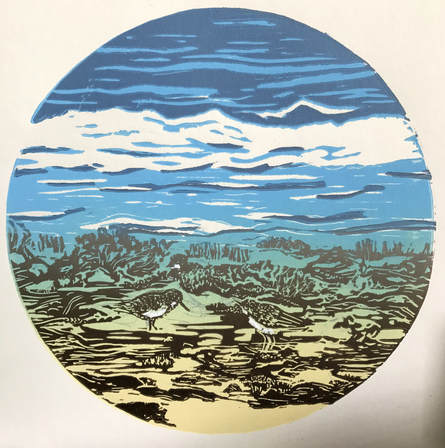
In October 2017 a group of printmakers gathered at Flinders Ocean Beach to see the local migratory and resident shorebirds. We were very lucky to have a spotting scope that made it possible to see a large group of Red-necked Stints that consequently inspired this print and the circular format.
Red-necked Stints are very small birds, approximately 15cm in size, and hard to spot as their brown bodies blend very well with the brown of their overwintering habitat in the intertidal area. Some were roosting on all the washed up seaweed, shells and debris. Others were running down to the waters edge and back as the waves came in. We were able to observe them from a distance with the scope as they carried on their daily activities. It is amazing that these little birds can fly to the other side of the globe to their breeding habitat then find their way back to the same location.
Title: Spotting Stints
Medium: Linocut
Site: Flinders, Victoria
Red-necked Stints are very small birds, approximately 15cm in size, and hard to spot as their brown bodies blend very well with the brown of their overwintering habitat in the intertidal area. Some were roosting on all the washed up seaweed, shells and debris. Others were running down to the waters edge and back as the waves came in. We were able to observe them from a distance with the scope as they carried on their daily activities. It is amazing that these little birds can fly to the other side of the globe to their breeding habitat then find their way back to the same location.
Title: Spotting Stints
Medium: Linocut
Site: Flinders, Victoria
|
Kate had arranged our field trip to the WTP and also for Ken Gosbell from Victorian Wader Studies Group to talk to the group sharing some of his amazing knowledge about migratory shorebirds. We were very lucky to see so many birds on the day and such a diverse cross-section of migratory and non-migratory shorebirds, swans, ducks, ibis, spoonbills and a couple of brolgas.
We visited a number of the ponds and my image is inspired by the view across one of the ponds. The sun was glistening on the water and I found feathers caught in the surrounding straggly vegetation. Feathers are a wonderful indicator of the local birds that have visited the area as they leave these traces of their presence in the area. Title: Traces Medium: Linocut Site: Western Treatment Plant, VIC. Saturday March 10th, 2018 |
Julia Newson
|
An inquisitive dog explores sand dunes off lead amongst the replanted and remnant indigenous coastal vegetation of the Seaford Foreshore Reserve. In the distance you can see houses representing human settlement emphasising the fragility of the remaining wildlife corridors. The dunes originally joined the Carrum Carrum swampland, now Edithvale-Seaford Wetlands Ramsar Site which today regularly supports eight international migratory shorebird species in the East Asian-Australasian Flyway. I imagine pre-European settlement how the area would have been with sand dunes buffering the inland swamp that teemed with busy local and migratory birds.
Title: Inquisitive nature Medium: Reduction linocut (13 colour) Site: Edithvale-Seaford Wetlands, Mornington Peninsula VIC |
Josie Newton
|
References:
True light and shade: an Aboriginal perspective of Joseph Lycett’s art by Prof John Maynard, 2014 Journey to the end of the night. Louis Ferdinand Celene, 1934. Wayward youth: trans-beringian movement and differential southward migration by juvenile sharp-tailed sandpipers, Handel and Gill, 2009. |
The title of my print, Journey to the end of the night, is from the title of the same book by Louis-Ferdinand Celine. It’s a dramatic and expressive tale of improbable travels, idiocy and hypocrisy of society.
The bird I have chosen, the Sharp-tailed Sandpiper (Calidris acuminata), is a long distance migrant, travelling each year from breeding grounds in the Russian Arctic (Lena Delta, Siberia 78.181114, 125.315834) to non breeding areas in Australasia (Coquon -present day Hunter River 32.833778 151.691422)…………..25,000 kms non stop ……….via Alaska. The bird is unique in that juveniles take a detour to western Alaska for body mass gain before proceeding on southward migration. Sandpipers are the only second well documented case of differential migration among birds that involves different routes for adults and juveniles. It’s also thought the stopover in Alaska relates to the temporal and spatial distribution of food which has the greatest influence in determining how major events are organized in a birds annual cycle –for scientists, the behavior provides grounds for testing migration theory and life history strategy! The work: My image is an allegory of the perilous journey. I have used the feathers’ many meanings, from the symbol of air and wind – the realm of the bird – to spiritual adornment, protection (wings) and ultimately survival and pays homage to trans-migratory birds . On visits to the Hunter River wetlands with sky and water separated by a concrete overpass, I couldn’t help but wonder at the journey, navigation by night, planets, innate sensibility…..Travel is useful, it exercises the imagination. You just have to close your eyes. It’s on the other side of life….. Emile Littre. Title: Journey to the End of the Night Medium: Etching Site: the Hunter River wetlands |
Suzanne Newton
|
Travel exposes one to the unknown and can create a sense of vulnerability. This work seeks to capture the fragility of migratory birds. They seem so small to make these long journeys across the darkness of the ocean waters and under the night skies.
My work as a printmaker has been preceded by many years working in libraries and cultural institutions. I try to imbue in my work a strong narrative style and tend to favour the printmaking methods of solar-plating and collagraphs. Whilst I often draw upon my own stylised photo-based imagery as a basis for creating a body of work, I also enjoy the unpredictability that is inherent in the nature of printmaking. Title: Traveller Medium: Solar plate, ink drawing |
|
What makes a king?
The Eastern Curlew has an understanding of land and sky, features the longest bill of all shorebirds and is heavier and taller than its closest relations. They are often described as timid, but this characteristic works to protect them and ensures they reach their destination. Before dawn, I sometimes see them as a go outrigging on Botany Bay. Their distinctive bill sets them apart from the other shorebirds. They are always gone by the time our crew comes back in. An elusive king. Title: The True King of the Skies Medium: Solar Plate ink colouring Site: Botany Bay, NSW |
|
On a walking tour of the Taren Point Shorebird Reserve, the tour guide informed me that Botany Bay once hosted a flock of over 10,000 Sharp-Tailed Sandpipers on their migratory journey. However the flock no longer visits Botany Bay. The cumulative impact of humanity on this environmentally sensitive area has had far reaching repercussions.
The Sharp-Tailed Sandpiper featured in this print was sketched on a visit to the Australian Museum, where a whole range of shorebird species are on display. It is not lost on me that the only Sharp-Tailed Sandpiper I have even seen is a dead one. Is it too late to turn the tide? Title: Turning Tide Medium: Solar Plate Site: Botany Bay, NSW |
Mike Nicholls
Bridget Nicholson
|
I was overcome by the size of the Red-necked stint and it's annual flight. My first encounter was at Flinders as part of a 'chaperoned' group. I returned to spend some time on my own with the birds. At first I couldn't see them, they are so well camouflaged, but as I waited they revealed themselves through movement, I am enamoured. The Flinders ocean beach is a very special place for me having spent many summers here with my grandmother, and whilst not a pretty beach of golden sands it entraps you with its craggy rock-pools, seaweed, and promises of another world.
Title: The Flight Medium: Unique state, collograph and photopolymer plates Site: Mushroom Reef Marine Sanctuary, Flinders VIC |
Lyn Nixon solo & collaborative works
|
‘Flight path south’ illustrates the incredible journey that the tiny Plovers make to travel to our unique Peel wetlands. The flight path and the Plover have been pierced into the solvent transfer and drypoint etching print, it illustrates how they may disappear if when making the journey they have nowhere to feed, if the wetlands are not protected.
Artist: Lyn Nixon Title: Flight Path South Medium: Solvent transfer, monoprint and drypoint etching with pinpricking Site: Peel wetlands, Mandurah WA |
Sally North
|
These migratory birds are incredibly hardy, spending days and nights, sometimes flying nonstop in response to their natural instincts. In this work I wanted to highlight this fact, and also the dark days ahead for them if we humans persist on our continued path of destruction of migratory bird habitats.
Title: Whimbrel Night Flight Medium: Reduction linocut Site: Kinka Beach site coordinates: 23,13,30S- 150,47,59E which is located at the southern end of Kinka Beach on a sand spit at the entrance to Kinka Creek, Capricorn Coast, Central Queensland Australia. |
Maria Nova
|
As a mechanical engineer by trade, I love a challenge. But needing a more creative challenge, I began designing and building soft furniture. On the hunt for unique fabrics, I began experimenting lino printing as a method to custom design my own upholstery fabric. Lino printing is a type of art that set at the back of my mind since young age and resurfaced only recently. After completing a short course recommended by a friend, and keeping to the basics, I have been experimenting with lino, a variety of inks, papers and fabrics, and continue to search for that elusive masterpiece.
For this exhibition I have chosen Little Egret from Kimberley region WA in combination with Western Australian flora. Title: Little Egret of the Kimberley Medium: Linocut Site: The Kimberley WA |
Annette Nykiel & Bede Jacobsen
|
Shorebirds have different length bills so that even when they feed at the same habitat they are reaching prey at different depths in the mud substrate - thus avoiding competing with one another. Even males and females of the same species can have different bill-lengths to thus avoid competition for prey.
Title: Feeding at Lake Pollard Medium: Hand-coloured drypoint Site: Lake Pollard, Yalgorup wetlands WA |
Yolande Oakley
Paul O'Brien
|
The Godwit is from the family Scolopacidae the same family as Curlews , sandpipers ,& Snipes. Their scientific name is Limosa limosa .They were fairly numerous on the sandy wet land under the Stockton Bridge over the Hunter River here in Newcastle, NSW. They can be found all around the coast & throughout the inland wetlands.
Title: Godwit Medium: Etching on copper Site: Stockton Bridge wetlands, Hunter River, Newcastle NSW |
Sally O'Connor
|
Frequent visits to my Mum in Meningie have taken me directly past the overwintering birds in the Coorong. I photographed a site near Jack’s Point and developed several pictures from this. Initially my woodcut depicts only the topography with the sand dunes in the distance and waters of the lagoon, behind a foreground of sedge.
Title: The Coorong Medium: Woodcut on Huon pine Site: The Coorong SA |
Sharron Okines
|
The Overwintering Project bought awareness of the plight of shorebirds to my attention, I wanted to "put a bird on it" to help raise awareness to their plight. Western Port is in my local area and I was drawn to the spectacular Eastern Curllew, which happens to be the most endangered.
Title: Pop Bird Medium: Linocut Site: Western Port VIC |
Monica Oppen
|
Kurnell on the southern headland of Botany Bay is under the north-south flight paths in and out of Sydney Airport. Kurnell is also the site of the former oil refinery and not far away the sand dunes are still being mined. Yet Bonna Point and nearby Towra Point, which is a nature reserve, are still an overwintering spot for the long travelling waders. As I sat and watched a single Curlew in amongst a small flock of Oyster Catchers the aeroplanes landed overhead. I wanted to portray these birds as tiny shapes in an environment in which the natural world is a tiny remnant and the human impact is always close by. The computer coding text is to remind the reader/viewer that the digital interface through which we process the world is omnipresent.
Title: First Arrival at Bonna Point, Kurnell, Sept. 2017 Medium: drypoint on steel, fax machine printed text on chine collé, relief print off acetate. Site: Bonna Point, Kurnell, on the southern headland of Botany Bay, NSW |
Glenda Orr
|
My etching features a Ramsar wetland that I frequent with our informal birdwatching group but the scene is the swampy, marshy areas behind the shoreline. I have been intreagued by the surreal landscape as this area abuts right up on a sterile, concrete storage area for the port, and planes regularly fly low over the area to the nearby airport but yet we saw over 75 bird species this particular day including Godwits on the shoreline.
This image, however, reflects a particular interaction that day. There was huge excitement from my birdo friends and many other visitors, some even from Japan and Korea, that we saw 3 crakes – the Spotted Crake, Spotless Crake and Baillon’s Crake all near each other in the reeds on the edge of this large water-lily laden pond but I was more delighted by the common old Willy Wagtail and Sacred Kingfisher that were perched nearby. The Willy Wagtail had cleverly hidden her nest in the crook of a tree and was flitting from a stump in the middle of the pond, hunting to feed her young, while the Kingfisher sat quietly waiting for ages. Title: Crakes, Kingfisher and Willy Wag Tail – Wynnum Wetlands. Medium: Etching Site: Wynnum Wetlands, Moreton Bay QLD |
Paula O'Shea
Rosanna Page
|
Busy and gregarious, Red-capped Plovers are residents of coastal and inland habitats. Understanding the intricate relationship of these delicate and fragile sanctuaries and their inhabitants, and mitigating human impact, is imperative to the survival of these ecosystems.
Title: Sanctuary Medium: Lino Print with stitching Site: Morely Beach |
Ian Pascoe
|
I am an artist who specialises in drawing the natural world in ink and nib pens, particularly reed pens. After a bit of dabbling in linocuts, I recently started working with collagraphs, and have found it a steep learning curve. My shearwater prints were inspired by a sunset cruise along the rugged south coast of Phillip Island, where I was able to get photos of shearwaters returning to their burrows after a day of fishing Bass Strait. I hope I have been able to portray the spectacle of a mass of these birds against a backdrop of Cape Woolamai.
Title: Shearwaters Medium: Collagraph Site: Phillip Island lies at the mouth of Westernport, Victoria. Its north coast is within Westernport, and hence wader habitat, while its rugged south coast fronts Bass Strait. Here the migratory Shearwaters, Ardenna teniurostris, arrive in spring to mate and lay a single egg in a burrow. The pair fish the waters of Bass Strait and the Southern Ocean, returning in large flocks at sunset each evening to feed their chick. The adults leave the chick before it fledges and the fledglings must fly North to the arctic alone. The print depicts shearwaters fishing the ocean near Cape Woolamai. |
Sue Pedley
|
To make Prevailing Gales #1, I superimposed the outline of a Latham’s Snipe in flight over a Japanese wartime chart of the D’Entrecasteaux Channel in southern Tasmania. (This chart came to light in 1945 when it was found on a Japanese coastal vessel in Borneo.) Latham’s Snipe is a migratory bird that makes a five-day flight across the Pacific twice each year, travelling between its breeding grounds in Japan and the east coast of Australia, as far south as Tasmania, where it returns to feed and rebuild its strength.
Through times of war and peace, Latham’s Snipe have been following this migratory pathway. However, their journey is increasingly impacted and their survival threatened by the ongoing environmental devastation of the wetlands where the birds nest and feed. Title: Prevailing Gales #1 Medium: Carbon print on a digital print Site: D’Entrecasteaux Channel in southern Tasmania |
Liz Perry
|
The Latham’s Snipe flies non-stop between Australia and Hokkaido twice a year on its migratory journeys, resting at Jerrabomberra Wetlands along the way. My print is inspired by the thought of such a gruelling effort, and the importance of ensuring a safe wetland habitat for these and other species.
Title: Voyage Medium: Linocut (Photo credit: Josie Cosgrove) Site: Jerrabomberra wetlands, ACT |
Debra Petit
|
Debra Petit is an Australian mixed media artist who has exhibited widely. Debra has been saving birds since childhood. The Overwintering Project has been a wonderful vehicle for Debra to use her printmaking skills to create a sepia monotone drypoint work of Sharp-tailed Sandpipers (Calidris acuminata), one of Mandurah’s migratory shorebirds. Debra was inspired by the Sandpiper’s subtle colouring, bold markings, and cheeky kinetic pose. Debra has known the Creery Wetlands in Mandurah, WA for over 30 years, seeing many changes in that time.
Title: Whoops! There's Dinner Medium: Drypoint etching Site: Creery Wetlands, Mandurah WA |
Perdita Phillips
|
I visited Alfred Cove (Marradungup) at different times when the tide was in or out. The water was full of phytoplankton, the mud banks were full of algae, snails, worms and smaller life underneath that waders feed on. The same sun that powers the life of the muddy bottoms also drives the birds to travel across the world: light, mud, time and depth. Anthotypes are images created using materials from plants. Unlike conventional photography, exposure to light is used to fade treated surfaces to create images. In this case, the spice turmeric was used to create an image when bleached by the sun over a couple of hours. Anthotypes are fugitive and will eventually fade. A digital print from scan has been supplied for the portfolio.
Title: Light, mud, time, depth (number 6) Medium: digital print of scanned turmeric anthotype Site: Alfred Cove |
Fay Pilon
|
The Red-necked Stint weighs about the same as a chook egg, about 50g. These birds are migratory and leave King Island at the end of March, going to the Northern Hemisphere to breed. Birds return to King Island mid-September. Red-necked Stints are seen on sandy beaches.
A cinquain, a 5 line poem: Bird fly high soar and dip resilient country to country. Title: Untitled Medium: Stencilled monoprint Site: King Island TAS |
Rhyll Plant
|
I share my birthplace with many short-tailed shearwaters, yet once I’d left, I didn’t feel the same avian compulsion to return. I prefer recalling the wildness of the Phillip Island, Victoria, of the 1950’s when, as a child I absorbed the twilight image of the ghostly flight of the returning moon birds contrasted against a background of the crashing surf from Bass Strait.
Attempting to capture an image celebrating this silence and noise - soft and loud - has led me to experiment with various printmaking methods. I found a balance by overlaying the contrasting textures of monochrome block and mono print, each a strong element yet complimentary. The stark image is muted when printed on paper that reminds me of the colour of sand. Title: Shearwaters – Bass Strait (2 birds) Medium: Unique state monoprints Site: Bass Strait |
Sue Poggioli
|
It was Monday morning, the 20th of November 2017, Torbul on Moreton Bay. Birds gathered awaiting low tide, ready to feed on the mud flats. On the grass and sand were Bar-tailed Godwits, Black-winged stilts, Eastern Curlews, Great Knots, and Ruddy Turnstones. Having taken positions many stood on one leg, head resting to the side and were moved gently by the breeze, like a wind vane. Others moved about as if in discussion. In the mangroves sat Whimbrels. We were told there were probably a thousand birds present. Any disturbance would cause the resting birds to fly across Pumicestone Passage to Bribie Island to search for other feeding grounds. They are in Australia for Summer to feed in preparation for their return to the Northern Hemisphere and breeding.
We waited at a respectful distance quietly watching and recording. Title: Conversation with Birds Medium: Etching, sugarlift aquatint, colour a la poupee, watercolour Site: Torbul, Moreton Bay, Qld. |
|
Wynnum Mangrove Boardwalk. I enter the mangroves, suburban sounds diminish, other sounds grow. Today, the tide is low, soon to turn, sandbanks exposed, birds feeding, long beaks go in and out of the sand, working, finding what they need, I have my supplies, to eat and work. I sit to draw. I am inside the mangrove forest.
Always I am amazed at the vast size of the larger trees. At the beauty and seeming fragility of mangrove shoots emerging from the stinking, oozing black mud. I am cocooned in sound, birds mostly unseen, occasionally ravens come in closer to look at me and call to each other, there is someone here. I draw, I am aware of other sounds, water lapping, moving in now, snapping shrimp, the male parading his large red claw to attract a female, wind stirring the trees, Moreton Bay moving beyond the line of mangroves. I give my attention to the mangroves and am in awe of the protective cloak they draw around the creatures who live here, who visit, including migratory shorebirds feeding and fattening before their long journeys to the northern hemisphere. I too am enveloped in the protective cloak of the mangroves and emerge from the forest nourished. Whimbrel. Title: In the Mangroves (I) Medium: Linocut and collage Site: Wynnum Mangrove Boardwalk, Moreton Bay QLD |
Irene Proebsting
|
Harmers Haven is a small town along the Bunurong Marine and Coastal Parks in Gippsland. The Bunurong people are the traditional owners of the land and water in the region. It was during a break between coronavirus restrictions on the eve of the 2020 winter solstice that I visited the area.
This beautiful marine coastline which features reefs of sculptured rock formations and brightly jewelled pools, support sea animals and provide food for local and migratory shorebirds. I decided to use photographs of one of the sooty oystercatchers feeding there and a rock pool for my print. I merged the images and the body of the bird is slightly transparent to infer the fragility of the ecosystem and the life-forms that depend on it. Title: Bunurong Coast Medium: Digital print on Hannemühle Site: Harmers Haven, Gippsland, Victoria |
Julie Puchalski
|
The site I visited is Swan Bay on the Bellarine Peninsular. It is a place I visit quite regularly as the bird life is diverse and plentiful. It was during one of these visits that I was fortunate enough to see two Sooty Oystercatchers chicks which were so small, vulnerable and totally reliant on their parents for protection and their survival.
I have chosen a bird from the list of migratory birds to Australia and New Zealand provided by The Overwintering Project to use as the image for my print. The Bar-tailed Godwit. This bird is on the vulnerable species list. It is an amazing bird which undertakes the longest non-stop migration of any bird so far studied and must build up its body fat to fuel this long trip. I read about a bird in a study of this migration, one female (E7) who in 2007 departed Alaska on an eight-day non-stop flight to New Zealand setting a flight record of 11,680 km. This female then made a 174-day round trip, a journey of 29,280 km with a total of 20 days of flying. I decided to use the image of a Bar-tailed Godwit chick to emphasis the vulnerability of the species and all migratory birds who depend on so many factors to survive these gruelling annual migrations. Just as the little oystercatcher chicks were reliant on their parents, the Godwits and many other migratory species need our assistance and support for their survival. Title: Bar-tailed Godwit Chick Medium: Multi-media print including Linocut, mono-print, and chine-colle on Fabriano paper |
Mary Pulford
|
I have enjoyed going out into estuarine and wetland environments to search for migratory shorebirds. Very often these are dull brown mudflats, and it takes some patience to spot these discreet birds. The next difficulty is identifying them – how big are they? What colour are they? And does the beak turn up or down? This work reflects my time searching for migratory shorebirds, and I do think it’s a Greenshank.
Title: I think its a Greenshank Medium: Drypoint, carborundum, a la poupée with hand colouring, 3 plates Site: Coastal wetlands of SA |
Jill Quirk
|
The critically endangered Eastern Curlew appealed to me with its elegant long bill and tall, regal silhouette. The world's largest shorebird. I highlight it as representative of all migratory shorebirds which use Australia's coastal wetlands. Many habitats are in densely populated areas where development is an ever present threat.
Title: Eastern Curlew Medium: Linocut Site: SW coast of Victoria |
Aviva R
|
Since moving to Canberra, I’ve often walked to the Jerrabomberra Wetlands to break up the tedium of my routine. I’ve never hit the rare bird jackpot, but I often see pelicans. They’re showstoppers in their own way: parked on a log in the middle of the wetlands, big and uncamouflaged. Occasionally I’ll see a pelican make the short flight from the wetlands to human-made Lake Burley Griffin. I enjoy that, like us, pelicans exploit Canberra’s porous boundary between civilisation and the wild.
Title: Sunset Pelican Medium: Linocut Subject: Pelican |
Katie Ravich
|
The presence and absence of birds in a place indicates the overall health of that place - of the world. The more species in healthy populations that are present, the healthy the environment. Birds are also beautiful, joyous and extraordinary and they do many things for us assisting in pollination, insect control, soil and sand aeration etc, and they do it all - free! They are interwoven into our lives in many ways, some of which we are totally unaware of - and yet we are destroying their habitat and ignoring their right to life. The loss of birds that we are now witnessing worldwide, is not only terribly sad, it is shocking and is as much a loss to mankind as it is to the birds themselves. I hope my small contribution to this wonderful project, can in some way help others to stand up for birds in all their forms - not just become aware of their loss, but fight for them.
Title: Ruddy Turnstone Medium: Stencilled Monoprint Site: King Island, Tasmania |
Gaby Reade
|
The Godwits/Kuaka arrive and depart every year in Heathcote Valley, where I have lived for the past 26 years. Residents of Christchurch welcome and farewell the Godwits/Kuaka every year with a ceremony (September and March). Declining numbers of birds in the past 2 years to this site from around 2000 birds to 1500 birds. One reason: habitat loss to their resting places on their journey to Alaska. (Yellow China Sea and Korea). Estimated total number of population in Aotearoa: 80,000.
Title: Karangatia mo te Kuaka/Call for the Godwit: (1) Kuaka are preparing for their long flight, spreading wings; lines & circles symbolise longitudes / latitudes; shapes and forms symbolise habitat and landscapes (2) Karangatia – Call for: a call to us to preserve habitat, embossed Kuaka symbolise the threat of disappearance due to habitat loss. Title: Call for the Godwit – Karangatia mo te Kuaka Medium: solar etching, embossing, drawing, chin colle (handcoloured rice paper) on somerset paper 300gms Site: Southshore and Heathcote/Avon Estuary, Christchurch/Otahutahi, New Zealand/Aotearoa; 850 ha of mudflats, 250 ha of oxidation pond, 100 ha of lowland paddock. Developed in the past few years: Charlesworth Wetland Reserve: 20 ha of marshy area for Godwit/Kuaka and Oystercatchers. |
Bronwyn Rees
|
Title: Cape Bridgewateer Medium: Drypoint etching Site: Cape Bridgewater, Portland VIC |
I visited Cape Bridgewater while staying at the art space above Portland Print Studio, in 2016. I knew a little bit about Hooded Plovers, but not enough – as evidenced by the following story. I walked out from the carpark, and there in the middle of the beach was a nest with some spotty eggs in it. Wow! I thought – I can’t see any adult birds around. Maybe the nest has been abandoned? I took photos and proceeded to lay my plastic plate over the top so I could trace the shapes.
Later I saw some adults flying around – I wondered if they were the parents? The more I thought about it, the more I became worried. Heaps of people went down on the beach there with their children, their stuff and their big dogs. It was right in the path of all the traffic. What possible chance did they have? When I got back to Melbourne I contacted the local bird people and asked what could I do to help? They said, you could donate $40 to build a shelter for the nest. So I did. I wished I hadn’t been so ignorant, and greedy to absorb the amazing novelty of observation at such close quarters. The image I have submitted is of the seaweed on the beach and the rock exposed by the tide. I chose it because it looks a bit sad and in turmoil as maybe the parents would feel when they can’t safely access their nests. |
Kathy Reilly
|
Farewell Spit is the “hook” on the north western tip of the South Island of New Zealand.
At 34km it is one of the longest natural sandspits in the world. A wetland of international importance, it has been a bird sanctuary since the 1930s and is home to over 90 bird species. The people of Golden Bay look forward to the return of the Bar Tailed Godwits each September. I enjoy finding them feeding on tidal flats below our bach near Farewell Spit – arriving skinny from their huge 12,000km journey along the Flyway from the northern hemisphere, and over the summer, seeing them gain weight for the return flight. Title: The Godwits of Farewell Spit Medium: Etching Site: Farewell Spit, South Island NEW ZEALAND |
Geoffrey Ricardo
Trudy Rice
Anne Riggs
Angelina Riley
|
My inspiration for taking part in the Overwintering Project is my love of nature and my concern for the declining natural environment. Humans are gradually taking over areas of the environment that would naturally be inhabited by wildlife. The
Overwintering Project is about endangered and at risk migratory birds coming from all parts of the world and passing through my part of the world – Australia. I have created a print about Curlews in flight. With their mudflat feeding areas declining because of urban sprawl, I imagine the birds just circling around looking for a safe and food rich place to settle. Title: The Flying Migrant Medium: Copper plate etching with aquatint |
Ellise Roberts
John Robinson
|
Was that a Bar-tailed Godwit that I saw as I drove over the causeway? It seemed to have a longer beak with more of a curve. There is nowhere to stop, so I could not be really sure. I checked in the bird identification book and the bird that seemed most likely is a Whimbrel. They have been known to overwinter in the Orielton Lagoon. It was in a shallow rocky area at low tide, surrounded by Silver Gulls. I’m sure it was a lone Whimbrel.
Title: A lone Whimbrel by the Causeway Medium: Drypoint Site: South Eastern Corner of Orielton Lagoon on the southern side of the causeway TAS |
Sandy Robinson
|
These small birds migrate to Australia from Siberia each year.
We see small groups of them at the waters edge. Some are hunched over, poking busily into the sand, searching g for food. Others seem to be engaging in a playful game of tag as they scurry in and out with the sea water. Title: Untitled Medium: Woodcut stencil with chine colle Site: Red-necked Stint at British Admiral Beach on the west coast of King Island TAS |
Catherine Rogers
|
I’ve travelled by Pitt Water - Orielton Lagoon in Tasmania many times and taken for granted its international significance for migratory shorebirds and rare species. One summer’s day, I was struck by the sight of shorebirds flying over the steel grey waters. It was overcast and a storm was about to hit. There was a sense of tranquility and majesty of them caught in flight; their forms against the darkening sky and the choppy waters below.
Title: Flight over Pitt Water Medium: Embossing Site: Pitt Water - Orielton Lagoon TAS |
Jennifer Rogers
|
Amongst the great number of migratory shorebirds overwintering throughout the Boondall Wetlands in Brisbane, is the Red Knot. Due to the Arctic Russian snow melt happening progressively earlier each year, because of global warming, the Red Knots are finding it more difficult to hatch in time for feeding during the annual two month peak insect time, when the birds build up fat for the long journey south.
Smaller chicks with smaller beaks mean the bird’s viability is threatened ahead of the big migratory flight to southern countries. According to researchers publishing in the journal ‘Science’, both Arctic and Southern feeding sites are compromised with smaller beaked birds unable to obtain suitable foodstuffs. My selection of the Red Knot as a subject for the Overwintering Project seeks to emphasise the existing environmental threats these birds are experiencing at the moment. The image uses a linear style lino cut printed in charcoal/blue, with a ghost bird representing a disappearing species. Title: Red Knots, Nudgee Beach, Queensland Medium: Linocut Site: Nudgee Beach, Queensland |
|
As my work as a printmaker involves the observation and recording of the littoral margins of the Australian landscape using relief and etching techniques, being involved with the Overwintering Project offered a great opportunity to participate in helping draw attention to the plight of our unique migratory birds. With the loss of habitat due to housing development along the coastlines of Australia, I was particularly pleased to be a part of the Overwintering Project exhibitions that set out to inform people about the wonderful shorebirds which make such astonishing flights to and from the northern hemisphere each year.
Title: Eastern Curlews, Great Sandy Straits, Qld Medium: Etching and linocut with chine collé Site: Great Sandy Straits, Qld |
Annika Romeyn
|
In 2020 I spent 5 months in Cargill’s Cottage, a 1920’s dairy cottage on the edge of urban development and the Jerrabomberra Wetlands, Ngunnawal Country, now home to Megalo Print Studio visiting artists. When the Covid pandemic struck, walks through the Wetlands became a daily source of wonder. My favourite bird to watch was the Australasian Darter with its distinctive snake-like neck. I used linocut to depict the Darter’s striking silhouette, drying its wings before taking flight. I printed the linocut over a unique watercolour monotype reminiscent of the underwater environment where Darters dive to feed on fish and insects.
Title: Darter Medium: Linocut and watercolour monotype Site: Jerrabomberra Wetlands ACT |
Susan Rushforth
|
Seasonal Journey reflects the migratory pattern of the Bar-tailed Godwit between the Arctic and Australia. This migratory wader makes the longest flight of any migratory bird and a distance of 11,000 km has been recorded. Bar-tailed Godwits are predicted to inhabit the tidal mudflats and intertidal sand flats of my local estuarine environment of Pittwater in Sydney. Pittwater still contains natural intertidal areas and mudflats sought by the Bar-tailed Godwits. There has been a decline in the numbers of these birds particularly in parts of the Northern Hemisphere where the estuarine environment has been altered.
In this print, Seasonal Journey, I have focused on the sense of camouflage utilised by the Bar-tailed Godwit with it’s environment for survival. I am very appreciative of the talk that Robert Griffin from BirdLife Australia gave to a group of printmakers from the Warringah Printmakers Studio. By looking through his telescope I was opened up to a new world of migratory shorebirds in my local area at Long Reef at Collaroy Beach. Title: Seasonal Journey Medium: Woodblock Print using water based pigments on handmade Japanese Kozo paper Site: Long Reef Aquatic Reserve, between Collaroy and Dee Why, Sydney's Northern Beaches NSW |
Margot Rushton
Above left: Kiama Wetlands III; Medium: Zinc Etching, spitbite, aquatint and drypoint a la poupee and stencil.
Above right: Title: Kiama Wetlands IV; Medium: Zinc Etching, spitbite, aquatint and drypoint a la poupee and stencil.
Site: Kiama Wetlands, NSW. Next to Kiama Cemetery and opposite Bombo beach.
In 1983 I attended the Wollongong TAFE 2 days a week focusing on painting. I was introduced to printmaking by Patricia Holleley during this time and dropped painting almost immediately. I moved back to Canberra in 1984 and was accepted at the Canberra School of Arts for a Bachelor of Arts degree in 1985. At the same time I participated in the occasional workshop at Megalo Prints. However, in 1986 I decided to focus on my career as a public servant and put printmaking on the back-burner. In 2008 I moved to Shellharbour permanently and established my printmaking workshop. I have held several solo exhibitions and have also participated in group exhibitions in Greece, Sydney, Kiama and Wollongong. My work hangs in private collections in the USA, South Africa, New Zealand and Australia.
Above right: Title: Kiama Wetlands IV; Medium: Zinc Etching, spitbite, aquatint and drypoint a la poupee and stencil.
Site: Kiama Wetlands, NSW. Next to Kiama Cemetery and opposite Bombo beach.
In 1983 I attended the Wollongong TAFE 2 days a week focusing on painting. I was introduced to printmaking by Patricia Holleley during this time and dropped painting almost immediately. I moved back to Canberra in 1984 and was accepted at the Canberra School of Arts for a Bachelor of Arts degree in 1985. At the same time I participated in the occasional workshop at Megalo Prints. However, in 1986 I decided to focus on my career as a public servant and put printmaking on the back-burner. In 2008 I moved to Shellharbour permanently and established my printmaking workshop. I have held several solo exhibitions and have also participated in group exhibitions in Greece, Sydney, Kiama and Wollongong. My work hangs in private collections in the USA, South Africa, New Zealand and Australia.
Stephne Sands
Above Left: Title: untitled- Peel wetlands; Medium: Solvent transfer, drypoint; Site: Peel-Harvey Estuary WA
Above Right: Title: untitled- Peel; Medium: Solvent transfer, drypoint; Site: Peel-Harvey Estuary WA
Above Right: Title: untitled- Peel; Medium: Solvent transfer, drypoint; Site: Peel-Harvey Estuary WA
Jenny Sanzaro-Nishimura
|
The print Red Knot to be Forgot? was inspired after researching the birds that migrate to or ‘overwinter’ to the islands and tidal areas of Moreton Bay, Queensland. The Red Knot travels here each year from its breeding grounds in Chukotskiy Peninsula Siberia and Seward Peninsula Alaska often in a non-stop flight, losing almost half its bodyweight along the way. In its breeding colours it is a beautiful rufous colour, fading to a speckled grey by the time it reaches our shores. It spends less than three months in its Artic breeding grounds to fly up to 14,000 klm south on a 50cm wingspan. The Red Knot is a regular visitor to the tidal flats near Wynnum Bird Hide and other tidal areas around Moreton Bay. There are grave concerns that Global warming is destroying its overwintering sites and breeding grounds and it has already been declared endangered in the USA.
One Red Knot nicknamed Moonbird (tag B95), has been recorded migrating between Canada and Terra Del Fuego for 20 years, flying further than the distance to the moon, hence the name. Title: Red Knot to be Forgot? Medium: Screen Print, Mokulito, Watercolour, colour pencil Site: Wynnum bird hide, southern Moreton Bay, Queensland |
Sambuddhananda Saraswati
|
The Japanese (Latham’s) Snipe (Gallinago hardwickii) is known to range the eastern and is a common migrant from Japan and Kuril Island to Australia's eastern coast and Tasmanian swamps and wet grasslands and coastal areas. It's range includes Kinka Beach (coordinates: 23,13,30S- 150,47,59E). The Latham’s Snipe gives a loud ’keow’ like a green tree frog.
We noted various overwintering birds on the sand spit at the entrance to Kinka Creek, Capricorn Coast, Central Queensland, Australia. Title: Latham's Snipe Medium: Drypoint etching with watercolour and collage Site: Kinka Beach (coordinates: 23,13,30S- 150,47,59E), Qld |
Petra Saravanamuthu
|
Visiting locations both in summer and winter captured the contrasting character of the birds’ habitat. In summer, the water had receded and left cracked mud across a wide barren expanse fringed with tall reeds, and there were no traces of the birds except for a fallen feather. This print is inspired by the winter visit when white herons roosting in a nearby tree were admiring the shores fecund with edible red samphire. Passing binoculars to one another, we spotted black and white birds in the distance dipping their bills to find food, wading on clumps of growth and small islets. Title: Avocet Wading in Shallow Water Medium: Drypoint and Collagraph Site: Troy Park, Burke Dr, Alfred Cove A-Class Nature Reserve bordering the Swan Estuary Marine Park WA Group visit on Saturday June 15th 2019, 9:00am |
Nyrel Saunders
Mez Schlager
Maija-Liisa Schreider
|
Combining Realism and abstraction.
I start by visiting Herdsman Lake with my sketchbook and camera. After several sketches and photos, I made watercolour impressions of the feeling of the place. My chosen subject was the Pacific Black Duck, due to the fact that it was the bird I sighted most often during my sketching trips. I combined the linocut with my watercolours to choose the best background. My influence for this work must be Vera Miller; I like her abstract water/scenery. Trying to encompass the microscopic as well as the macroscopic. The colours represent the scent and the feel of the Herdsman Lake as I interpret them. Title: Pacific Black Duck, Lake Herdsman Medium: Hand-coloured linocut Site: Herdsman Lake WA |
Ruth Schubert
|
Ruth Schubert is an active member of Thumbprint Inc and is based in Mount Gambier of South Australia. Her recent focus has been on experimenting with a range of printing techniques including, waterless lithography, linocut and drypoint printing techniques. Her print is of the Red-Necked Avocet from the Coorong of South Australia.
Title: Red-necked Avocet Medium: Linocut Site: The Coorong, SA |
Gwen Scott
|
In late February 2020, Kate Gorringe-Smith had organised a visit to Stockyard Point for numerous artists interested in learning more about the shorebirds of Westernport Bay. It was a beautiful day and we spent many hours soaking up the sun and listening to Roger Standen's (then Chair of the Victorian Wader Studies Group) informative talk about the birds on this shoreline. Having done no sketches on-site and only taken a few photographs of birds at a distance that day, I decided to produce a print that reflected the beautiful day and environment with a fellow artist/birdwatcher thrown in!
Title: Birdwatcher Medium: Reduction linocut Site: Stockyard Point, Jam Jerrup, Westernport Bay, VIC |
Pamela See
|
Mud Sticks is a woodblock print editioned with a baren using xuan paper. It depicts a Curlew Sandpiper in flight, with a wavy marshwort flower (Yellow Fringe Nymphoides Crenata) attached to its foot. The seed of this floral species is dispersed into the mud of saltmarshes, and then adheres to visiting migratory fauna. Subsequently, the distribution of both species is related. Both are endemic to the Boondall Wetlands, which the artist frequents. In title, the composition makes reference to the metaphor “mud sticks” which implies ill-repute. However, the composition is intended to demonstrate the consequences of some circumstances are imperceivable at the time.
Title: Mud Sticks Medium: Woodblock print Site: Boondall Wetlands, Brisbane QLD |
Carol Seeger
|
Overwintering shorebirds seek locations that provide food and safe habitat to build up their resources for the long flight back to the northern hemisphere. Many Overwintering locations are being lost to development and the expanding urban sprawl. Six of these species are either vulnerable, endangered or critically endangered and they overwinter in this area. It is imperative that local authorities acknowledge and allow for limited development in these areas, which in turn provides safety from domestic and feral animals. Educational signage about these amazing little birds would give an insight into the enormous annual migration they endure.
|
Safe Haven
A strip of pockmarked Pacific sand Invertebrates and crustaceans An approaching avian wave The elegant symphony of dipping, banking and swirling Crash landing Waiting for legs to function Early morning High tide The cacophony waits To feed Lenses and shutters Busy Counting and recording Disappointment Fewer this year Summer over Time to leave Head north Thousands of kilometres Raise the next generation Title: Mangrove Habitat Medium: Etching with chine collé Site: Wathumba Creek, western side of Fraser Island, Queensland |
Lisa Sewards
|
Shoreham beach has been the playground for my family for the past decade. The Overwintering Print Project has heightened my awareness for local birds and especially the various Plovers that nest in the area. Volunteers lovingly rope off nesting areas of Hooded Plovers and pop up little signs to educate locals and tourists. At the end of summer and at the site of one nesting habitat I found pieces of tangle or flowers of the sea as I call them, along with a feather. These have been etched using solar plates creating an artwork reflecting my local migratory and resident shorebird habitat.
Title: Found, Shorebirds nesting habitat Shoreham Medium: Solar Plate Etching Site: Shoreham Beach Victoria (Honeysuckle beach area) |
Henry Shawcross
|
Henry Shawcross (he/him) is an emerging artist working on Ngunnawal/Ngambri land. He has a life-long interest in textiles and returned to visual art as self-expression when he experienced chronic illness. He is interested in the therapeutic value of the repetitive processes involved in print and textiles.
Title: Reeds for Refuge Medium: Linocut Site: Jerrabomberra Wetlands, ACT |
Luke Shelley
|
I was lucky enough to grow up on the waterfront of Davistown. A small estuary called Lintern Street channel. As a child I grew very fond of the Eastern Curlew for its large beak and its distinctive startling call. I recall large flocks of 20-30 birds that would visit our waterfront throughout the summer months. Joined by pied oyster-catchers, sacred ibis, and royal spoonbill, the curlew would forage on the mudflat at low tide. The warm nor-east breeze would ruffle the shallow surface of the water. As kids we would swim across the channel to the mudflat, the Curlew always keeping a safe distance.
Davistown is a small community located on the southern central coast of NSW. The suburb is best described as a peninsula within the Brisbane Waters estuary system. This monotype was created on site at Lintern Street reserve (where the artist grew up). The Brisbane Waters system is a very healthy ecosystem, and is relatively shallow compared to other systems. The many sandbars, seagrass beds and mudflats create the ideal habitat for many species of resident and migratory birds. Title: Eastern Curlew Medium: Monotype on Japanese rice paper Site: Lintern Street reserve, Davistown, Central Coast NSW |
Emily Simson
|
Responding to the Red-necked Stint and Little Llangothlin Lagoon NSW
Little Llangothlin Lagoon is one of 40 high altitude lagoons in the New England region of Northern NSW. The usually reliable rainfall makes this wetland with it’s range of habitats, a refuge in dry times to 100 bird species and waterfowls, including 8 migratory species. The lagoon is now completely dry due to extended drought conditions in Eastern Australia. The Red-necked Stint is one of the migratory birds previously found overwintering here. This year it would find the dark green spikerush-sedgeland has collapsed into rusty red angles, the deeper water has evaporated, exposing the rich chocolate brown of ancient peat and basalt soil for Kangaroos and Wallabies to make their tracks. Title: “please come back when the drought breaks” Medium: 2 plate collagraph Site: Situated East of the New England Hwy 20km NE Guyra, New England region Northern NSW |
Neil Sloan
|
Neil is a Queanbeyan printmaker and collage artist who seeks to create humorous and colourful works that are balanced between realism and abstraction.
This image of a Latham’s Snipe was inspired by a walk in the Jerrabomberra Wetlands this past summer. They lie close to the nation’s parliamentary buildings and are frequented by people who enjoy birding and nature. I chose to depict this bird as it is threatened by loss of habitat (mainly wetlands) in both Australia and Japan. The title, “Sanctuary” emphasises the importance of wetlands to these birds and to all migratory and resident birds. Title: Sanctuary Medium: Linocut Site: Jerrabomberra Wetlands ACT |
Melissa Smith
|
Migrating south from its breeding area in the tundra of the High Arctic, the Sharp-tailed Sandpiper arrives in the Tamar Wetlands (Tasmania) in September and begins its northward journey in March. In February 2019 over 150 birds were counted in the area, reinforcing the national importance of this inland habitat for migratory shorebirds.
We know these birds are so like us. Flung out into the world, capable of great feats, destined to make the best of our fates. The earth is always faster for shorebirds. They fly ahead of us. Darby, A. 2020, Flight Lines, Allen & Unwin, Sydney p.267 Title: Tundra to Tamar Medium: intaglio collagraph Site: the Tamar Wetlands, Tasmania |
Trevor Spohr
|
We are fortunate that the Brisbane City Council has set aside the Boondall Wetlands as a Reserve and apart from walking platforms and viewing stations the area is much the same as it always has been, a great legacy for current and future generations.
My work for the Overwintering Project is titled Urban Rambler a comment on the pollutants that have detrimental effects on these fragile ecosystems. The figure is protected by a helmet, mask and goggles, the bird, an Eastern Curlew, is exposed to the same toxic elements without protection, the eye of the figure and bird intersect, they view the same situation. Title: Urban Rambler Medium: Screen print with gold leaf Site: Boondall Wetlands Reserve |
Michelle Strazzari
|
The Oriental Plover also known as the Oriental Dotterel & closely related to the Caspian Plover is medium sized elegant bird with long legs and a wingspan of 46-53cm and height of 21-25cm.
It breeds in parts of Mongolia, eastern Russia & China from April to July & migrates through its non-breeding season to southeast Asia, Indonesia, New Guinea and arrives in northern Australia in early September through to October. During their time in Australia plovers spend time in coastal habitats such as mudflats, sandbanks, sandy or rocky ocean beaches, nearby reefs or coastal grasslands. Their diet consist mainly of insects, including termites, beetles, grasshoppers, crickets and bugs. Title: Oriental Plover Medium: Collograph |
|
The Pectoral Sandpiper a medium sized shorebird has a length of 19–24 cm and wingspan of 37–45cm. It breeds in North America and Asia, wintering in South America and migrates to Australia in Queensland mostly around Cairns during September to June. There are scattered records elsewhere, mainly from east of the Great Divide between Townsville and Yeppoon.
In Australasia, the Pectoral Sandpiper prefers shallow fresh to saline wetlands. The species is found at coastal lagoons, estuaries, bays, swamps, lakes, inundated grasslands, saltmarshes, river pools, creeks, floodplains and artificial wetlands. The sandpiper is omnivorous and consumes algae, seeds, crustaceans, arachnids and insects. Title: Pectoral Sandpiper Medium: Collograph |
Jennifer Stuerzl
|
Migratory shorebirds
flight shore, sand, mud, stones, feathers beaks, legs, claws, eggs, eyes blood flesh life, death interconnections ecology habitat destruction, pollution landfill, mudflow, chemical spills human manipulation intervention conservation, habitat restoration spaces interconnected places nature revered, loved, embraced and sustained birdsong … light the whole interconnected world flight. Title: Interconnected Medium: Etching, linen thread stitching on washi paper |
Phillipa Sturgess
|
Twice a year these small birds navigate across continents and oceans to find the sites suitable for breeding in the north and overwintering in the south. This amazing feat reminds me of journeys of early seafarers. Where human explorers were assisted by the invention of tools such as maps and compasses, migratory birds relied on their instincts and their connection with the earth to guide their travel.
Title: Navigator: The Greater Sand Plover Medium: Lino print and cyanotype Site: Kinka Beach site coordinates: 23,13,30S- 150,47,59E which is located at the southern end of Kinka Beach on a sand spit at the entrance to Kinka Creek, Capricorn Coast, Central QLD |
Kate Sullivan
|
The artwork “Jerra flyway” reflects the location of Jerrabomberra Wetlands (Jerra) in an iconic Canberra urban/bush landscape. As depicted in the artwork, the urban landmarks of Parliament House and Black Mountain Tower form part of the view from Jerra, but it is the bush landmarks of the Molongolo River and Kellys Swamp that matter to the waterbirds, such as the migratory Latham’s Snipe.
Title: Jerra Flyway Medium: Linocut Site: Jerrabomberra Wetlands, ACT |
Linda Swinfield
|
Air = flight + water 1 (square) is part of a series of prints started in March 2020. Initiated as a commission from Captivate, Parramatta whilst I was Artist in Residence to represent the elements within the landscape.
As a hybrid printmaker I chose my media based during the creative process and for this group of works I chose traditional analog film to unpredictably layer the symbols of air (feathers) paired with water during walks around Wentworth Falls Lake. The multiple exposure of film as a layering process is similar to printmaking and utilises an accidental layering when the film doesn't line up or its exposure presents inconsistencies. This individual image represents air and water, incorporating feathers as a symbol of flight and bird life which all coexist within the filigree of our landscapes and waterways. Title: Air = flight + water 1 (square) Medium: Archival print Site: Wentworth Falls Lake |
Trudy Tandberg
|
This work contains a poem translated into shorthand:
The Drowning For now the dialog continues, the pain to surely diminish, repeat the scene, clarify a line, the discourse, the disclosure fails to satisfy, loss is loss, and there is no reply |
The Drowning is a study of the Hooded Plover habitat at Lighthouse Bay, Carpenters Rocks, South Australia -37.912059,140.391547. In the Border Watch in January 2018 the drowning of a young Hooded Plover was reported under the title of Tragic Act of Vandalism. The accompanying photograph struck me as poignant. The positioning of the bird on the sand suggests a uplifting grace, but this bird had drowned a short sprint from it’s pebbled nesting site. A westward evening beach front affords great symbolism of loss in the blasting light, open expanses of blue and fading horizon line. In this image the loss is of such a little endangered bird. The Hooded Plover is a species generally just seen with the naked eye as a blurred silhouette, running along the shore line. A species easily disregarded by the human users of the beach.
Title: The Drowning - Hooded Plover Medium: Drypoint/monoprint Site: -37.912059,140.391547 Lighthouse Bay, Carpenters Rocks SA |
Gwenn Tasker
Fiona Taylor
Kerrie Taylor
|
The secrets of mangroves and the cultural and spiritual teachings of an Indigenous Tiwi elder are the inspirations behind the print, Wading, whimbrel, wandering.
Kerrie lived and worked on Bathurst Island, 90 kilometres north of Darwin for more than two years. She became fascinated by mangroves after an outing with a Tiwi elder who was teaching his grandson how to find mud mussels.Kerrie was intrigued with the hidden elements living in the mangrove system symbolising the strength and resilience of Aboriginal cultureand inner knowledge. The whimbel is one of 4 migratory shorebirds which roost in Darwin mangroves. Wading, whimbrel, wanderingrepresents the amazing spirit, tenacity and knowledge of the spectacular migratory journey undertaken. Kerrie’s work has been exhibited in Darwin and interstate, receiving a number of awards. Title: Wading, whimbrel, wandering Medium: Screenprint Site: Mangroves, Darwin NT |
Sandra Taylor
|
My print-making is inspired by nature and the landscape - and I often respond to current environmental issues. In this print for the Overwintering Project I have focussed on the Bar-tailed Godwit - one of our vulnerable shorebird species. In Autumn, these shorebirds migrate north to Siberia and Alaska to breed, and each Spring they return to coastal mudflats in several locations around Moreton Bay. These locations have been recognised internationally as Ramsar wetland sites because of their importance for bird diversity and conservation. However, these sites are currently threatened by a proposed development project (the Toondah Harbour project) which lies within the Moreton Bay Ramsar sites.
Title: Foraging Medium: Etching Site: Moreton Bay, Queensland |
Paul Temple
Kati Thamo
|
Our house overlooks a harbour on the south coast of Western Australia. For thirty two years we’ve observed the tidal flows and birdlife of this watery refuge through our front windows. Over recent months I’ve been cycling around the harbour to the spit of land where waders congregate, and I’ve been observing a small group of plovers as they forage for food on the tidal flats. Their name arises from the Latin pluvial, meaning ‘rain’, and so seems an appropriate overwintering bird for our southern coastline which is so frequently drenched by the incoming winter weather.
Title: Winter Light Medium: Etching Site: Rushy Point, Little Grove, Princess Royal Harbour, Albany, WA |
|
Our house overlooks a harbour on the south coast of Western Australia. For thirty two years we’ve observed the tidal flows and birdlife of this watery refuge through our front windows. Over recent months I’ve been cycling around the harbour to the spit of land where waders congregate, and I’ve been observing a small group of plovers as they forage for food on the tidal flats. Their name arises from the Latin pluvial, meaning ‘rain’, and so seems an appropriate overwintering bird for our southern coastline which is so frequently drenched by the incoming winter weather.
Title: Winter Light Medium: Etching Site: Rushy Point, Little Grove, Princess Royal Harbour, Albany, Western Australia |
Karen Thio
|
Karen has always been fascinated by bird life and its interaction with humans. Canberra, being a large national capital, is very fortunate to have a wetlands at its very centre. The hides within that wetland enable the everyday Jo to get up close and personal with the wildlife and observe them without the wildlife being perturbed. I'm sure that they know we are there, even though we think we are in hiding.
Here a Latham’s Snipe casually wanders by. Canberra’s Telstra Tower features faintly in the distance. Title: Looking from the hide Medium: Etching with chine colle Site: Jerrabomberra Wetlands, ACT |
Bridgit Thomas
|
Oystercatchers are up there with my favourite birds. Striking looking, they are sturdily built with long powerful bright orange bills, designed to feed on shellfish that no other bird can open or dislodge. They are visitors to coastal areas of Mornington Peninsula occasionally.
Title: Pied Oystercatcher over Flinders Medium: Drypoint over printed chart and embossed linocut Site: Mornington Peninsula VIC |
Ruth Thompson
|
In 2016 the Bar-tailed Godwit was listed in Australia as Critically Endangered.
Members of the Sandpiper family, Bar-tailed Godwits are world record holders for non-stop flight. To migrate from Alaska/Scandinavia to Australia/New Zealand they put on 60%–70% in weight. They’ve been recorded travelling non-stop for over 11,000km in just 9 days, flying an average 50km/h. Their round-trip is the longest known of any shorebird species. Their Australian non-breeding plumage is mottled brown above and light buff below. Breeding plumage is a darker rusty brown, and begins to appear towards the end of their Australian sojourn. I’ve highlighted the rufous colour, which signals their annual departure from our shores. Title: Nine Days to Botany Bay – Bar-tailed Godwit I Medium: Linocut and drypoint Site: Botany Bay NSW |
Sabine Thompson
Sylvie Thompson
Helen Timbury
|
I saw my first Ruddy Turnstone ever on a site visit to Mushroom Reef at Flinders in Victoria. When we rounded a rocky coastal outcrop, the beach appeared deserted, the only movement some small breaking waves. Then a few started pointing towards clumps of kelp edging the shoreline. It wasn’t until I looked through the spotting scope that I saw many small brown birds. One species, I was told, was called a Ruddy Turnstone. I was immediately delighted that aside from anything else, it just seemed to have one of the greatest of names for any bird I know of!
Title: Ruddy Turnstone Medium: Reduction Linocut Location: Mushroom Reef Marine Sanctuary, Flinders, Victoria |
|
On a site visit to Mushroom Reef Marine Park, at Flinders,Victoria I photographed the rocky headland, some dried kelp and the coastal grasses. There were some Hooded Plovers on the sandy beach that day in October but they were well camouflaged only able to be seen with binoculars. This was the first time I'd seen them although I must have been in their presence many times before.
Title: Hooded Plovers Medium: Reduction Linocut Location: Mushroom Reef Marine Sanctuary, Flinders, Victoria |
Sue Top
|
My work is a general statement about migration, overwintering and habitat needs from the birds’ perspective…..
Flying, flying, flying We cross continents Wind howls, rain pours Doggedly we flap our wings Up and down, up and down Hour upon hour Until we reach the end of our strength Following our inbuilt navigation systems Surely somewhere closer to home could satisfy our needs But no, year after year we come, young and old Making this epic and hazardous journey We simply must reach our winter paradise A place in the sun A place where our parents and grandparents and great grandparents came before us A place that speaks to us, that holds our roots All we ask is the constancy of food, shelter and safety in that place Surely that isn’t too much Title: Finding Shelter Medium: Collagraph and mixed media |
Annie Trevillian
|
My knowledge of printmaking techniques and processes fundamentally informs the way I design. It allows experimentation with screenprint on paper or fabric or a digital print via Photoshop onto fabric, paper, vinyl, glass and metal. I visited the hides of the Jerrabomberra Wetlands in Canberra, ACT and could only imagine Latham’s Snipes. I used the painterly printing technique of watercolour monotype using paint, pencils and crayons to evoke the sense of the birds immersed in their patterned environment. I appreciate Megalo Print Studio’s support of The Overwintering Project which has afforded me the opportunity to experiment and diversify my creative output.
Title: Latham’s Snipe (dotty leaves) Medium: Unique watercolour monoprints Site: Jerrabomberra Wetlands ACT |
Emilie Tseronis
Vicki Tyrell
Evelyn Upton
|
(Dream of Birds)
The march of Homo Sapiens is relentless. We have and still are destroying birds' living spaces. Will they come to remind us of our affinity with them, to keep their presence before us? To guard against extinction, both theirs and ours? We know the record of extermination, as highlighted though deliberate sparseness of the picture plane. We long for ecological restoration, these longings contradict our response, where development and economics place insecticides on plant life, pollute the oceans with garbage and destroy habitats. Title: No place to go Medium: Drypoint and hand-colouring |
Cate Valpiani
|
The Glossy Ibis is a nomadic migratory species found in Asia, Africa, Australia and on the Atlantic coast of the Americas. It is described as a 'vagrant' bird in New Zealand. Though its feathers have a distinctive colourful gloss, when seen from a distance the Glossy Ibis looks dull, dark and well-disguised in the wetlands where it feeds, shelters and breeds.
Though it migrates widely, during good rainfall it can be found in the waterways and marshes of western NSW. The related White Ibis (colloquially known as the 'Sydney Bin Chicken') also does this, however, as marshes have dried up that species has turned urban scavenger to survive. It is a warning of habitat loss and climate change on birdlife. Conservation efforts may help birds such as the Glossy Ibis survive in their original habitats. Title: Glossy Medium: Multicolour 2-plate reduction linocut Site: Towra Point Ramsar Conservation Area, Sydney NSW |
Cathryn Vasseleu
|
Great Knots are the predominant migratory shorebirds that reside in Darwin from September to April, before heading to their Arctic breeding grounds. Flocks of thousands, loafing on the shore or airborne, belie their critically endangered status. Hanging out with them at the beach is one of the best things about the wet season. I have spent many blissful hours at Lee Point in the cool of the morning or evening, escaping the humidity elsewhere, to experiment with photographing them in flight. Transforming the digital image into pigments on paper, the printing process adds to the watercolour quality I’m after.
Title: Lines of Flight 1. Great Knots Medium: Digital print on photographic rag Site: Lee Point, Darwin NT |
Teona Villar
Jenna Vincent
|
What struck me most when visiting the Jerrabomberra Wetlands was the richness of textures in the abundance of plant life. The shifting lines of the grasses and reeds in shadows and yellow ochres felt perfectly matched to the beautiful contrasting feathers of the Latham's Snipes that feed here. I wanted to highlight this relationship of pattern and colour between the birds and their environment. The wildlife and the wetlands reflect and integrate with each other in such fascinating ways.
Title: Feather and Foliage Medium: Woodcut Site: Jerrabomberra Wetlands ACT |
Celia Walker
|
I live on a peninsula in Auckland that is a short ferry ride from the central city. Within walking distance there are beaches interspersed with lava flows from three volcanic cones, and a tidal bay with shell banks, mudflats, mangroves, and rushes around the water's edge. Although the numbers don't compare to much larger shorebird habitats, the bay receives annual migratory visitors: godwits, oystercatchers, and the occasional wrybill and spoonbill, which seems unique given the proximity to the city. Even the city-facing beaches have had recent visits from critically endangered plover that venture in from offshore island sanctuaries. Over the last year or two it has seemed increasingly important to me to be able to walk around these environments that seem both removed from and connected to everyday city life.
Title: Low tide rock walk Medium: Monotype and linocut Site: Ngataringa Bay and the Devonport Peninsula in Auckland, New Zealand. |
Peter Ward
Tammy Warner
|
Growing up on the coast of the Mornington Peninsula, exploring nature was an essential part of life.
This print depicts the Bar-tailed Godwit flying continuously day and night, above natural and man-made environments. It is one of many migrating birds that fly from the Arctic , Scandinavia and Northern Asia to the shores of Australia and New Zealand. In areas such as Westernport Bay, birds overwinter, getting nourishment from shallow waters. As a near threatened species, we need to protect their habitat from commercial development, human disturbance and climate change. Title:The Journey Medium: Linocut and watercolour. Site: Westernport Bay, Mornington Peninsula VIC |
Marama Warren
|
As a child in New Zealand, I was fascinated by stories of godwits. In ancient times the arrival of the godwit or kuaka was looked upon as a great event. Kuaka on the wing are known as waka kuaka. These birds were mysterious to the Maori who followed the course of their flight in canoes and never found their eggs or chicks.
The longest known migration among birds is recorded by Bar-tailed Godwits which are now endangered due to loss of habitat. They travel over 11,500 kilometres from the Arctic Circle to Australia and New Zealand, up to ten days of continuous flight. Traditionally, when the birds are first seen in the South Island of New Zealand, usually around mid September, church bells ring out to welcome them and farewell them again approximately six months later. Many Bar-tailed Godwits overwinter near where I now live in south-eastern Australia. There are no church bells at Lake Wollumboola but we are glad to welcome them all the same. Title: Kuaka at Lake Wollumboola Medium: Digital print Site: Lake Wollumboola, Shoalhaven, NSW |
Kay Watanabe
Eunie Watson
|
I use the beauty of texture, as represented by a feather, in my mono-prints.
In ancient times the feather had a symbolic meaning of spiritual evolution and communication. By using print making techniques I hope to convey an awareness, being mindful, of migratory birds and their habitat. I have etched in dry point the Common Sandpiper that visits Western Australia whilst travelling around the world. I was inspired to make a contribution regarding the endangered habitats of migratory birds to this art project to raise awareness and hopefully say humankind needs to change the way we view our environment, to consider the natural world. Like the birds soaring through the boundless sky, with a view of all things from high above, aspiring to transcend, see the larger picture and consider how we are all interconnected with other living creatures with whom we share this planet. Eunie Watson, Printmakers Association of Western Australia October 2020 Title: Common Sandpiper 1 Medium: Drypoint and Monoprint |
Amanda Watts
|
Amanda Watts has been developing art through printmaking, and is an active member of Newcastle Printmakers Workshop, for the past ten years. Lithography and intaglio print processes are her passion but she also loves working across a variety and combination of techniques. She has completed several summer school and short courses through Newcastle TAFE and Newcastle Printmakers. The expression, light and movement of water and coastal areas, and nature more generally, have been an influence in her art practice.
On Salty Shores uses a layering of printing techniques - Lino print, relief and intaglio drypoint, and chine-collé. The featured Sanderling is a small migratory shorebird that travels the Eastern Asian-Australasian Flyway each year from its breeding grounds in Siberia and Alaska. As young birds they are snowy white chicks of fluff, and later, grey and white with black wing tips. They drop into the coastal shores, including Stockton Beach, Newcastle, darting back and forth on the edge of the wave break to search for food. Nearby is the estuary and mudflats of the Hunter River, as well as coal industry, transport infrastructure and urban environment which can crowd and compromise roosting and feeding areas. Amanda states ‘the layering of techniques, images and colours are to imbue a sense of time, place, resilience and fragility’. Title: On Salty Shores Medium: Linocut, relief and intaglio drypoint and chine-collé Site: Stockton Beach, Newcastle NSW |
Peta West
|
The site at the end of my street is home to local and migratory shorebirds. The Pied Oystercatcher, Little Terns , Red-capped Plover and the Hooded Plover all make Lake Conjola their home. Also our migratory birds like the Eastern Curlew, which can be seen in the Lake's mudflats searching for sand crabs.
Title: Eastern Curlew Foraging Medium: Linocut Site: Lake Conjola NSW |
Rebecca Westlund
|
Many migratory shorebirds flock to the Western Treatment Plant south-west of the city of Melbourne, on the edge of Port Phillip Bay. I have only visited once with a friend who had a key but was struck by the beauty of the locations and groups of birds wading in the shallows. I did not identify each species while I was there but instead simply absorbed the serenity of birds in their habitat. Later, I investigated shorebirds sighted here, and chose to create a print of a single majestic Bar-Tailed Godwit - stretching its wings after a long migratory journey.
Title: Bar-tailed Godwit Medium: Linocut Site: Little River Bird Hide, Western Treatment Plant, Point Wilson, VIC |
Diana White
|
Wandering through the Jerrabomberra wetlands in order to participate in this project, the overwhelming impression was one of reeds: cumbungi. I wondered if I might incorporate these plants in my response. Birdlife appeared elusive though I saw a coot create a beautiful triangular wake in the still water as it swam towards the opposite bank.
I came across some dandelions and was reminded of the childhood game, counting the puffs needed to disperse the seedhead to ‘tell the time’. Our wetlands and our planet are running out of time and need protection. Hence my title: ‘one minute to midnight’. Title: One minute to midnight Medium: Lithograph Site: Jerrabomberra Wetlands ACT |
Jenny White
|
Powling Street Wetlands at Port Fairy, on a picturesque part of the Victorian coast, is a short walk from Pea Soup Beach. All but surrounded by houses, it is the resting place of the Latham’s Snipe. In a busy tourist town and in the midst of a residential area, close to a bus route and thoroughfare for local and visiting traffic, the Snipes roost and feed amongst the grasses.
Four years ago, the combined efforts of the local landcare group and the Moyne shire council, succeeded through legal channels to force the downsizing of a housing development, set to impact on the nearby wetlands. The proposed building expansion would have reduced the habitat of the Latham’s Snipe by forty percent – an unacceptable and potentially catastrophic event for these amazing, well-travelled birds. An alternate, far less appealing future of having these birds as a memory was averted. How preferable it is to retain their habitat than see them only as specimens and pictures. Title: Safe – Development Arrested Medium: Two-block linocut reduction Site: Powling Street Wetlands, Port Fairy VIC |
Margaret White
|
The universal experience, across time and place, of gazing up to the moon in all it’s phases reminds us of our shared human existence.
This work forms part of a project exploring the phases and luminosity of the moon and is the first in a series relating to birds in that context. Shearwaters and Hooded Plovers that migrate to southern Australia can be observed at night returning from the North Pacific. The location is the wide skies seen from the cliff walk at Aireys Inlet in southern Victoria, Australia. Title: Moonlit return Medium: Mokuhunga (Japanese Woodblock print) with traditional gilding Site: Aires's Inlet VIC |
Margot Wiburd
Ann Widdup
|
Latham’s (Japanese) Snipe is an amazing bird that takes the journey from the north of Japan to Canberra each year. Within our city we get an opportunity to see this bird in the wild. This image is a 3-colour screenprint representing the time it spends in Japan and within the mass of reeds found at Jerrabomberra Wetlands.
Title: Latham’s (Japanese) Snipe Medium: Screenprint Site: Jerrabomberra Wetlands ACT |
Jazmin Wilkins
|
Jazmin Wilkins is a Brisbane-based interdisciplinary artist whose work explores our connection to the environment. With untouched areas of nature her biggest inspiration, Jazmin invites the viewer to consider the beauty of our environment in an age of rapid land development, and reflect on the unspoken damage we have done to our ecosystem.
Seven shorebirds sit patiently in a tree on the mudflats of Toondah Harbour, Moreton Bay – one of many RAMSAR protected sites that are being threatened by rampant and unnecessary development. The birds watch as their safety net grows ever smaller, and humans encroach on their ecosystem. What hope do they have for the protection of their wetlands, when developer dollars are against them? Title: A Precarious Position Medium: Multi-plate linocut Site: Toondah Harbour, Cleveland, Moreton Bay |
Therese Gabriel Wilkins
|
Newcastle printmakers assigned me the Asian Dowitcher for research and investigation. Koorangang Wetlands in Newcastle has been a place of sightings of these incredible winged warriors albeit rare, as they are dwindling in numbers in Australia and are mostly found in the North Territory where they are under threatened status.
The Asian Dowitcher breeds in Siberia, Mongolia and north-eastern China. The Asian Dowitchers migrate to overwinter in Asia and Australia. They seek out sheltered coasts. It is awe inspiring to think of the incredible journey these wonderful birds undertake. Title: The Asian Dowitcher in Australia Medium: Monoprint/Drypoint Etch/ Chine Collé Site: Koorangang, Newcastle New South Wales |
|
The Godwits – the godwits are a group of large, long-billed, long-legged and strong migratory waders of the genus Limosa. Their long bills allow them to probe deeply in the sand for aquatic worms and molluscs. In their winter range, they flock together where food is plentiful. This small community of birds inhabited the lake opposite my home on the Central Coast, staying for some time during the winter season of 2021.
Title: Godwits Medium: Collagraph, Tetra pak Drypoint etching and chine collé Site: Central Coast NSW |
Sandra Williams
|
After a visit to Long Reef Aquatic reserve with a small group of like-minded printmakers, I was particularly impressed with the story of the Red-necked Stints, especially as they are such a small bird.
We were fortunate to have a volunteer from BirdLife, Australia who told an engrossing tale about this migratory shorebird. His description of the sewing machine action of the Stints feeding and its migration involving a flight of thousands of kilometres made this brave bird the inspiration for my Overwintering project prints. Title: Stints at Long Reef Medium: Copper plate etching Site: Long Reef Aquatic reserve NSW |
|
I enjoyed my research on the Red-necked Stints (Calidris ruficollis).
One has to admire such a small shorebird with a migration involving a flight of thousands of kilometres, to the Siberian tundra and back to Australia. The nonbreeding adult is an unremarkable grey above and pale below but in the breeding season, the breeding adult has a vivid orange head bordered by dark stippling and in the upper wing, each of the smaller feathers covering the bases of the flight feathers are bright orange and gold tones. A truly pretty bird. Title: Stints in Flight Medium: Etching & aquatint on aluminium plate, chine collé Site: Long Reef Aquatic Reserve,NSW |
Penny Wilson
|
I am representing the ‘vulnerable’ Greater Sand Plover and I watched for it at the Stockton Sandspit, Newcastle NSW October to February 2017/18.
I have depicted the Greater Sand Plover with a blue cross, the international maritime signal for “stop carrying out your intentions and watch for my signals”. A message to be mindful and protect habitats or they will be lost as we pollute and destroy sanctuaries worldwide. Phases of the moon appear reminding us of the long flight of this bird from breeding grounds in Turkey to Australian shores. Title: May I See You Soon Medium: Aluminium etching, collagraph and monoprint Site: Stockton Sandspit, Newcastle NSW |
Diana Wiseman
|
The wild, white coast in the far southern corner of South Australia is a haven for me and the migratory waders.
I love to watch them, constantly moving, feeding, moving, feeding; driven by some ancient instinct. They are as one with the landscape, blending in with rock and sand and sea. In flight they turn in perfect unison on wings made silver by the sun’s rays. They climb and bank and dip low over the ocean, then land to feed along the seaweed shore. Little bodies grow plump before leaving on their great journey north again. An inspiration for my art and life itself. Title: Towards Stoney Point Medium: Drypoint etching on acetate Site: Stoney Point SA |
Jo Wood
|
Jo Wood is a printmaker who specialises in multi-coloured screenprints. She is a trained textile designer and musician, loves photographing, sketching and drawing in outdoor locations and turning that into screenprints. Her artwork is also inspired by Stoic Philosophy, i.e. seize the day and be as productive as you can in life. The Black-tailed Godwit’s breeding colours and shape inspired her prints, based on a photograph by Mattias Hofstede. The Black-tailed Godwit (Limosa limosa) is one of WA’s Peel Harvey Estuary migrating birds that start to arrive in October.
Title: Almost there Medium: Screenprint Site: the Peel Harvey Estuary, Mandurah WA |
|
Wood’s two-plate print was inspired after reading ‘Stepping Off: Rewilding and Belonging in the South-west’ by Thomas M. Wilson. Wood’s work depicts a starfilled sky, the sea, the estuary and the inlet on a bright full moon night, and a migratory Black-tailed Godwit looking for a spot to land. The slightly darker speckled area on the far right represents the extent of Mandurah’s current urban development. The lighter speckled areas that spread over the rest of the image represent the predicted urbanisation around the Estuary and Inlet to 2050. The darkest areas are the currently protected wetlands, rivers and lakes. The white space is other undeveloped land. The collage at the bottom edge represents farmland.
Title: Squeezed Medium: Drypoint/collograph Site: the Peel Harvey Estuary, Mandurah WA |
Lindy Yeates
|
When I first saw these tiny shorebirds running across the sand at Cape Woolamai, their little legs moving frantically beneath them, the little ‘levitating’ Hooded Plover appeared more like a hovercraft than a bird and made me laugh.
Hooded Plovers are commonly seen in pairs. As Phillip Island’s most endangered bird, there are only 23 pairs on the Island at present. They fossick in the intertidal zone and lay eggs at the high tide mark, camouflaging them in sand and seaweed. Here nests are easily disturbed, damaged and abandoned. From 90 eggs laid in 2020, only 9 chicks survived to fledge. Title: Hooded Plover Medium: Reduction linocut, stencil and hand colouring, handmade paper corners Site: Cape Woolamai, Phillip Island VIC |
|
These prints travelled 30,000kms to Alaska and return with the short-tailed shearwaters that left Cape Woolamai, Phillip Island in April 2020, during the global pandemic. As COVID19 locked down communities around the world, signs went up all over Phillip Island imploring residents to “stay safe and stay home”. It amused me to think of the 600,000 shearwaters on the Cape, preparing for international travel while the Victorian Government tried to control their departure using COVID19 updates that stressed our Stage 3 travel restrictions. Stamped, sorted, stuck down and torn, the prints followed the courageous journey of these migratory shorebirds and, like the birds, took more than six weeks to complete each leg. Some didn’t arrive at all. With art imitating life, the prints were delayed leaving Alaska due to insufficient postage while some of the shearwaters lingered longer than usual in their struggle to find sufficient food in warming oceans. Both arrived back in Victoria during Stage 4 lockdown a bit the worse for wear but at least the prints had masks! Title: Covid Travel update Medium: Linocut and stencil, watercolour and ink, post marks and stamps, twine and split pin Site: Cape Woolamai, Phillip Island VIC |
Stephanie Yoannidis
|
I see these brave little birds on the beach near where I live, and I think of the thousands of miles they travel.
They endure tremendous obstacles to return to their breeding grounds every year. Despite many setbacks, there they are again annually, skittering along the shoreline and flying in perfect unison – so fast along the water. I just had to be part of this Overwintering Project. Title: Nelson, Glenelg River Estuary July 2018 Medium: Drypoint Etching Site: Nelson, Glenelg River Estuary se SA |
Rebecca Young |
|
I drew the Lucky Country I map during the Black Summer bushfires of 2019/20. As the smoke and flames advanced across Australia's SE coast, politicians refused to talk about fossil fuels, carbon emissions, and climate change. The colonial notion of Australia as 'the lucky country' with 'wealth for toil' has led to environmental vandalism on an epic scale. Lucky Country I characterises our exploitation of the land and our poisoning of the rivers, lakes and oceans. I researched the damage done to each major waterway and was staggered to find that not one has been left unscathed.
Title: Lucky Country Medium: Digital print |
Valé Zakarauskas
|
My journey for this project began with a visit to the Stockton Sandspit in Newcastle NSW in October 2017, with the arrival of a number of migratory shorebirds to this large roosting site.
My shorebird has an amazing journey, travelling across the globe from Australia to Russia, Alaska, California's coast, South America and the southwest Pacific, nesting in rocky mountain streams as well as flying to rocky islands, rugged coastlines, sandy beaches and coastal estuaries. It forages for crustaceans and molluscs by probing amongst rocks, washed by the tides. So here is my shorebird, the Wandering Tattler, foraging amongst the rocks. Title: Wandering Tattler Foraging Medium: Multiplate Aluminium Etching Intaglio/Relief Site: Stockton Sandspit, Newcastle NSW |
Patricia Zuber
|
Flight shapes the Bar-Tailed Godwit as it navigates thousands of kilometres annually over many terrains and oceans. A protein in their eyes helps them sense the earth’s magnetic field and provides them with an internal compass. Seeing them in numbers at Pumicestone Passage in south east Queensland filled me with admiration. My original Migration collagraph and lino cut prints were included in the Overwintering Firestation Print Studio and Migaloo Press artists’ books and exhibition. Migration II is a cyanotype of the original image digitally printed onto Awagami Washi. The image has taken on a different quality through the cyanotype process and I felt it deserved another airing in this form. Title: Migration II Medium: Cyanotype print 2018 Site: Southern Moreton Bay |
